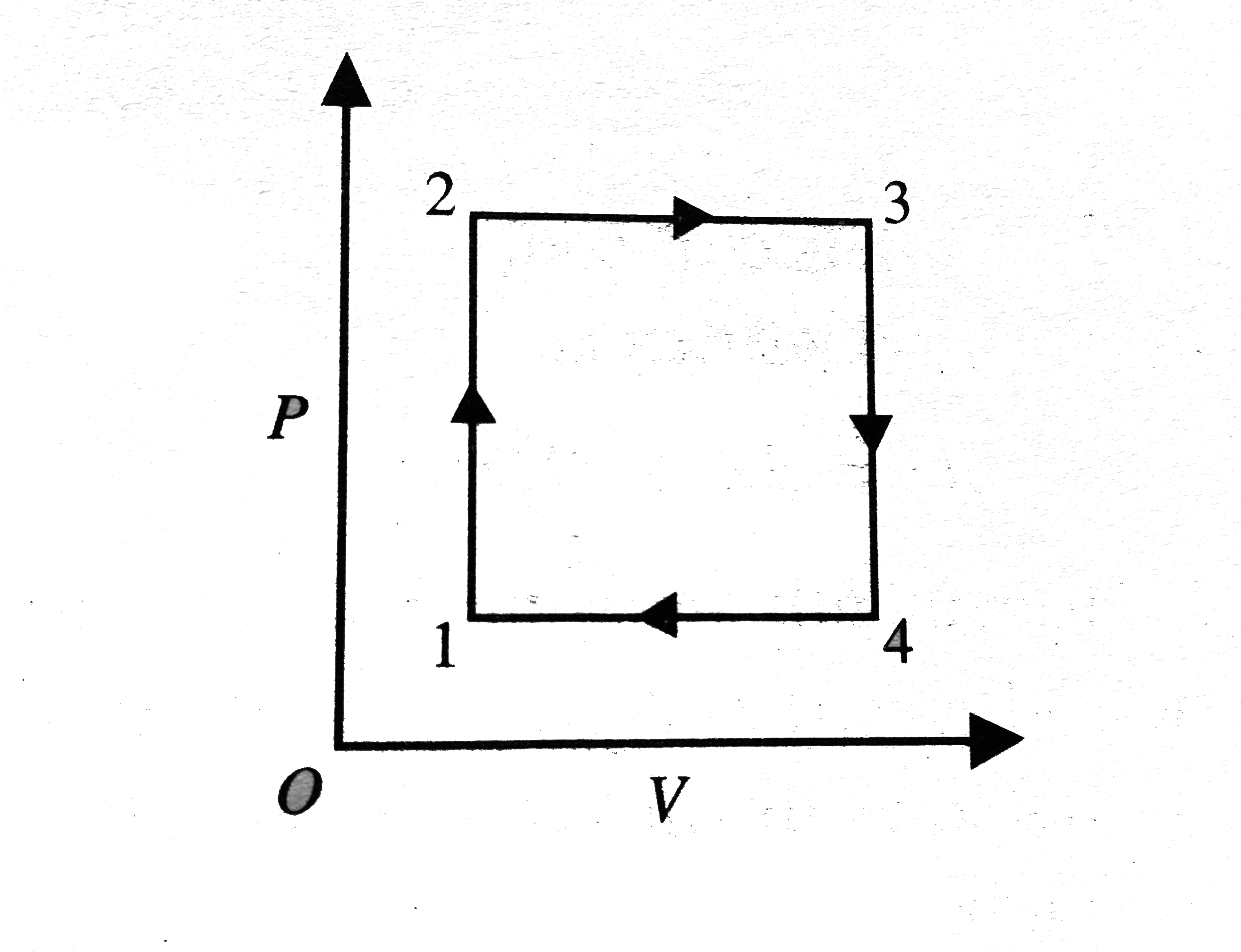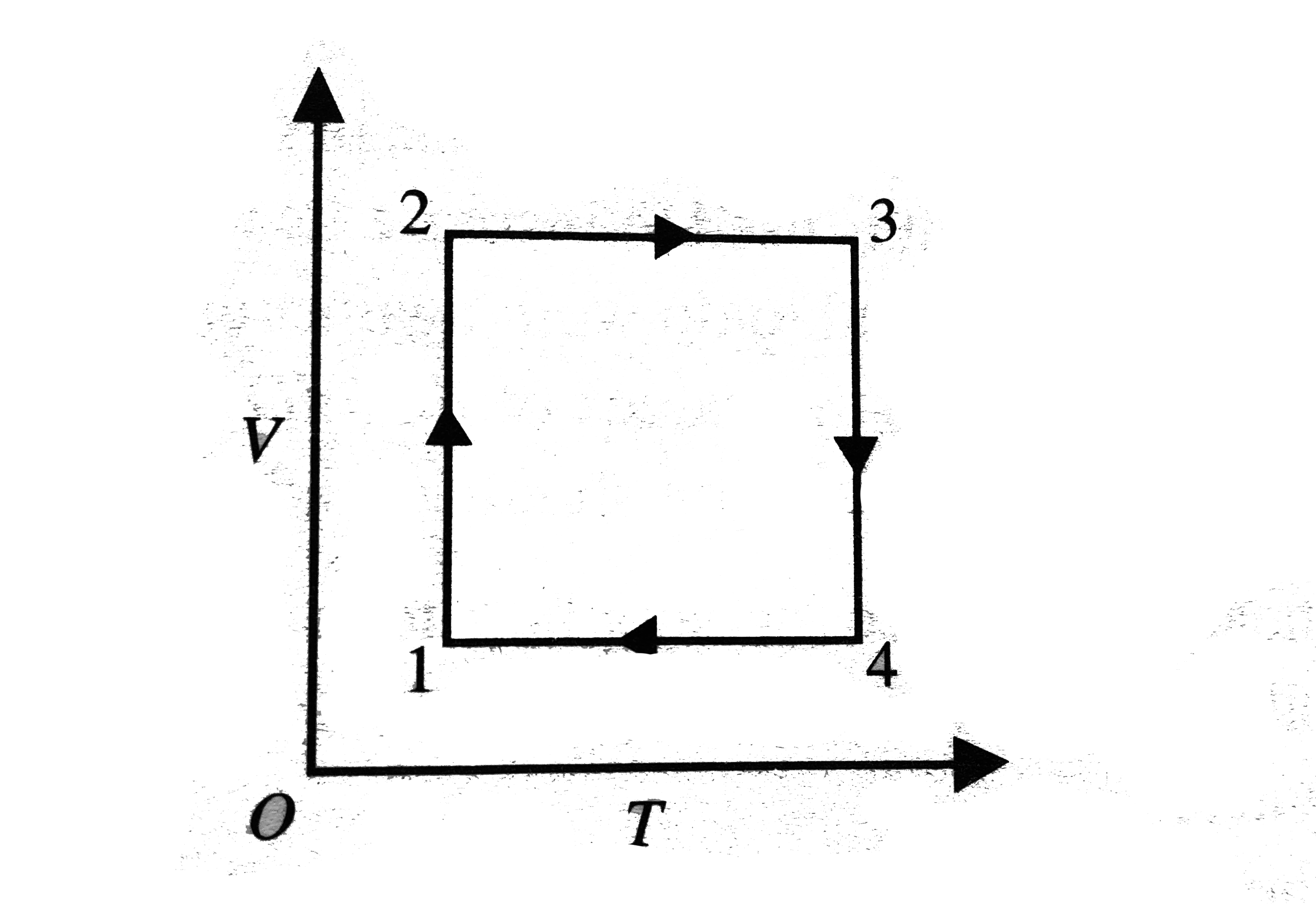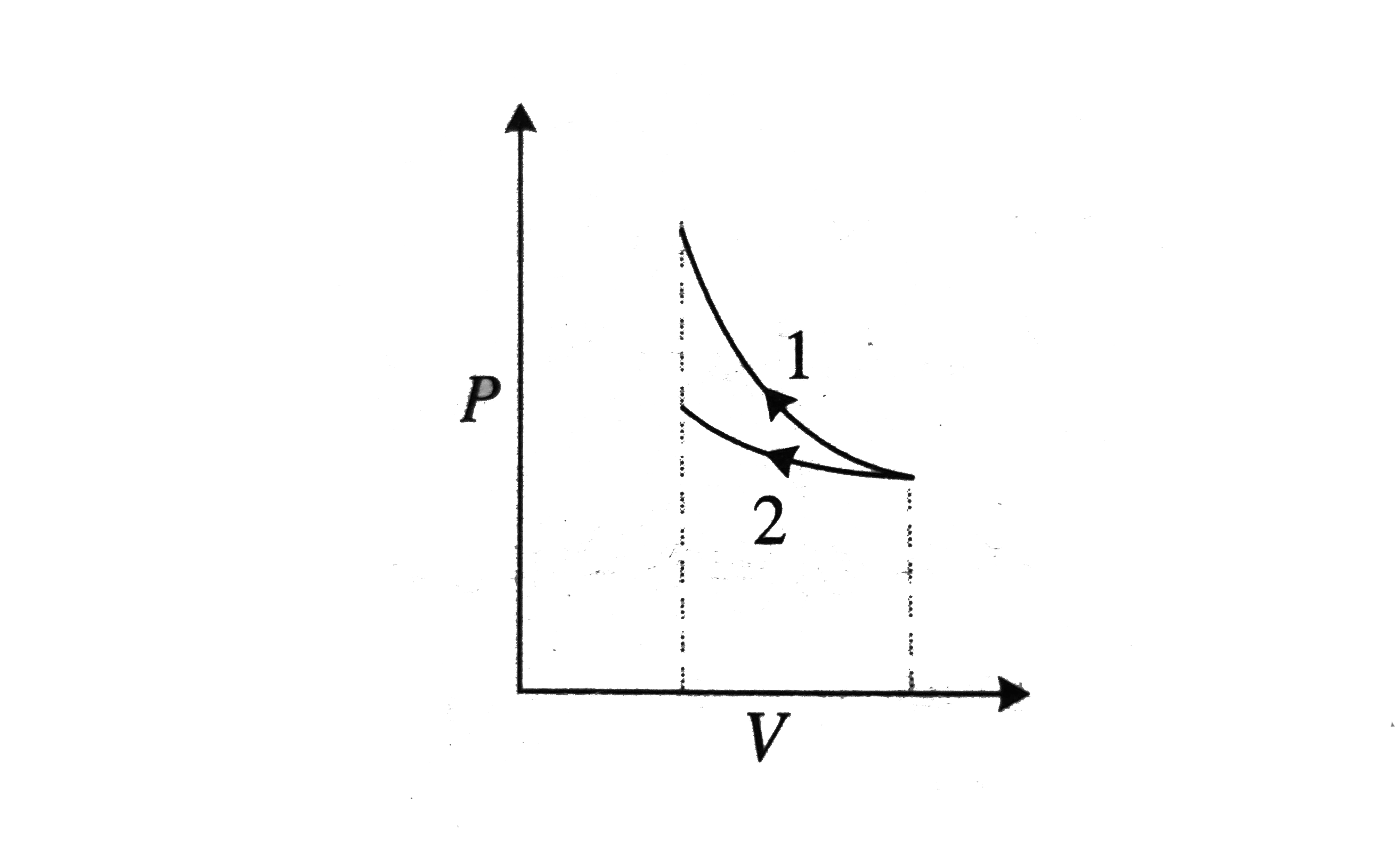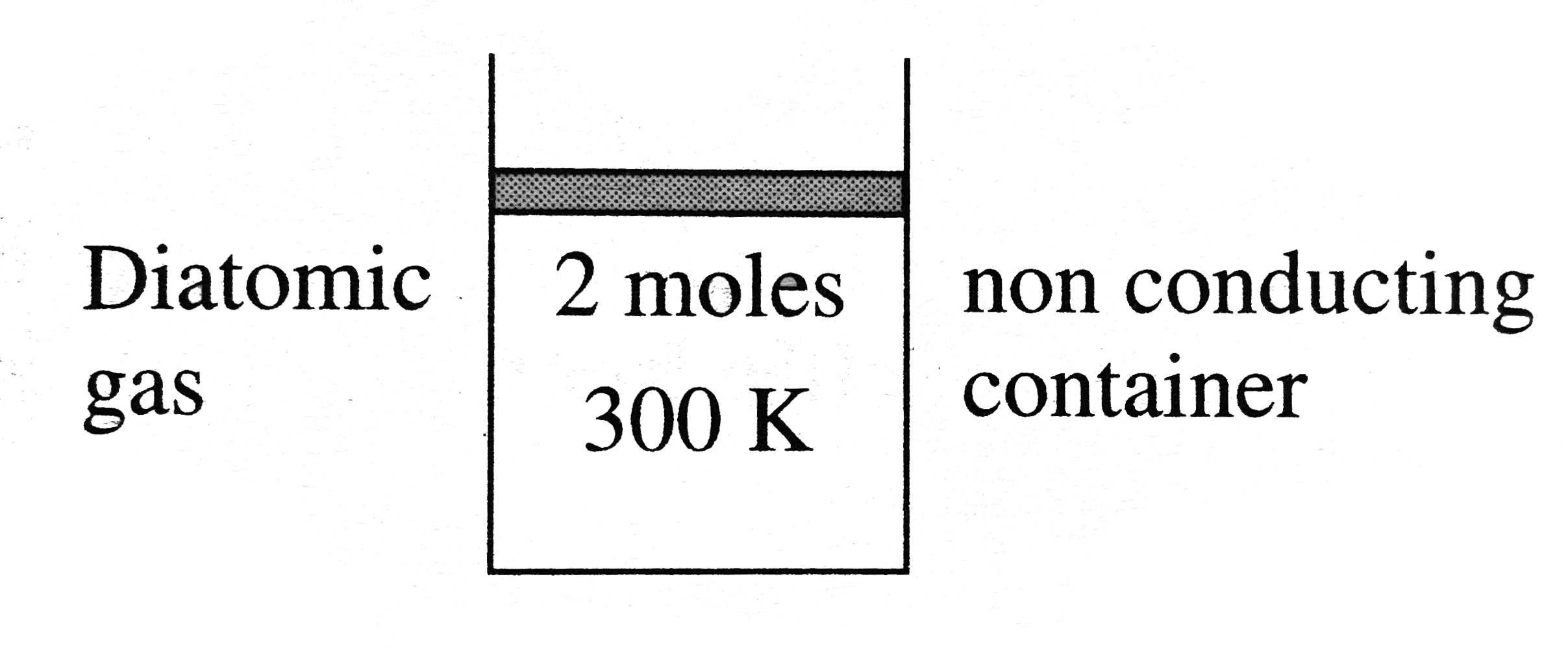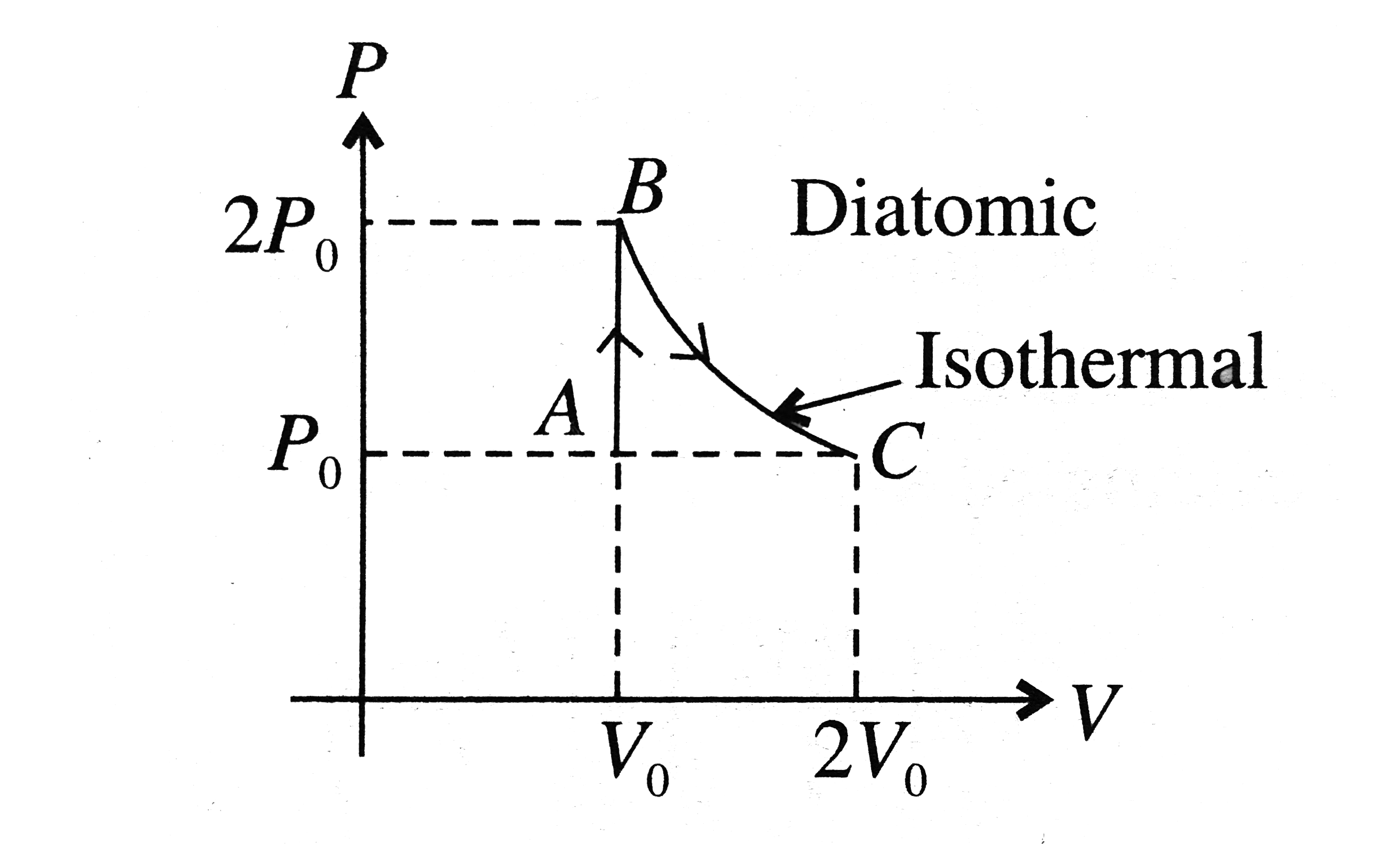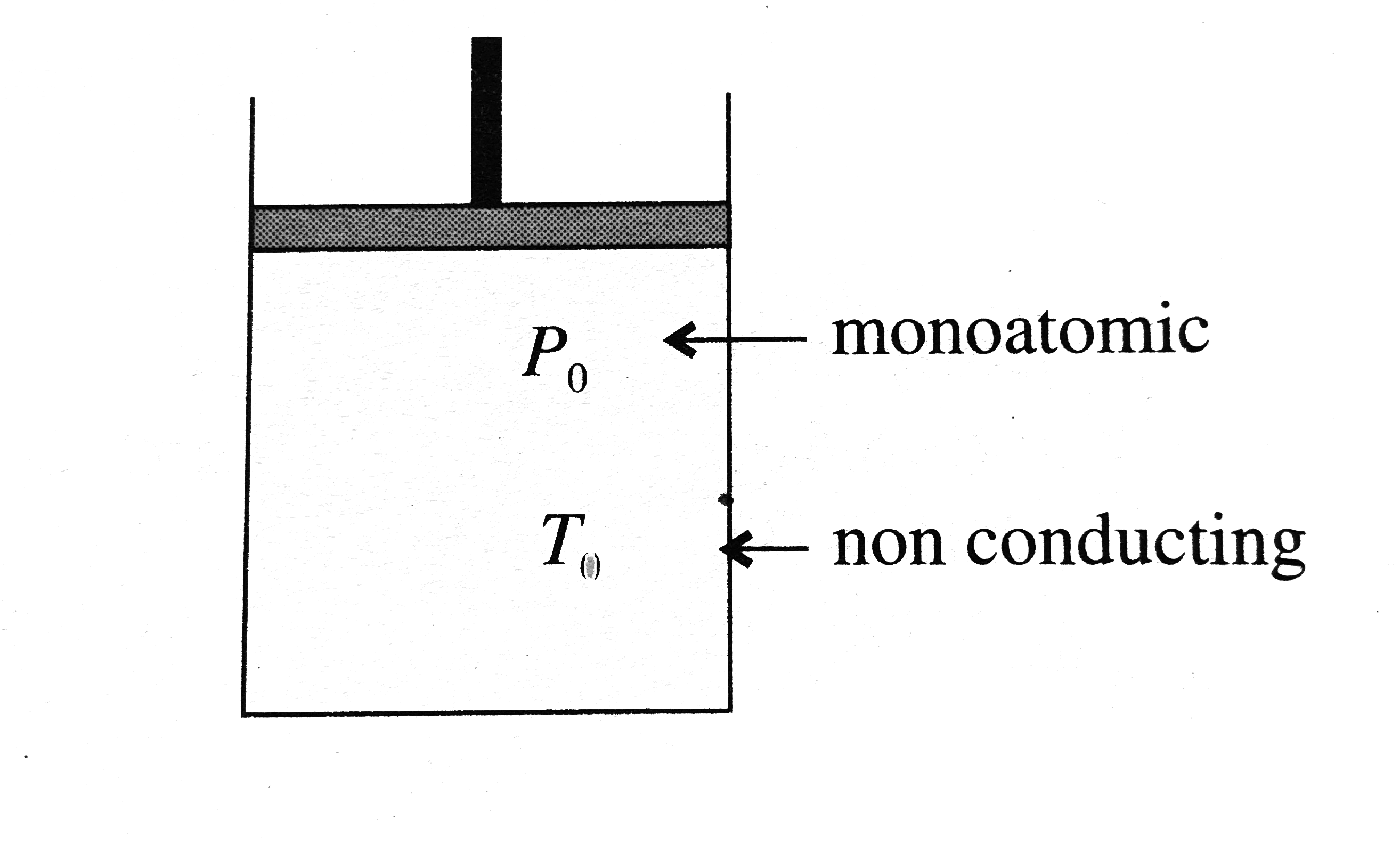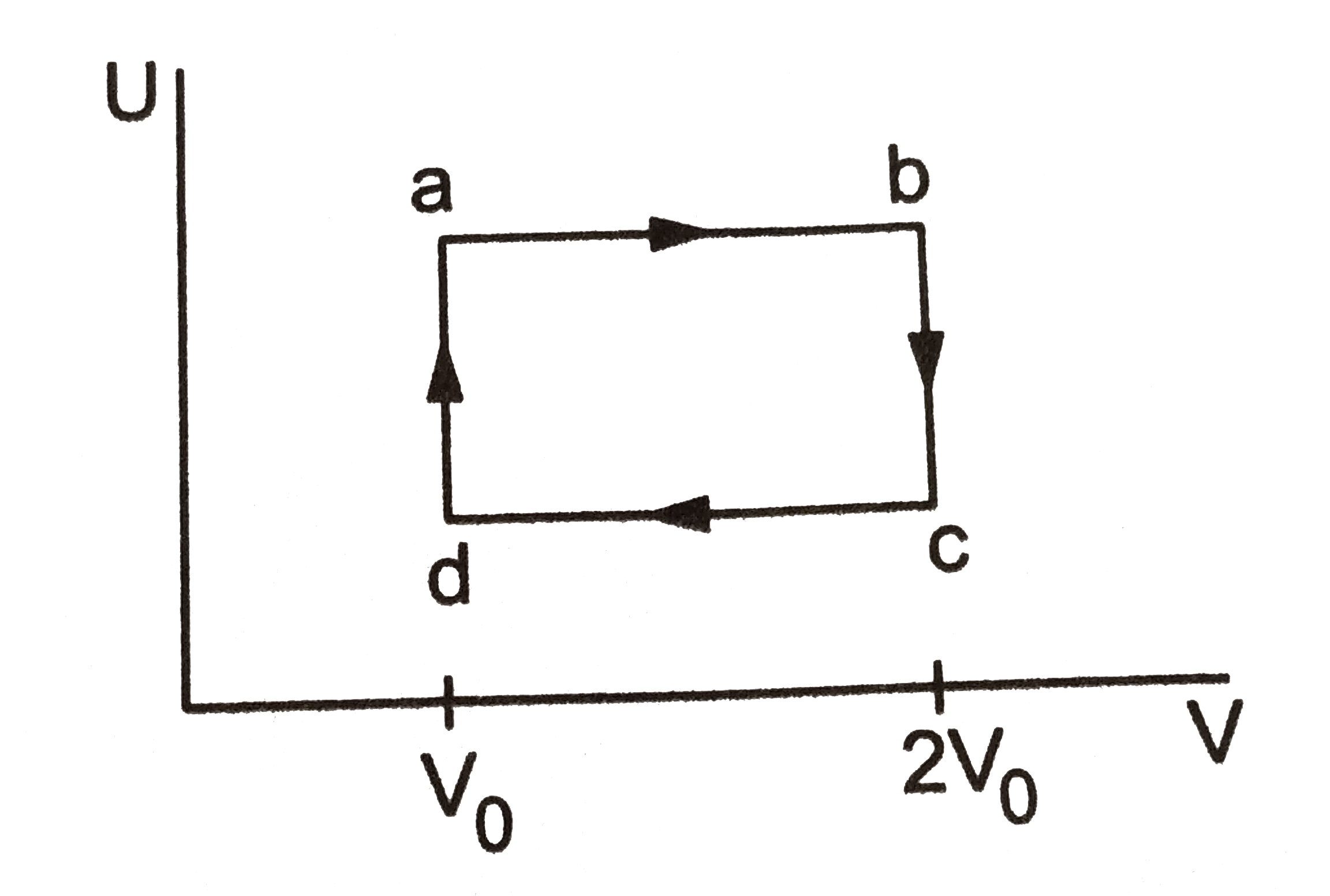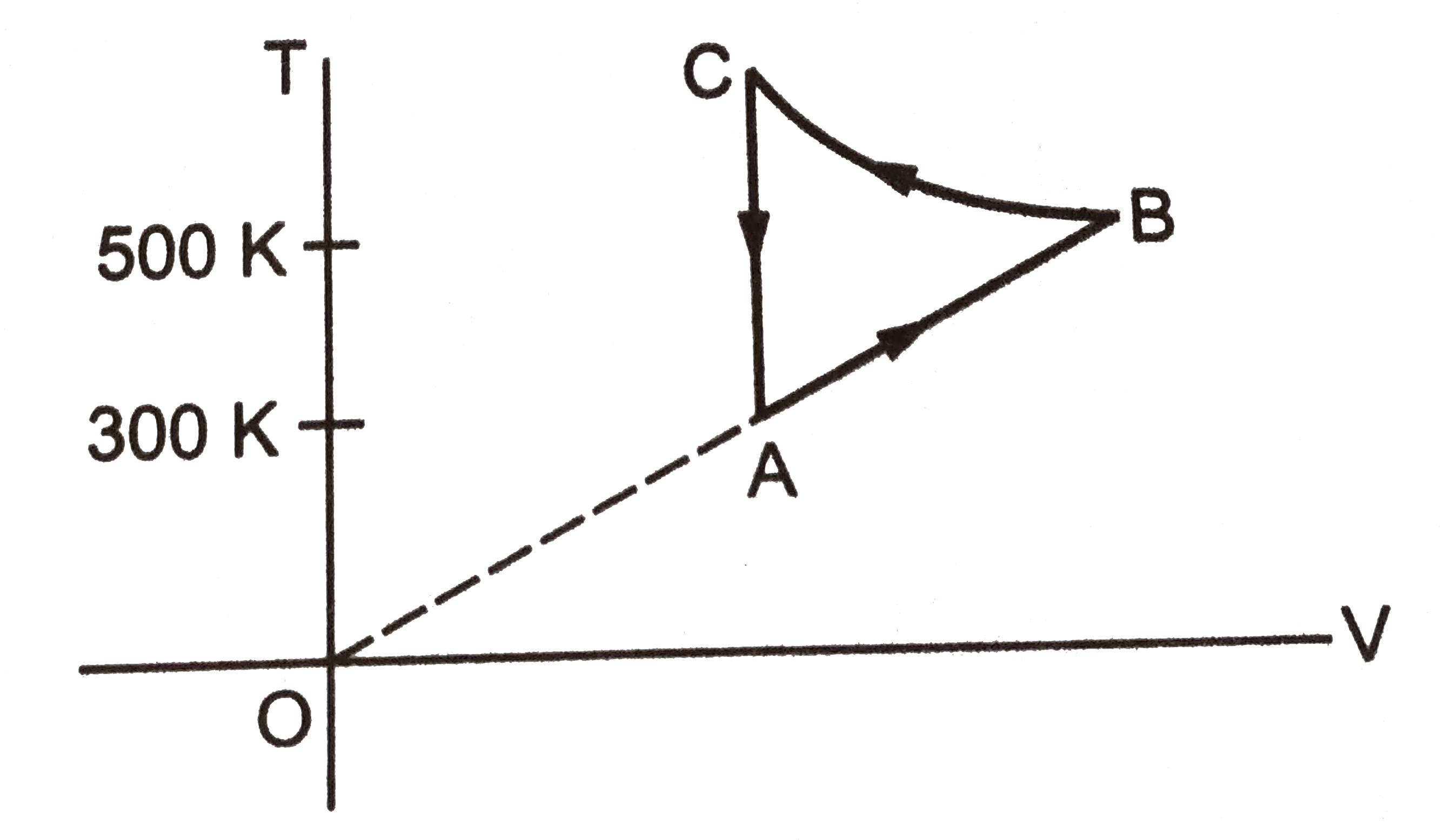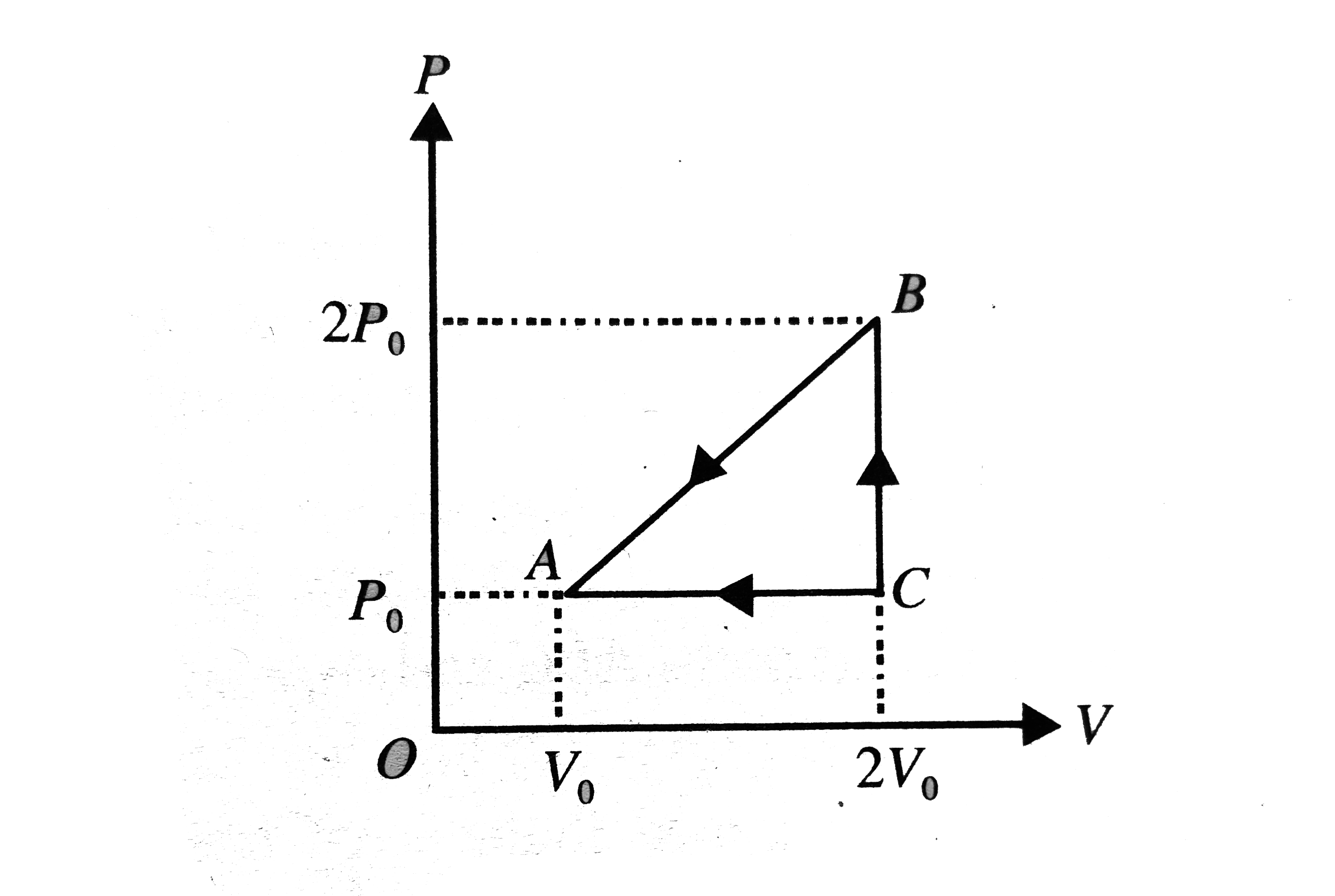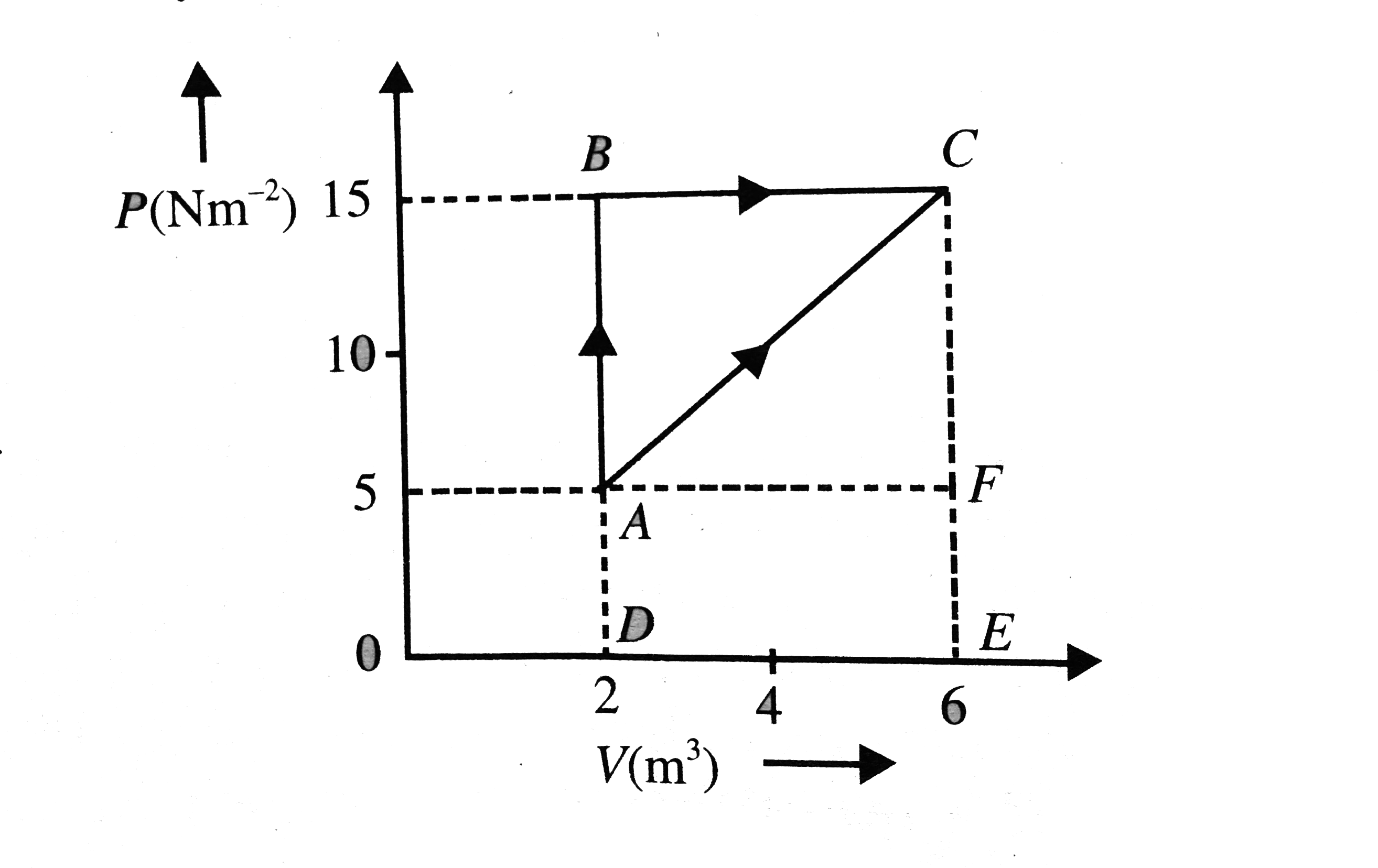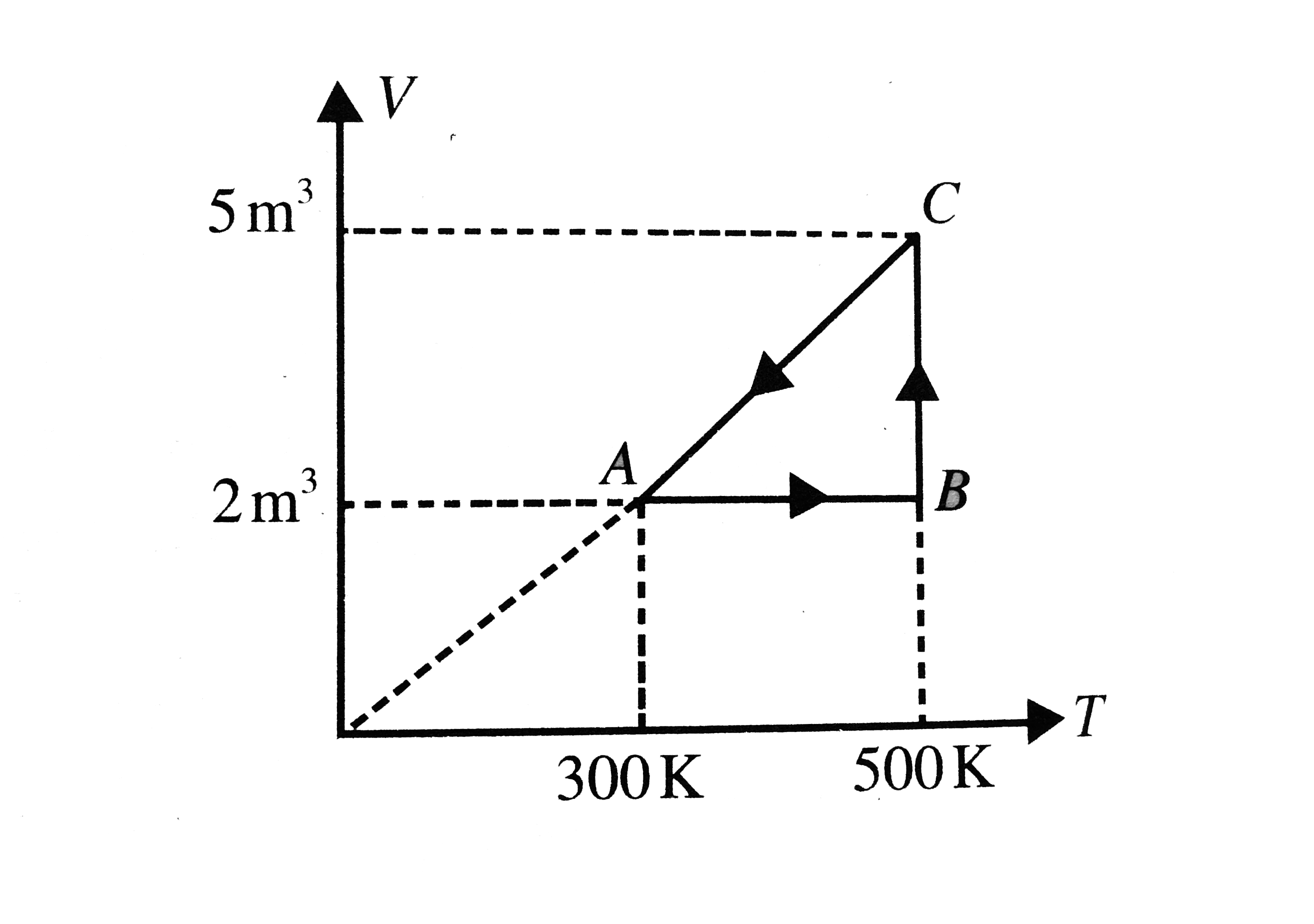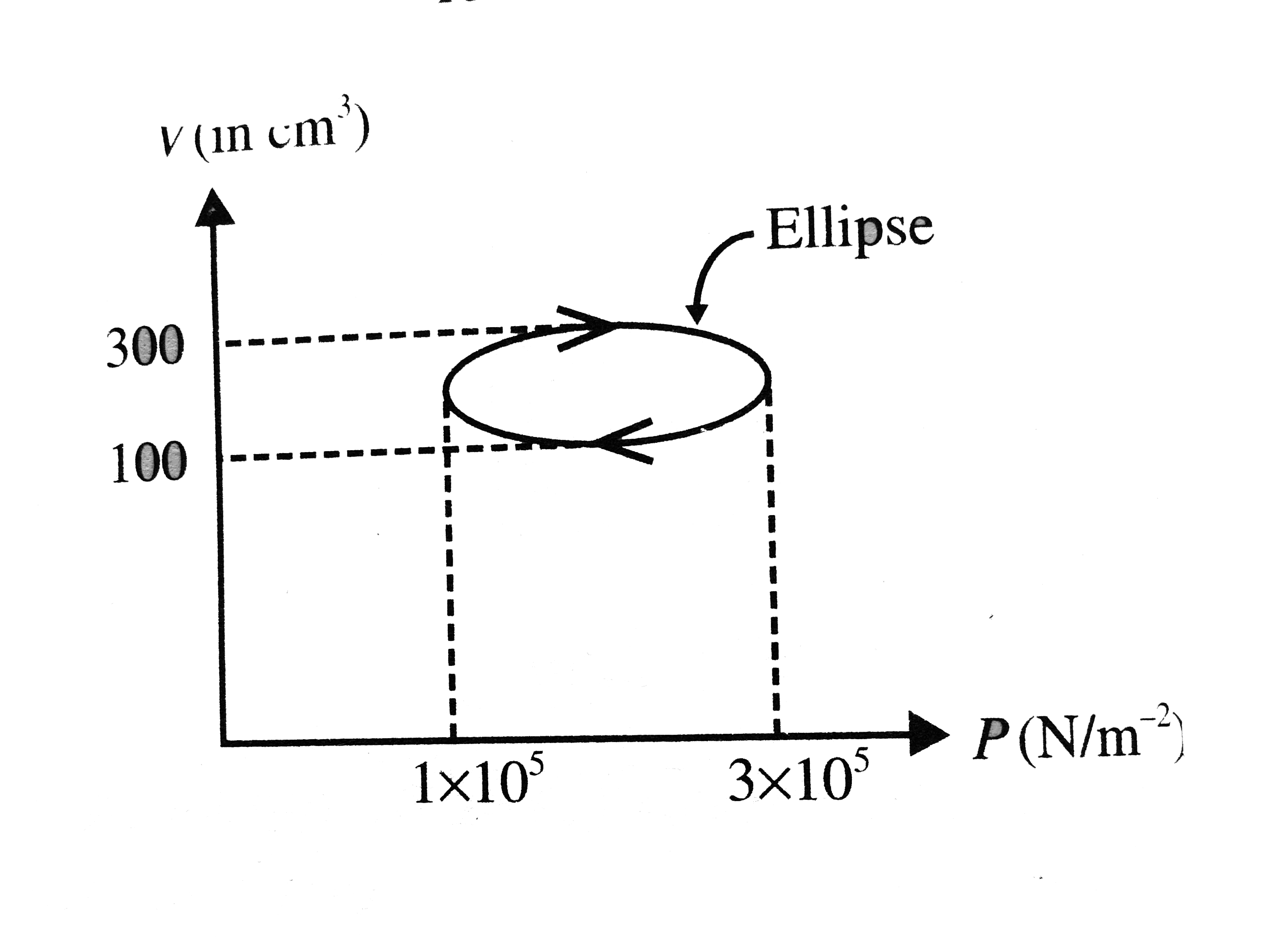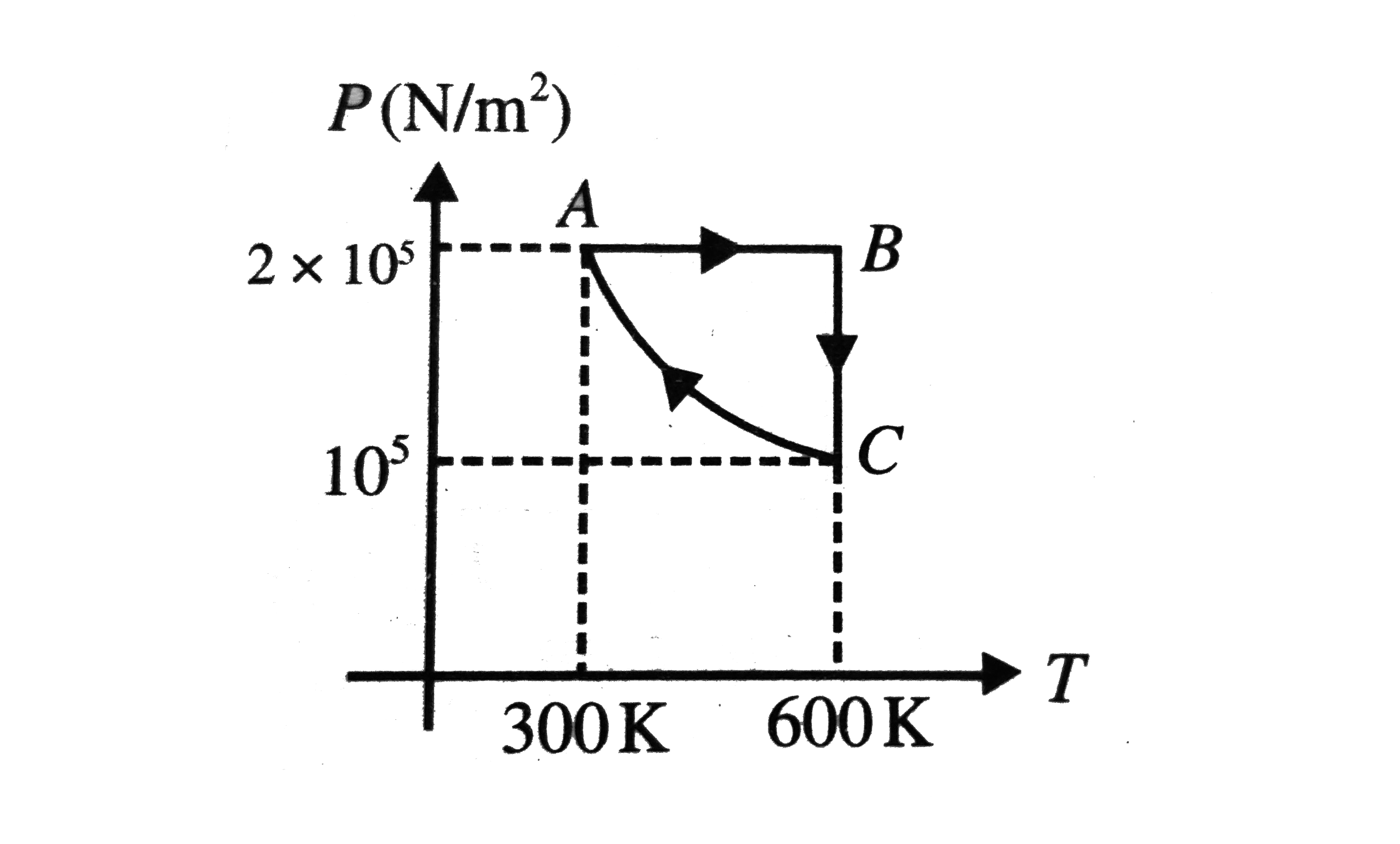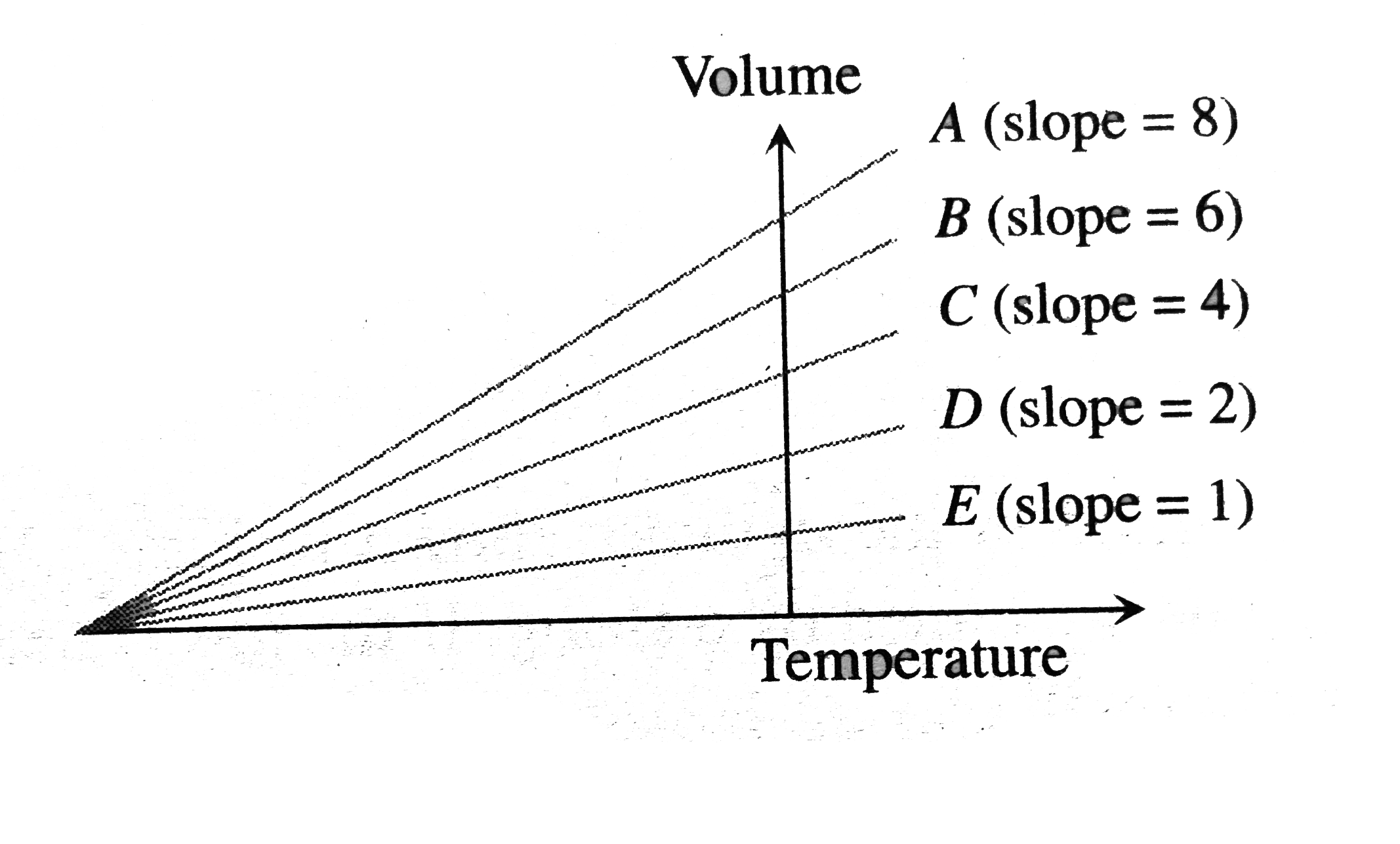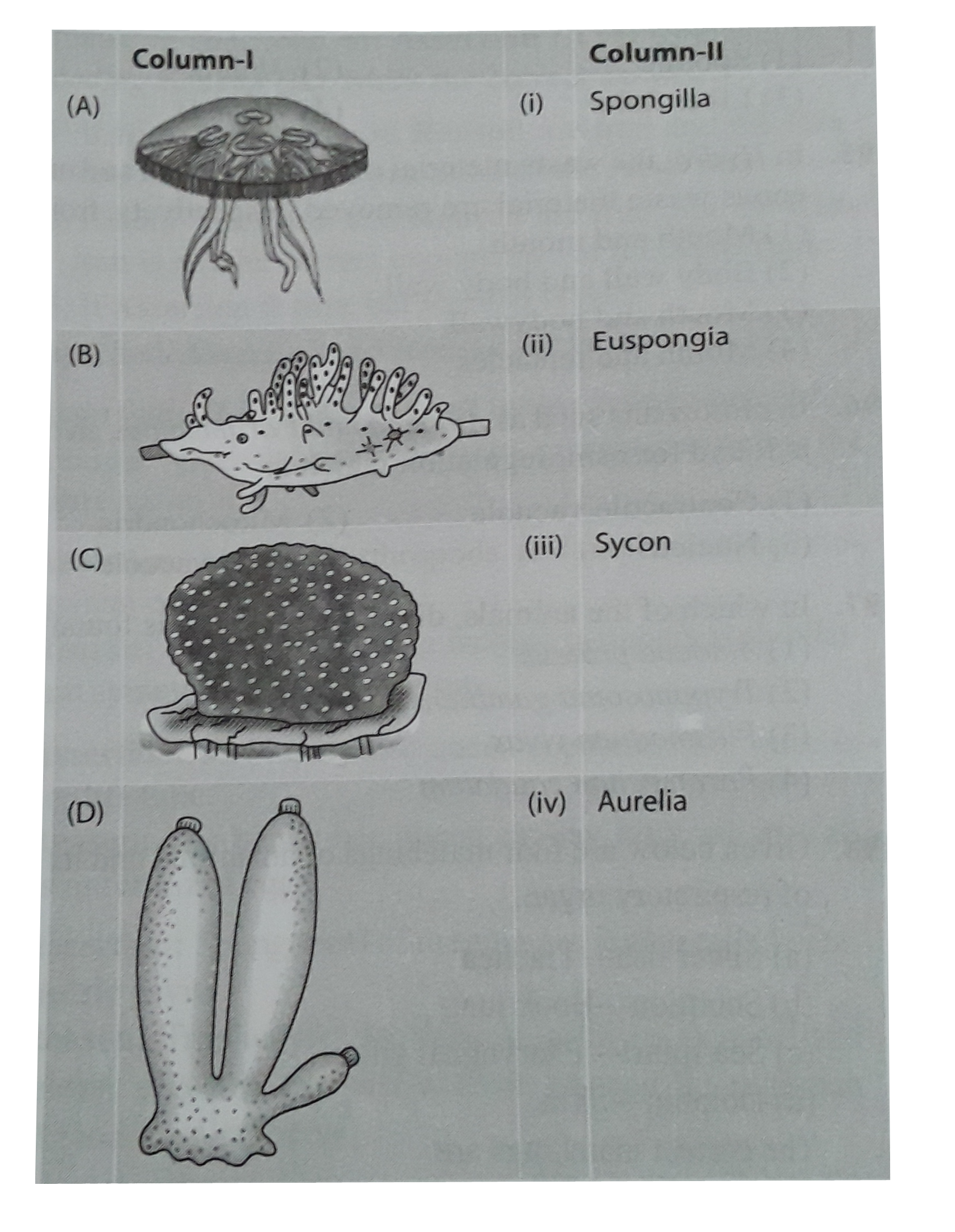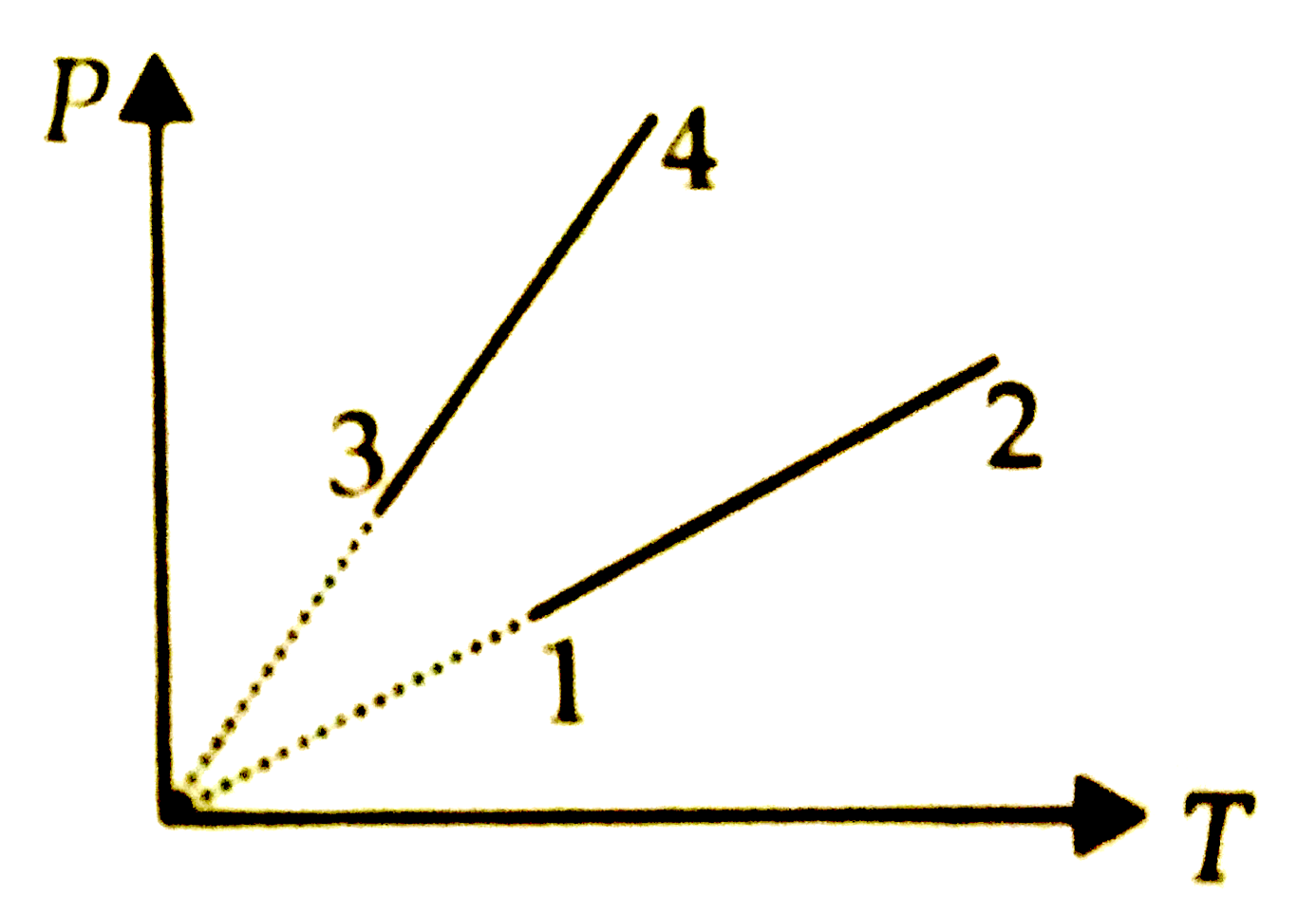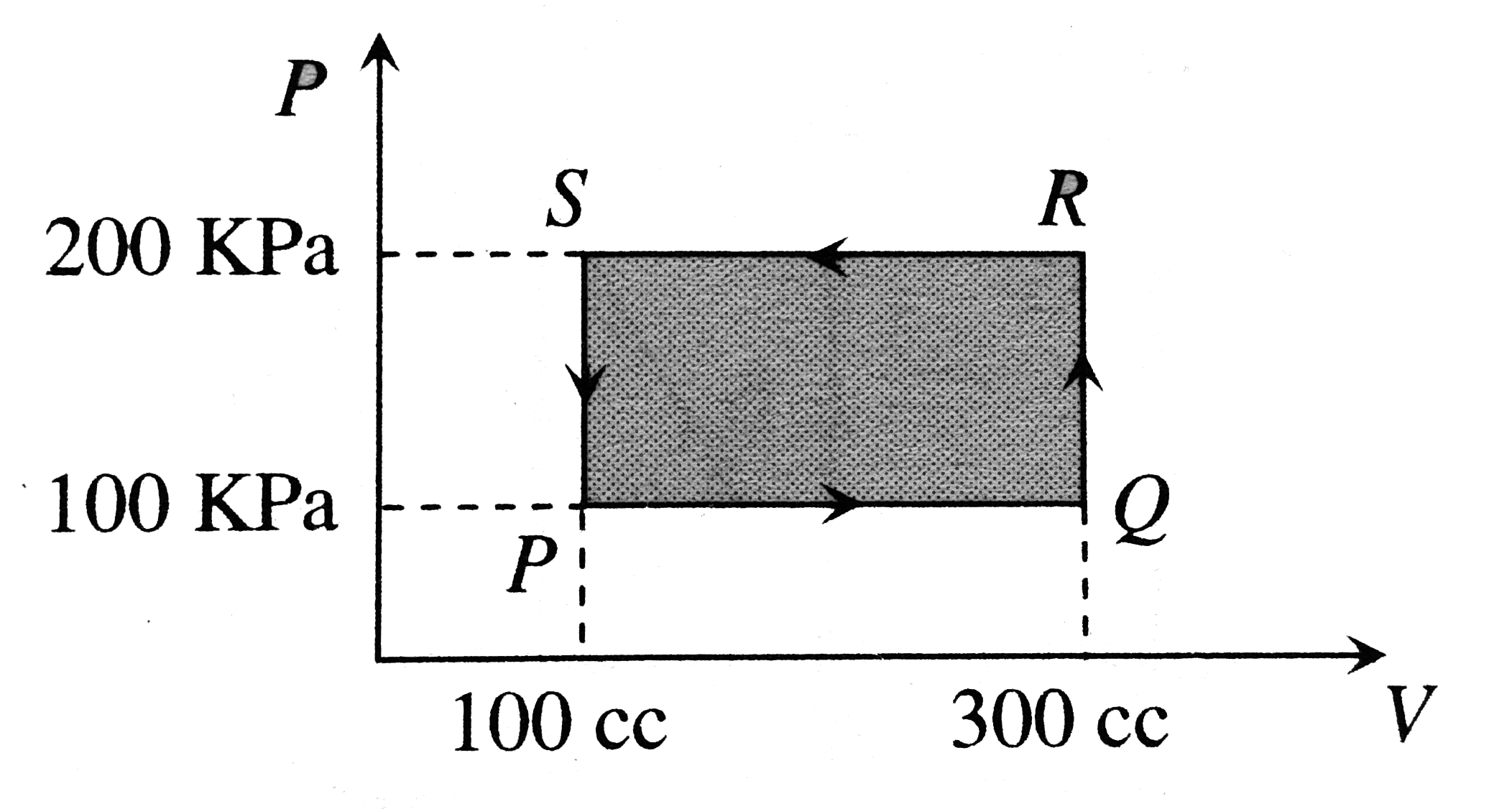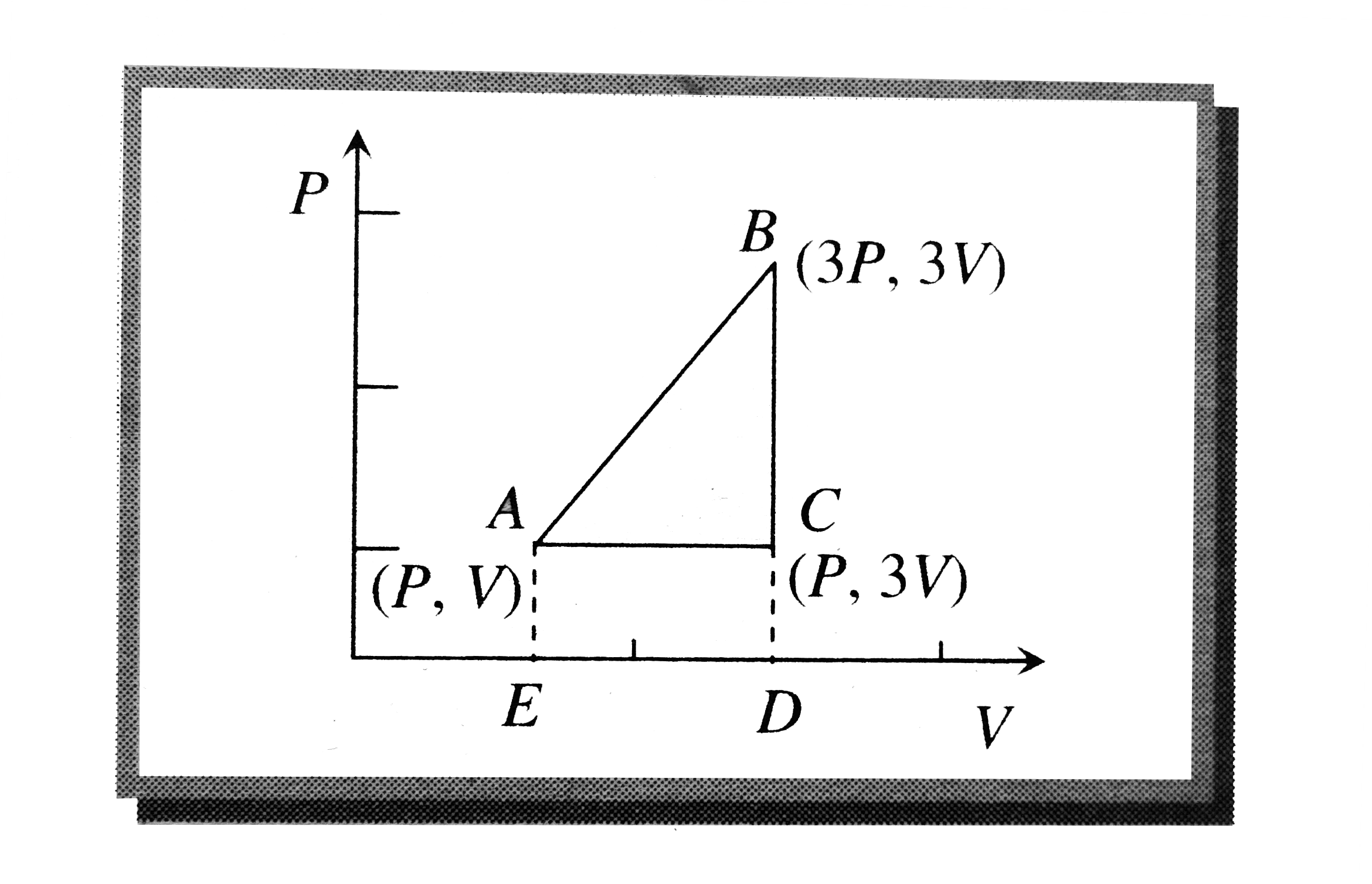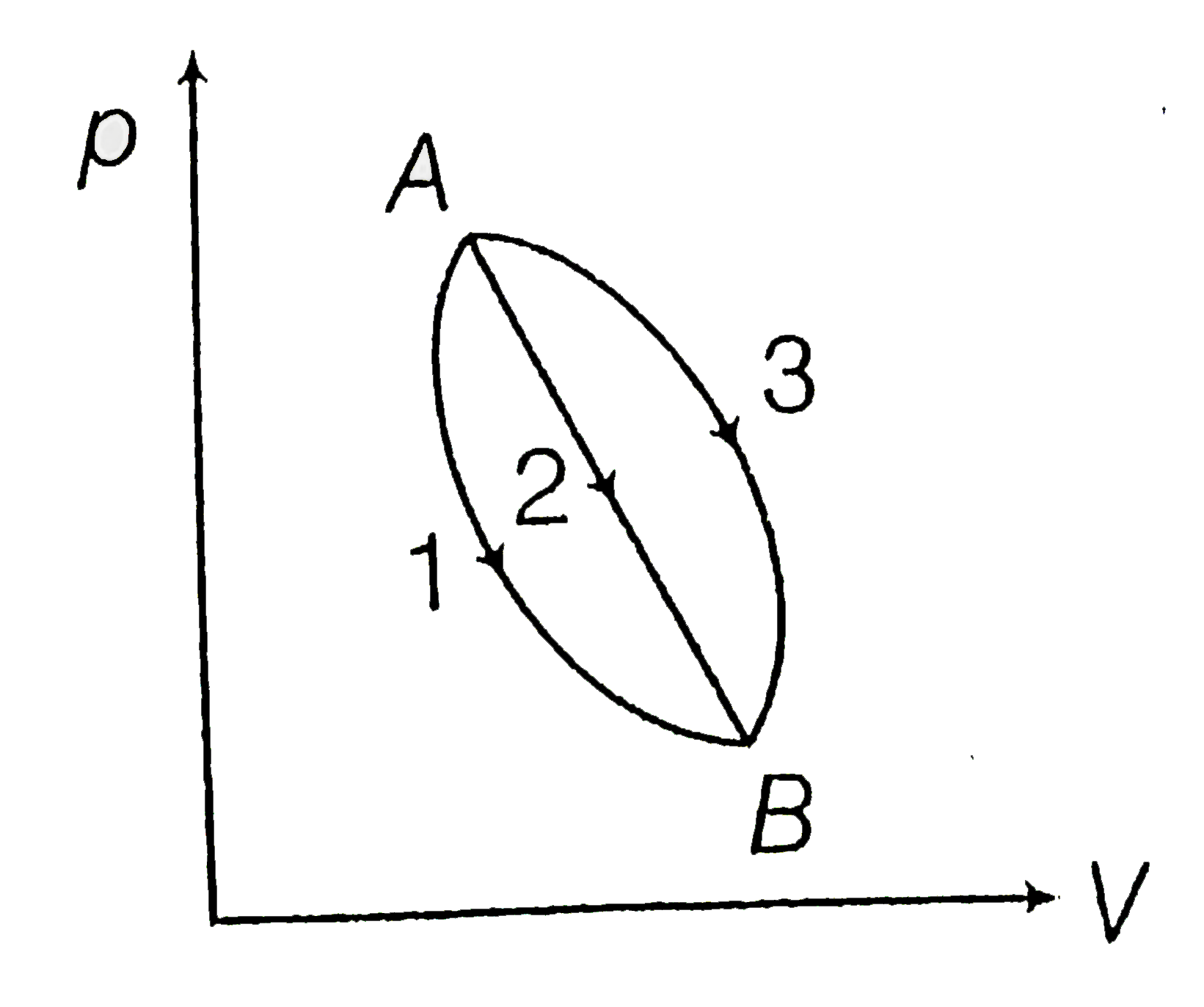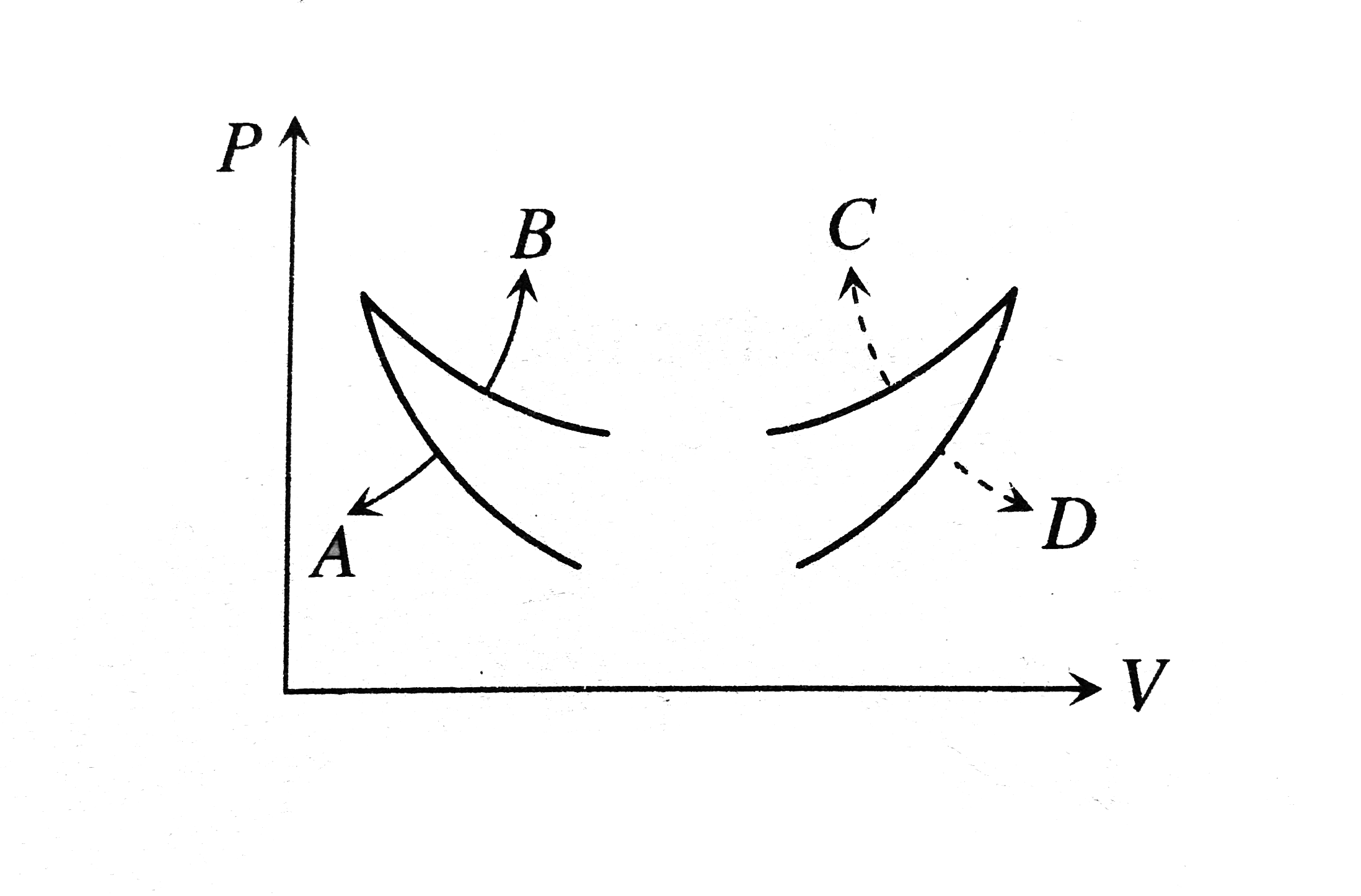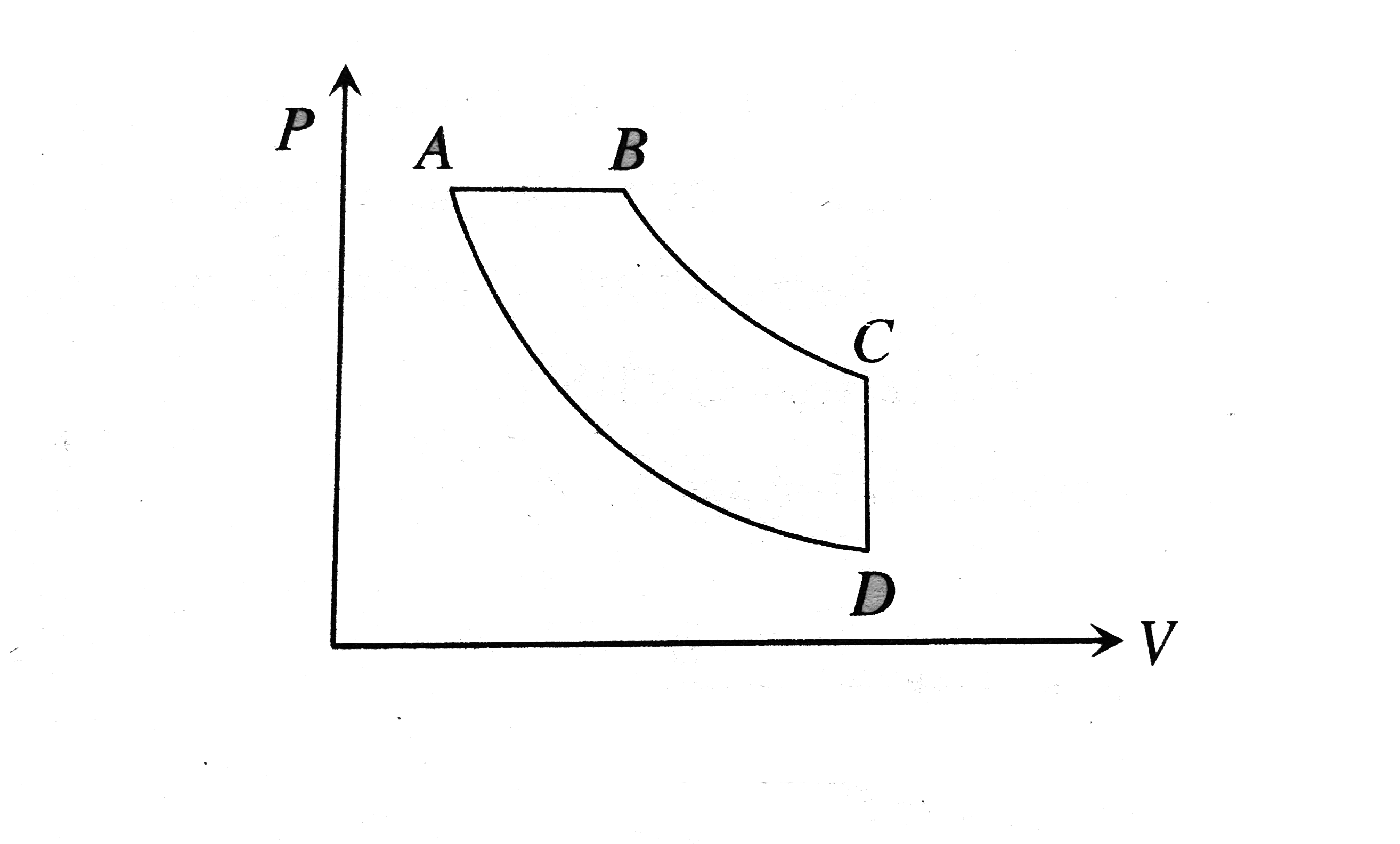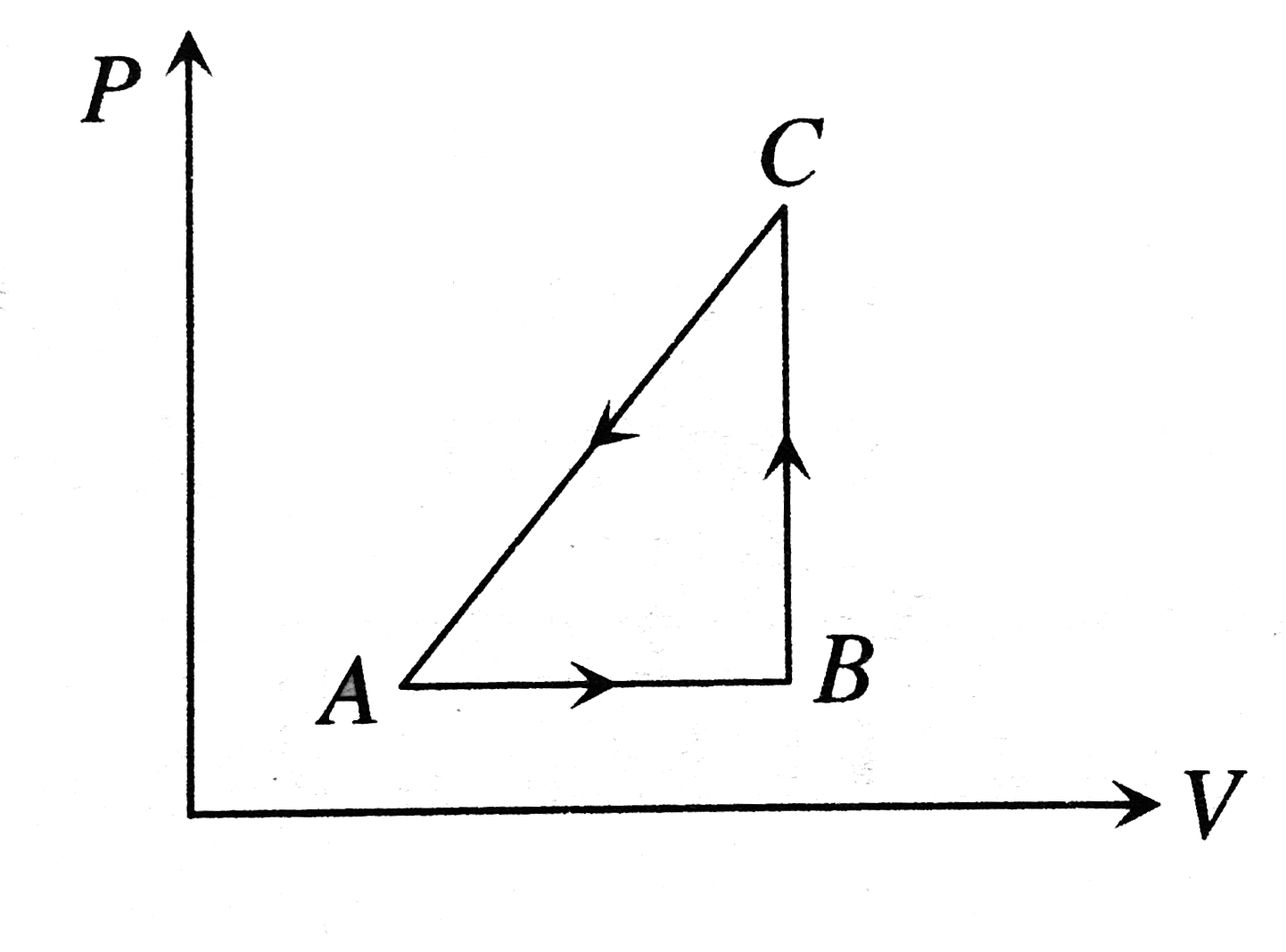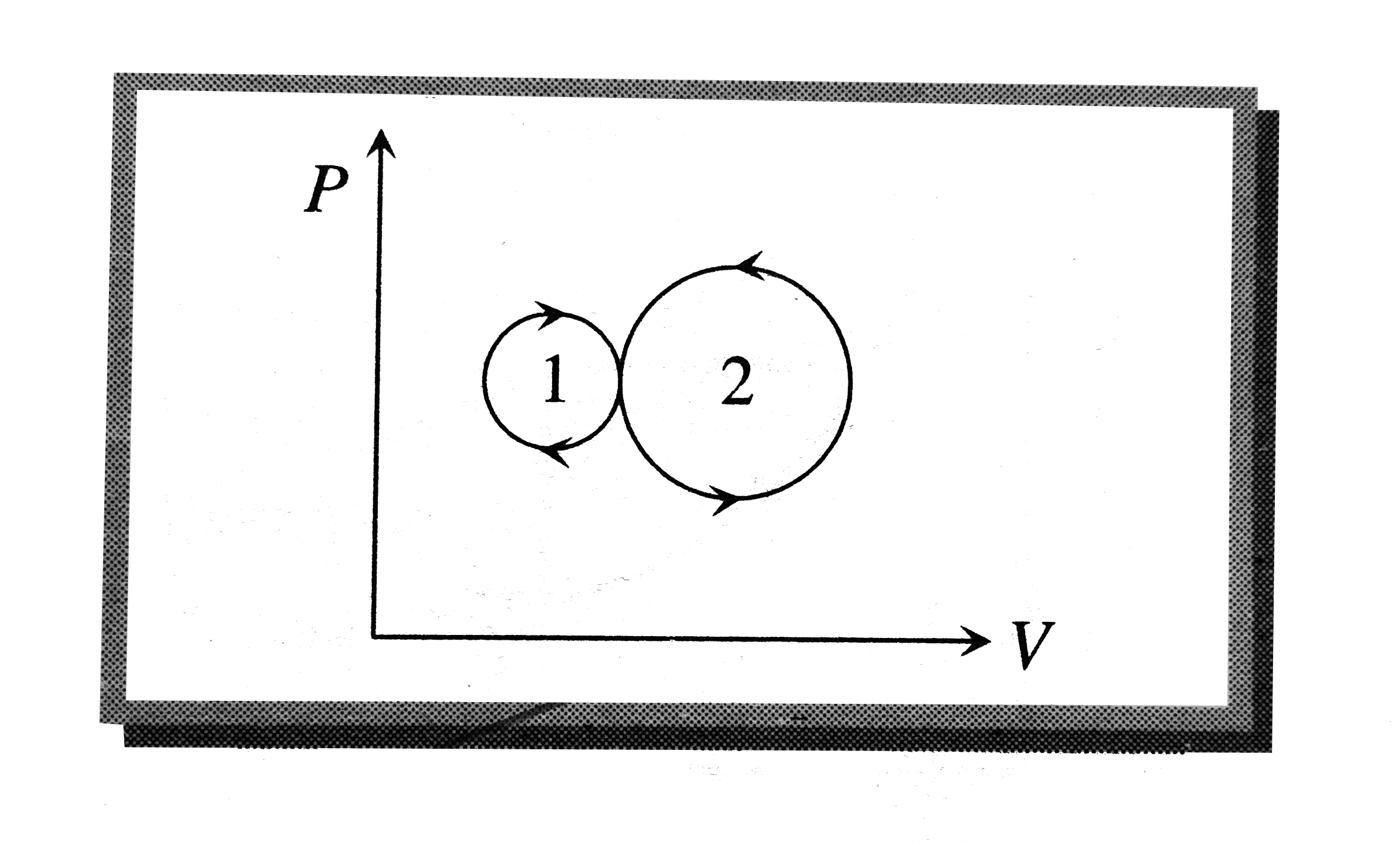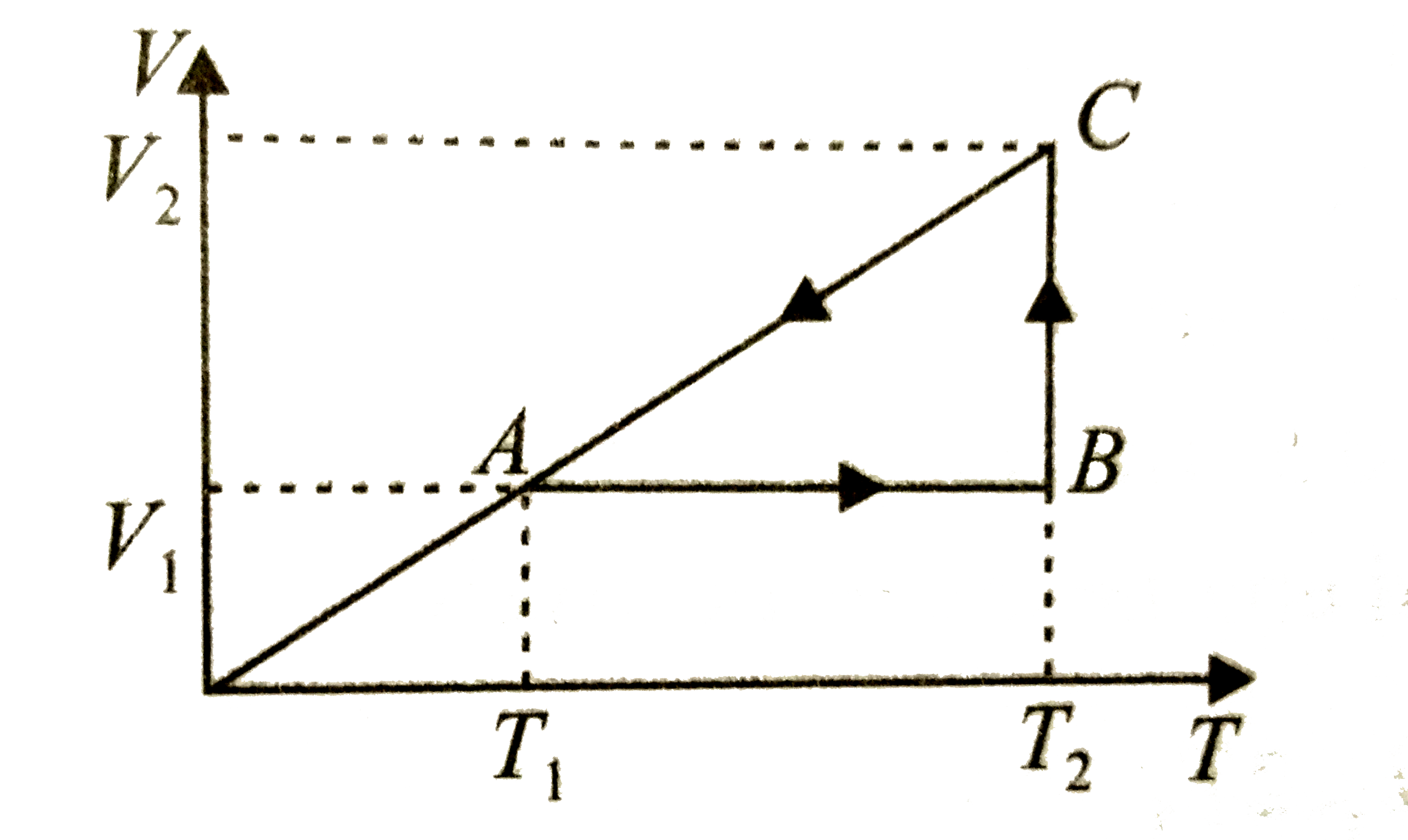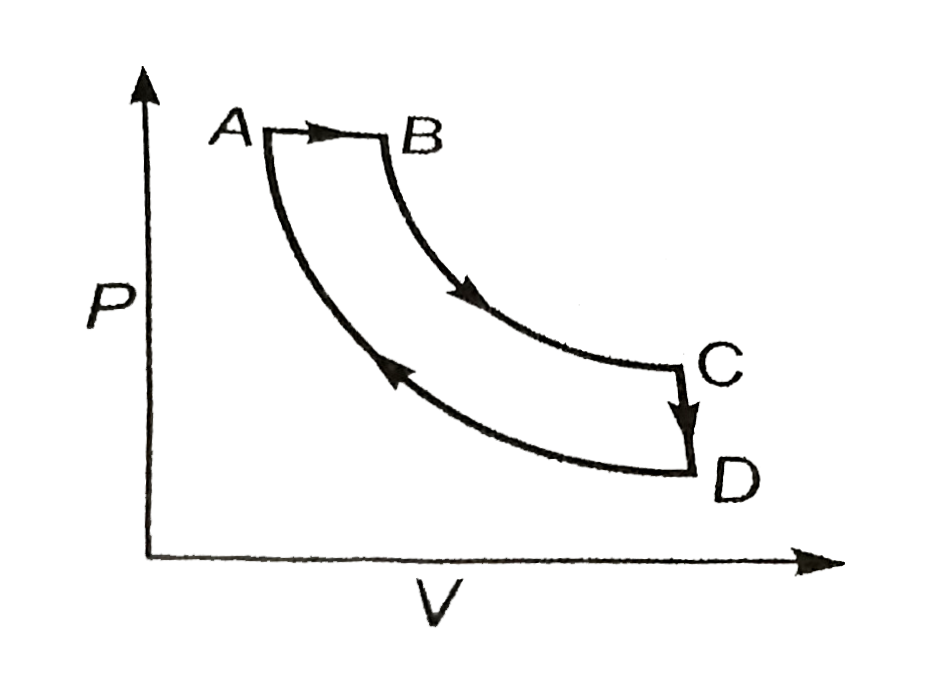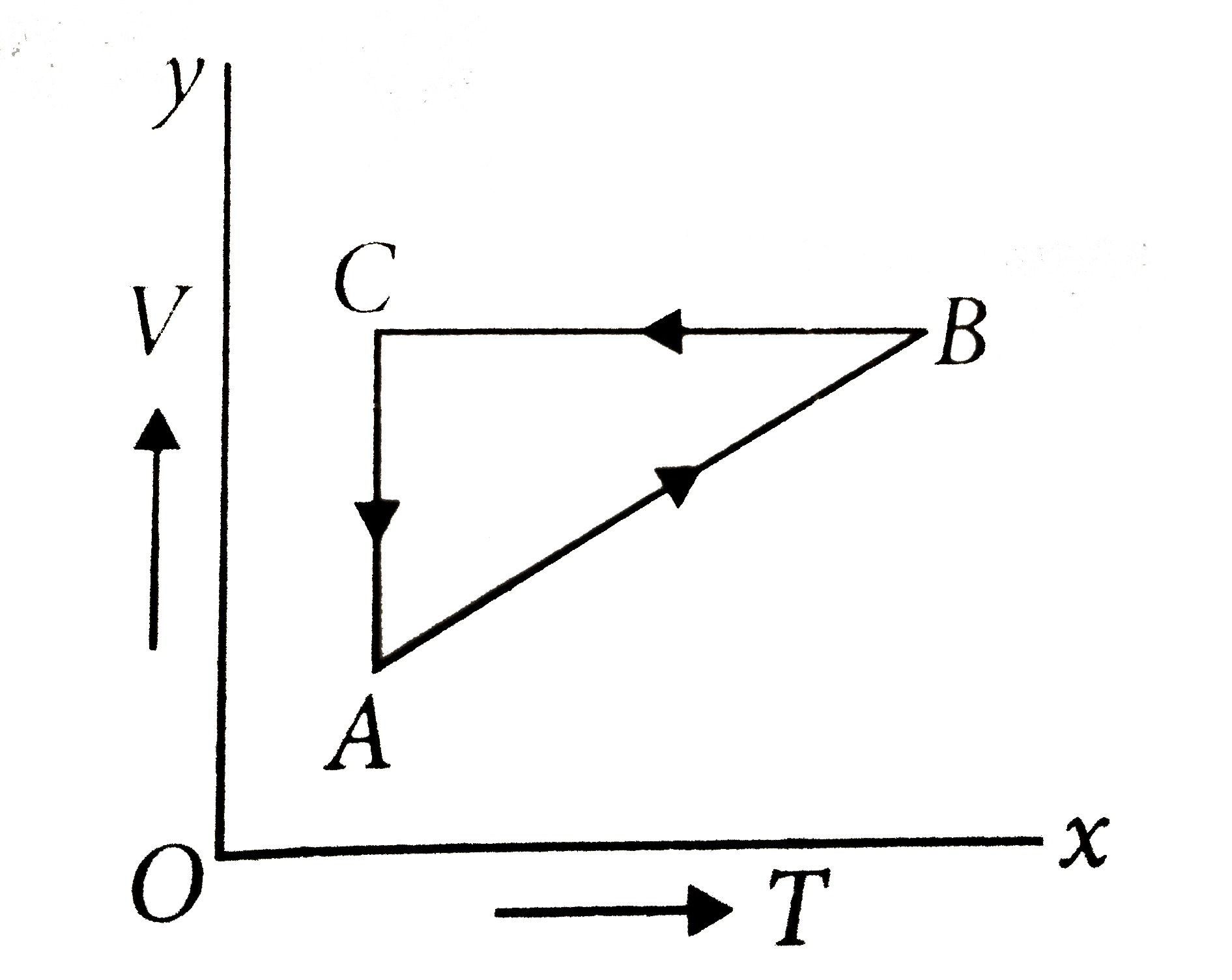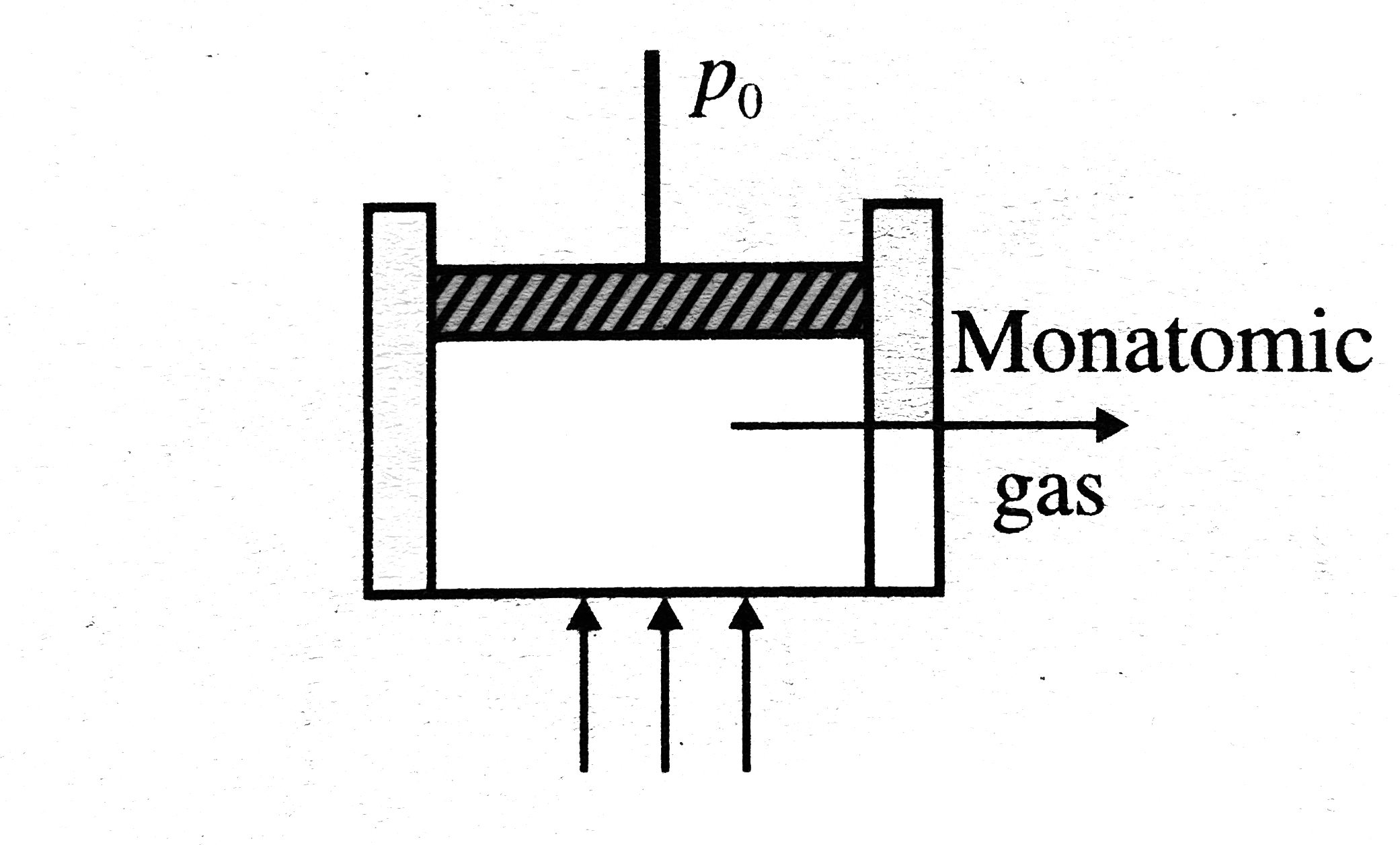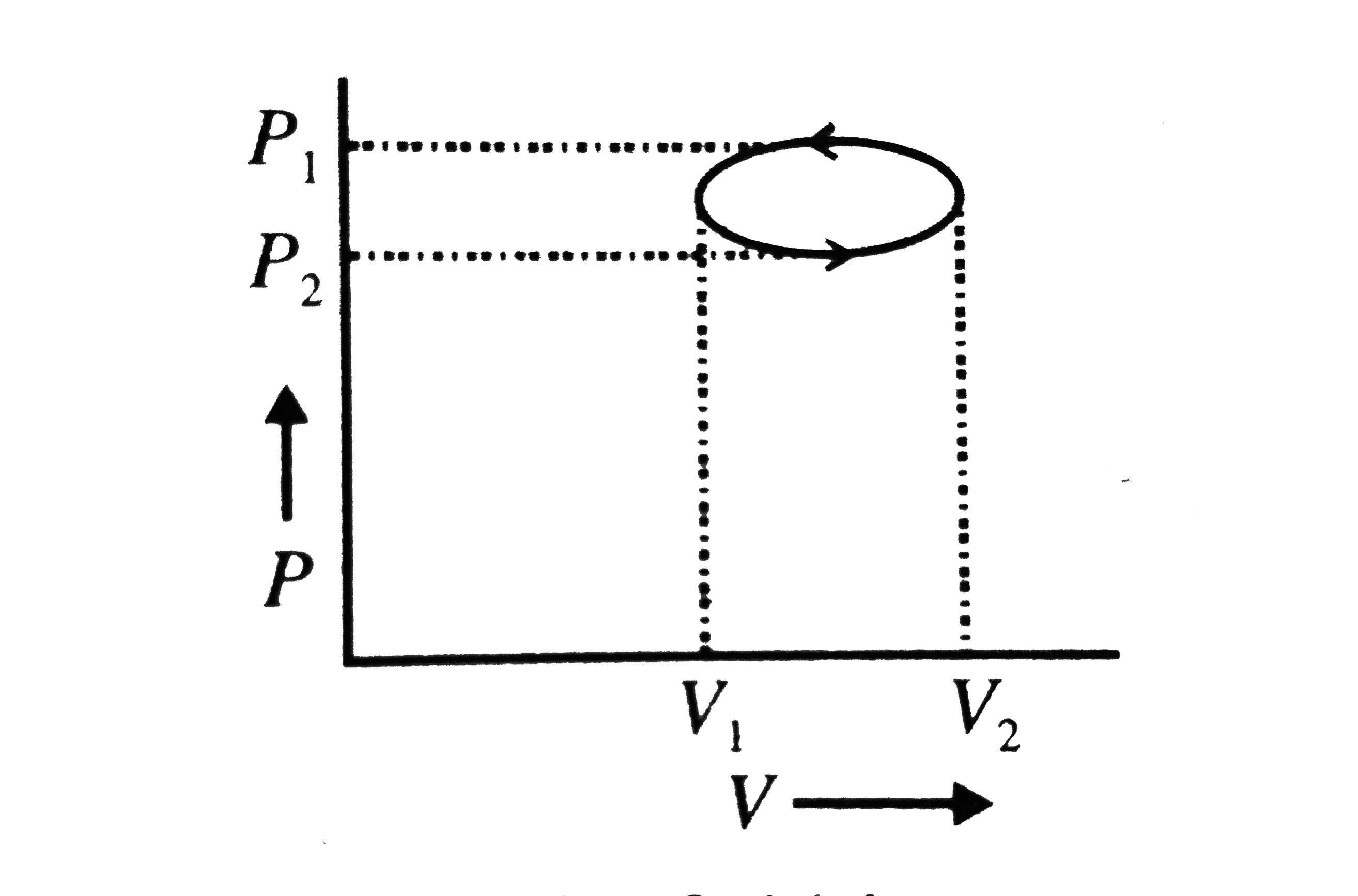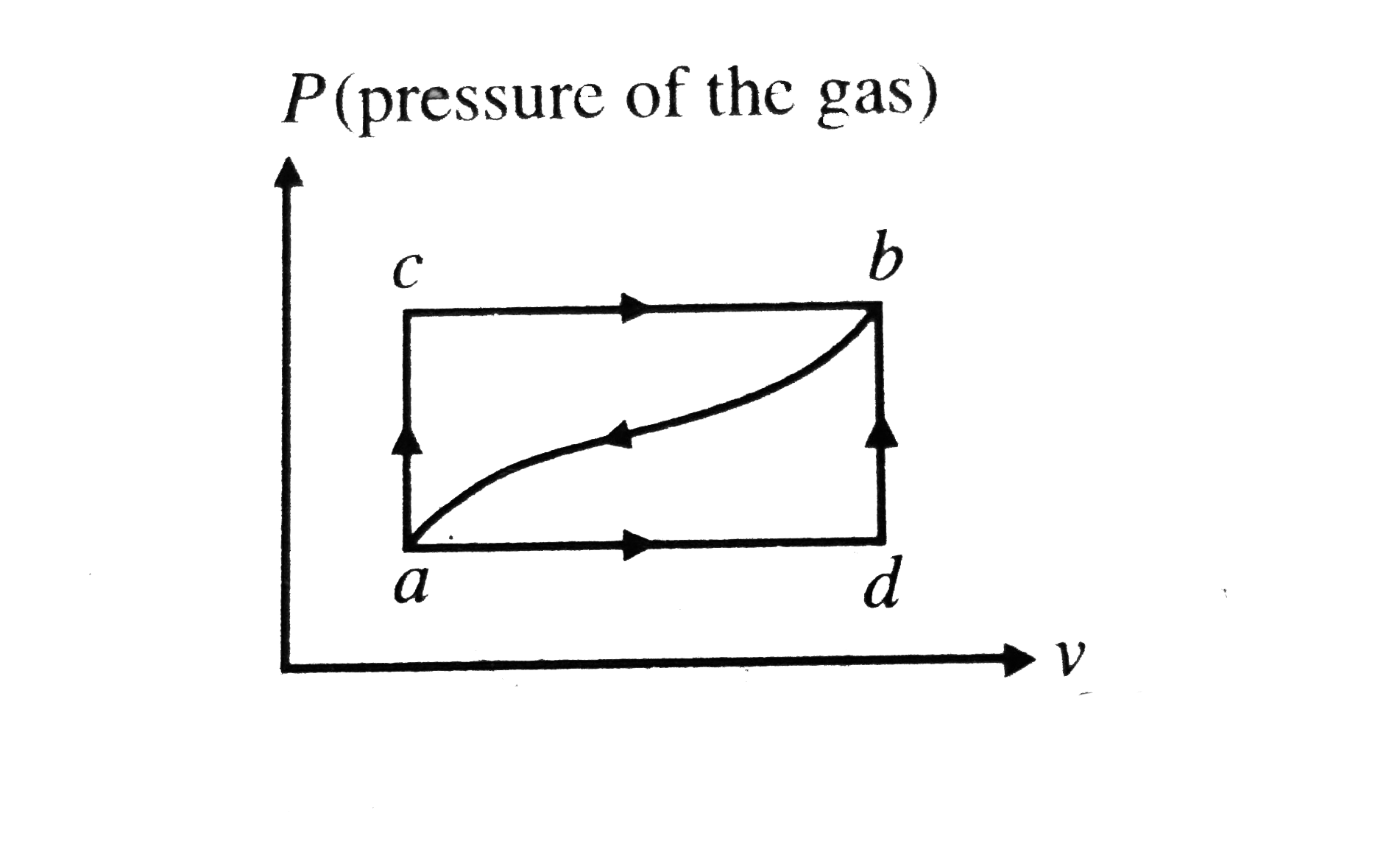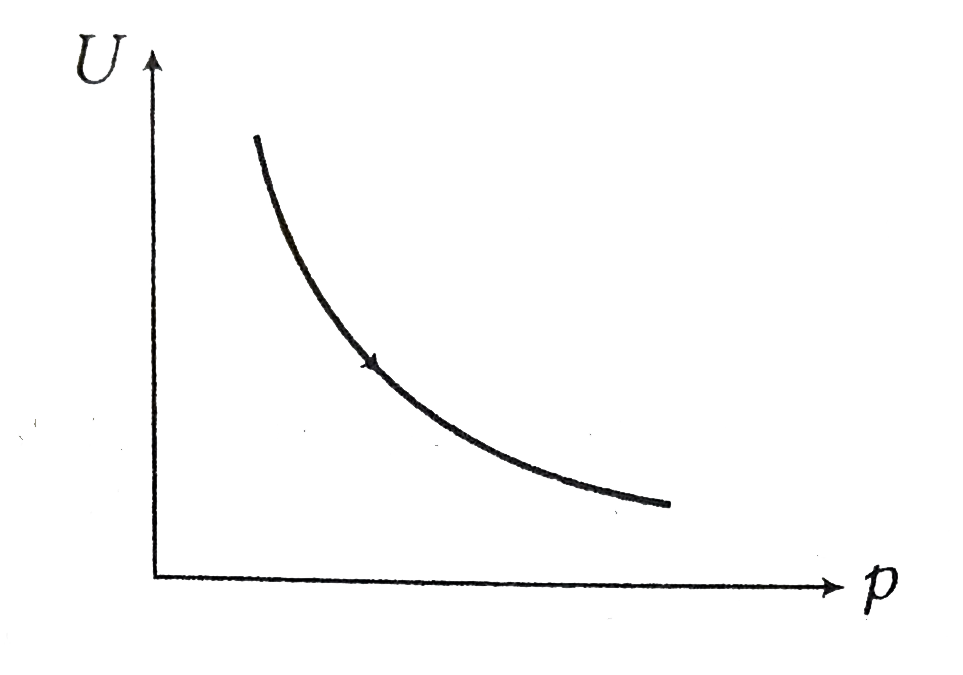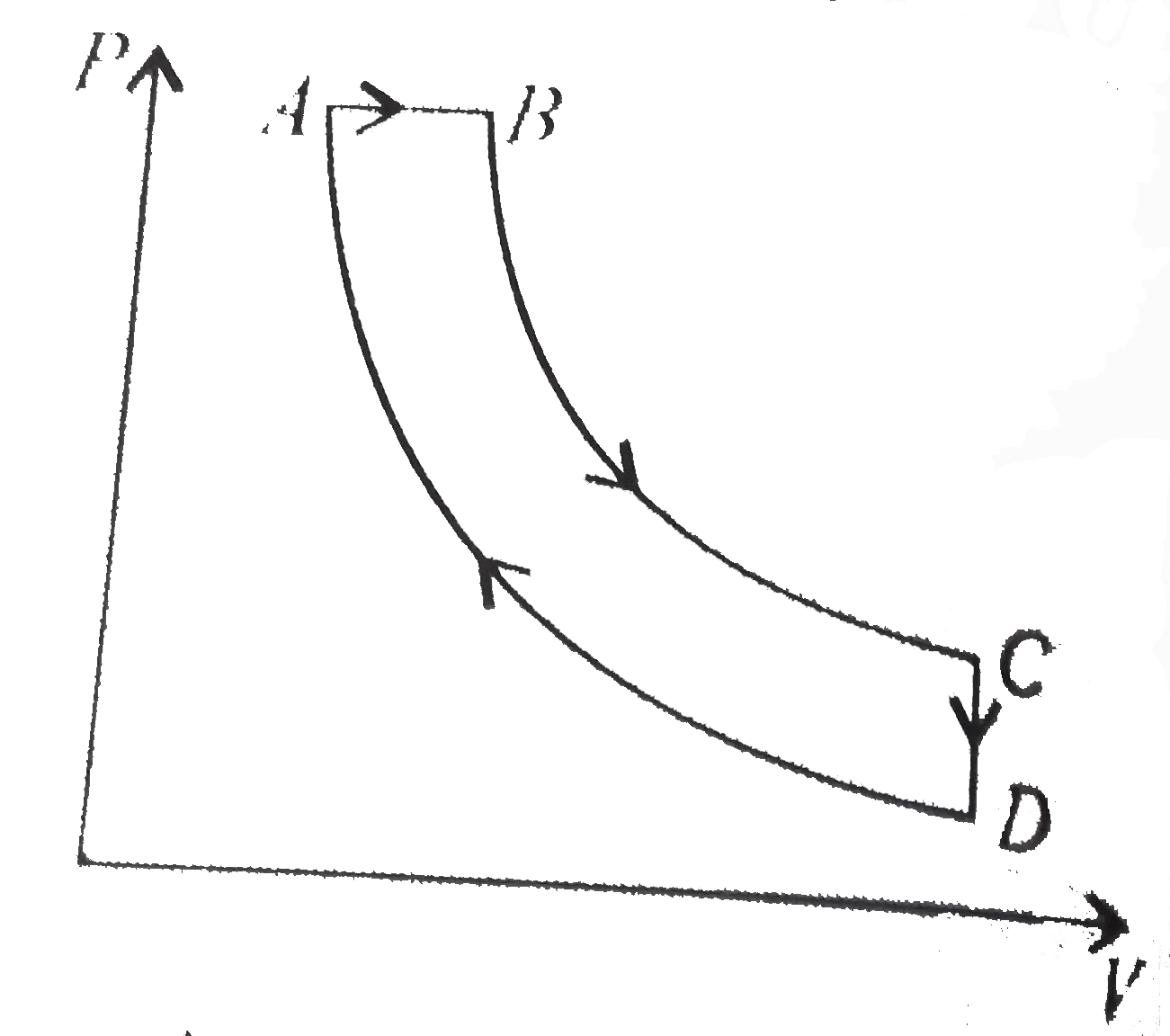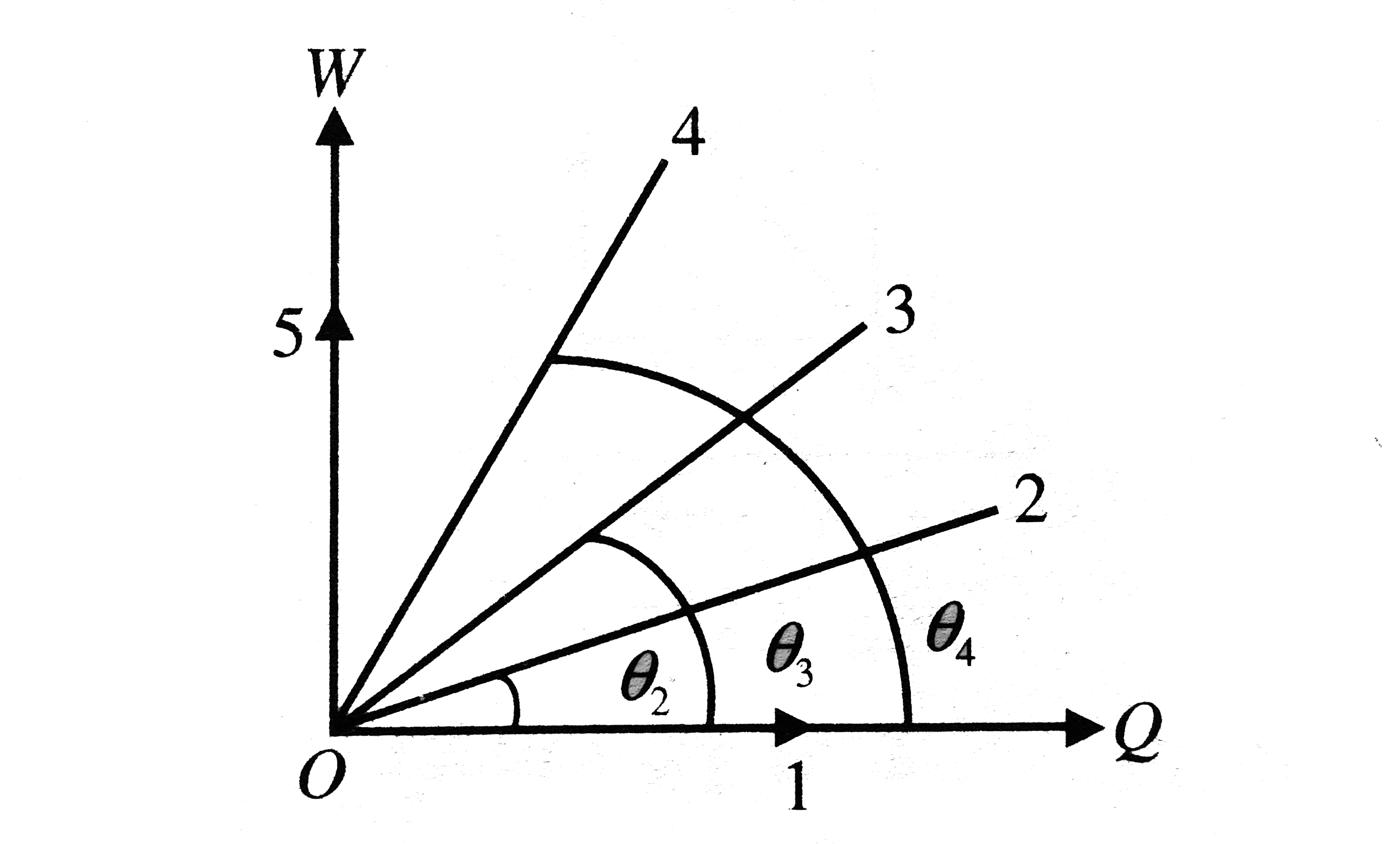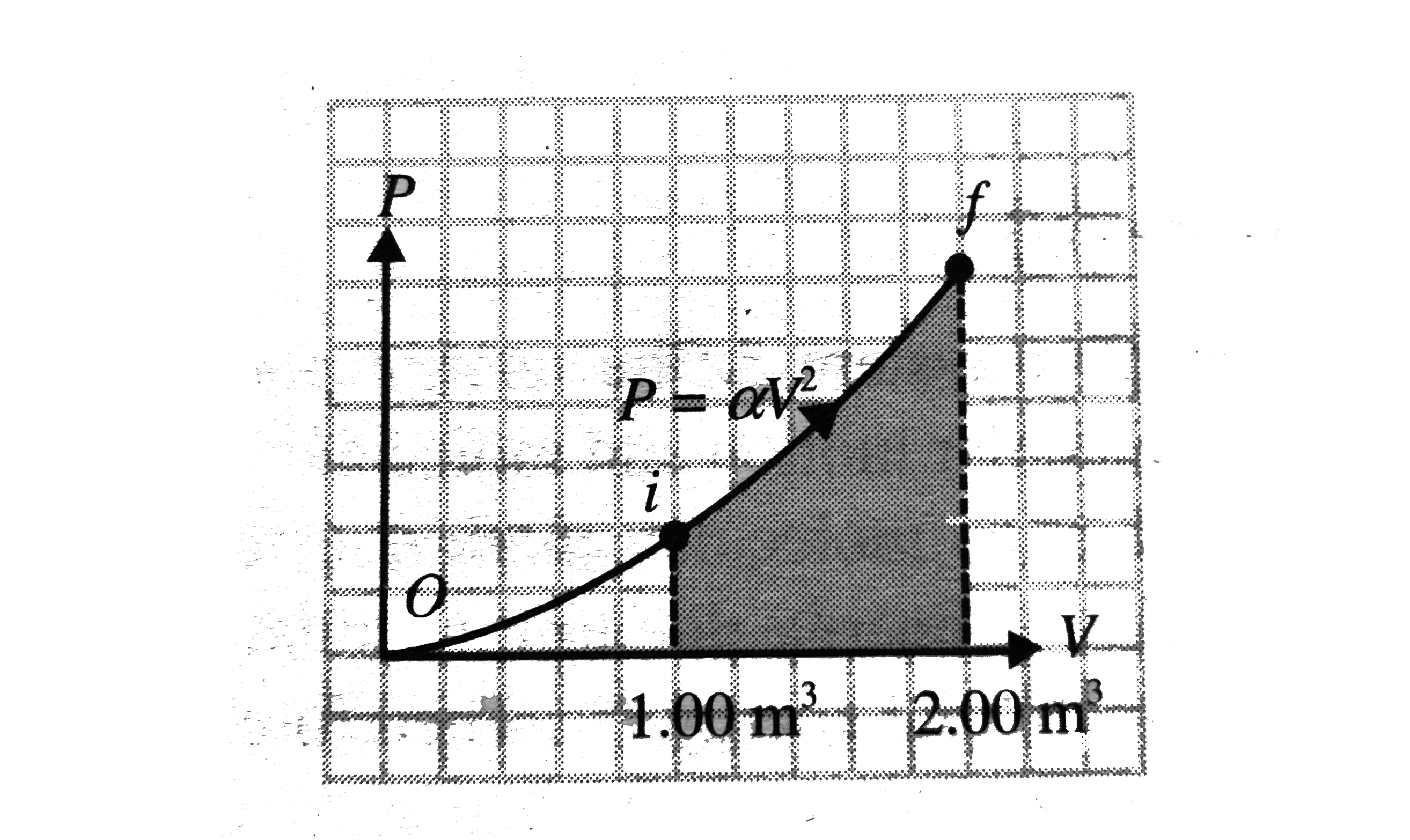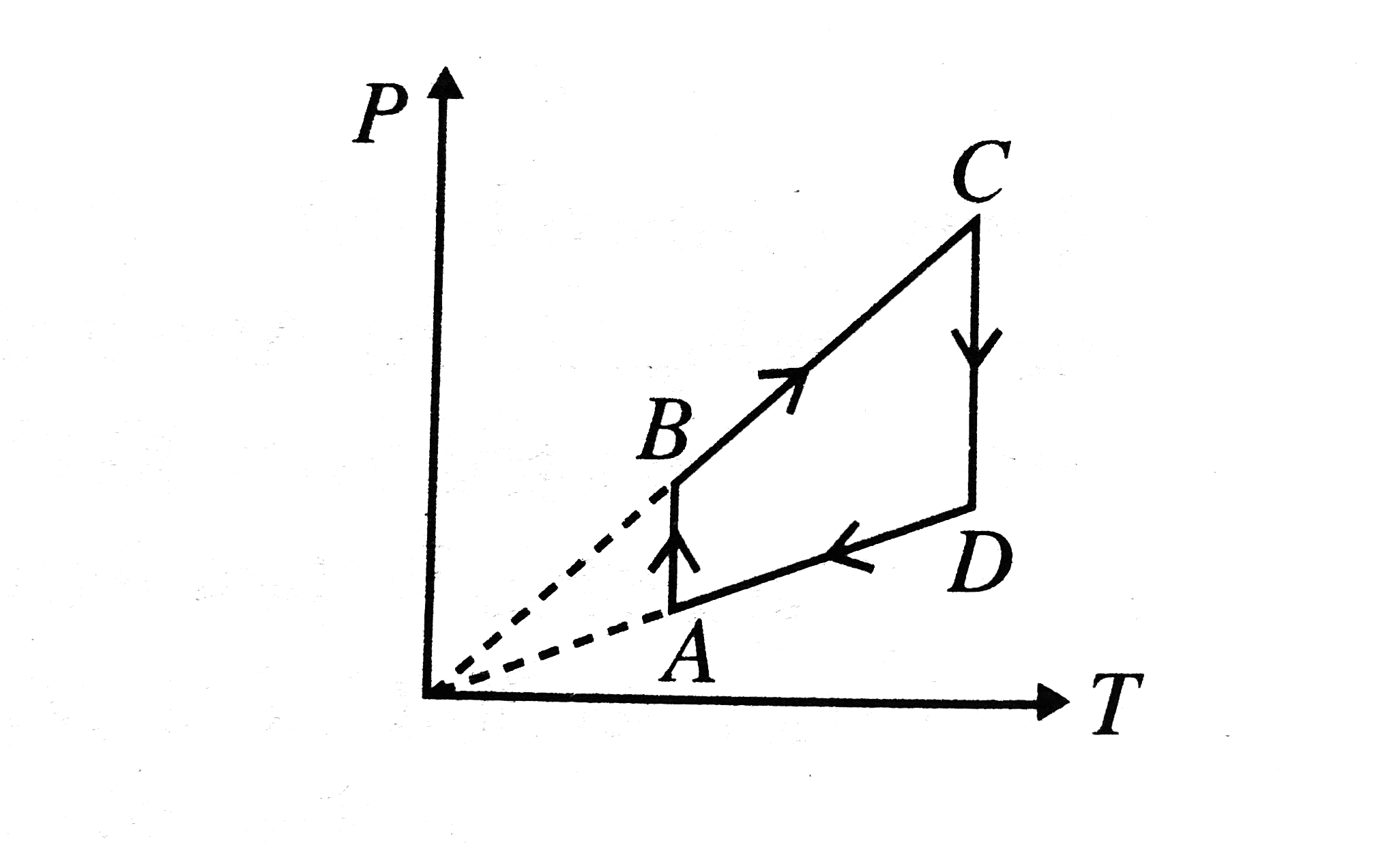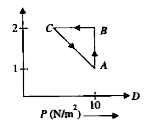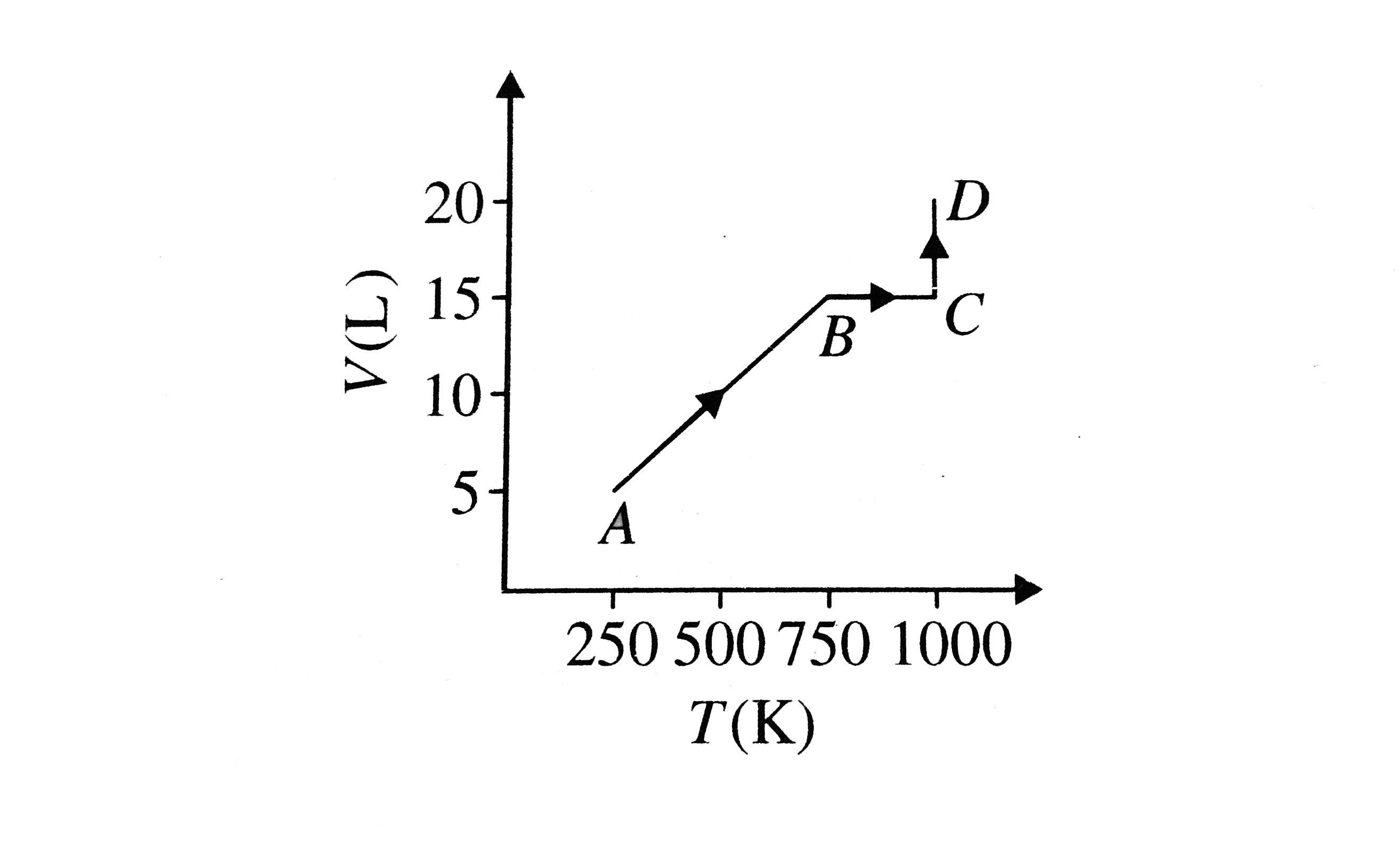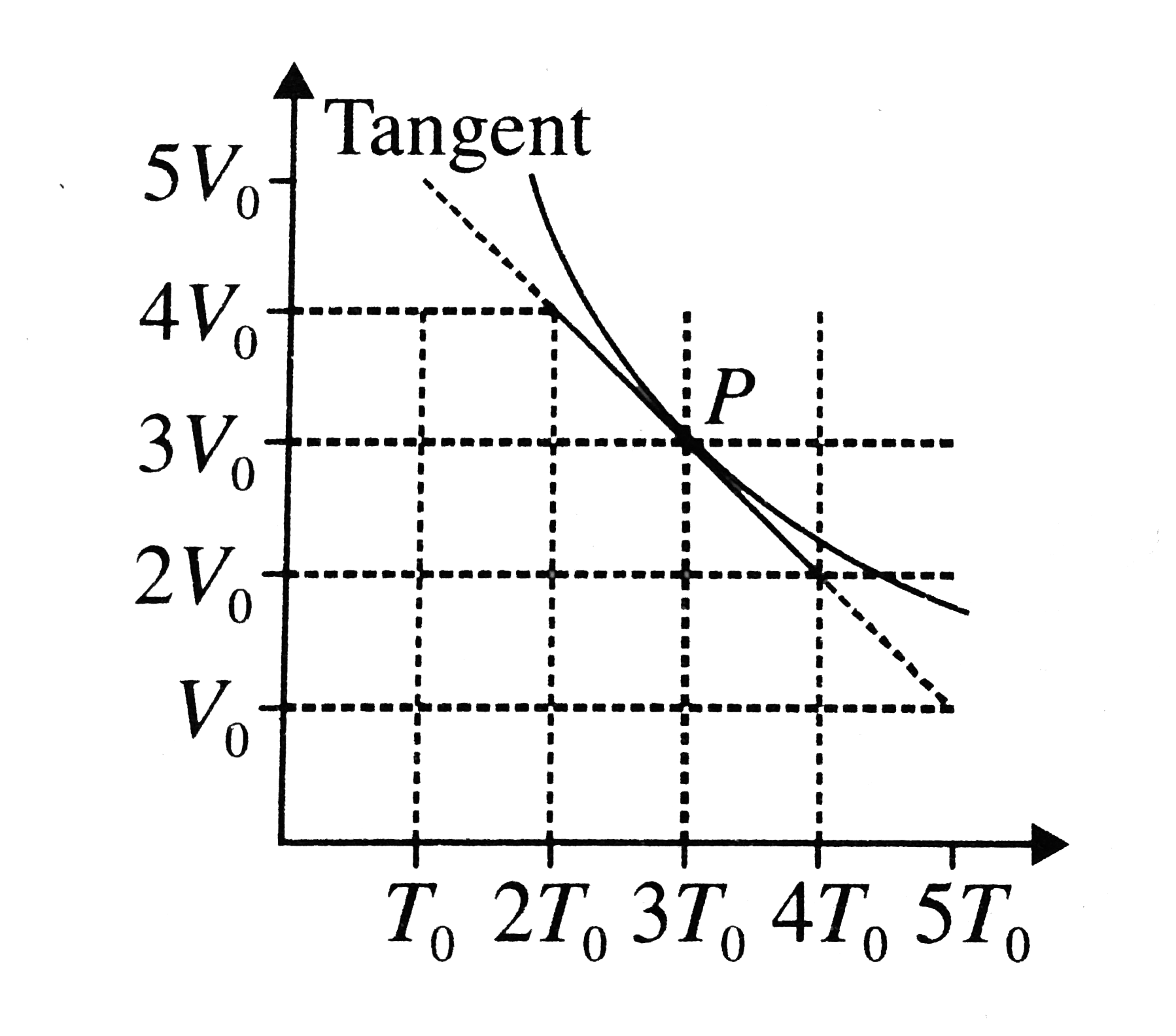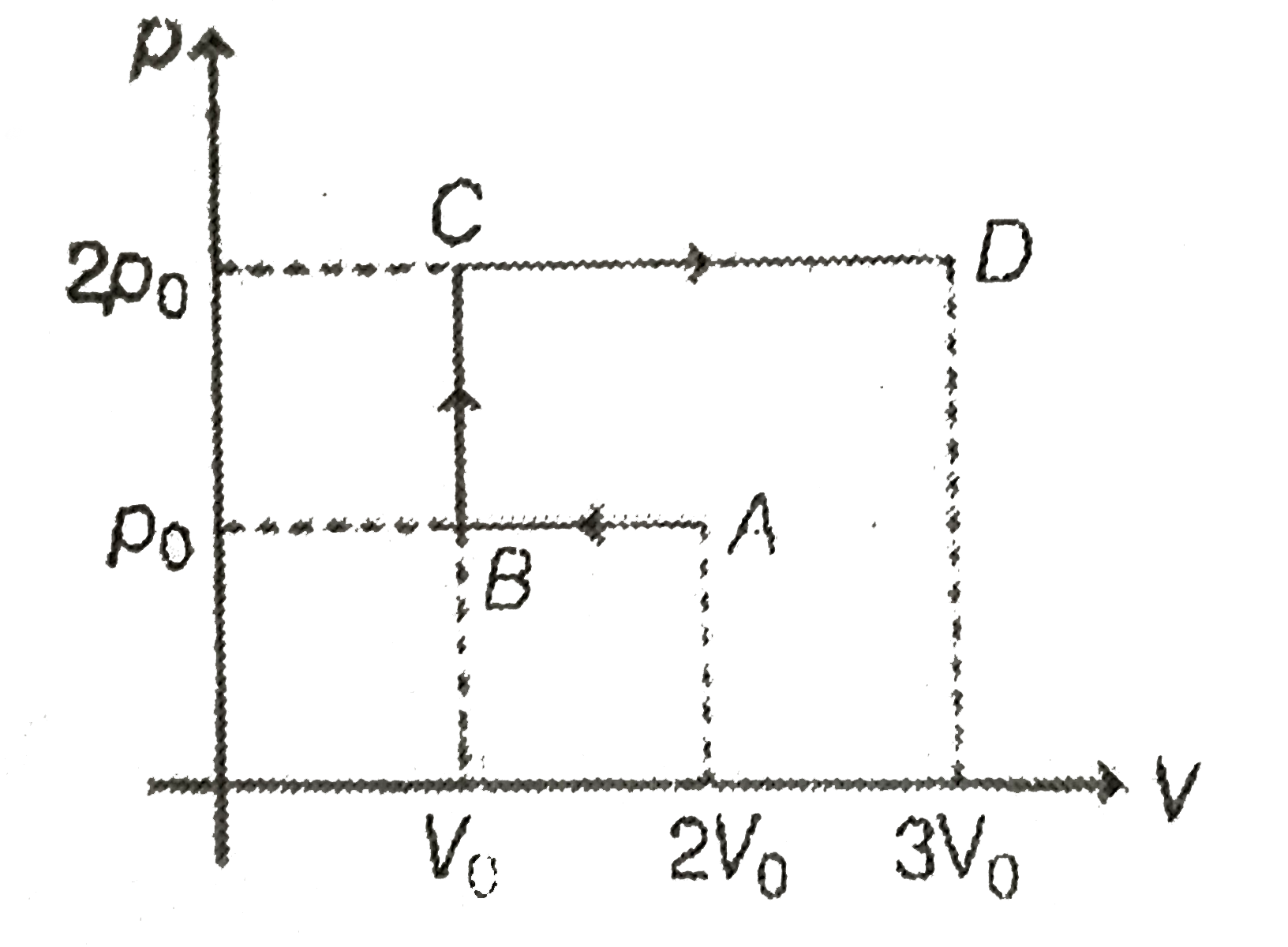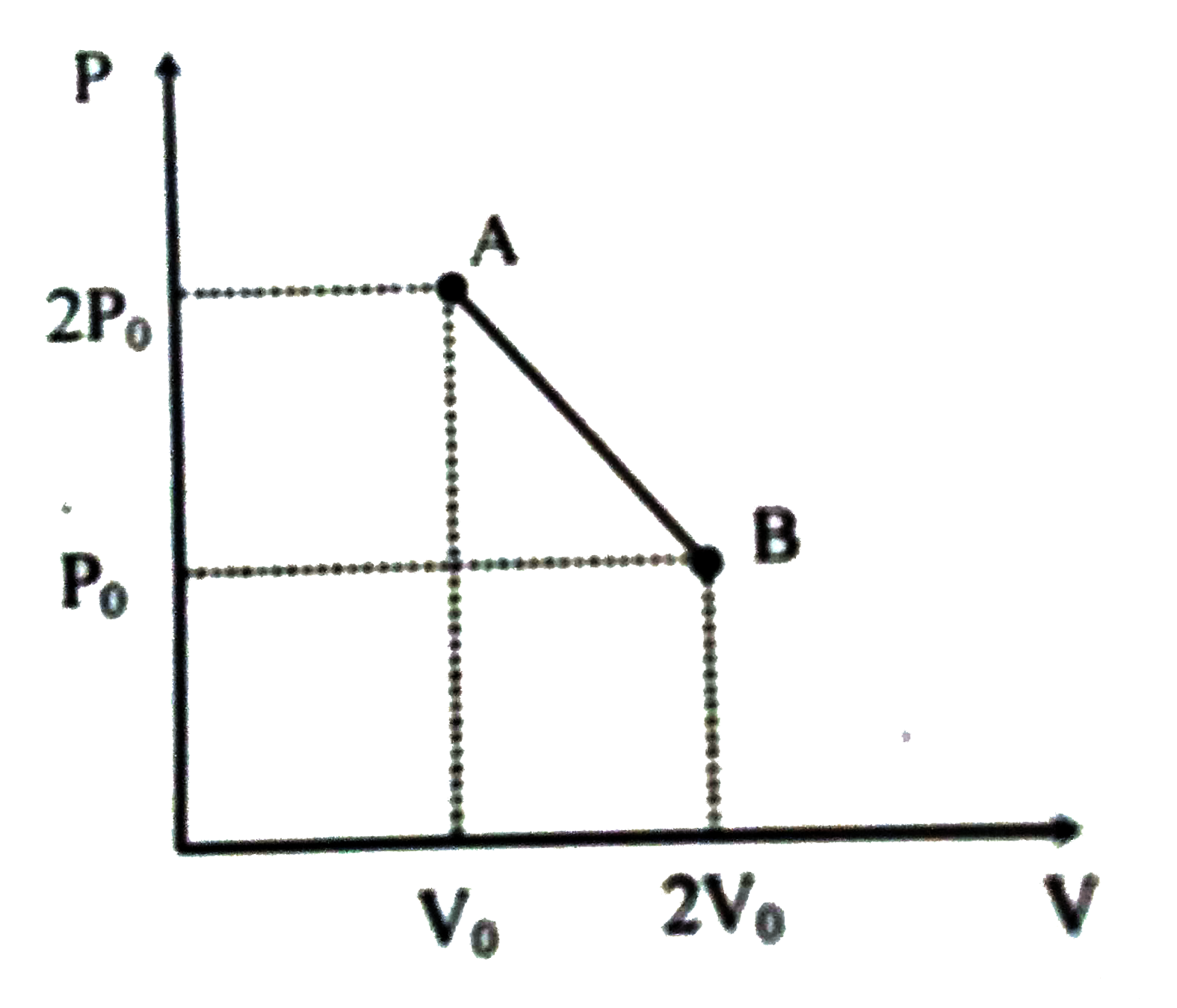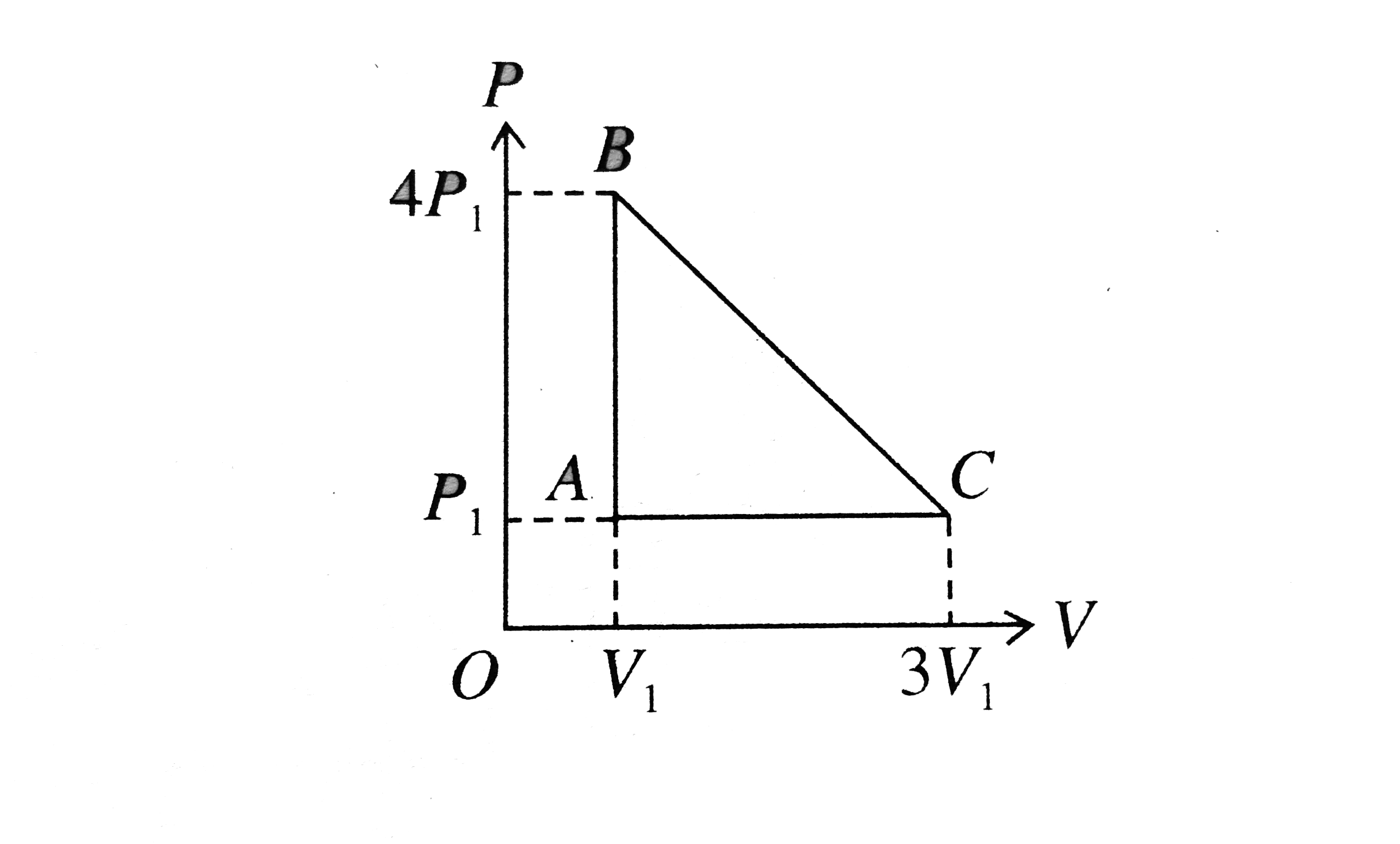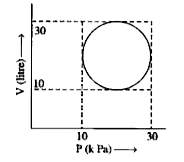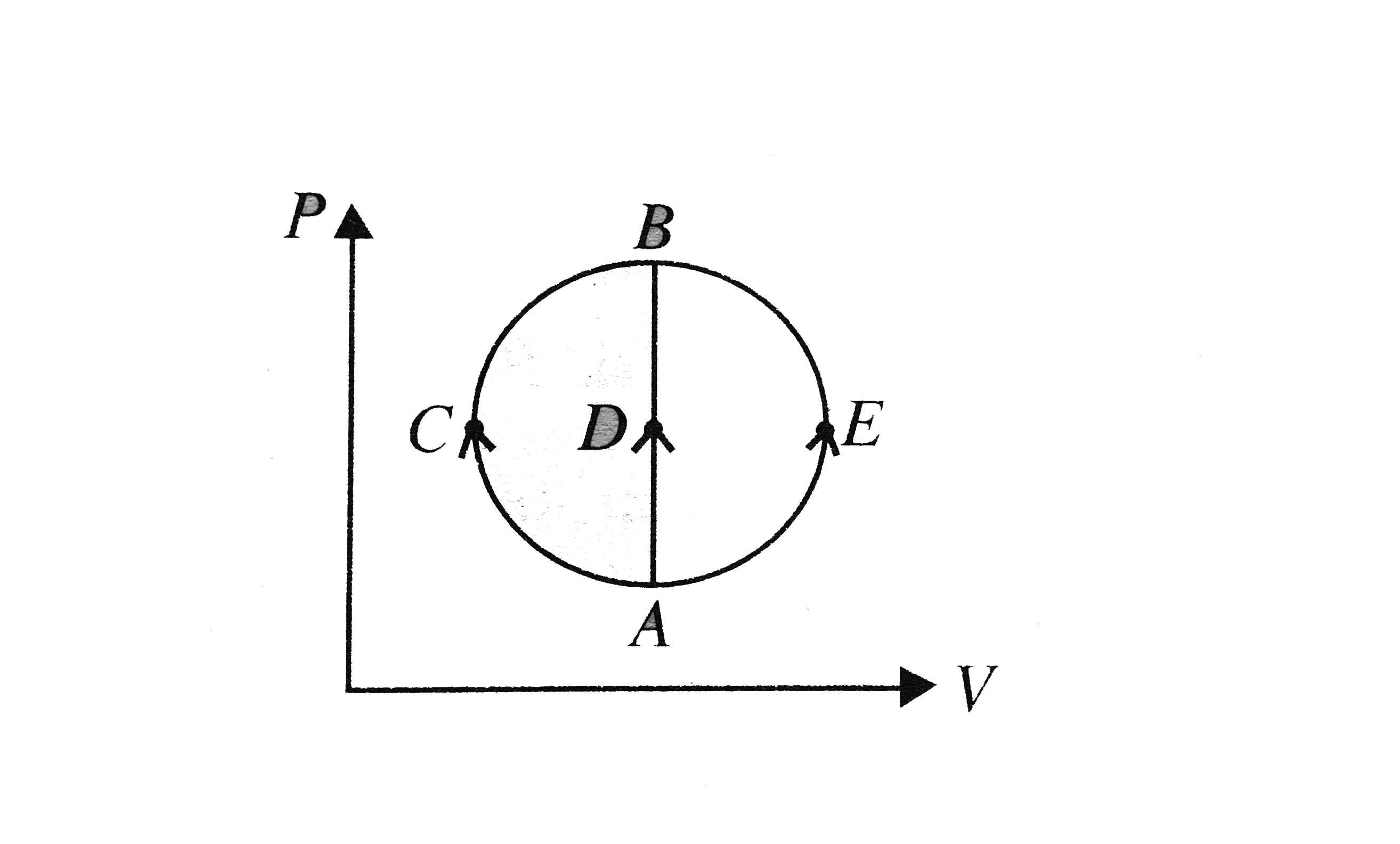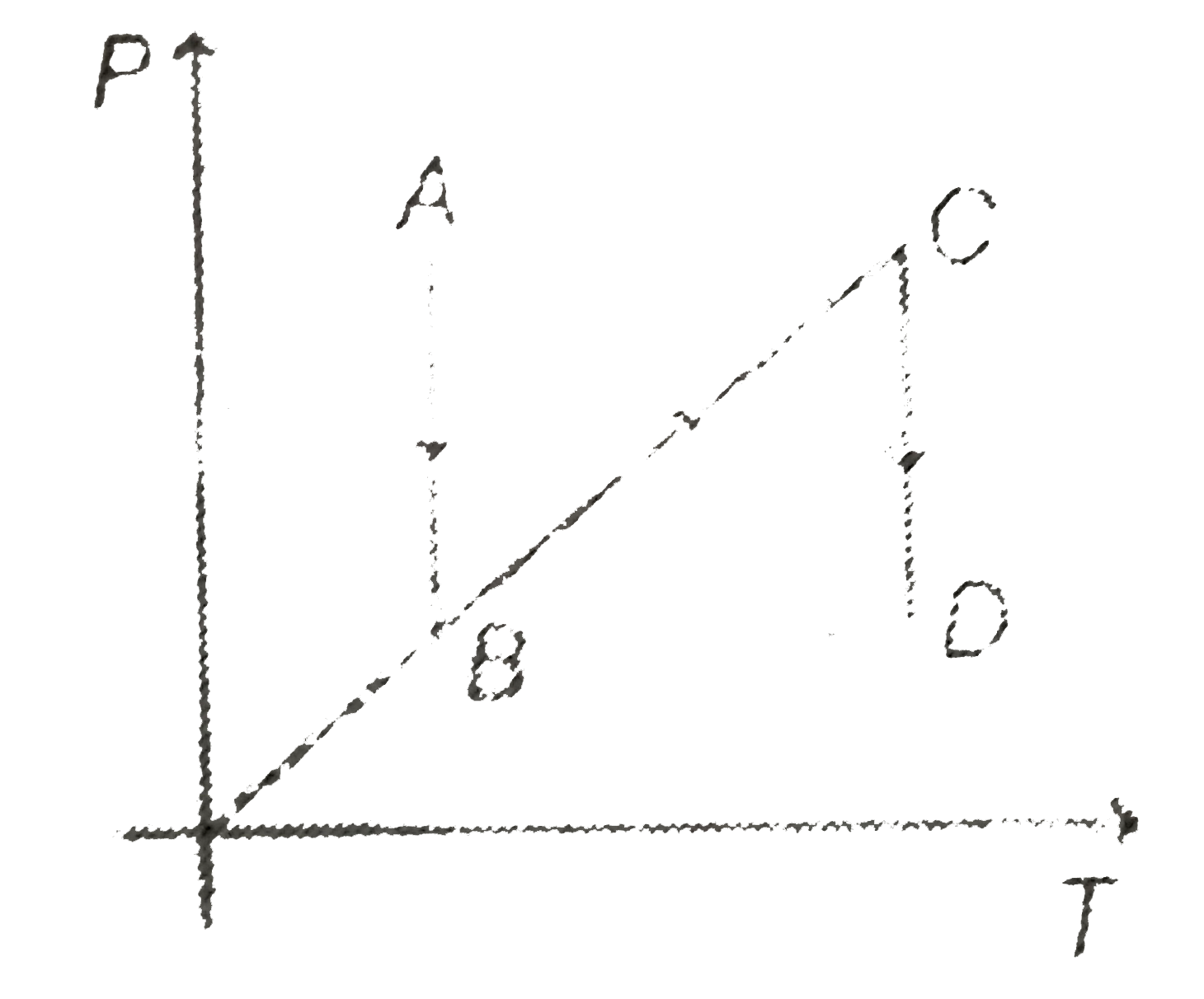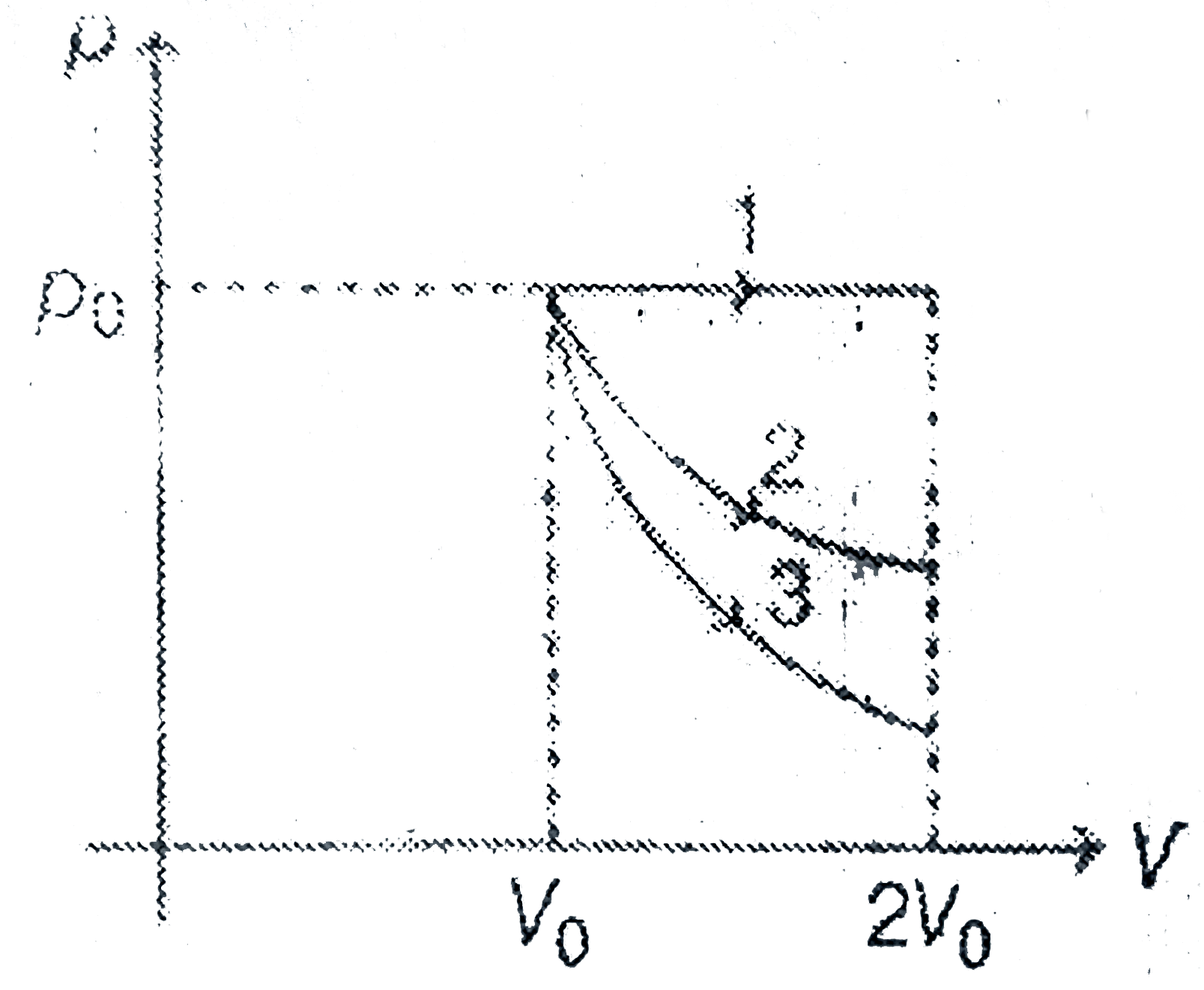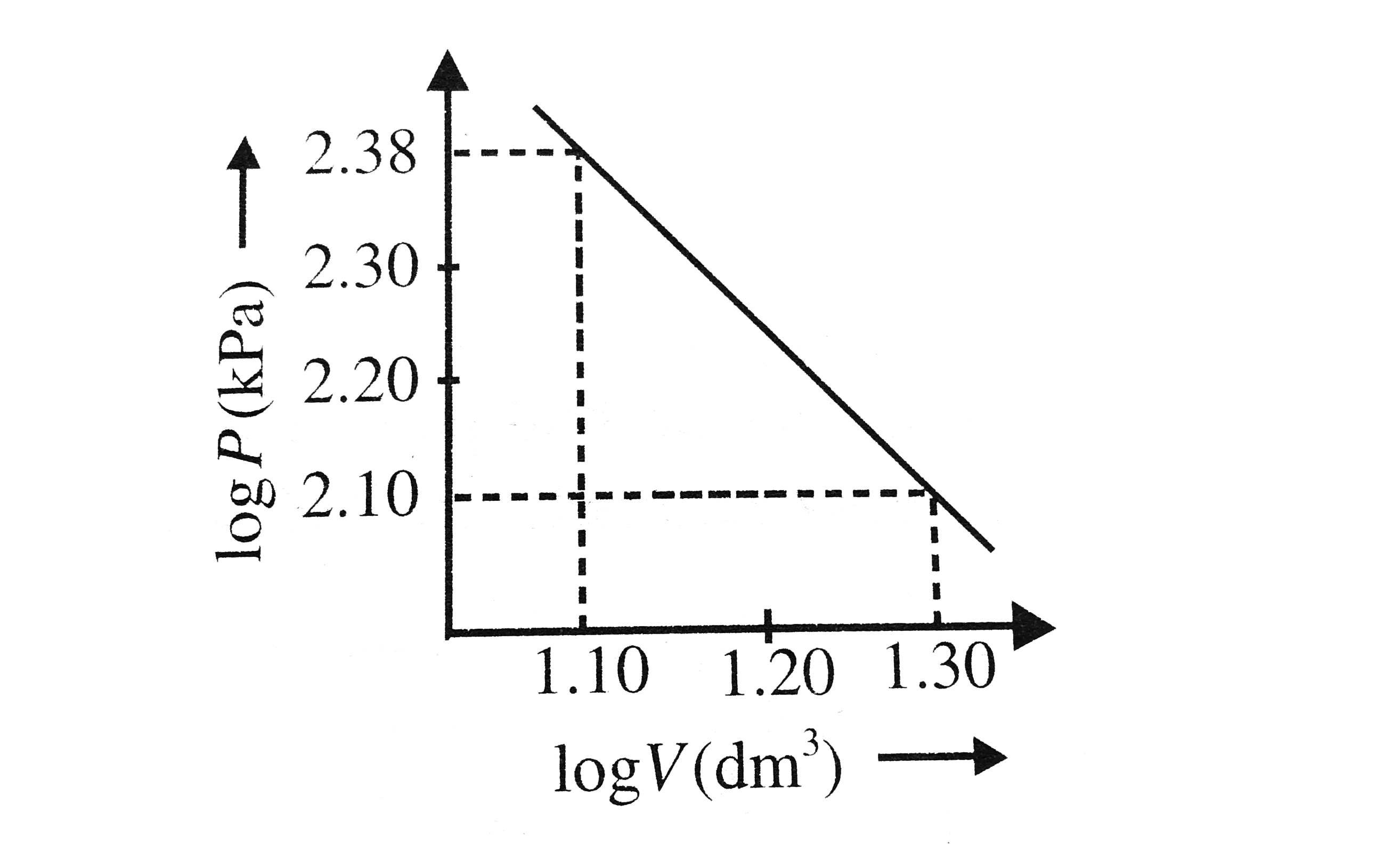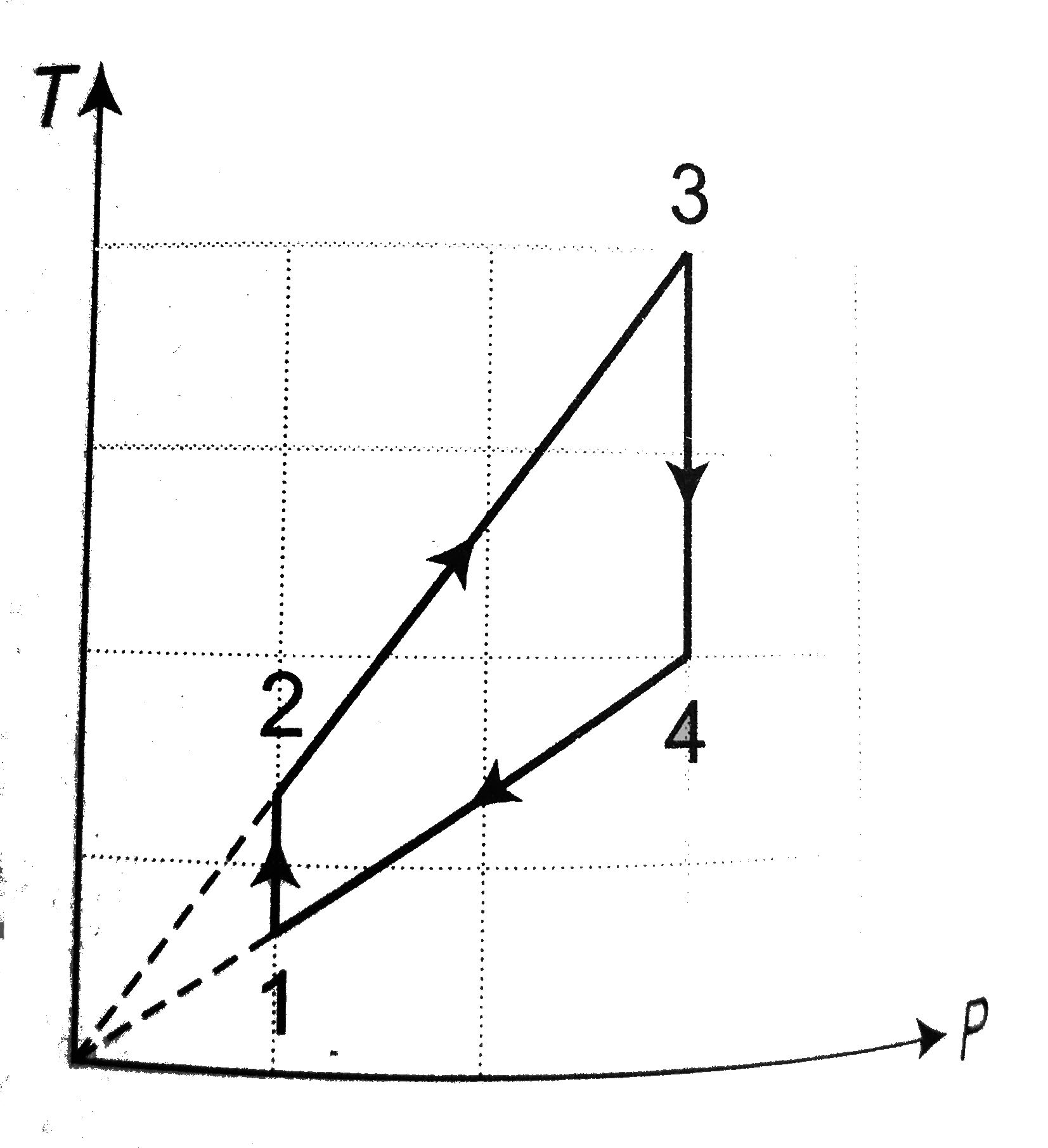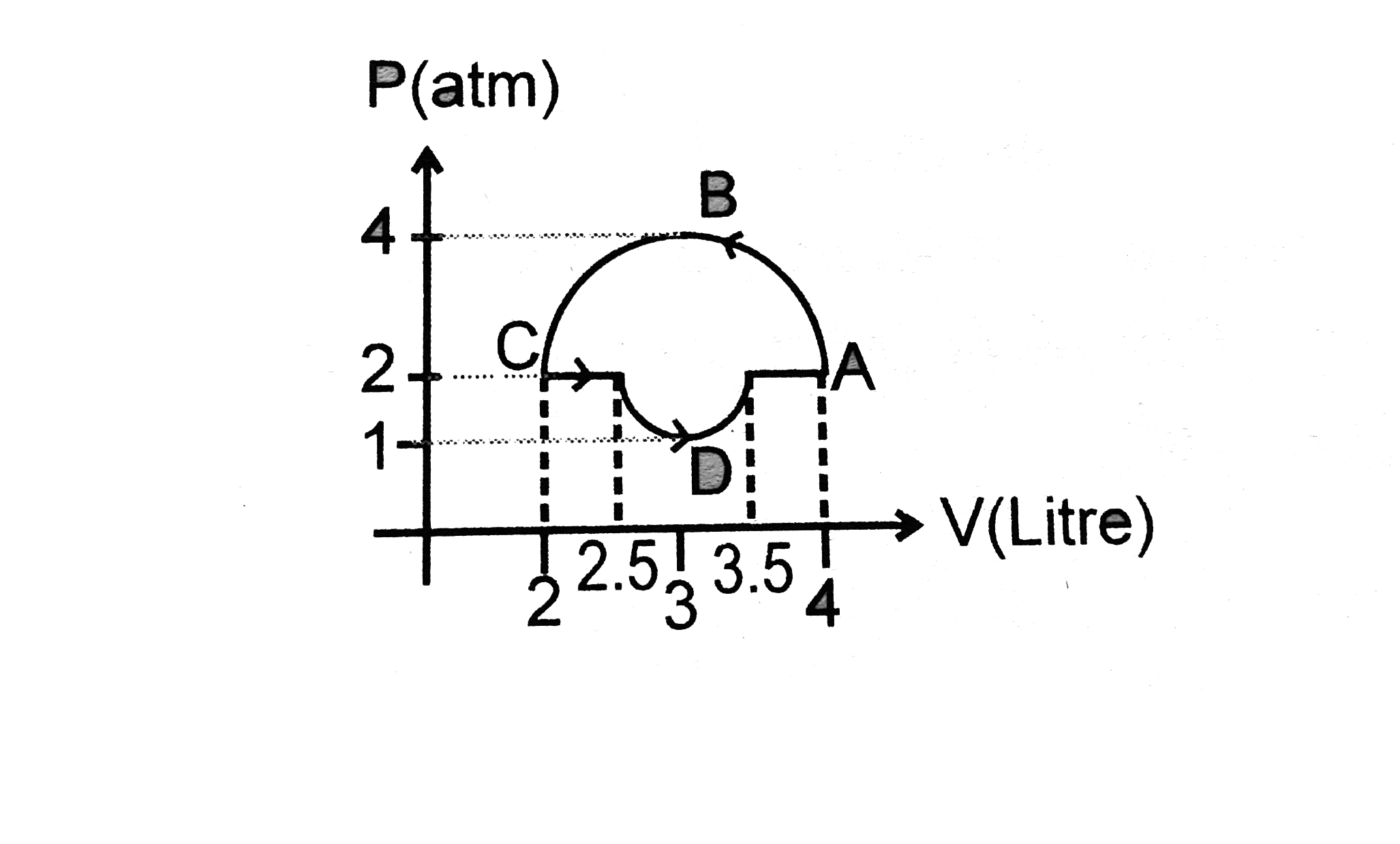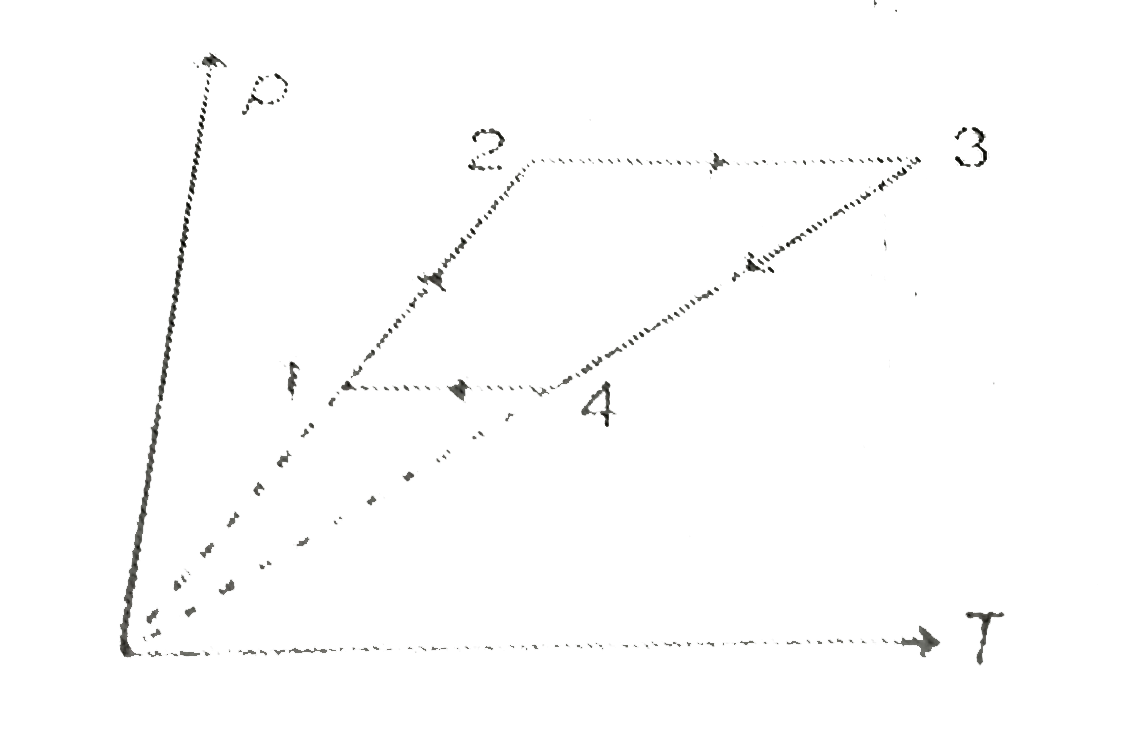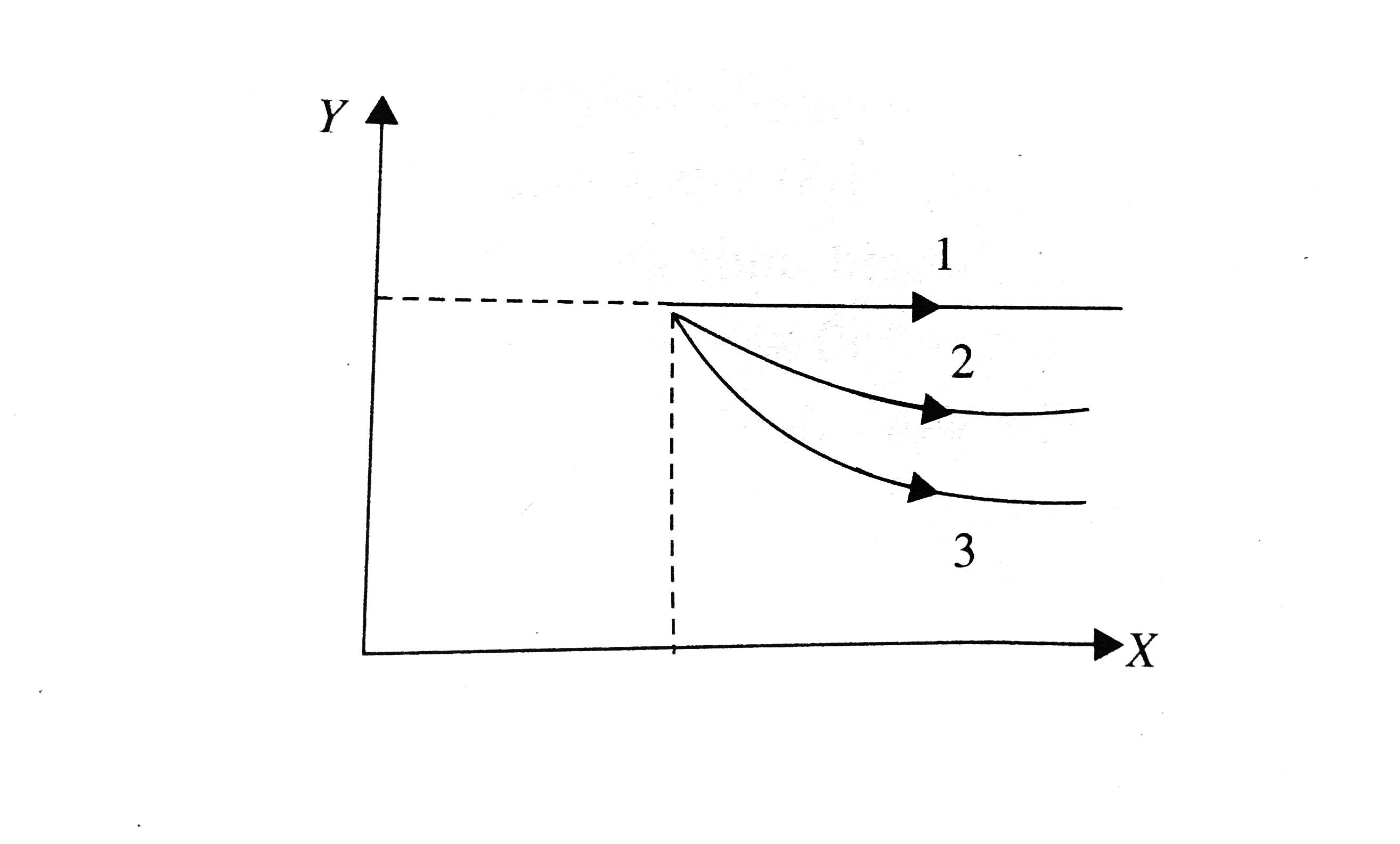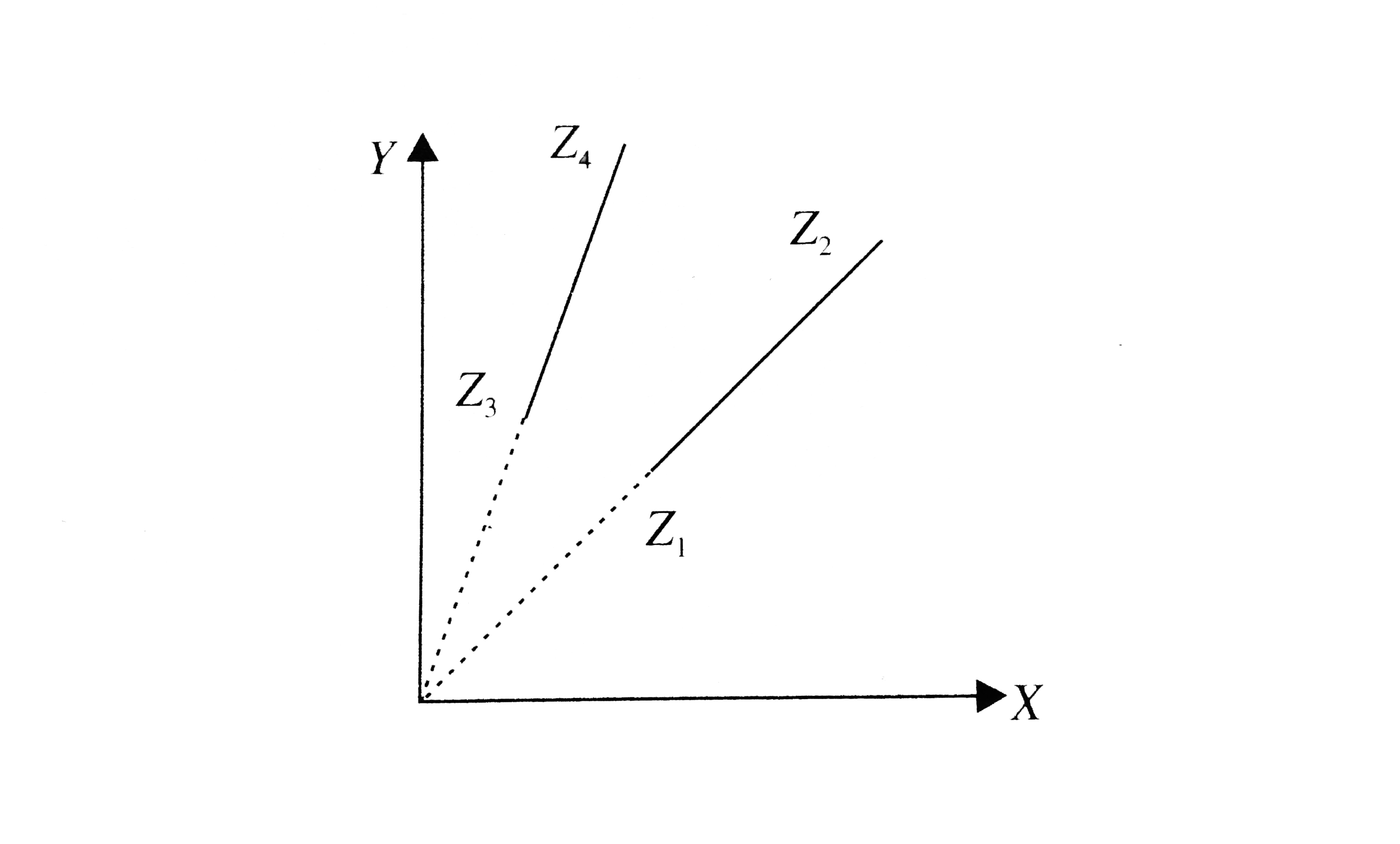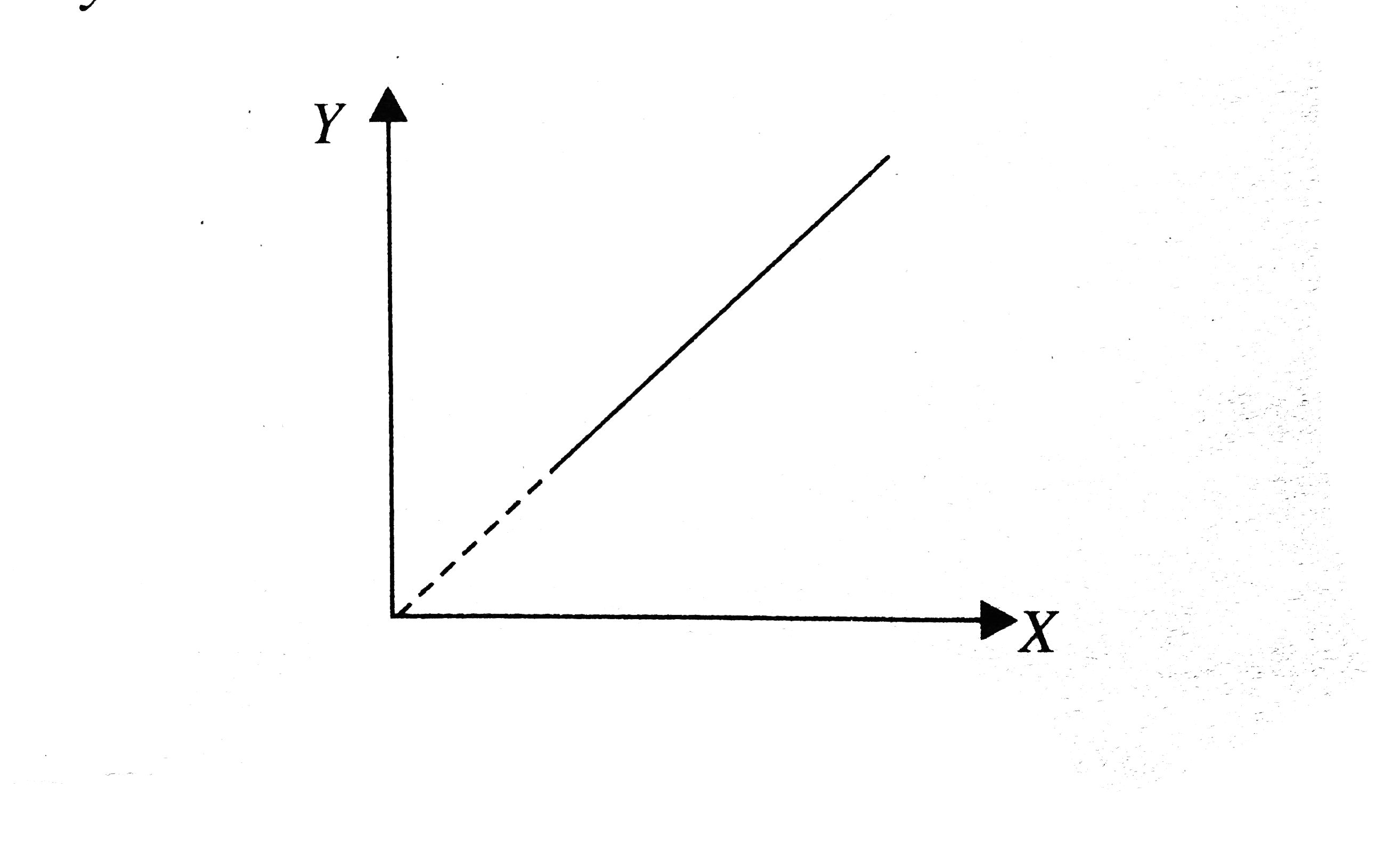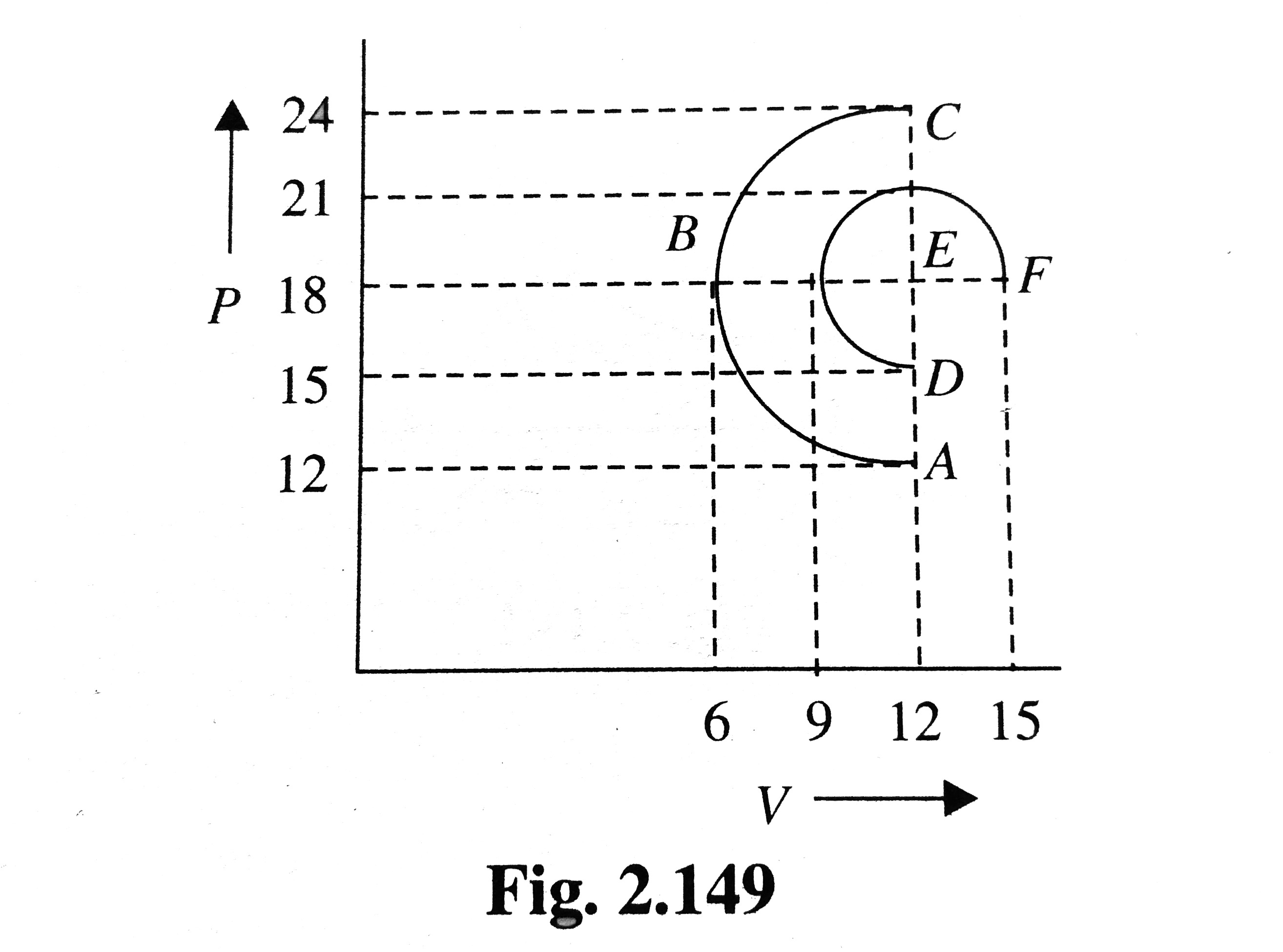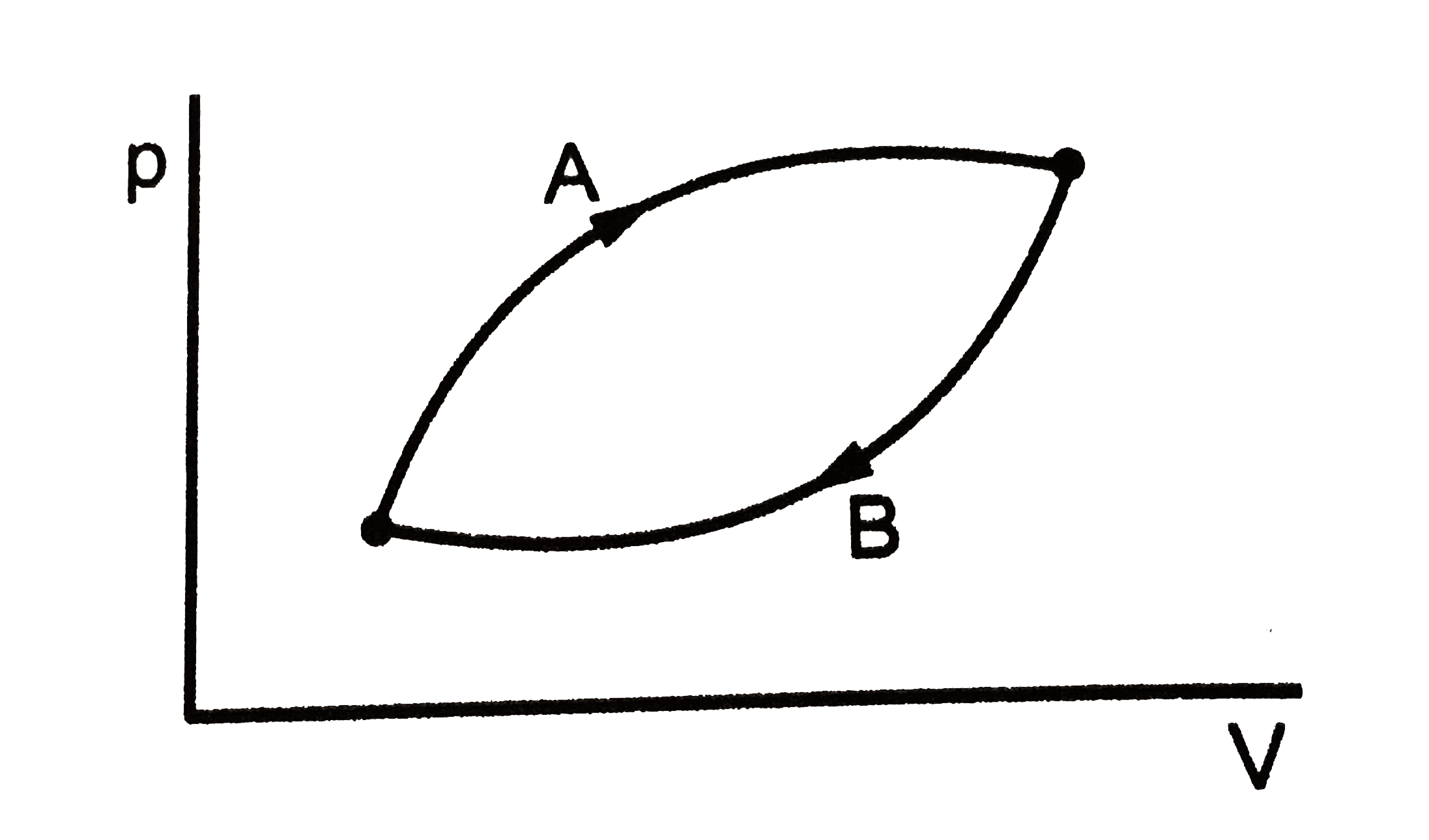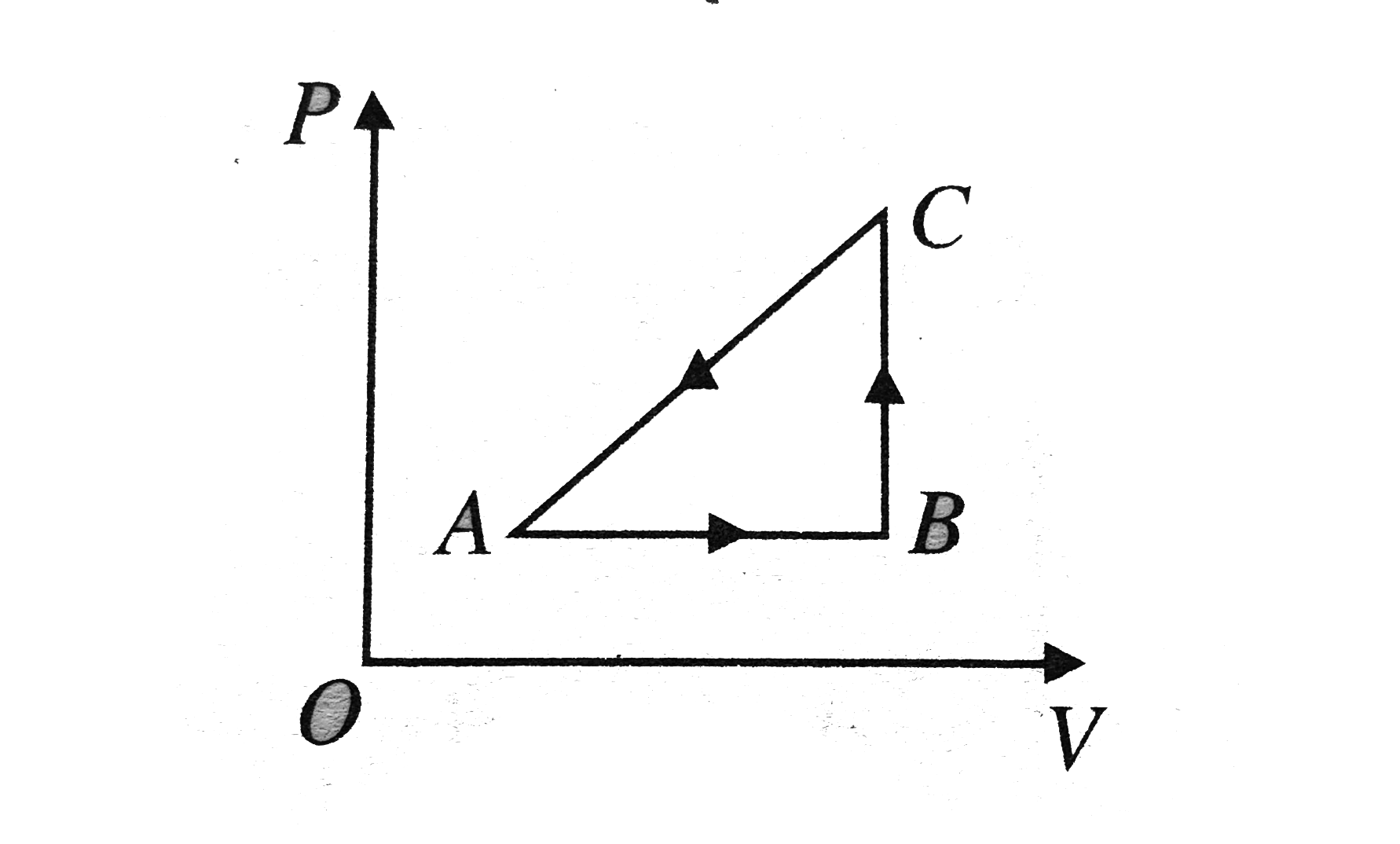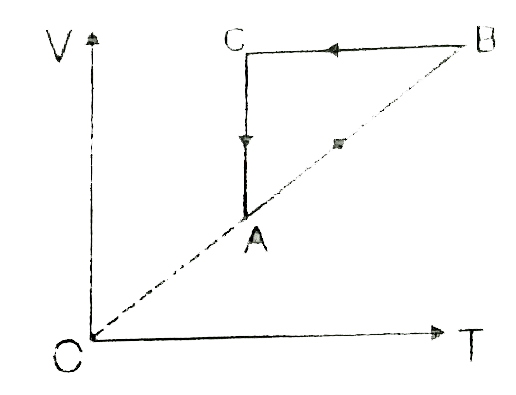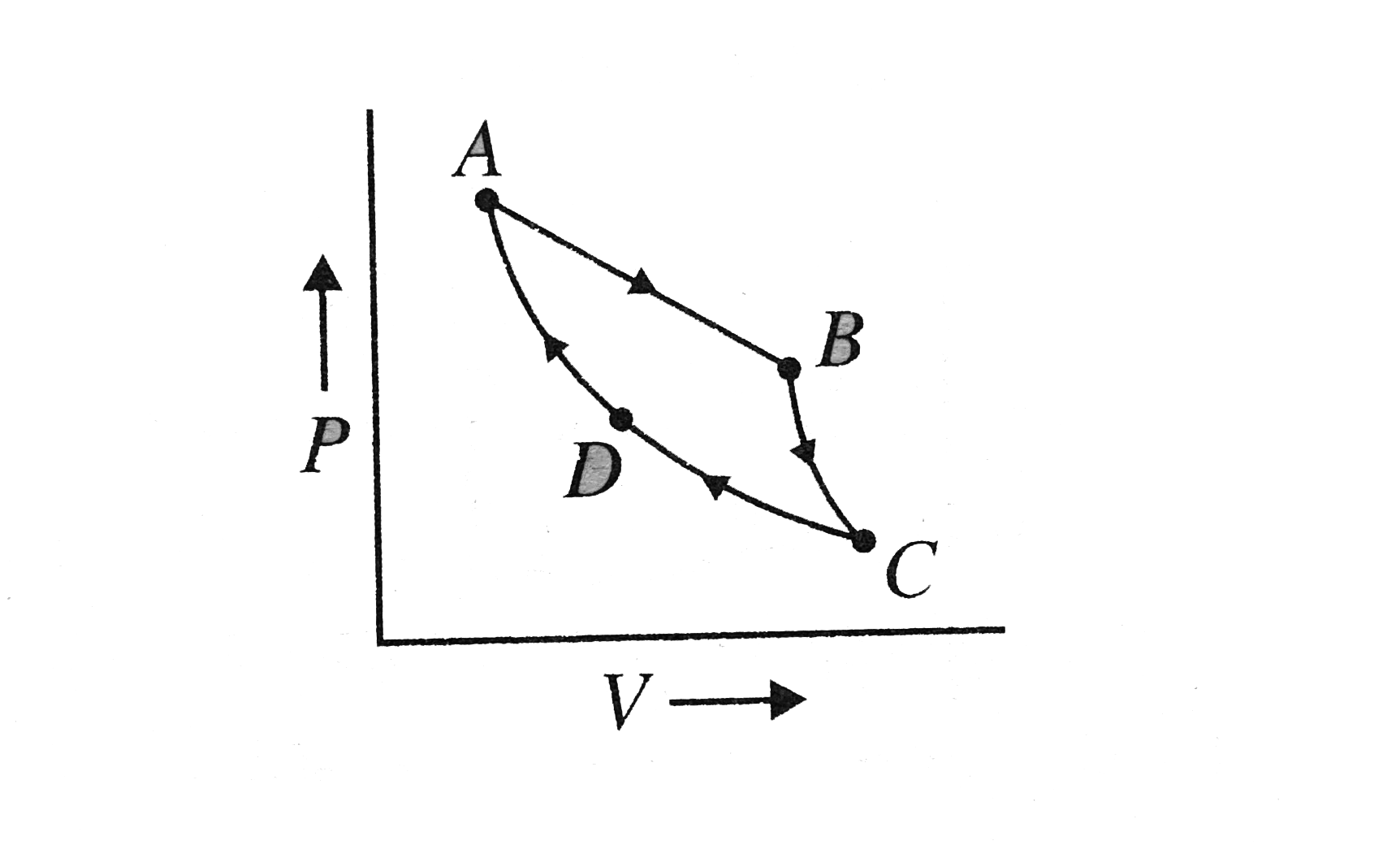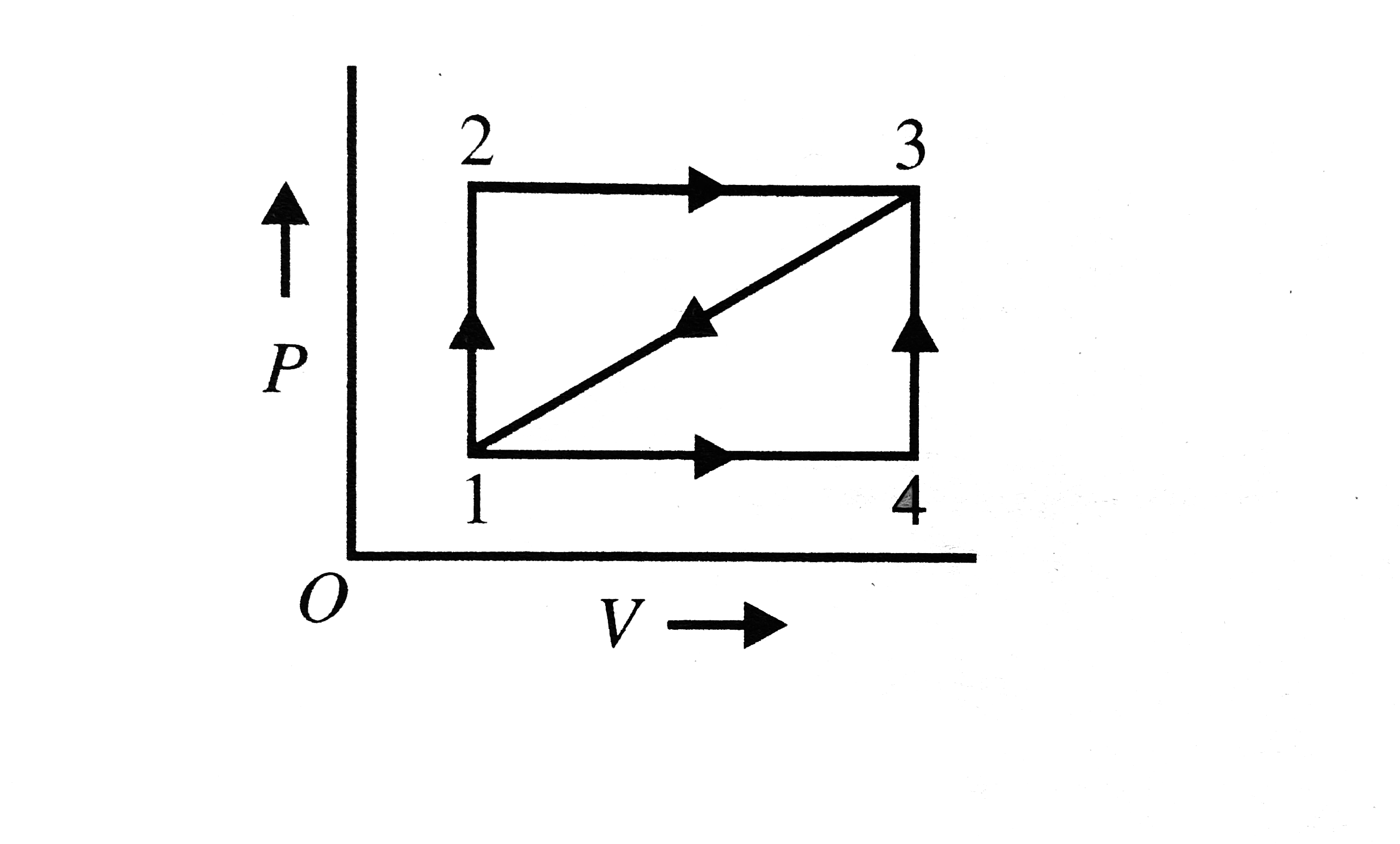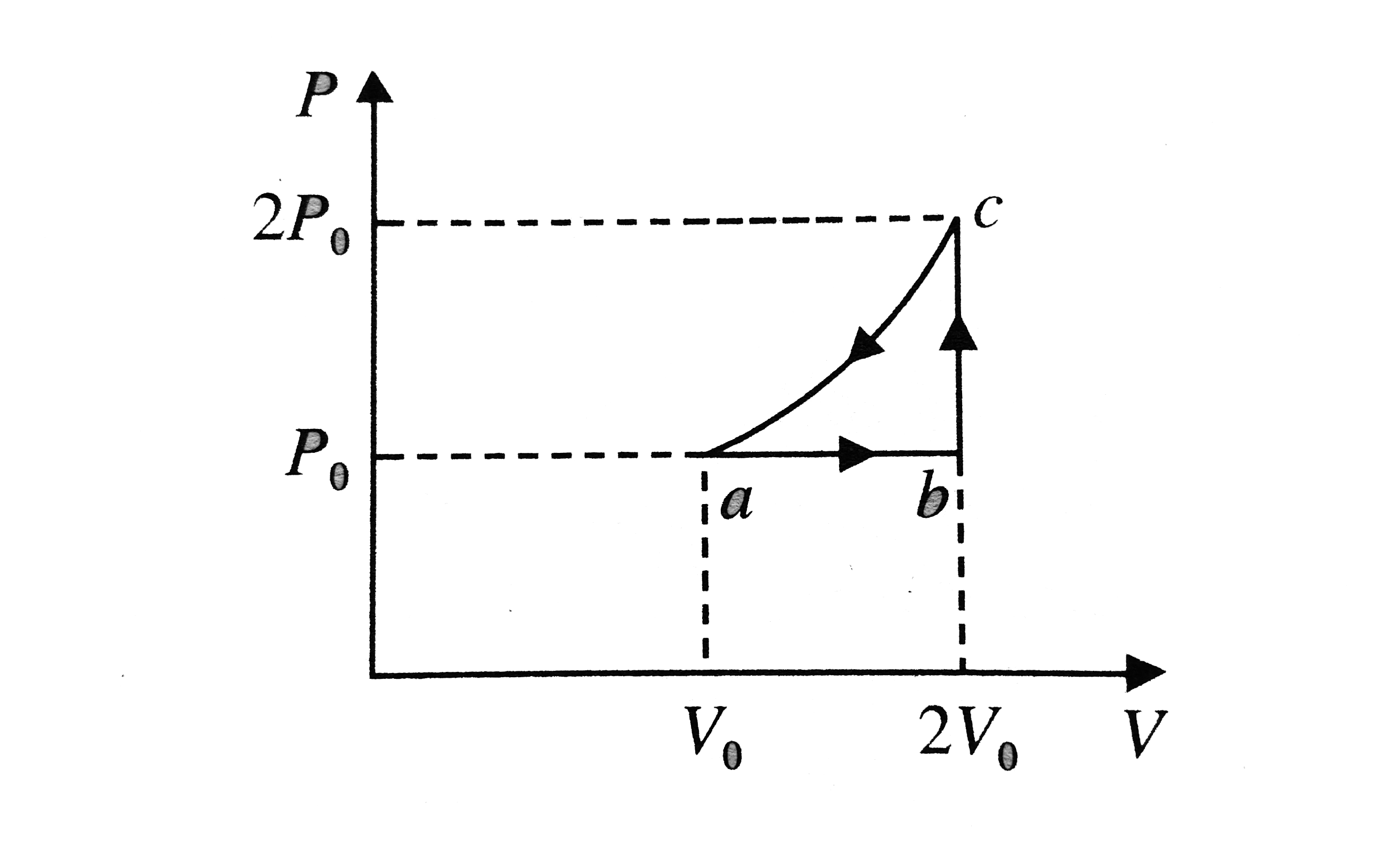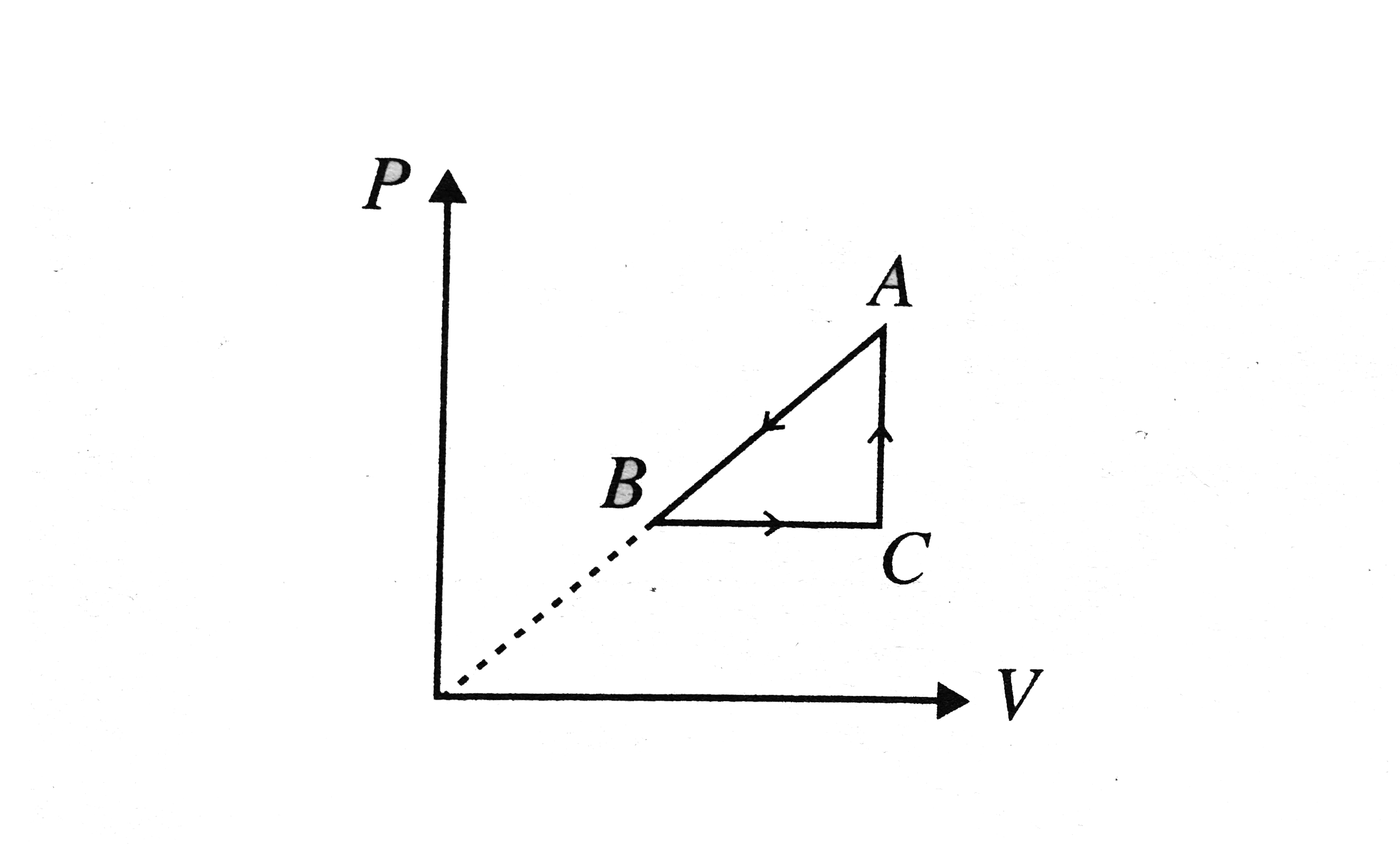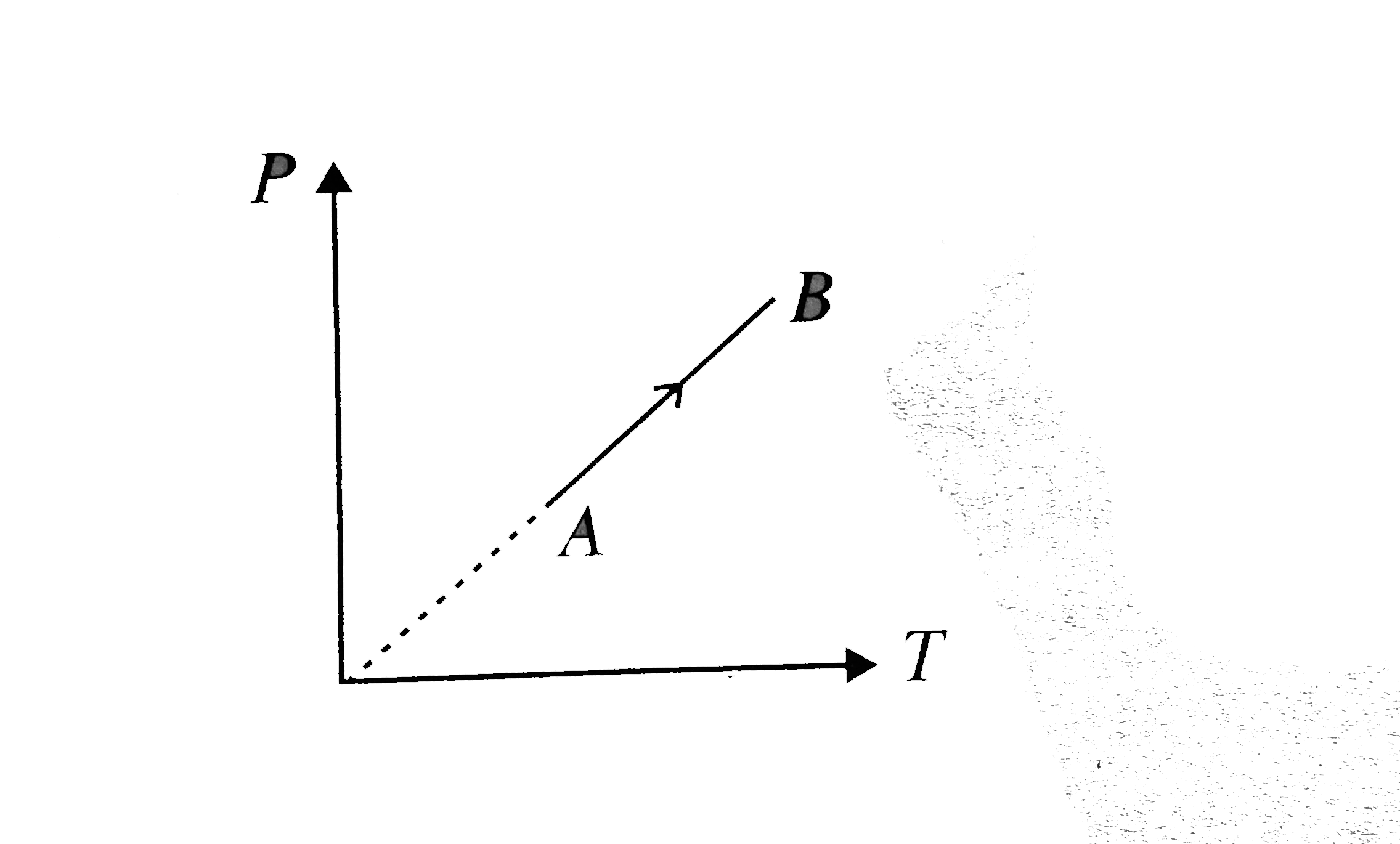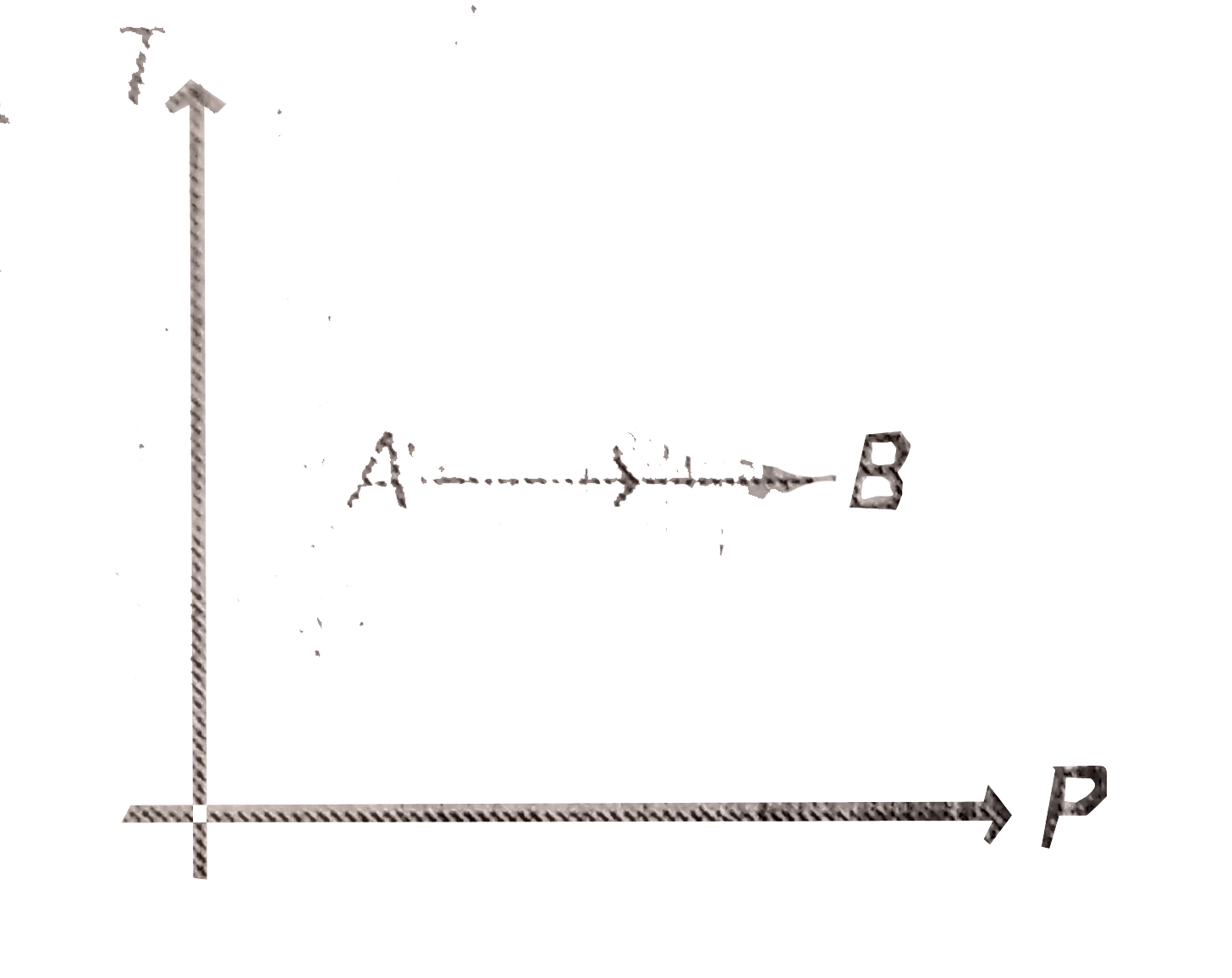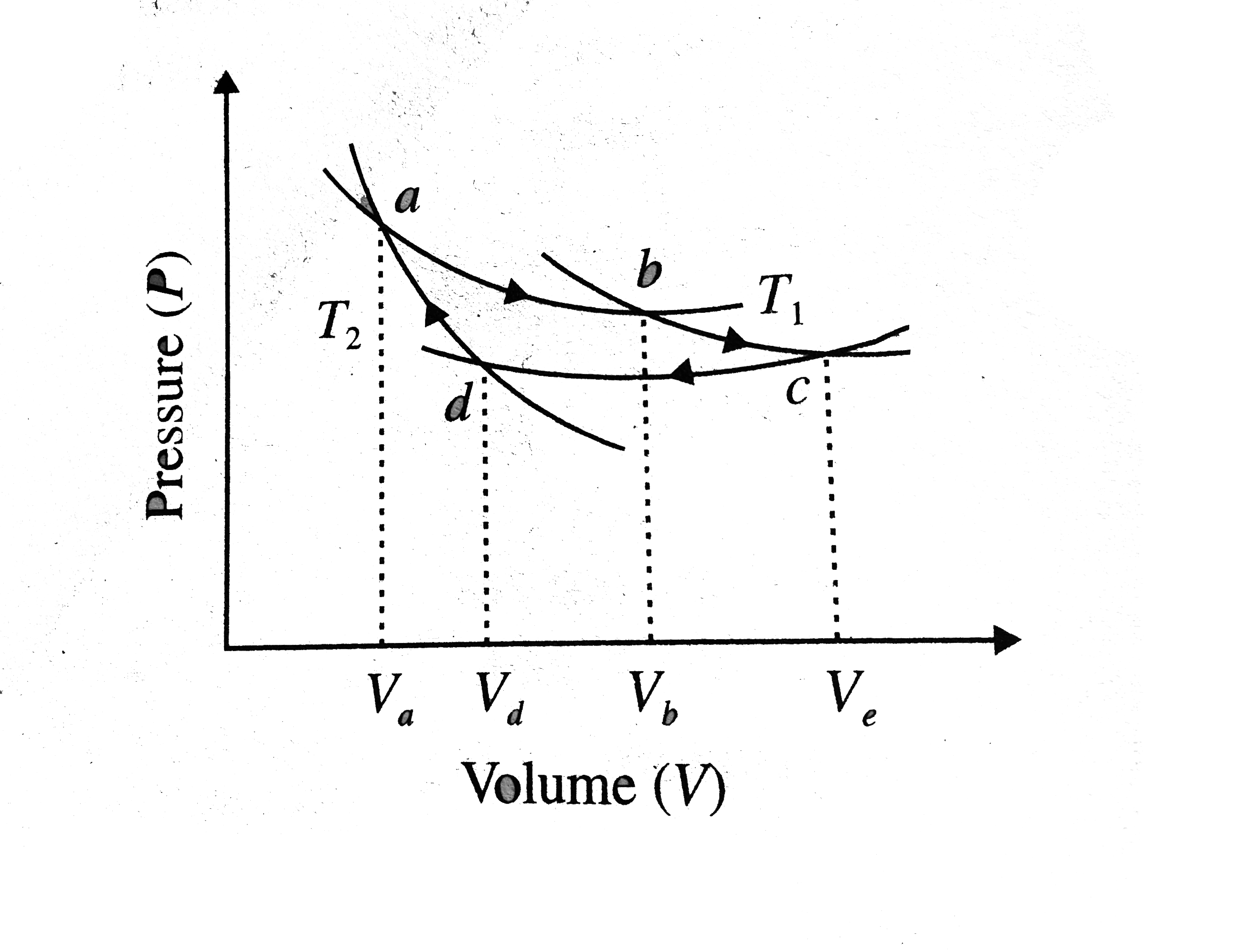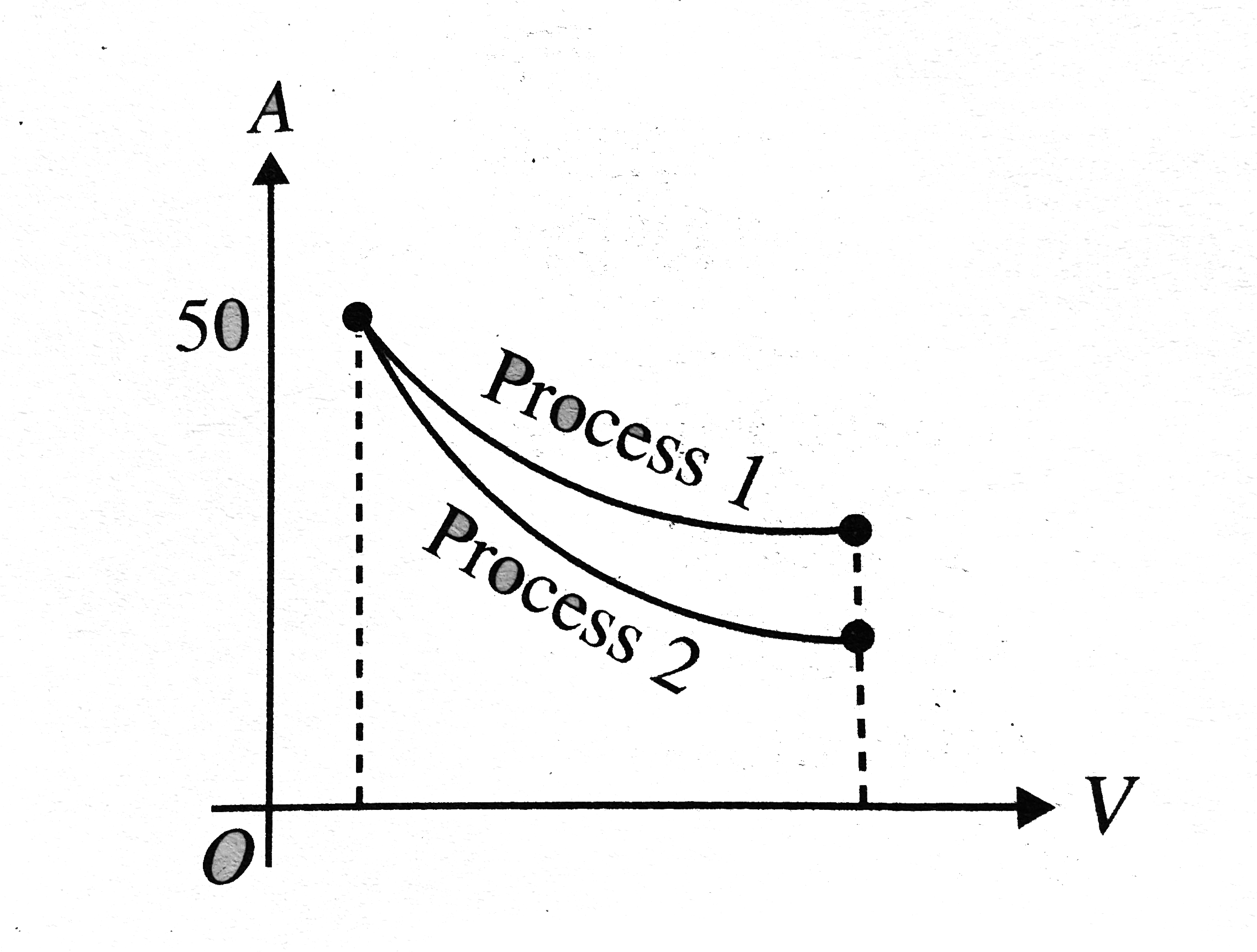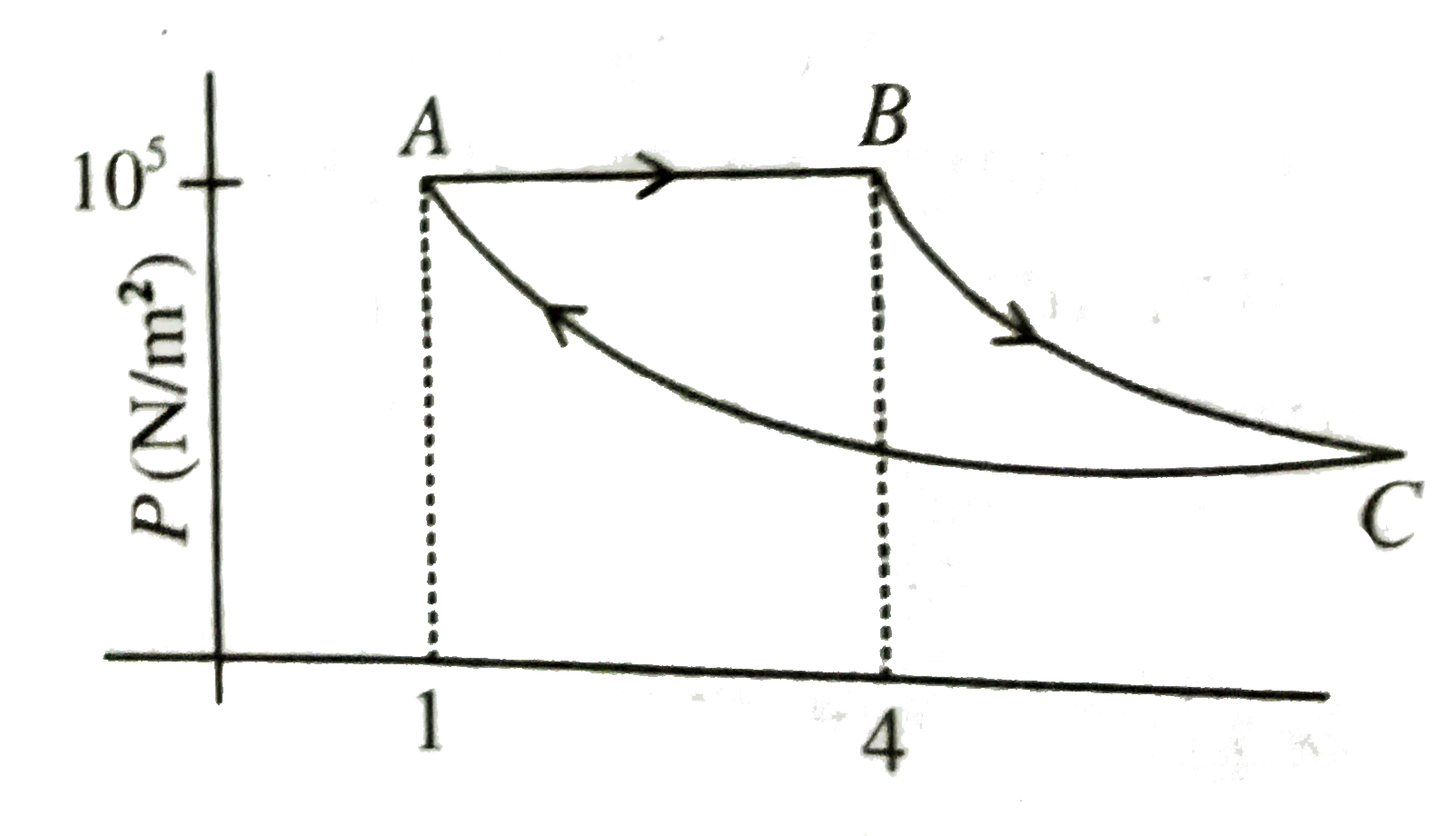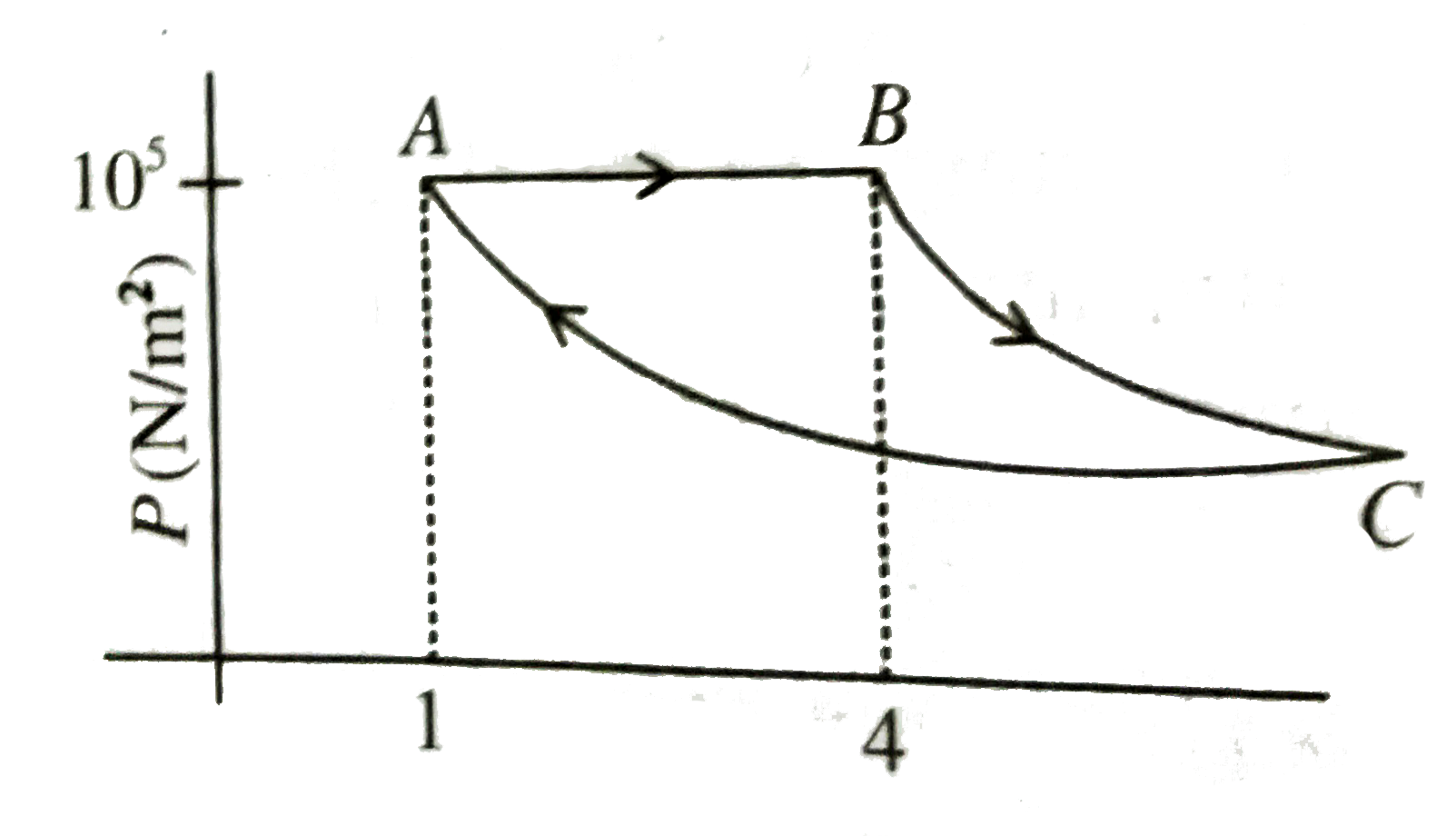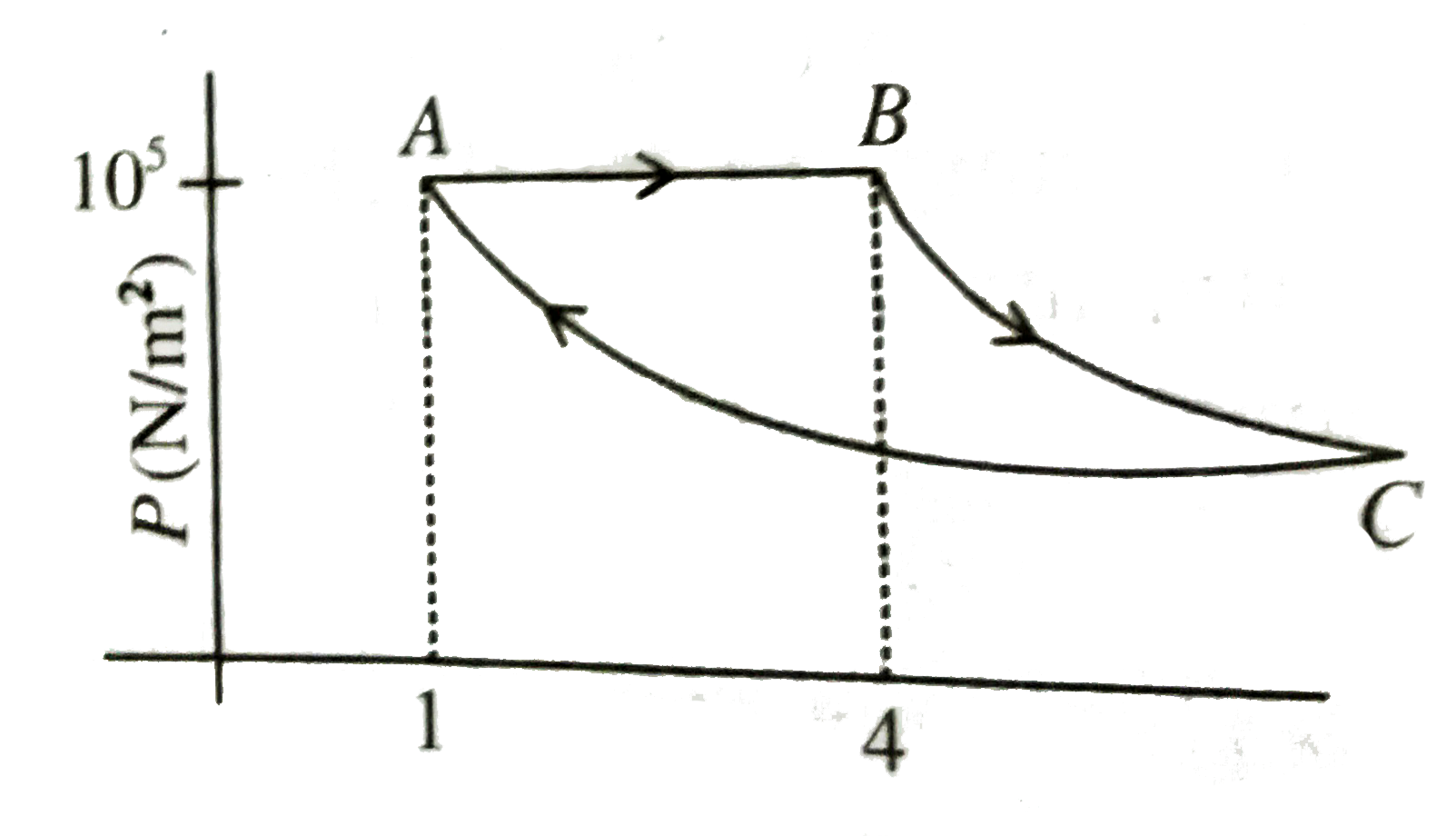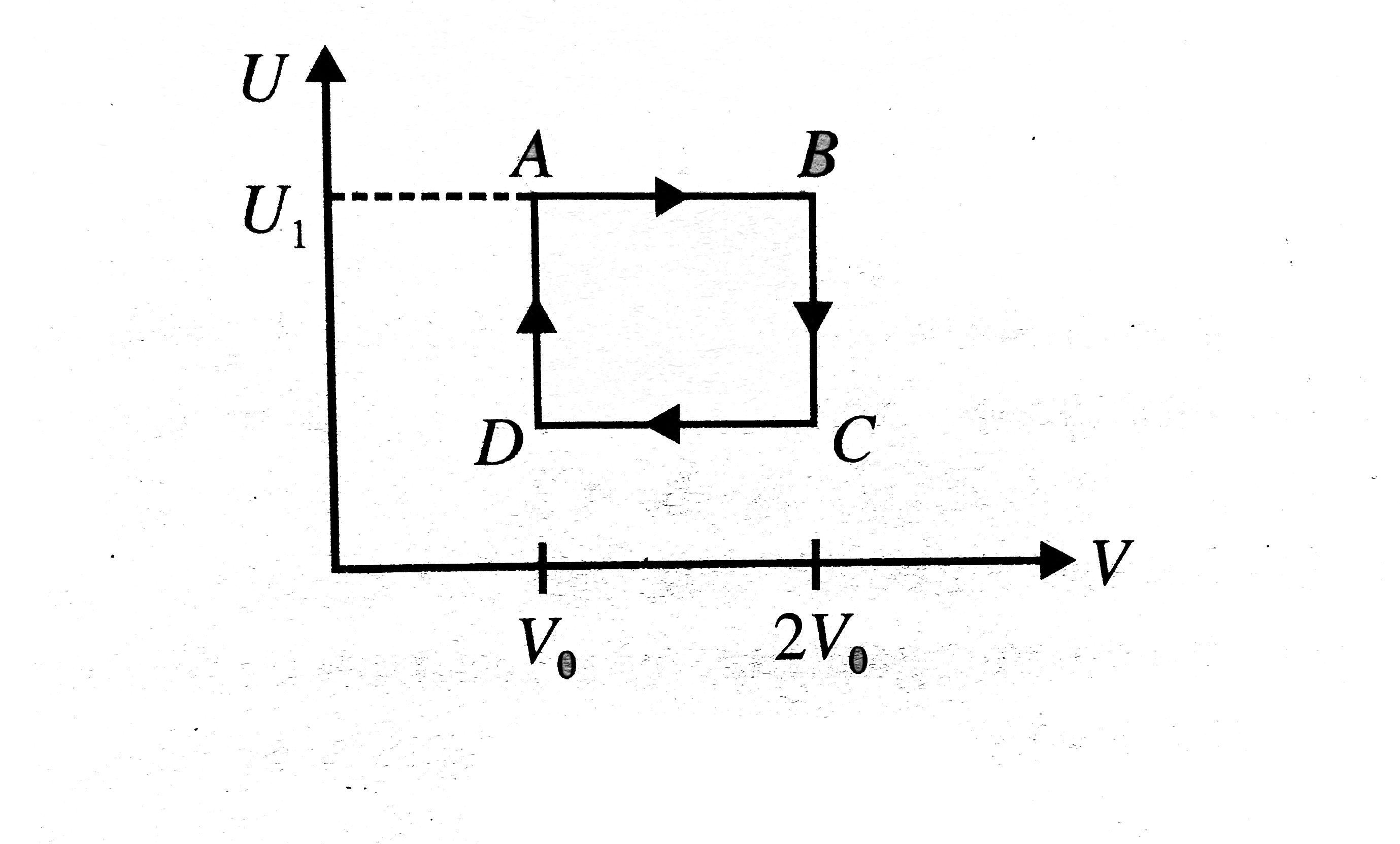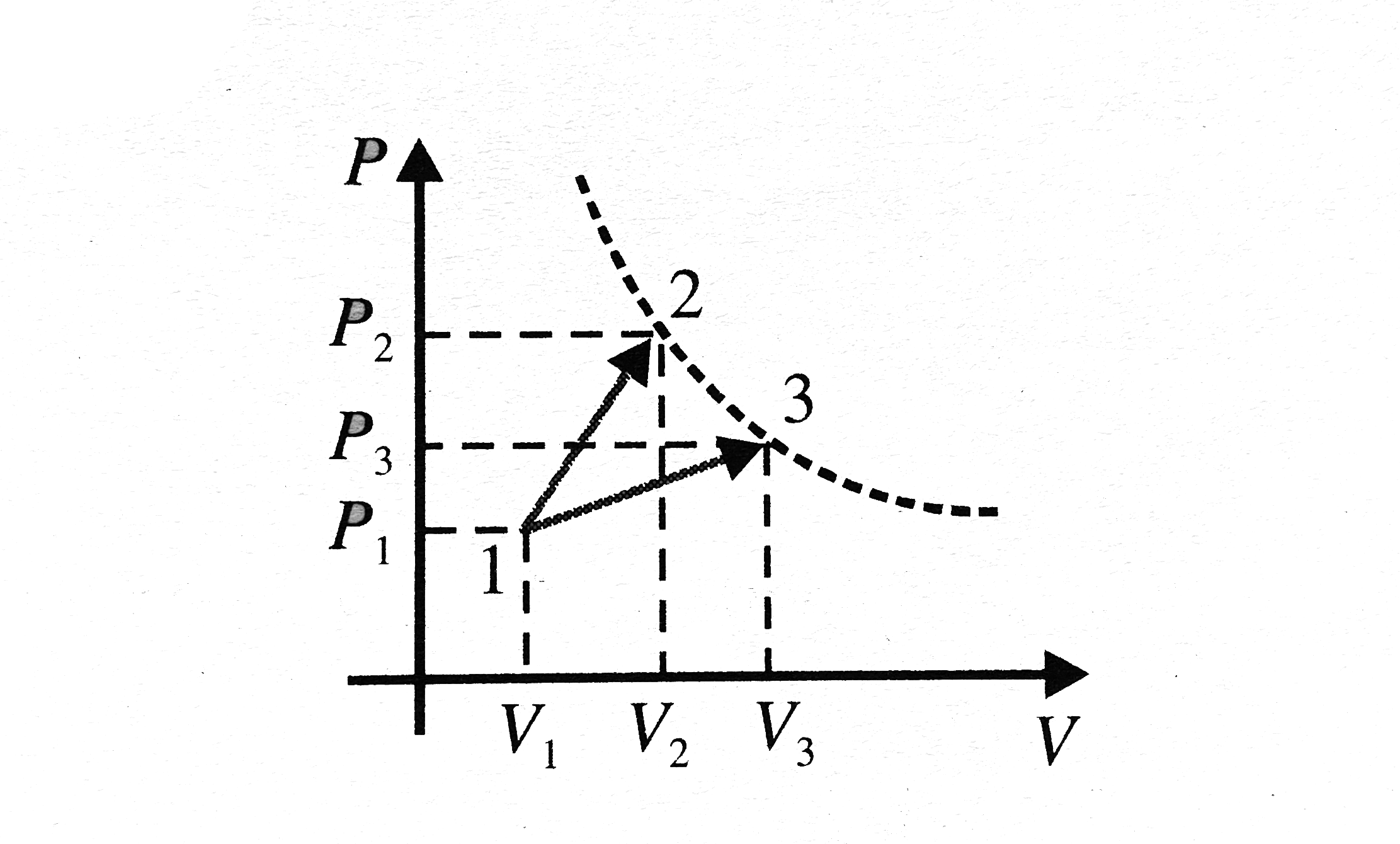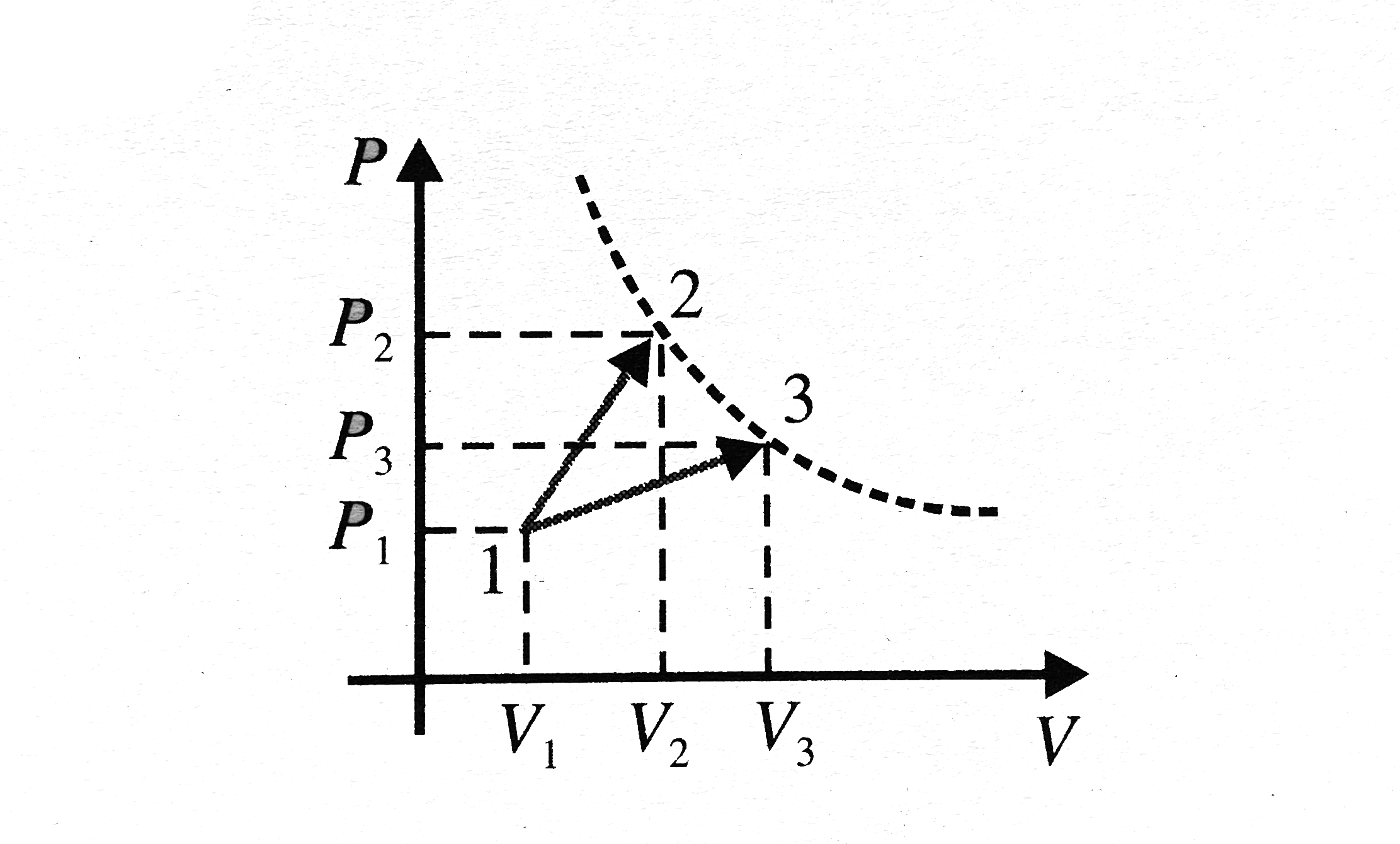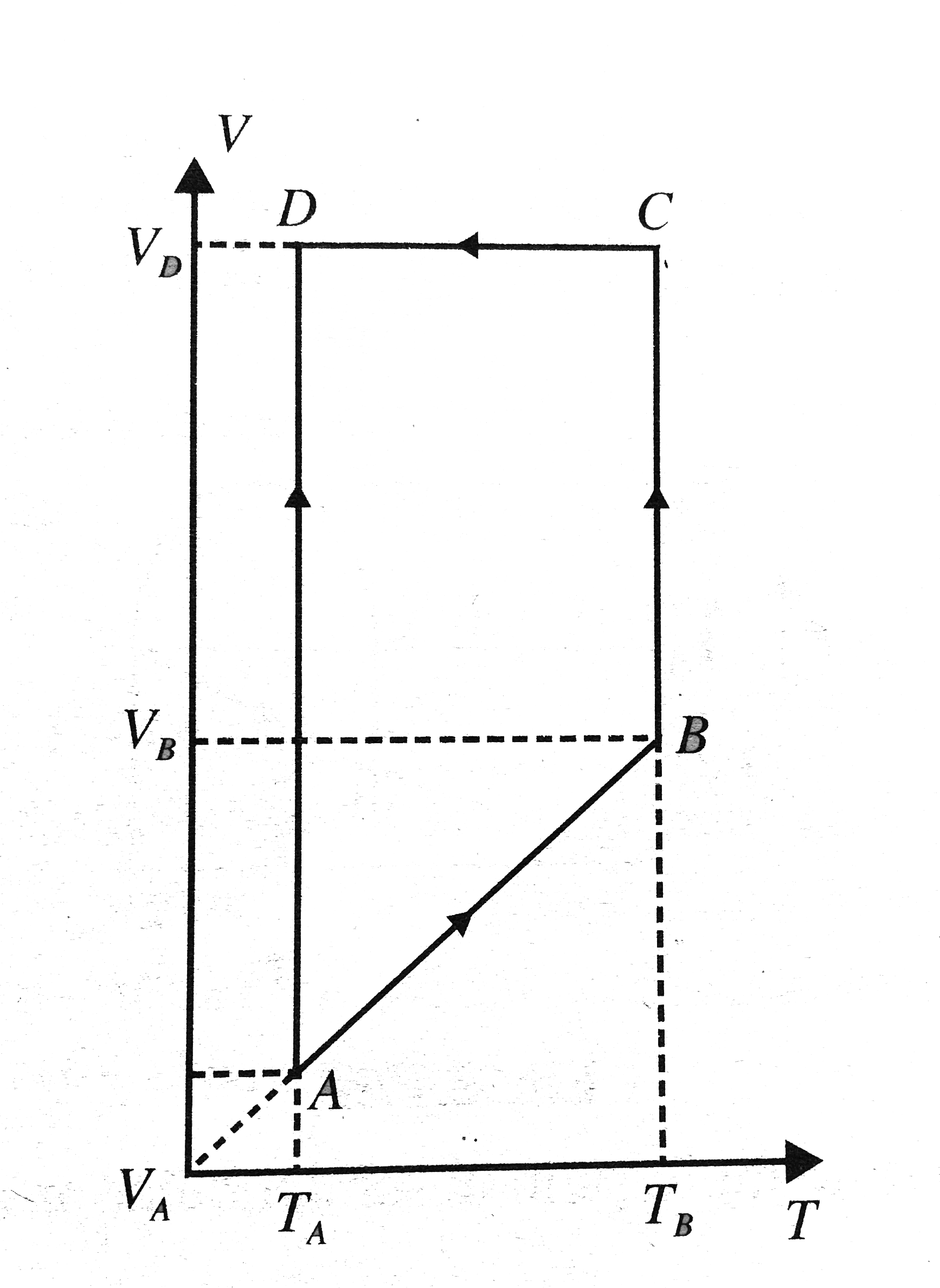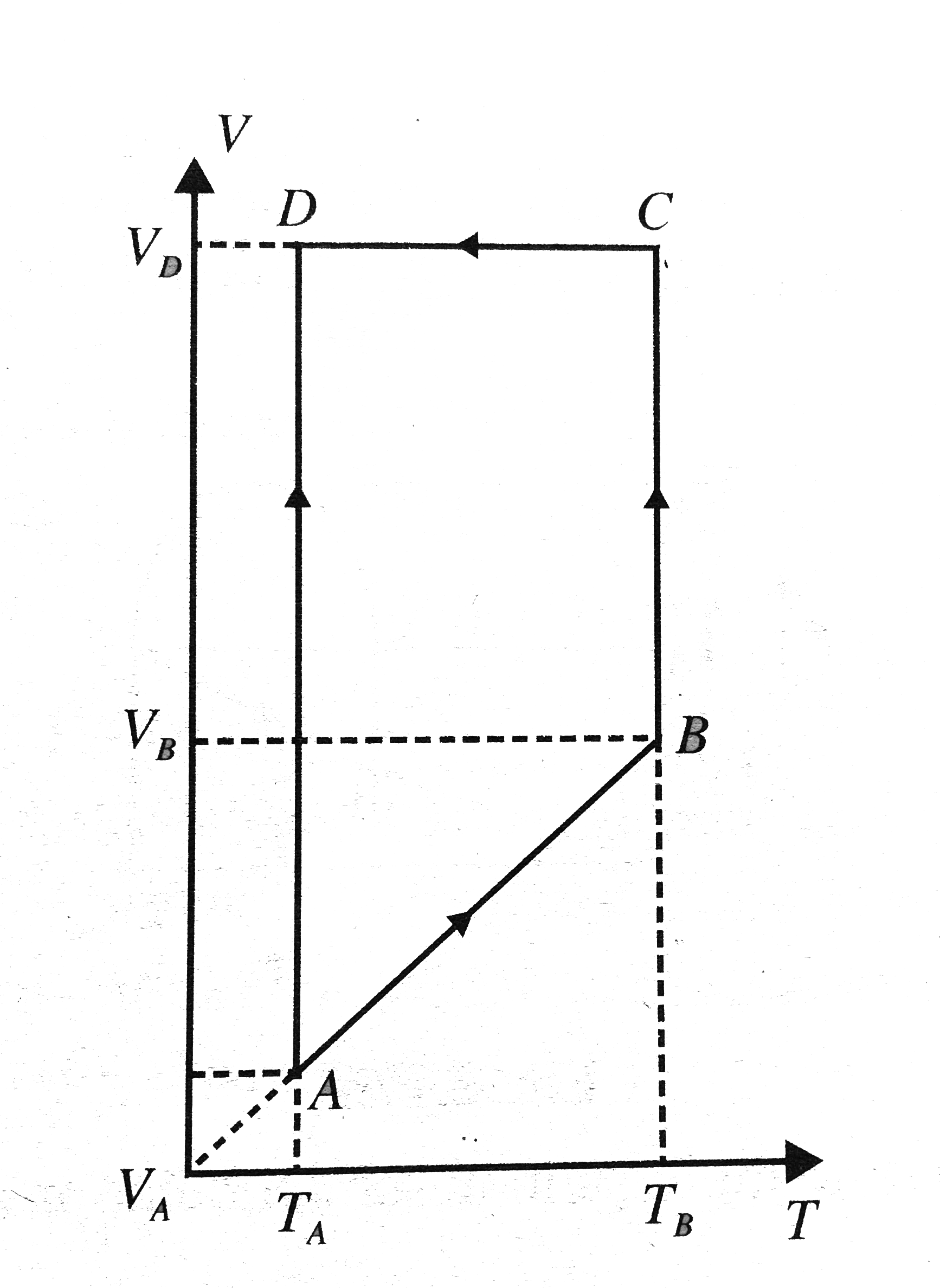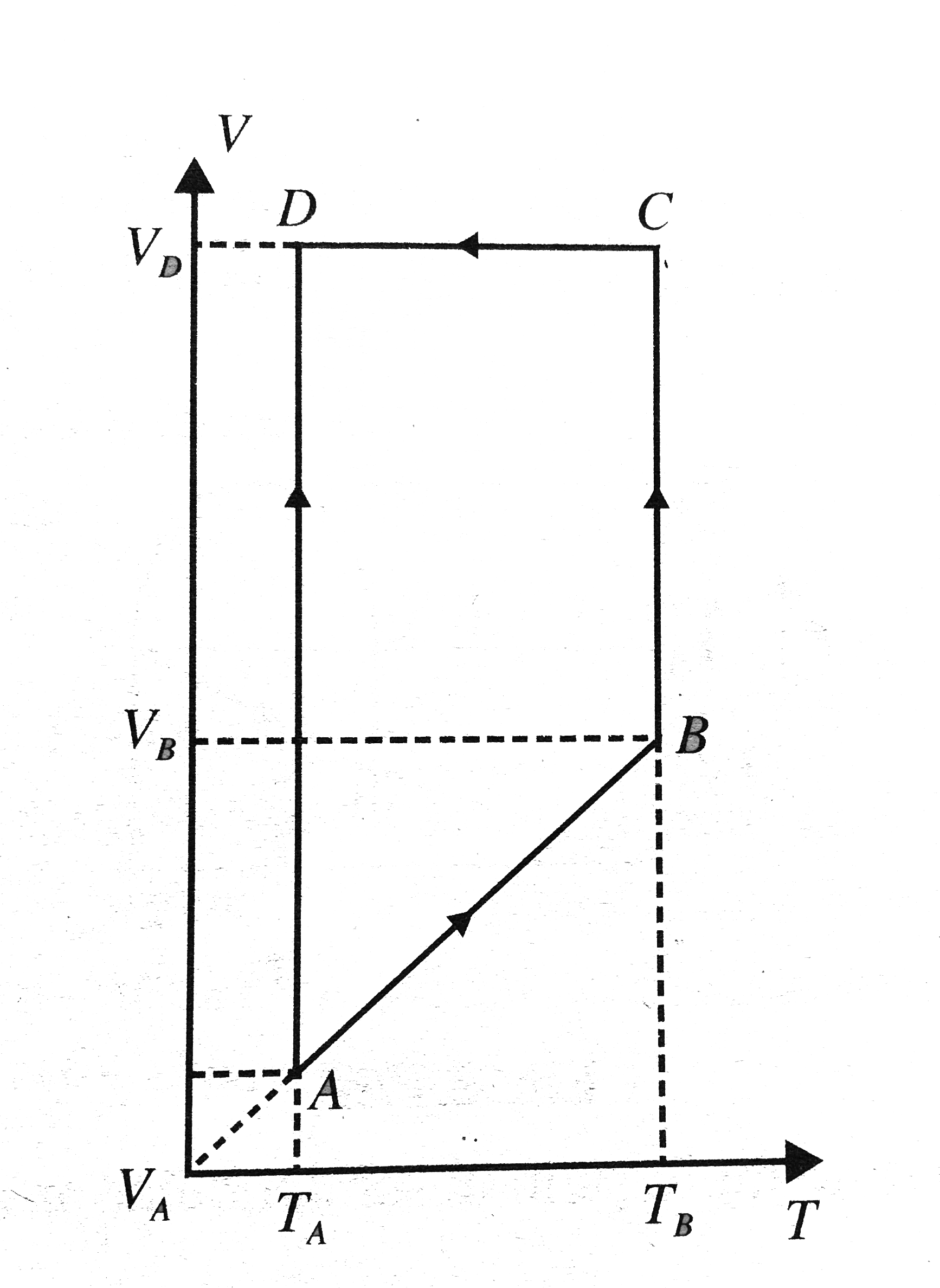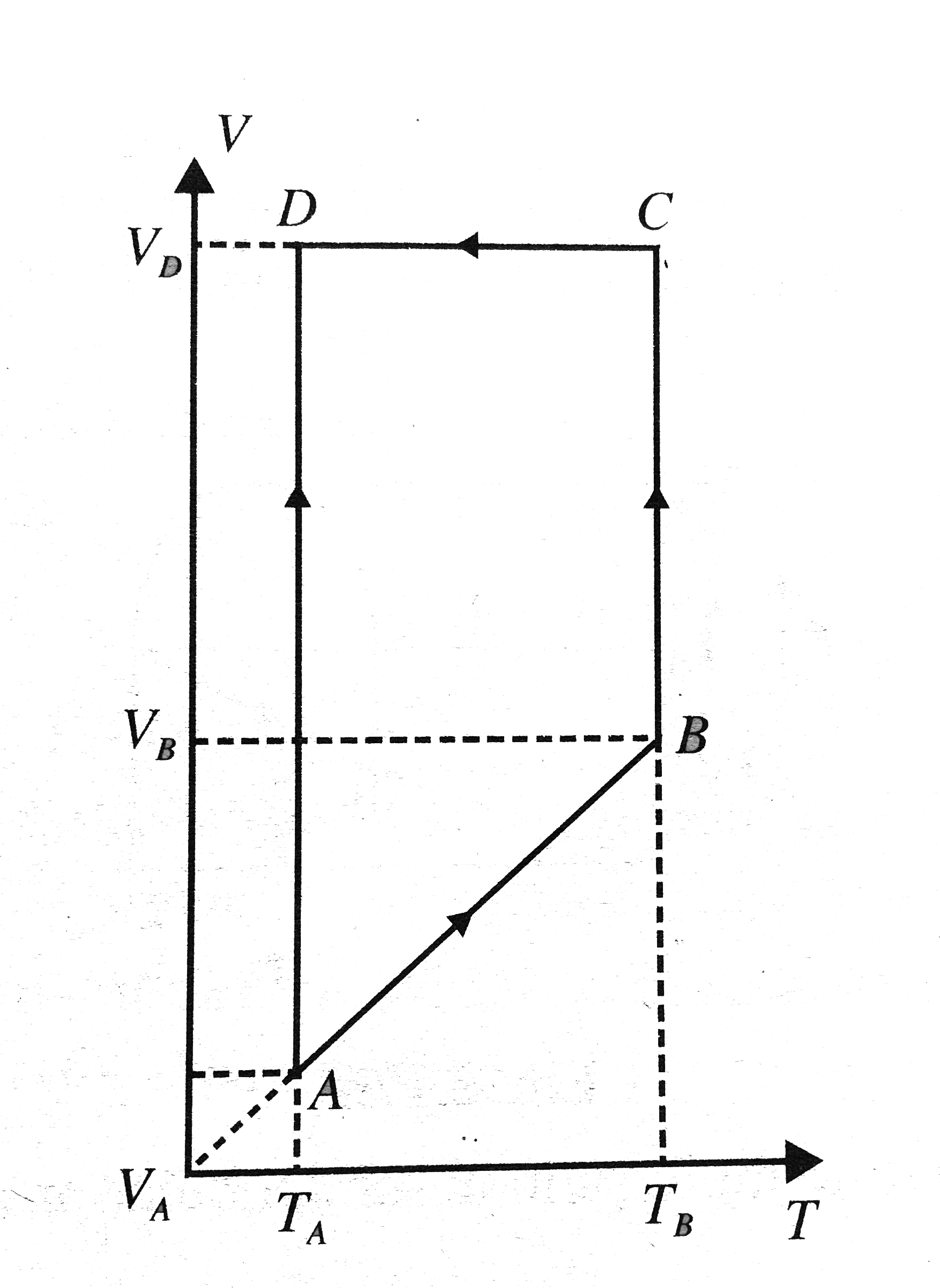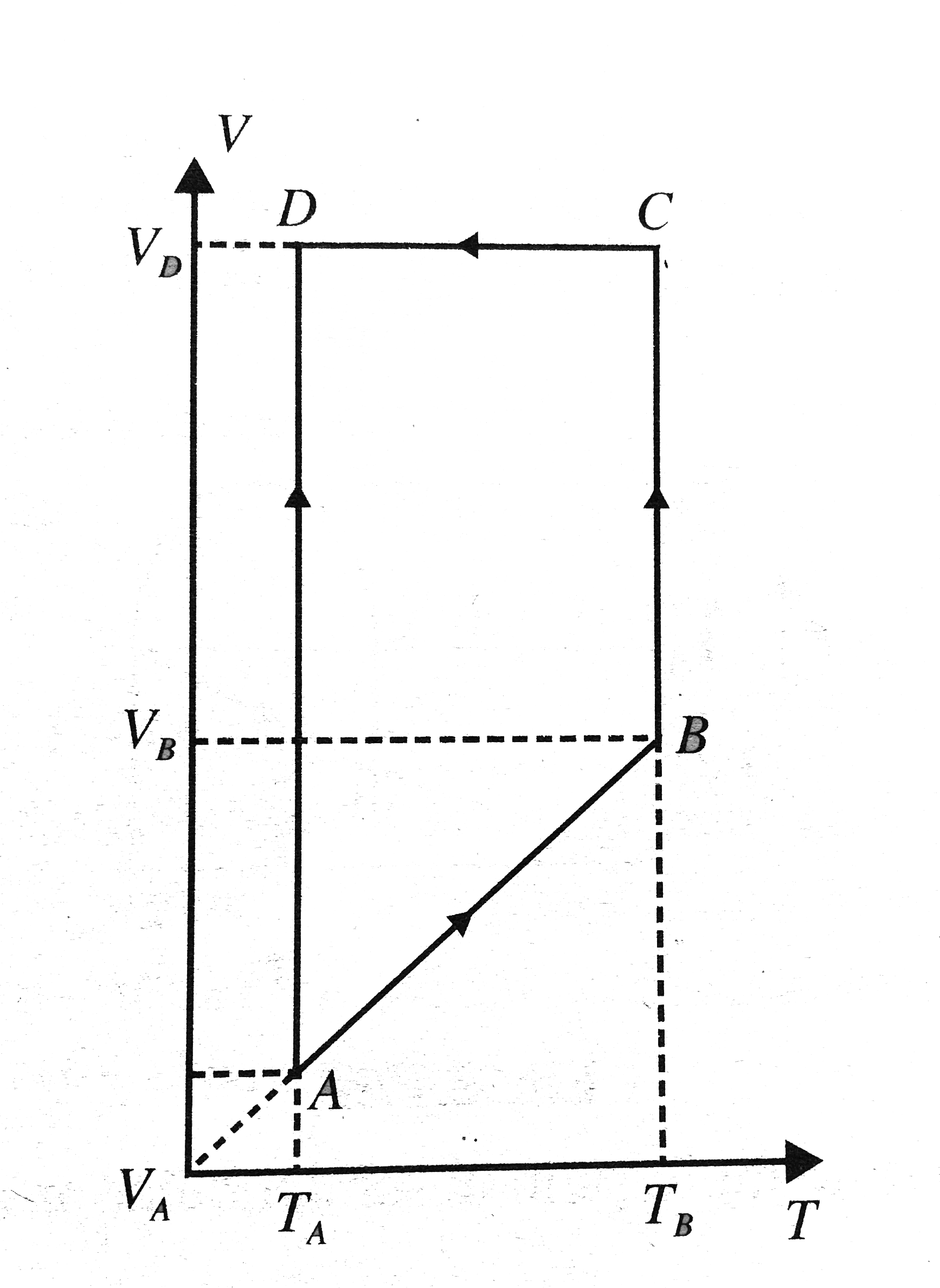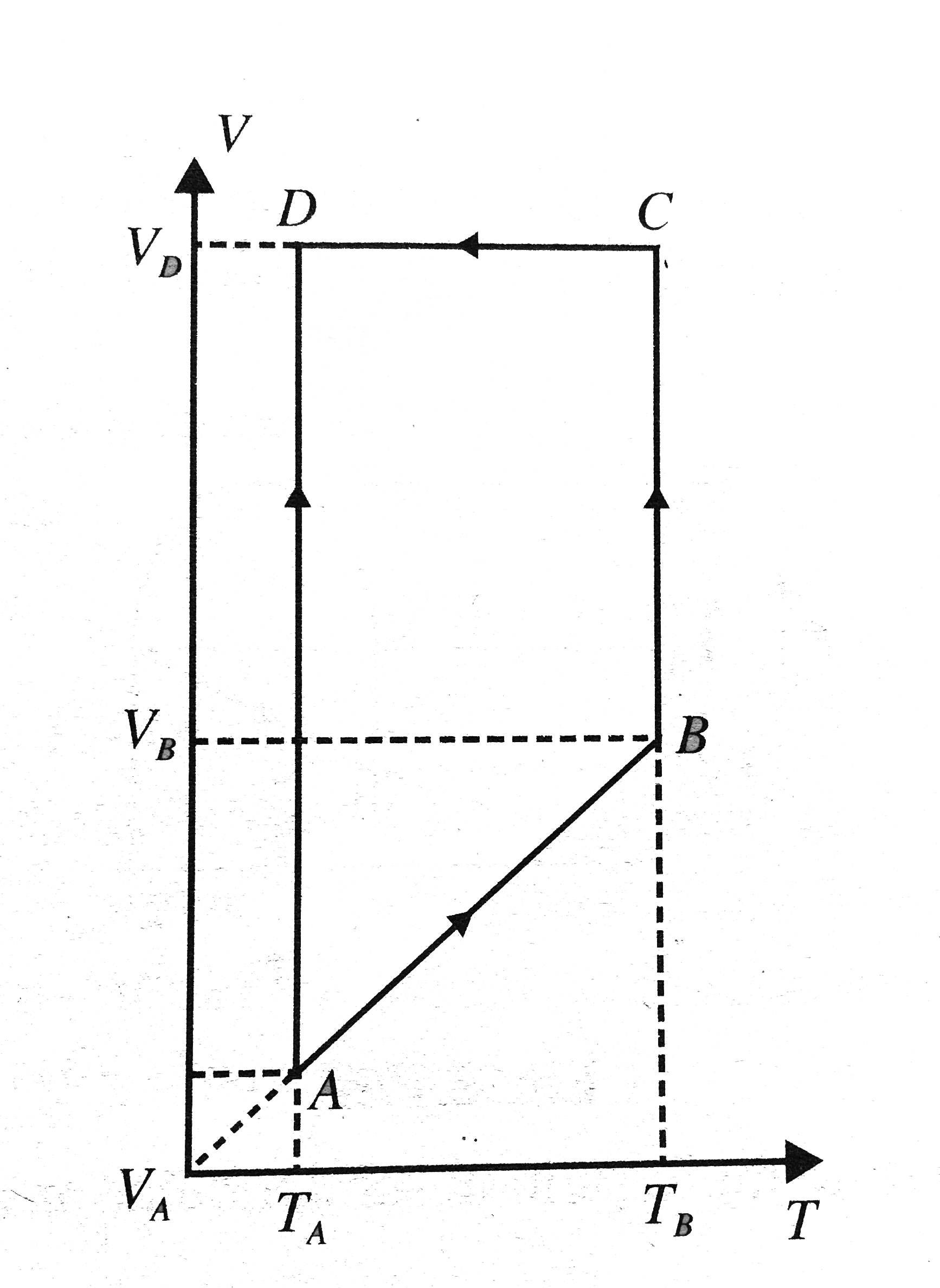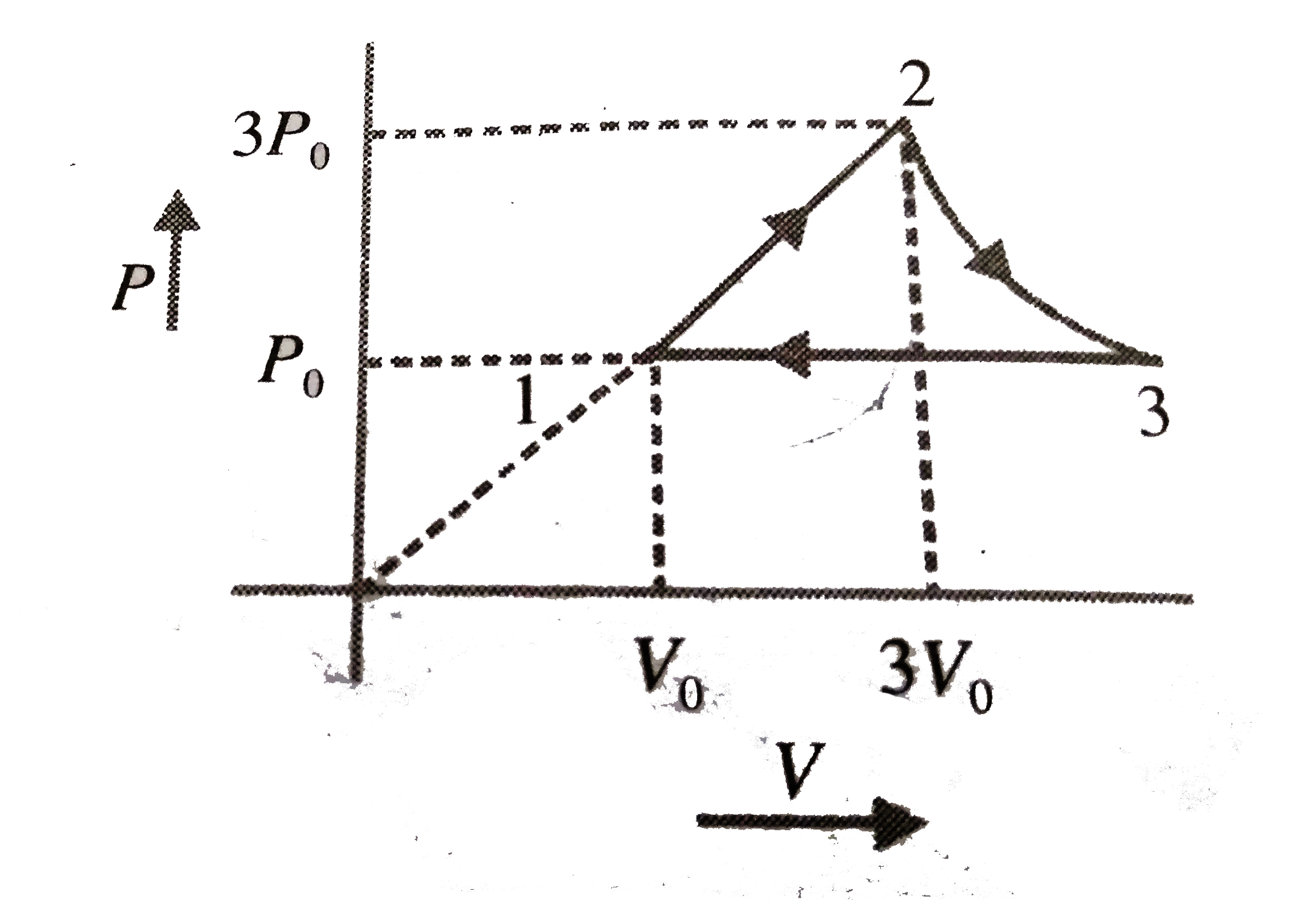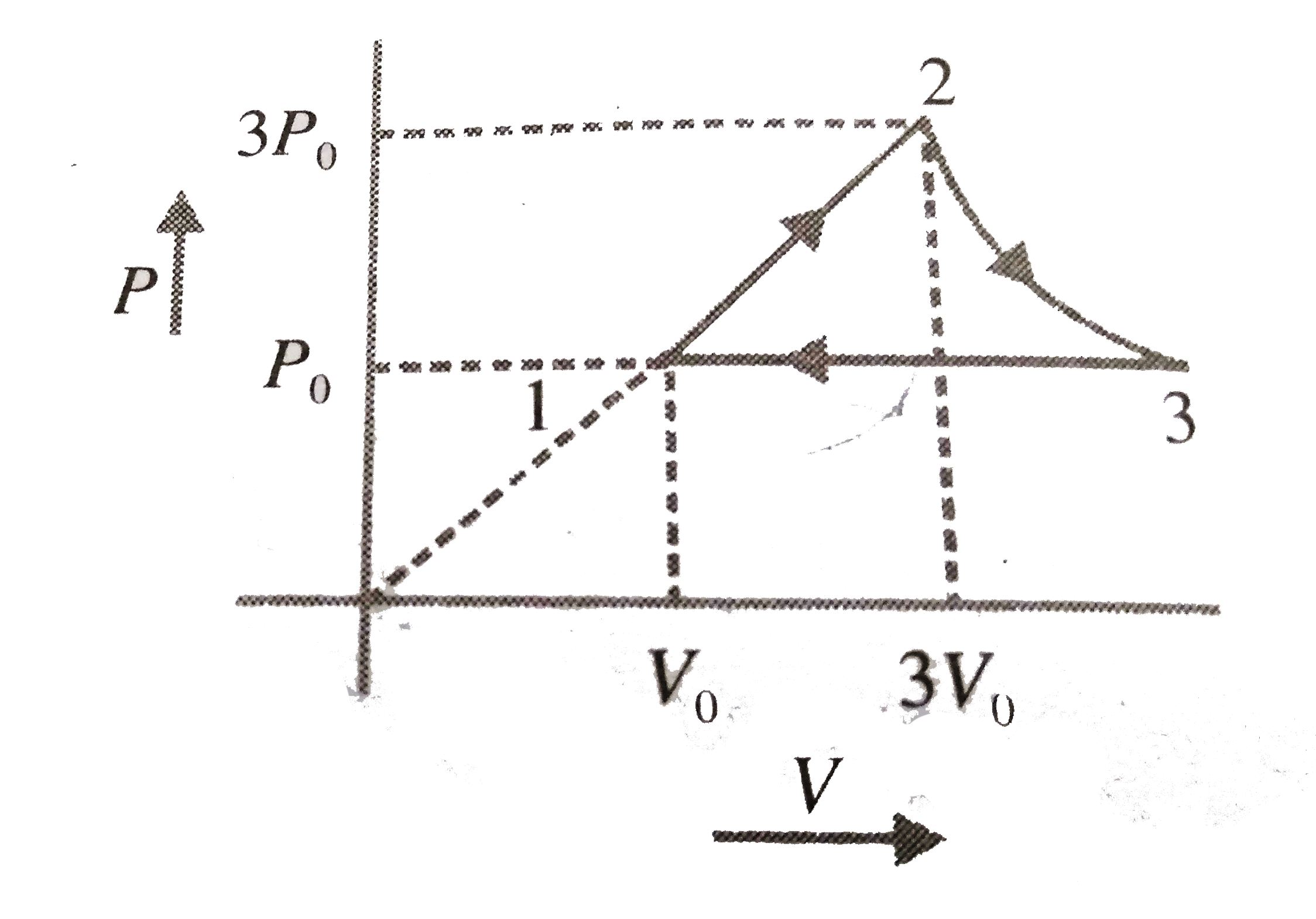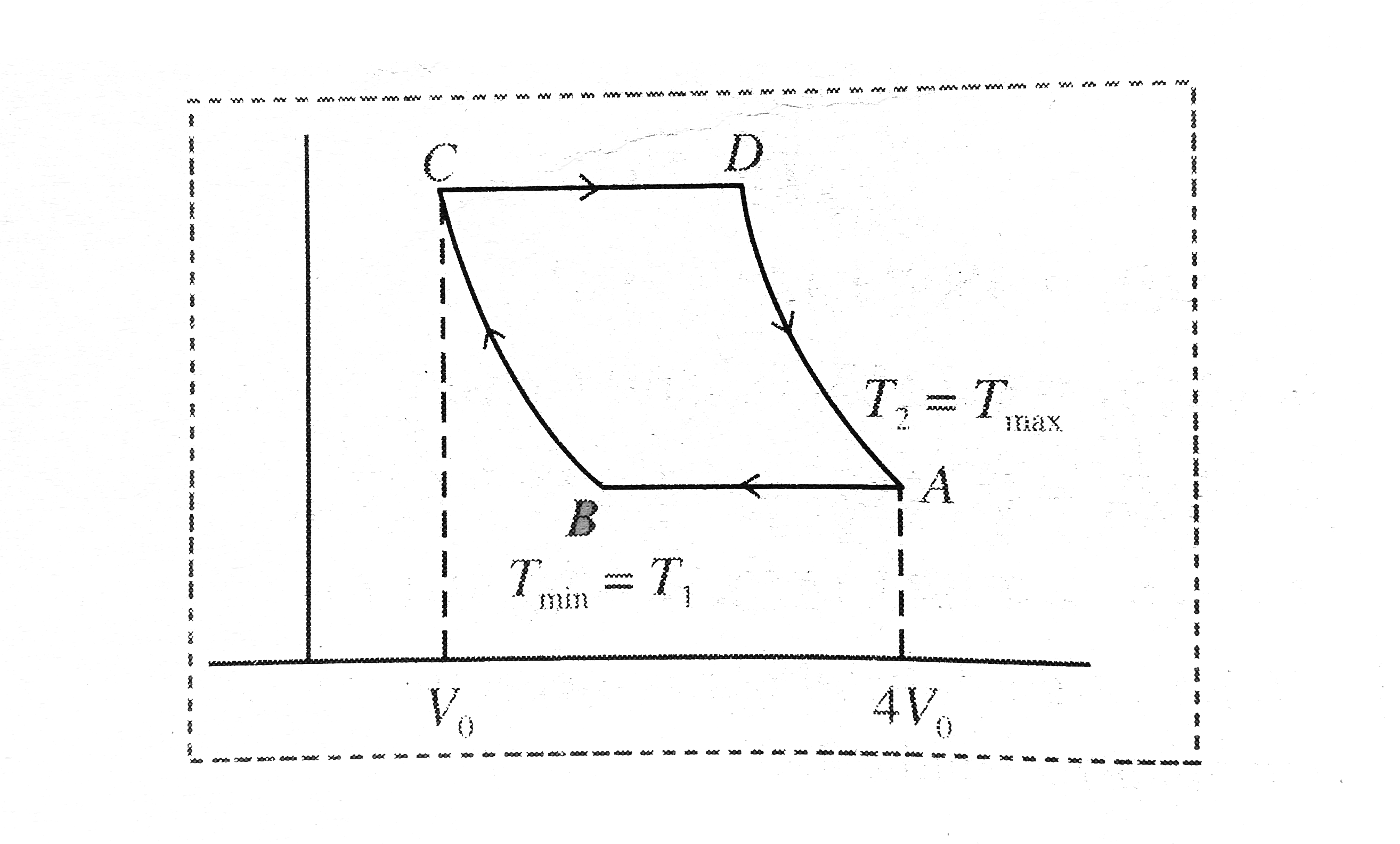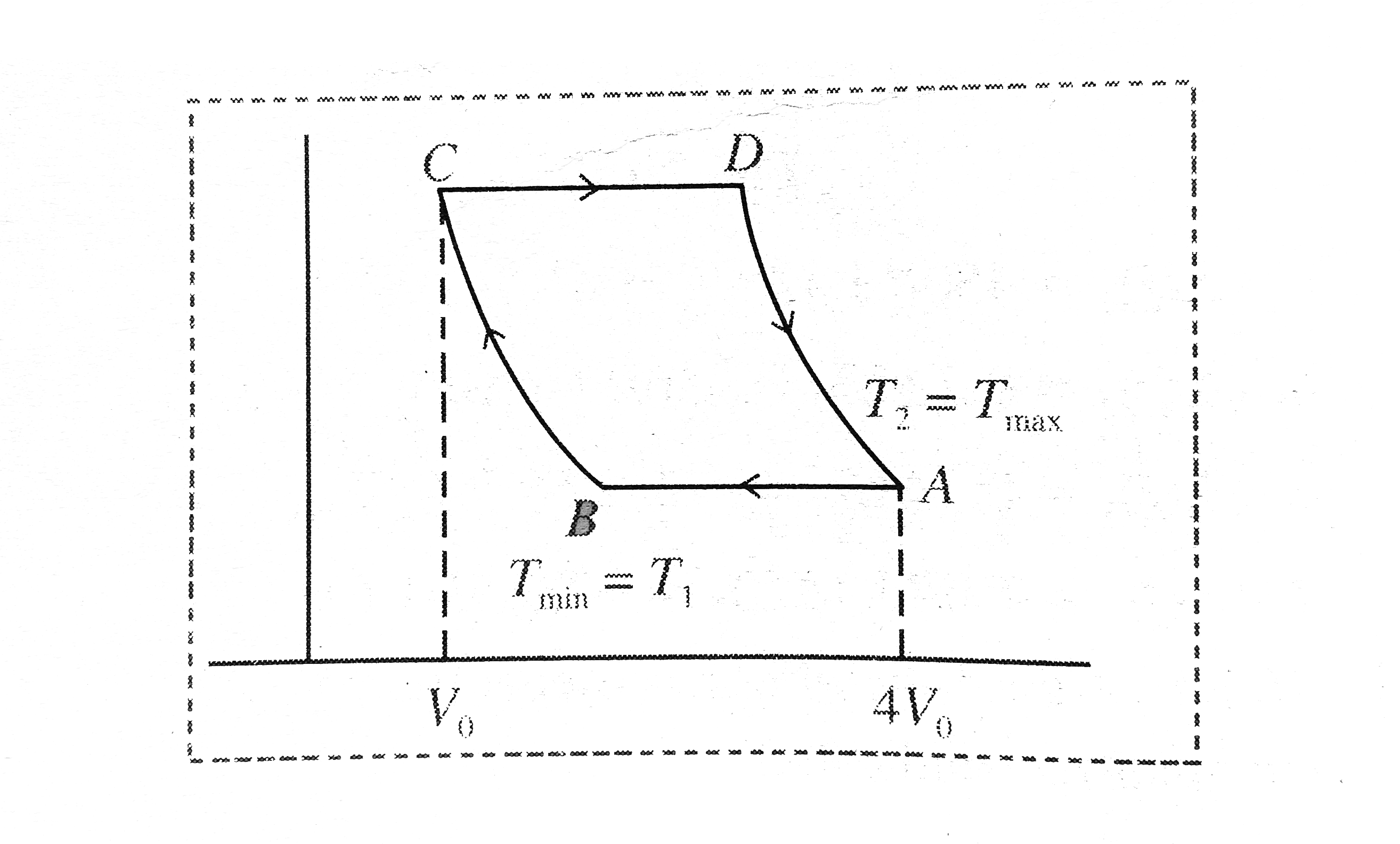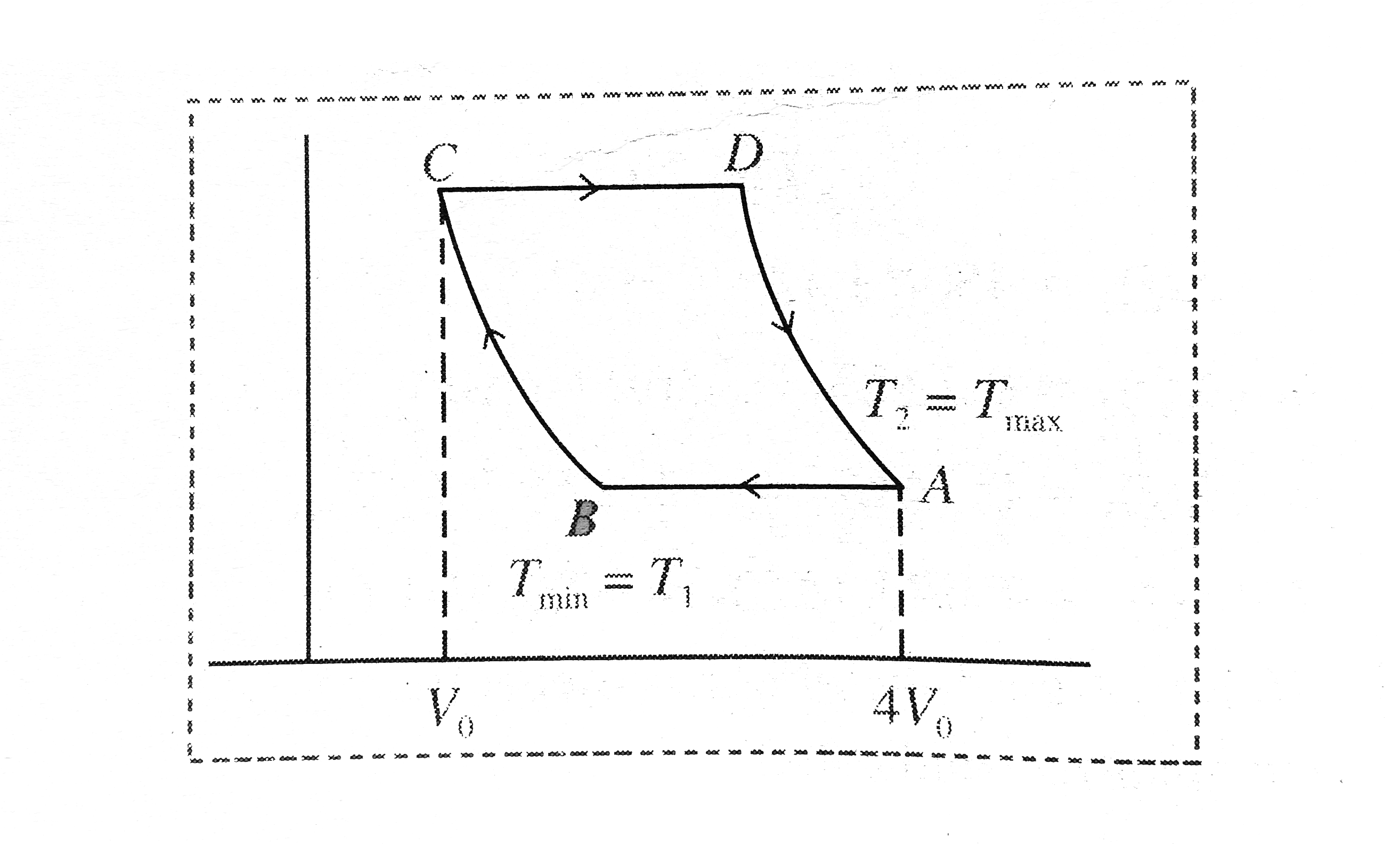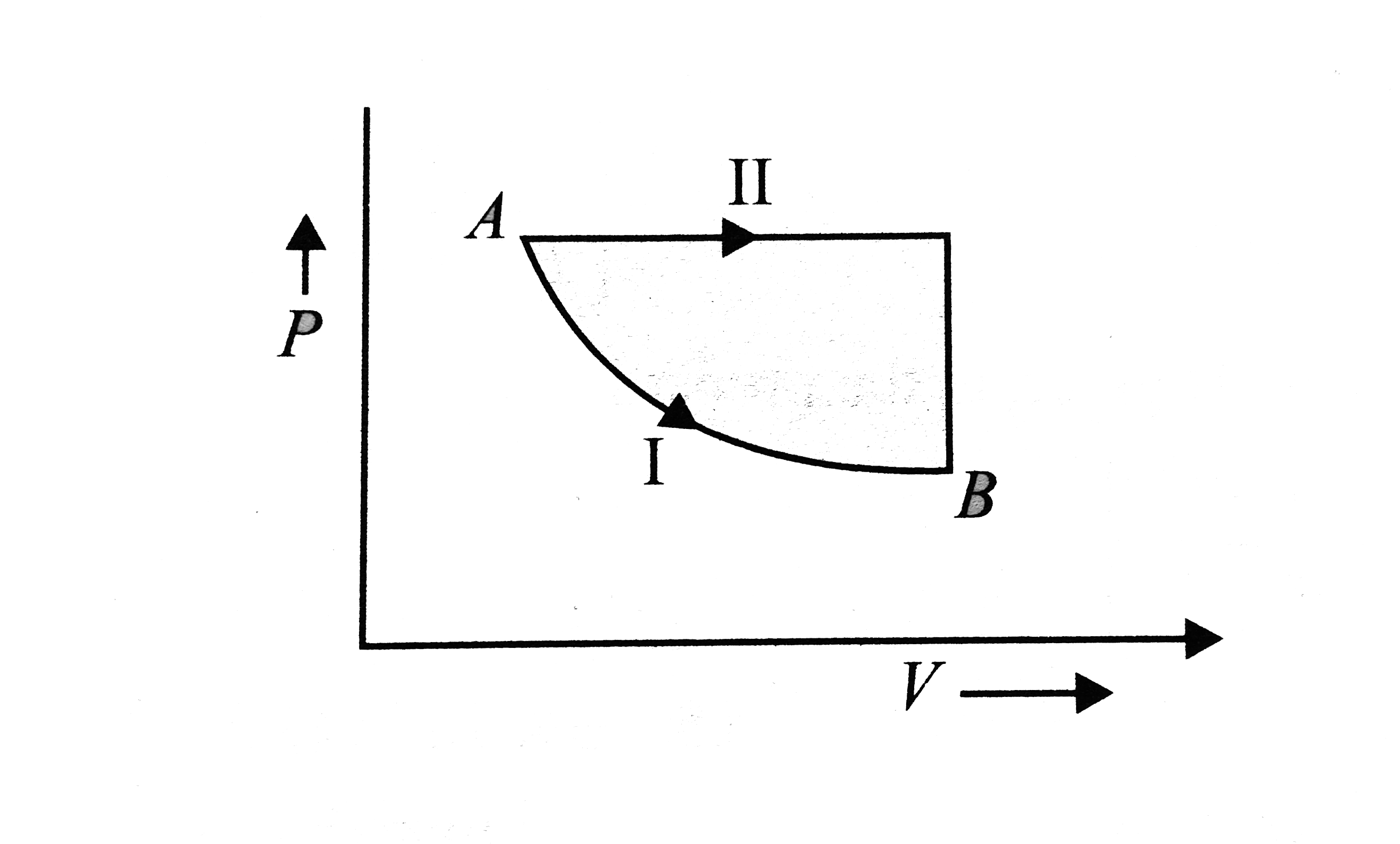Multiple Corrects from CENGAGE PHYSICS (ENGLISH) KINETIC THEORY OF GASES AND FIRST LAW OF THERMODYNAMICS for Class 11
| Class 11 | PHYSICS |
| Chapter | KINETIC THEORY OF GASES AND FIRST LAW OF THERMODYNAMICS |
| CENGAGE PHYSICS (ENGLISH) | Multiple Corrects |
| Medium | English |
| Academic Year | 2023-2024 |
Question 8
In a certain (25)th of the energy of molecules is associated with the ratation of molecules and the rest of it is associated with the motion of the centre of mass.
(a) What is the average translational energy of one such molecule when the temperature id 27∘C ?
(b) How much energy must be supplied to one mole of thsi gas constant volume to raise the temperature by 1∘C ?View SolutionQuestion 17
A closed container of volume 0.02m3contains a mixture of neon and argon gases, at a temperature of 27∘C and pressure of 1×105Nm−2. The total mass of the mixture is 28g. If the molar masses of neon and argon are 20and40gmol−1 respectively, find the masses of the individual gasses in the container assuming them to be ideal (Universal gas constant R=8.314J/mol−K).View SolutionQuestion 32
A cylinder contains 3 moles of oxygen at a temperature of 27∘C. The cylinder is provided with a frictionless piston which maintains a constant pressure of 1 atm on the gas. The gas is heated until its temperature rises to 127∘C.
a. How much work is done by the gas in the process ?
b. What is the change in the internal energy of the gas ?
c. How much heat was supplied to the gas ?
For oxygen CP=7.03calmol−1.∘C−1.View SolutionQuestion 36
A cylindrical vessel of 28 cm diameter contains 20 g of nitrogen compressed by a piston supporting a weight of 75 kg. The temperature of the gas is 17∘C. What work will the gas do if it is heated to a temperature of 250∘C ? What amount of heat should be supplied ? To what distance will the weight be raised? The process should be assumed to be isobaric, the heating of the vessel as well as the external pressure is negligible. View SolutionQuestion 40
On mole of argon expands polytropically, the polytropic constant being 1.5, that is, the process proceeds according to the law pV1.5 = constant. In the process, its temperature change by ΔT=−26K. Find
a. the amount of heat obtained by the gas.
b. the work performed by the gas.View SolutionQuestion 43
A sample of an ideal gas is taken through a cycle as shown in figure. If absorbs 50 J of energy during the process AB, no heat during BC, rejects 70 J during CA. 40 J of work is done on the gas during BC. Internal energy of gas at A is 1500 J, the internal energy at C would be
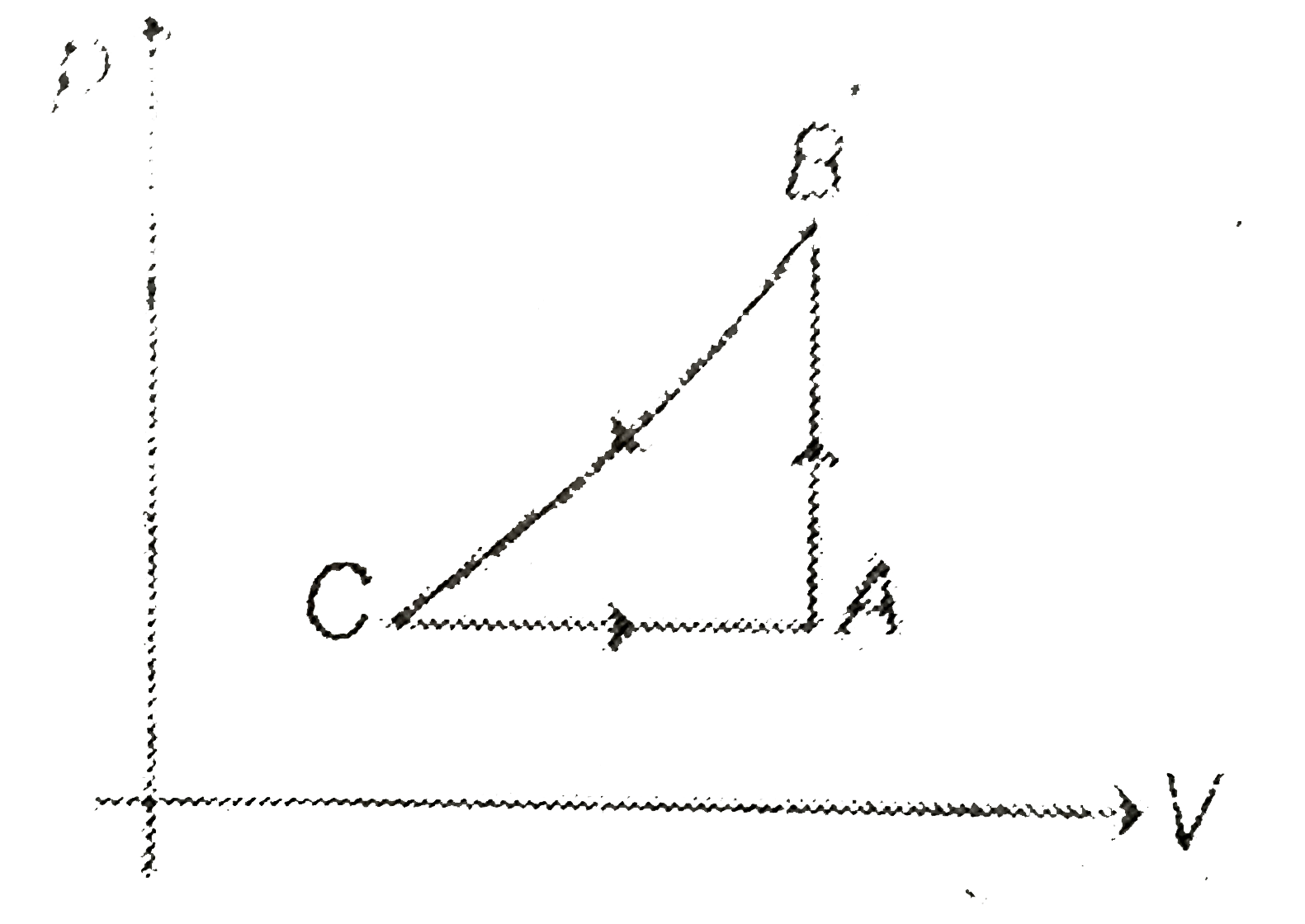 View Solution
View SolutionQuestion 44
The internal energy of a monatomic ideal gas is 1.5 nRT. One mole of helium is kept in a cylinder of cross section 8.5cm2. The cylinder is closed by a light frictionless piston. The gas is heated slowly in a process during which a total of 42J heat is given to the gas. if the temperature rise through 2oC, find the distance moved by the piston. atmoshphere pressure =100 kPa.View SolutionQuestion 48
A non-conducting cylinder having volume 2V0 is partitioned by a fixed non conducting wall in two equal part. Partition is attached with a valve. Right side of the partition is a vacuum and left part is filled with a gas having pressure and temperature P0 and T0 respectively. If valve is opened find the final pressure and temperature of the two parts.
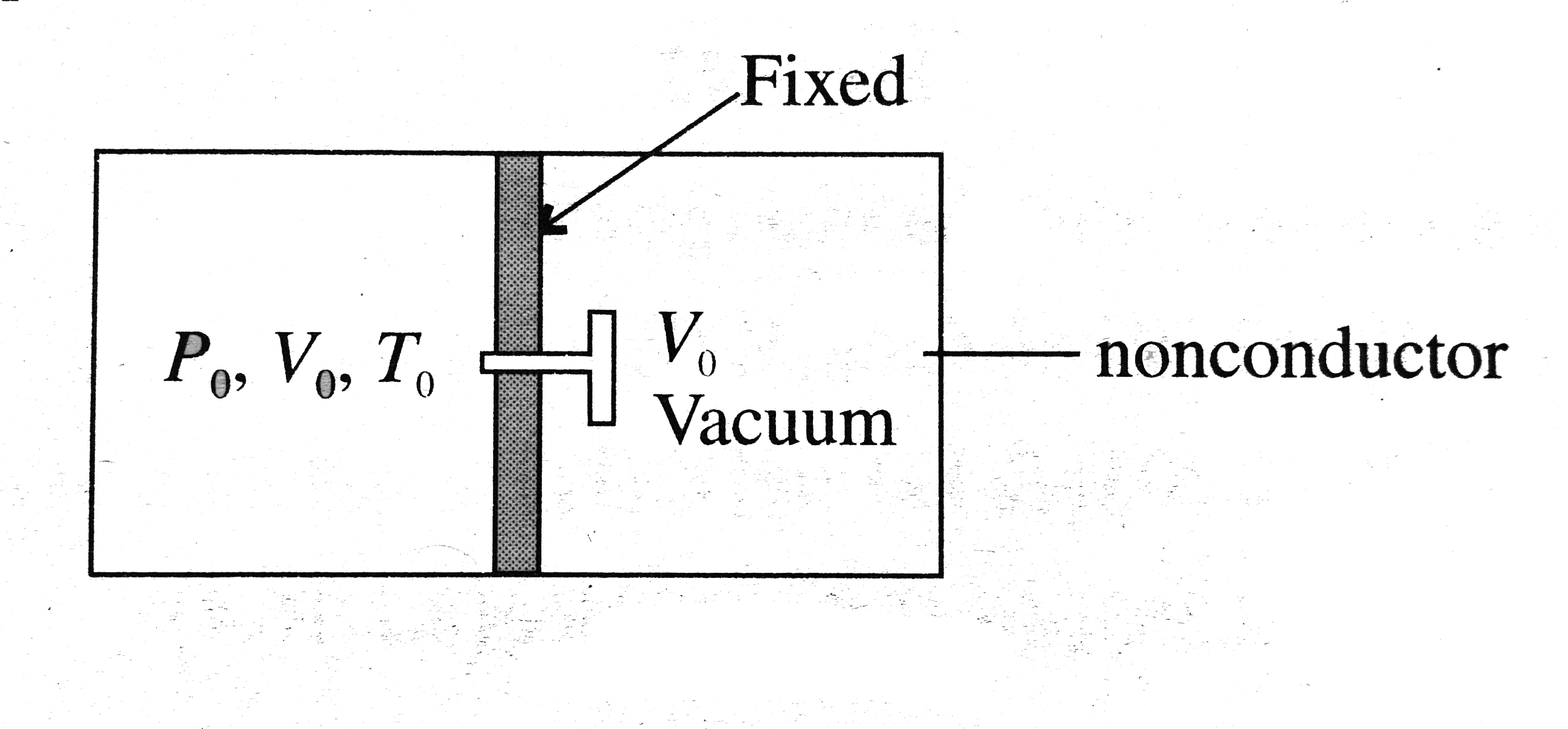 View Solution
View SolutionQuestion 49
Five grams of helium having rms speed of molecules 1000m/s and 24g of oxygen having rms speed of 1000m/s are introduced into a thermally isolated vessel. Find the rms speeds of helium and oxygen individually when thermal equilibrium is attained. Neglect the heat capacity of vessel.View SolutionQuestion 50
Consider a vertical tube open at both ends. The tube consistss of two parts, each of different cross sections and each part having a piston which can move smoothly in respective tubes. The two piston which can move smoothly in respective tube wire. The piston are joined together by an inextensible wire. The combined mass of the two piston is 5kgand area of cross section of the upper piston is 10cm2 greater than that of the lower piston. Amount of gas enclosed by the pistons is 1mol. When the gas is heated slowly, pistons move by 50cm. Find the rise in the temperature of the gas in the form X/RK, where R is universal gas constant. Use g=10m/s2 and outside pressure =105N/m2).
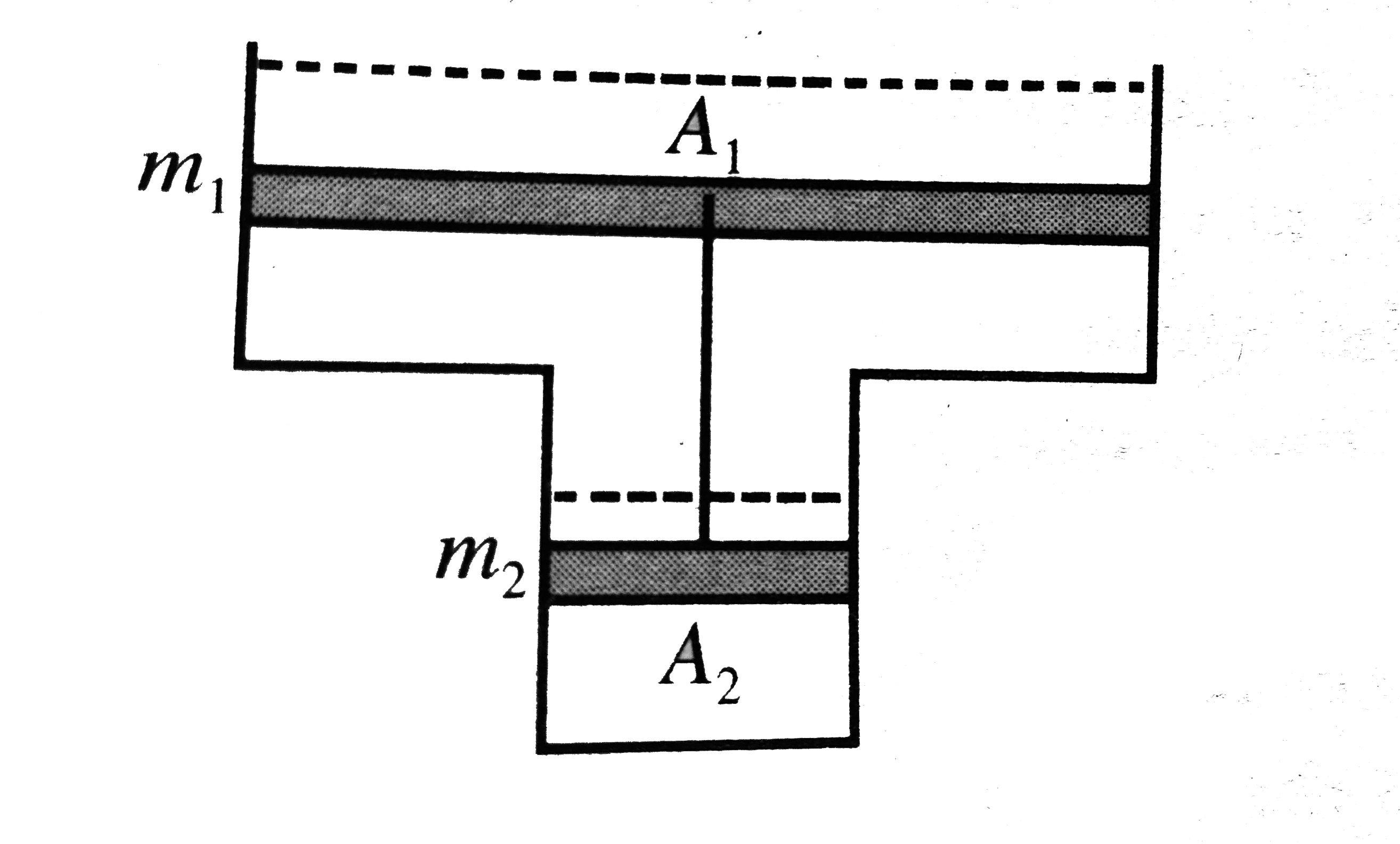 View Solution
View SolutionQuestion 52
Two moles a monatomic gas in state A having critical pressure P0 and temperature 3T0 is taken to a state B having pressure 3P0 and temperature T0/3 by the process of equation P2T = constant. Then state B is taken to state C keeping the volume constant and it comes back to initial state A keeping temperature constant.
a. Plot a P and T graph. (P on the y-axis and T on the x-axis).
Find the net work done and heat supplied to the gas during the complete cycle.View SolutionQuestion 53
A gaseous mixture enclosed in a vessel consists of one gram mole of a gas A with γ=(53) and some amount of gas B with γ=75 at a temperature T.
The gases A and B do not react with each other and are assumed to be ideal. Find the number of gram moles of the gas B if γ for the gaseous mixture is (1913).View SolutionQuestion 56
Air is contained in a piston-cylinder arrangement as shown in Fig. with a cross-sectional area of 4cm2 and an initial volume of 20cm3. The air is initially at a pressure of 1 atm and temperature of 20∘C. The piston is connected to a spring whose spring constant is k=104N/m, and the spring is initially underformed. How much heat must be added to the air inside cylinder to increase the pressure to 3 atm (for air, CV=718J/kg.∘C, molecular of air 28.97)?
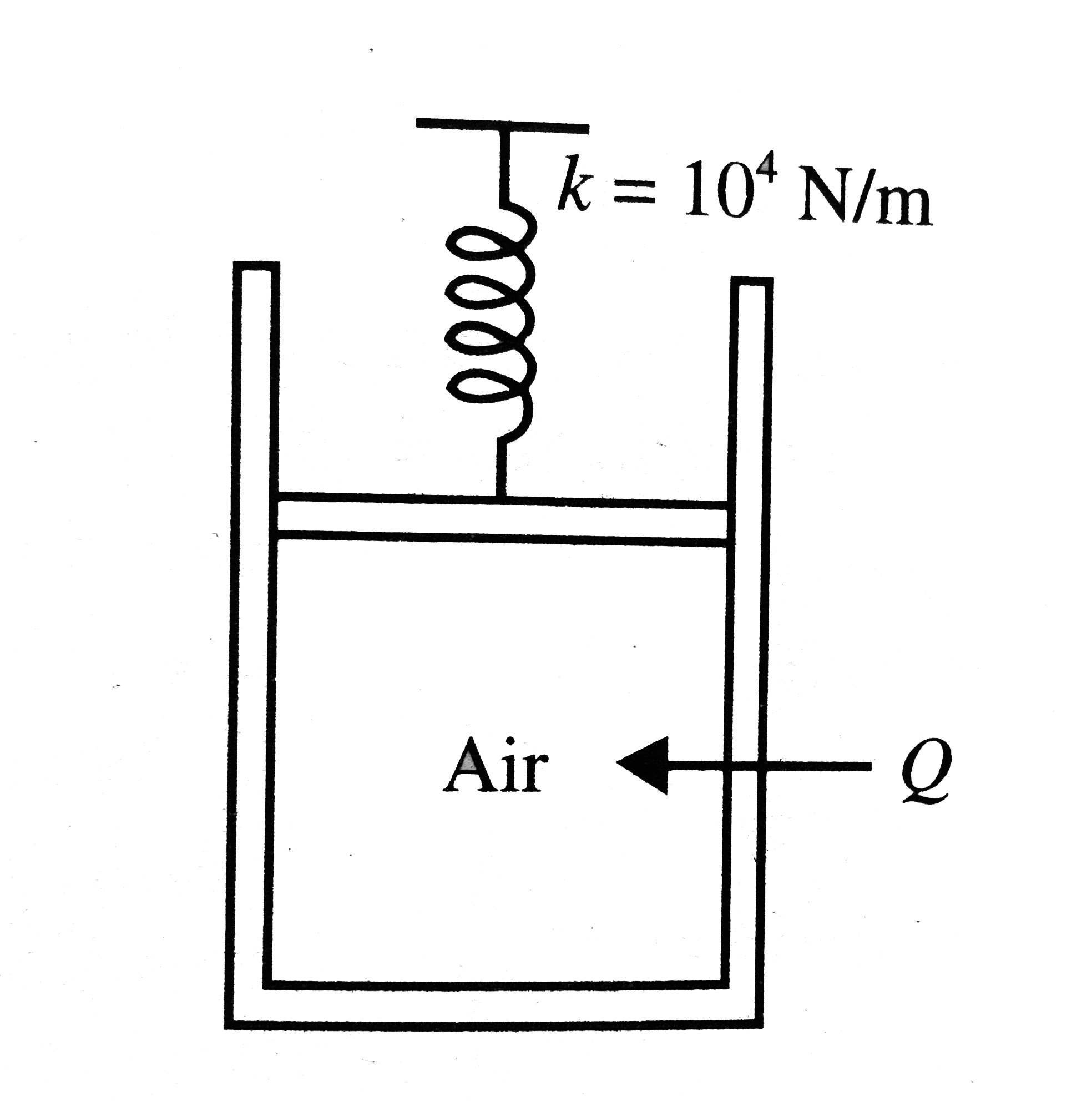 View Solution
View SolutionQuestion 59
One mole of a gas is carried through the cycle shown in Fig. The gas expands at constant temperature T from volume V to 2V. It is them compressed to the initial volume at constant pressure and is finally brought back to its original state by heating at constant volume. Calculate the work done by the gas in complete cycle.
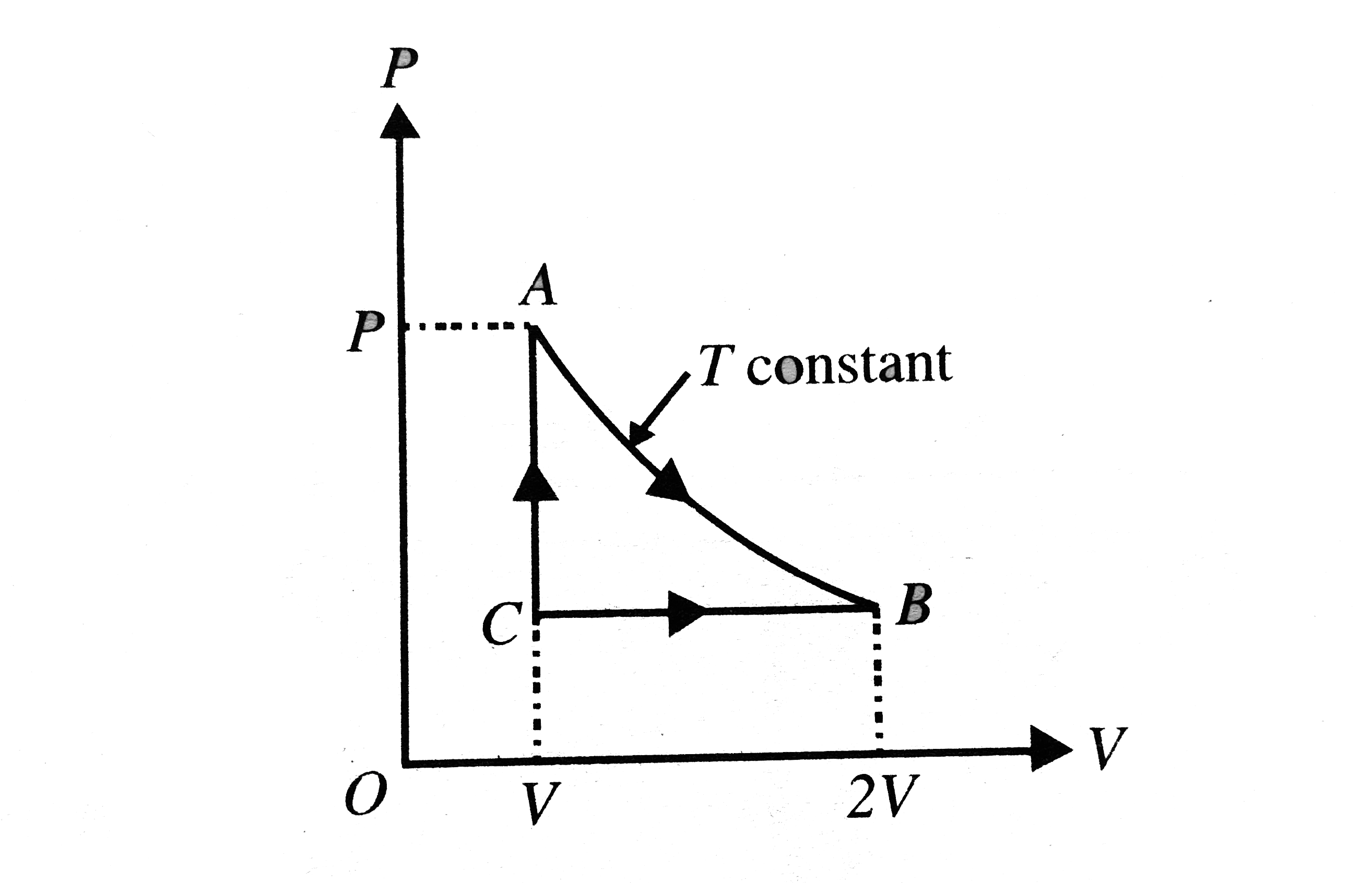 View Solution
View SolutionQuestion 61
Figure shows an adiabatic cylindrical tube of volume (V0) divided in two parts by a frictionless adiabatic separator . Initially, the separator is kept in the middle, an ideal gas at pressure (P1) and the temperatures (T1) is injected into the left part and the another ideal gas at pressures (P2) and temperature (T2) is injected into the right part. (CpCv=γ) is the same for both the gases. The separator is slid slowly and is released at a position where it can stay in equilibrium. Find
(a) the volumes of the parts,
(b) the heat given to the gas in the left part and
(c) the final common pressure of the gases.
 View Solution
View SolutionQuestion 62
Fig. shows a horzontal cylindrical container of length 30cm, which is partitioned by a tight-fiting separator. The separator is diathermic but conductws heat very slowly. Initially the separator is the state shown in the figure. The temperature of left part of cylinder is 100K and that on right part is 400K. Initially the separator is in equilibrium. As heat is conducted from right to left part, of separator after a long when gases on the two displacement of separator after a long when gases on the two parts of cylinder are in thermal equilibrium.
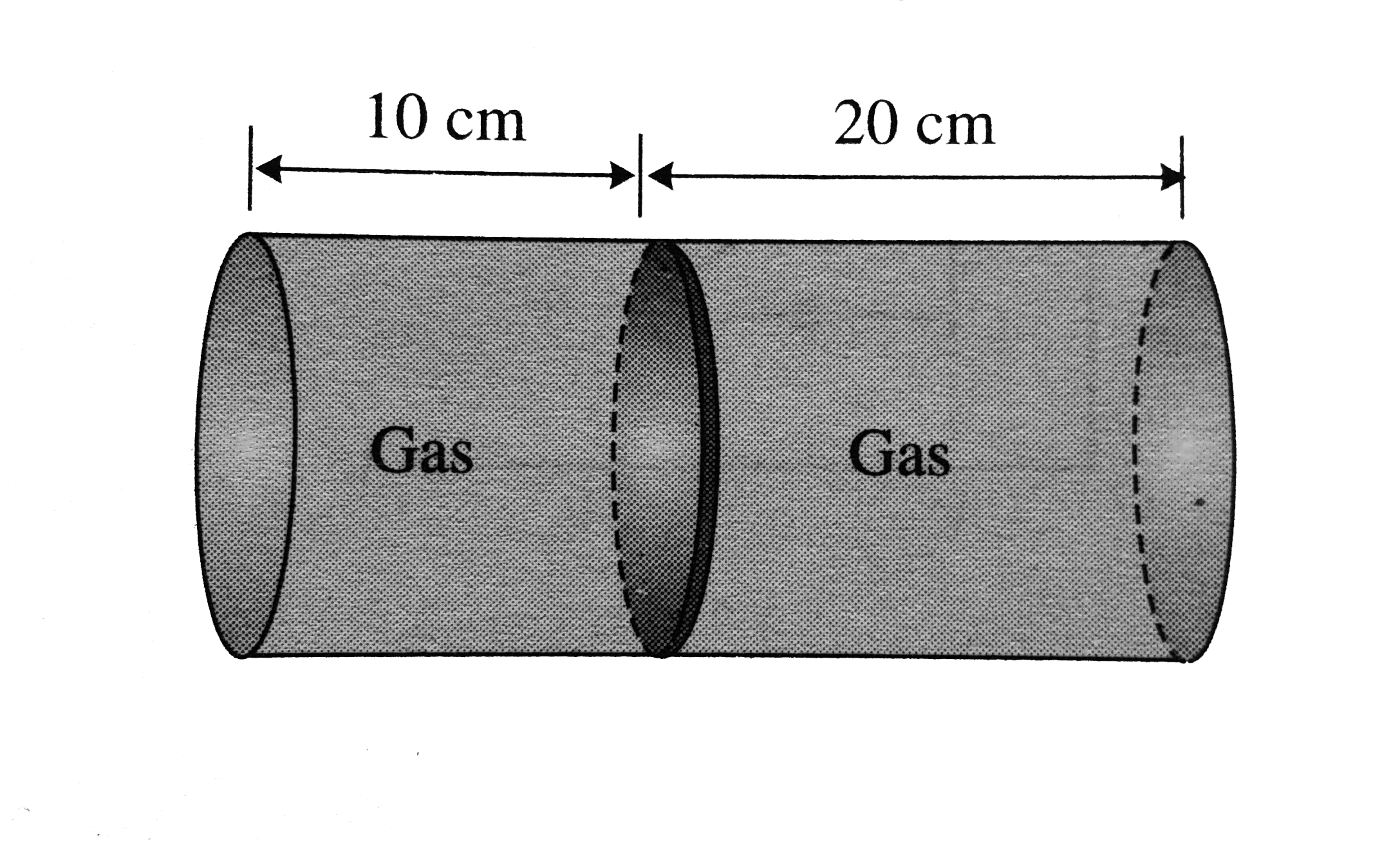 View Solution
View SolutionQuestion 63
As adiabatic vessel contains n1=3 mole of diatomic gas. Moment of inertia of each molecule is I=2.76×10−46kgm2 and root-mean-square angular velocity is ω0=5×1012rad/s. Another adiabatic vessel contains n2=5 mole of a monatomic gas at a temperature 470K. Assume gases to be ideal, calculate root-mean-square angular velocity of diatomic molecules when the two vessels are connected by a thin tube of negligible volume. Boltzmann constant k=1.38×10−23J/:molecule.View SolutionQuestion 67
An ideal gas has a volume 0.3m3 at 150kPa. It is confined by a spring-loaded piston in a vertical cylinder. Initially, the spring is in relaxed state. If the gas is heated to a final state of 0.5m3 and pressure 600kPa find the work done on the spring (atmospheric pressure, P0=1×105N/m2).
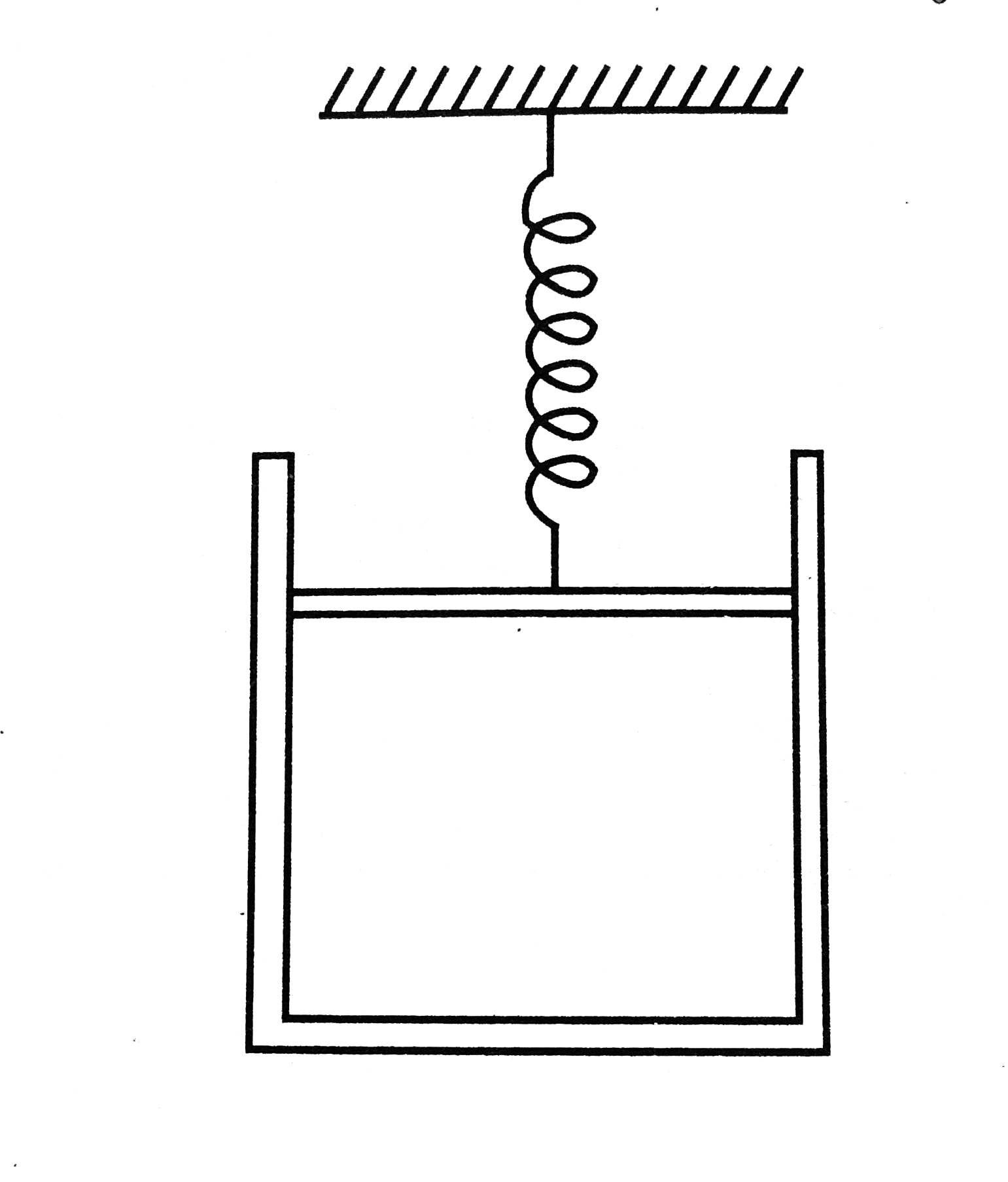 View Solution
View SolutionQuestion 70
One mole of a gas is enclosed in a cylinde in a cyclinder and occupies a volume of 1.5L at a pressure 1.5 atm. It is subjected to strong heating due to which temperature of the gas increase according to the relation T=αV2, where α is a positive constant and V is volume of the gas.
a. Find the work done by air in increasing the volume of gas to 9L.
b. Draw the P−V diagram of the process.
c. Determine the heat supplied to the gas (assuming γ=1.5).View SolutionQuestion 78
An ideal monatomic gas is confined in a cylinder by a spring-loaded piston of cross 8×10−3. Initially, the gas is at 300 K and occupies a volume of 2.4×10−3m3 and the spring is in its relaxed (unstretched, uncompressed) state Fig. The gas is heated by a small electric heater until the piston moves out slowly by 0.1 m. Calculate the final temperature of the gas and the heat supplied (in joule) by the heater. The force constant of the spring is 8000 N/m, atmospheric pressure 1×105N/m2. The cylinder and the piston are thermally insulated. The piston is massless and there is no friction between the piston and the cylinder. Neglect heat loss through the lead wires of the heart. The heat capacity of the heater coil is negligible. Assume the spring to be massless.
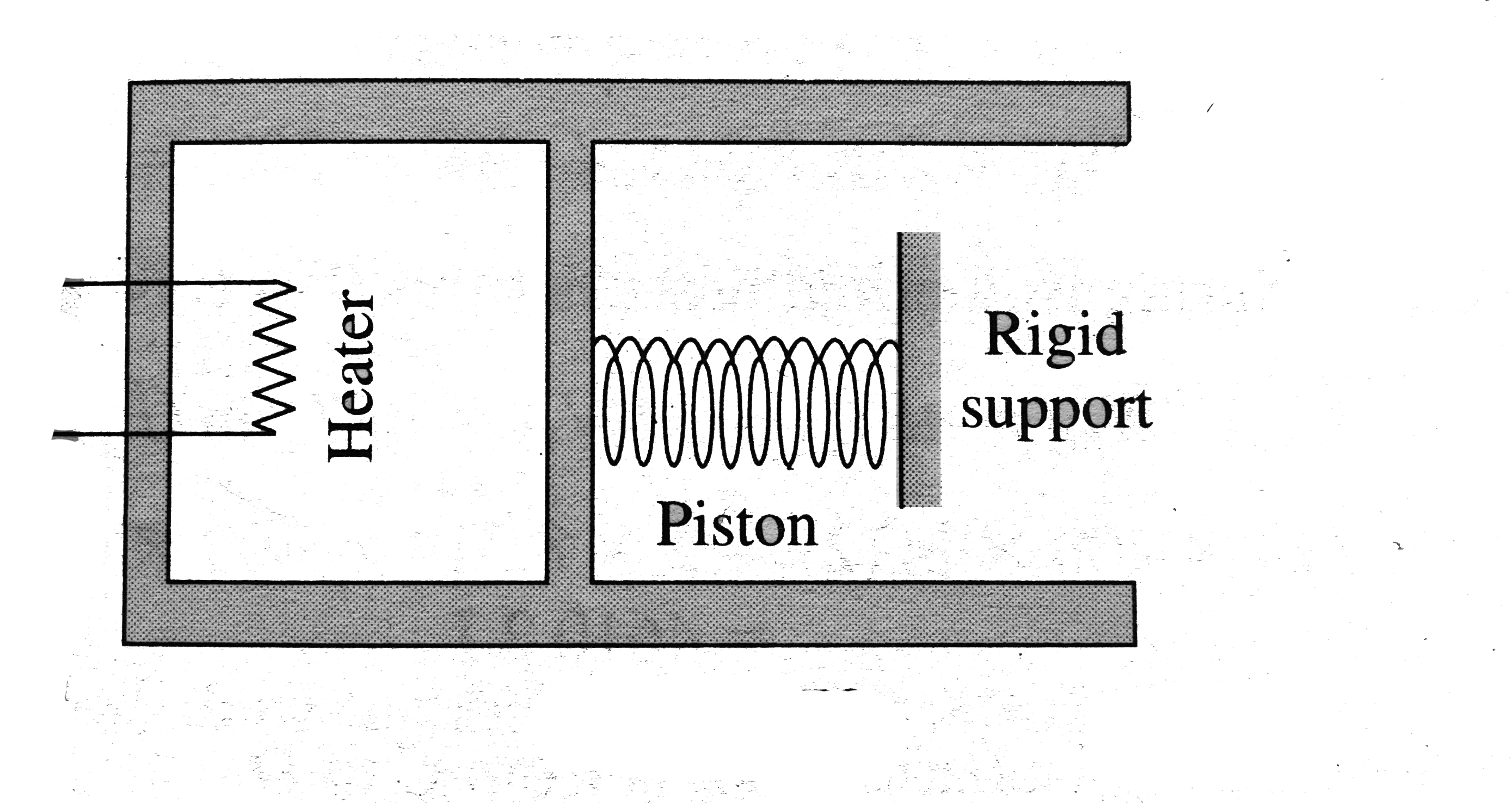 View Solution
View SolutionQuestion 85
Two gases occupy two containers A and B then gas in A, of volume 0.10m3, exerts a pressure of 1.40Mpa and that in B, of volume 0.15m3, exerts a pressure 0.7MPa. The two containers are joined by a tube of negligible volume and the gases are allowed to intermingle. Then if the temperature remains constant, the final pressure in the container will be (in MPa)View SolutionQuestion 105
A thermodynamic process is shown in the figure. The pressures and volumes corresponding to some points in the figure are: PA=3×104Pa,PB=8×104PaandVA=2×10−3m3,VD=5×10−3m3. In process AB, 600 J of heat is added to the system and in process BC, 200 J of heat is added to the system. The change in internal energy of the system in process AC would be :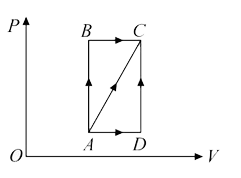 View Solution
View SolutionQuestion 112
1 cm3 of waterr at its boiling point absorbs 540 calories of heat to become steam with a volume of 1671 cm3. If the atmospheric pressure =1.013×105N/m2 and the mechanical equivalent of heat =4.19 J/calorie, the energy spent in this process in overcoming inter molecular forces is View SolutionQuestion 115
At 100∘C the volume of 1kg of water is 10−3m3 and volume of 1kg of steam at normal pressure is 1.671m3. The latent heat of steam is 2.3×106J/kg and the normal pressure is 5×105N/m2. If 5kg of water at 100∘C is converted into steam, the increase in the internal energy of water in this process will beView SolutionQuestion 126
Three processes compose a thermodynamic cycle shown in the accompanying P−V, diagram of an ideal gas.
Process 1→2 take place at constant temperature, during this process 60J of heat enters the system.
Process 2→3 takes place at constant volume. During this process 40J of heat leaves the system.
Process 3→1 is adiabatic.
What is the change in internal energy of the during process 3→1?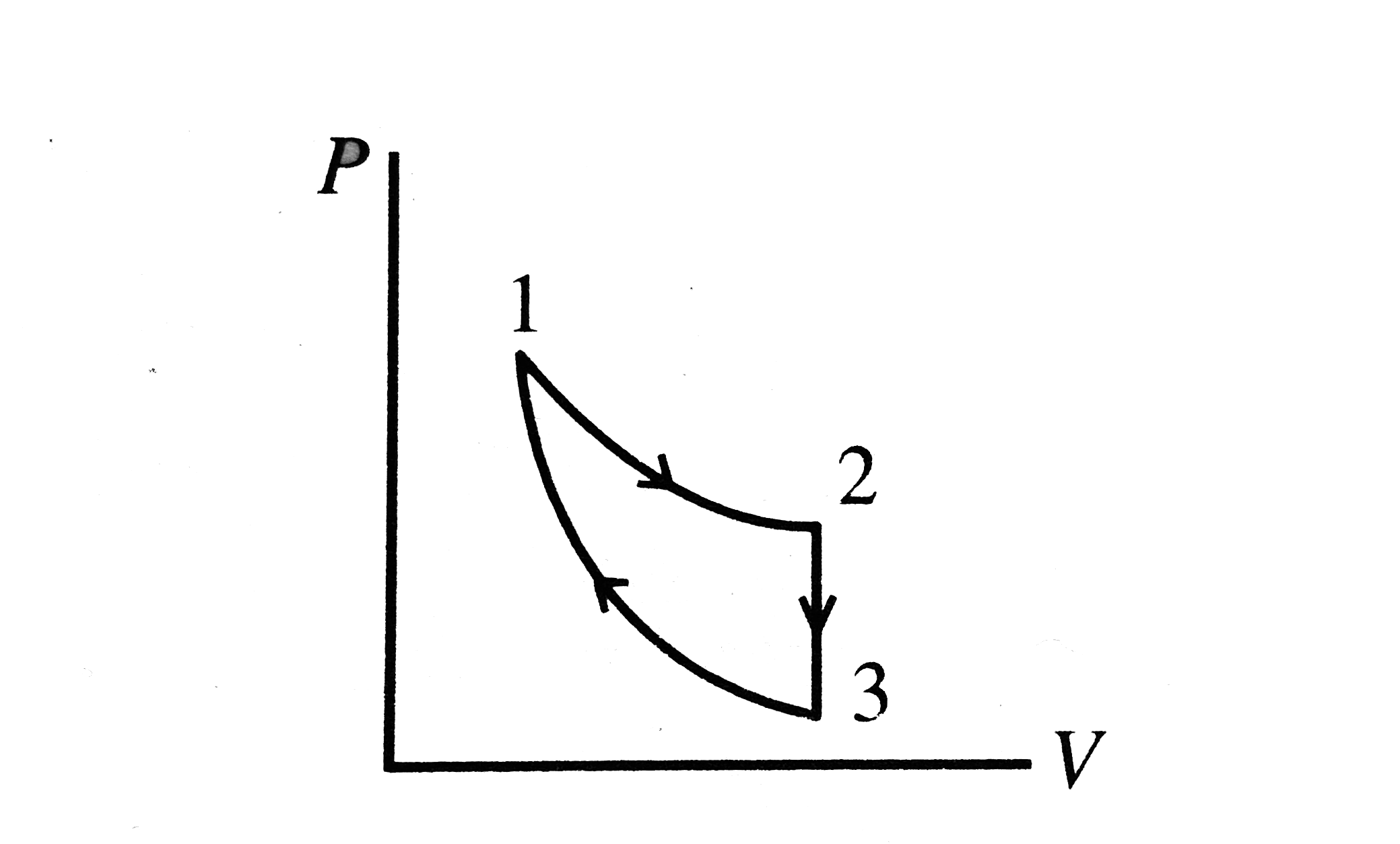 View Solution
View SolutionQuestion 128
A sample of an ideal gas is taken through the cyclic-process ABCA shown in Fig. It rejects 50J of heat during the part AB, doens not absorb or reject the heat during BC, and accepts 70J of heat during CA. Forty joules of works is done on the gas during the part BC. The internla energies at B and C, respectively, will be (Internal Energy at A=1500Joules)
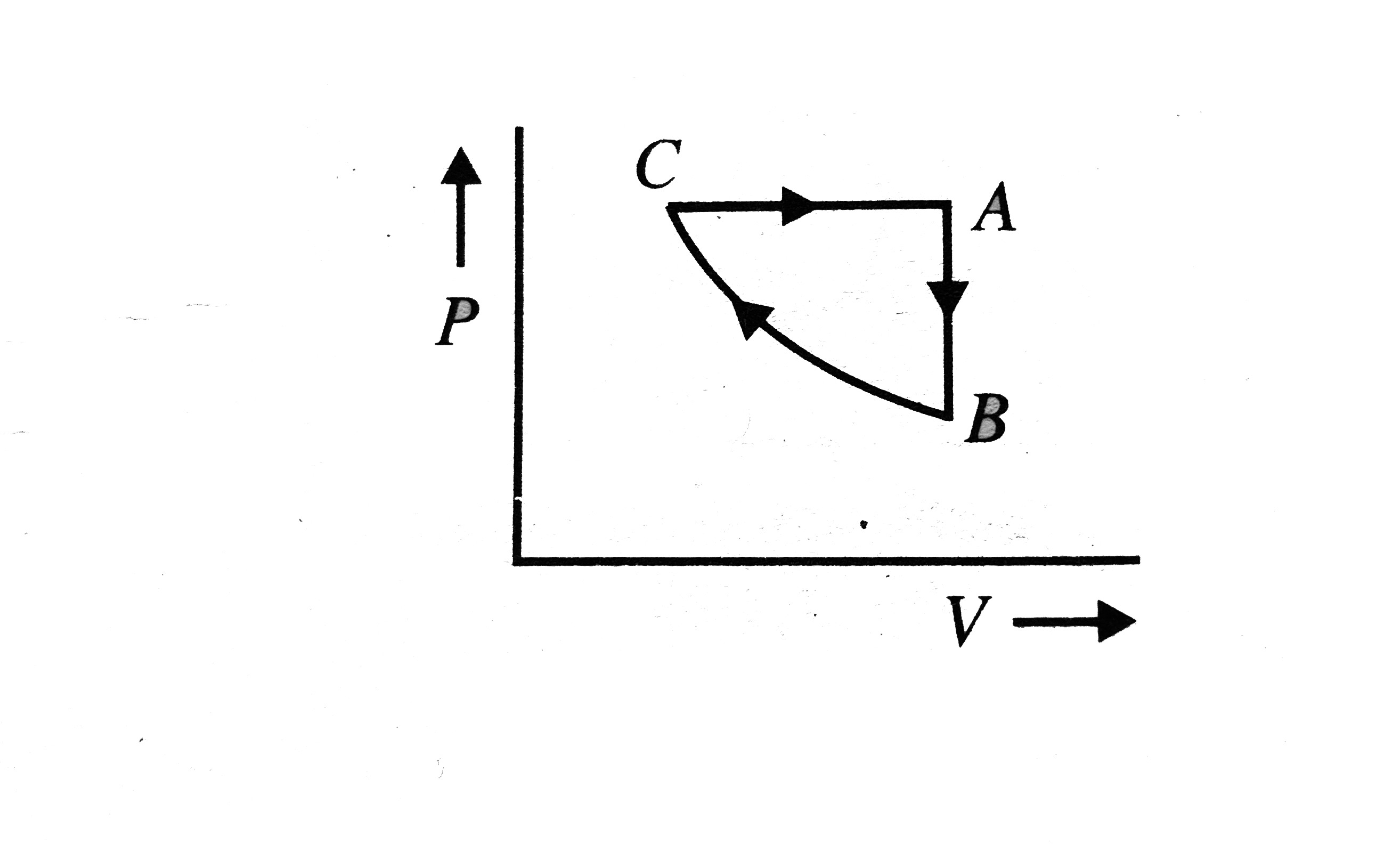 View Solution
View SolutionQuestion 132
A cylinder of ideal gas is closed by an 8kg movable piston of area 60cm2. The atmospheric pressure is 100kPa. When the gas is heated form 30∘C to 100∘C, the piston rises 20 cm. The piston is then fastened in the place and the gas is cooled back to 30∘C. If ΔQ1 is the heat added to the gas during heating and ΔQ2 is the heat lost during cooling, find the difference.View SolutionQuestion 134
A cylindrical chamber A of uniform cross section is divided into two parts X and Y by a movalbe piston P which can slide without friction inside the chamber. Initially part X contains 1mol of a monochromatic gas and Y contains 2mol of a diatomic gas, and the volumes of X and Y are in the ratio 1:2 with both parts X and Y being at the same temperature T. Assuming the gases to be ideal, the work W that will be done in moving the piston slowly to the position where the ratio of the volumes of X and Y is 2:1 will be
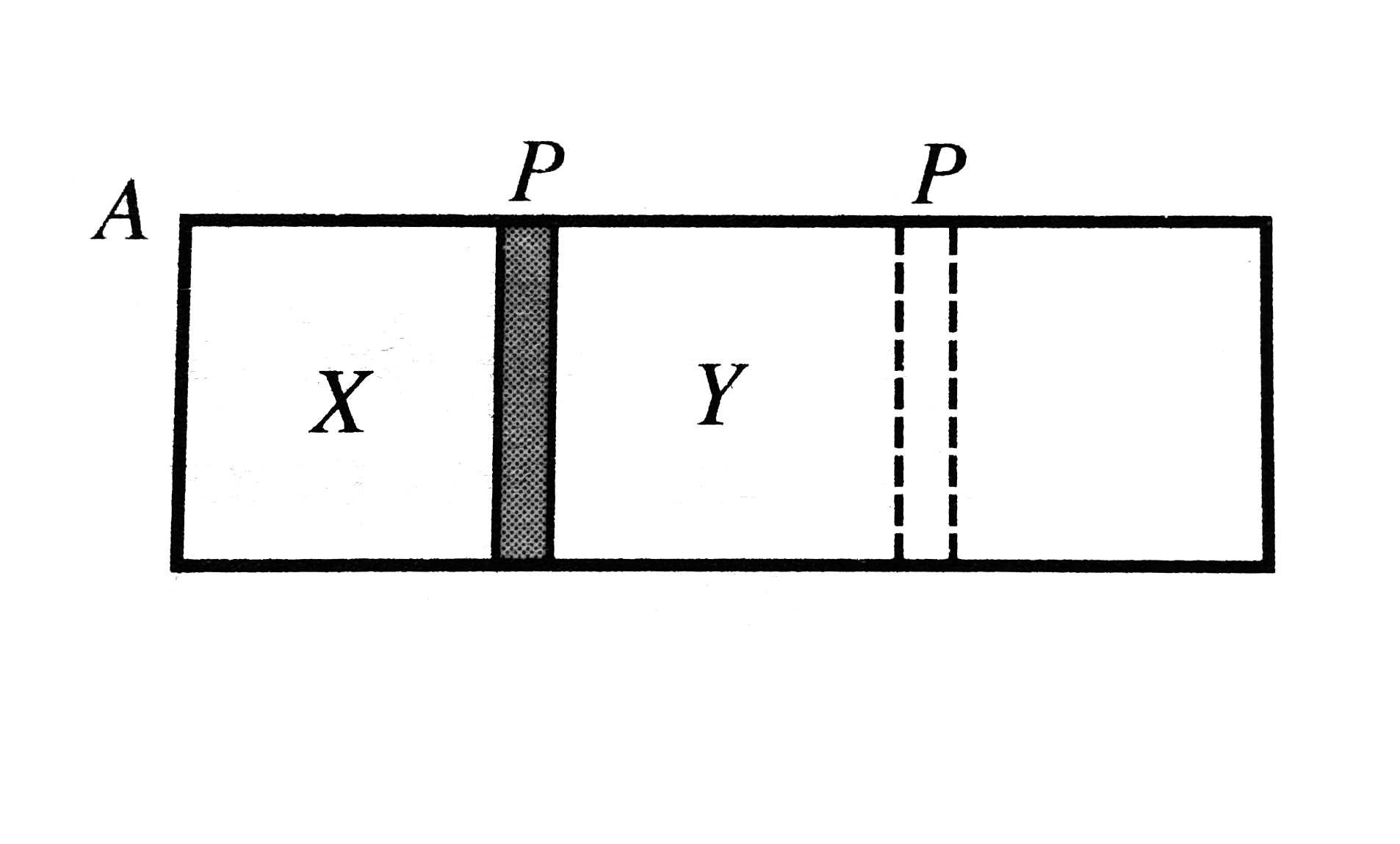 View Solution
View SolutionQuestion 135
An ideal gas (1 mol, monatomic) is in the intial state P (see Fig.) on an isothermal A at temperature T0. It is brought under a constant volume (2V0) process to Q which lies on an adiabatic B intersecting the isothermal A at (P0,V0,T0). The change in the internal energy of the gas during the process is (in terms of T0)(22/3=1.587)
View SolutionQuestion 140
A thermodynamic process is shown in the figure. The pressures and volumes corresponding to some points in the figure are: PA=3×104Pa,PB=8×104PaandVA=2×10−3m3,VD=5×10−3m3. In process AB, 600 J of heat is added to the system and in process BC, 200 J of heat is added to the system. The change in internal energy of the system in process AC would be : View Solution
View SolutionQuestion 141
Carbon monoxide is carried around a closed cyclic processes abc, in which bc is an isothermal process, as shown in Fig. The gas absorbs 7000J of heat as its temperature is increased from 300K to 1000K in going from a to b. The quantity of heat ejected by the gas during the process ca is
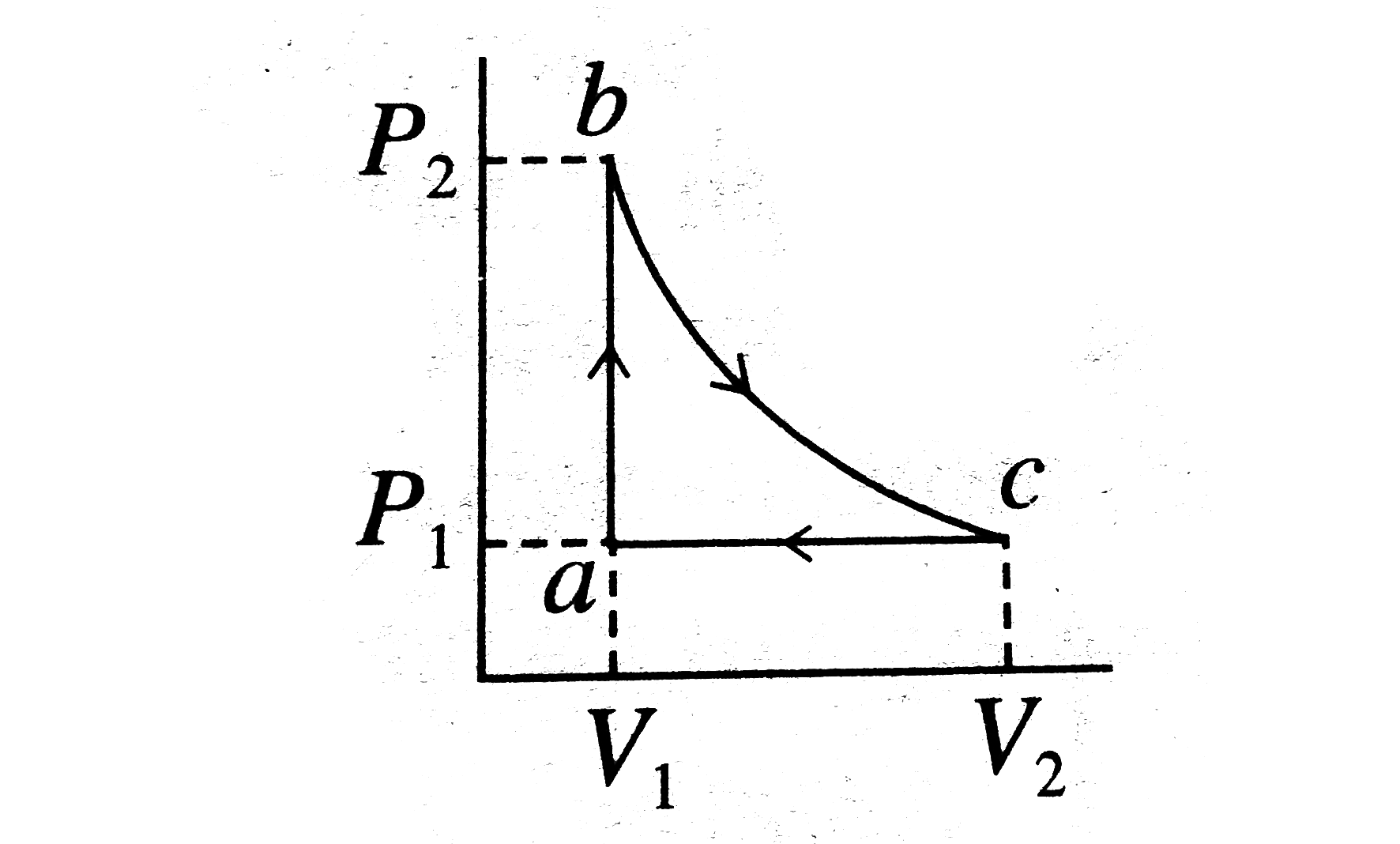 View Solution
View SolutionQuestion 142
An ideal gas is taken through a cyclic thermodynamic process through four steps. The amounts of heat involved in these steps are Q1=5960J,Q2=−5585J,Q3=−2980JandQ4=3645J, respectively. The corresponding quantities of work involved are W1=2200J,W2=−825J,W3=−1100JandW4 respectively.
(1) Find the value of W4.
(2) What is the efficiency of the cycle View SolutionQuestion 145
Two identical cylinders A and B with frictionless pistons contain the same ideal gas at the same temperature and the same voluem V. The mass of gas AismAandtˆofBismB .The gs in eah cylinder is notw allowed to expand isothermally to the same final volume 2V . The change in the pressure in A and B are found ot be ΔPand1.5ΔP respecitvely ThenView SolutionQuestion 156
The equation of state for a gas is given by PV=ηRT+αV, where η is the number of moles and α a positive constant. The intinal pressure and temperature of 1 mol of the gas contained in a cylinder is P0 and T0, respectively. The work done by the gas when its temperature doubles isobarically will beView SolutionQuestion 157
A sound wave passing volume 1m3 is divided into two equal compartments by a partition. One of these compartments contains an ideal gas at 300K. The other compartment is vacuum. The whole system is thermally isolated from its surroundings. The partition is removed and the gas expands to occupy the whole volume of the container. Its temperature now would beView SolutionQuestion 158
A container of volume 1m3 is divided into two equal parts by a partition. One part has an ideal gas at 300K and the other part is vacuum. The whole system is thermally isolated from the surroundings. When the partition is removed, the gas expands to occupy the whole volume. Its temperature will now be .......View SolutionQuestion 162
Two cylinders A and B fitted with pistons contain equal amounts of an ideal diatomic gas at 300K. The piston of A is free to move, while that B is held fixed. The same amount of heat is given to the gas in each cylinder. If the rise in temperature of the gas in A is 30K, then the rise in temperature of the gas in B is View SolutionQuestion 163
Carbon monoxide is carried around a closed cyclic processes abc, in which bc is an isothermal process, as shown in Fig. The gas absorbs 7000J of heat as its temperature is increased from 300K to 1000K in going from a to b. The quantity of heat ejected by the gas during the process ca is
 View Solution
View SolutionQuestion 172
Three samples A, B and C of the same gas (γ=1.5) have equal volumes and temperatures. The volume of each sample is doubled, the process being isothermal for A, adiabatic for B and isobaric for C. If the final pressures are equal for the three samples, Find the ratio of the initial pressures. View SolutionQuestion 177
Two moles of an ideal gas at temperature T0=300K was cooled isochorically so that the pressure was reduced to half. Then, in an isobaric process, the gas expanded till its temperature got back to the initial value. Find the total amount of heat absorbed by the gas in the processsView SolutionQuestion 182
One mole of an ideal gas at pressure P0 and temperature T0 is expanded isothermally to twice its volume and then compressed at constant pressure to (V0/2) and the gas is brought bac to original state by a process in which PαV (pressure is directly proportional to volume). The correct temperature of the process isView SolutionQuestion 192
A certain balloon maintains an internal gas pressure of P0=100kPa until the volume reaches V0=20m3. Beyond a volume of 20m3, the internal pressure varies as P=P0+2k(V−V0)2 where P is in kPa. V is in m3 and k is a constant (k=1kPa/m3). Initially the balloon contains helium gas at 20∘C, 100 kPa with a 15m3 volume. The balloon is then heated until the volume becomes 25m3 and the pressure is 150 kPa. Assume ideal gas behavior for helium. The work done by the balloon for the entire process in kJ isView SolutionQuestion 193
A spherical balloon contains air at temperature T0 and pressure P0. The balloon material is such that the instantaneous pressure inside is proportional to the square of the diameter. When the volume of the balloon doubles as a result of heat transfer, the expansion follows the law View SolutionQuestion 206
Two cylienders fitted with pistons and placed as shown, connected with string through a small tube of negligible volume, are filled with gas at pressure P0 and temperature T0. The radius of smaller cylinder is half of the other. If the temperature is increased to 2T0, find the pressure if the piston of bigger cylinder moves towards left by 1 metre ?
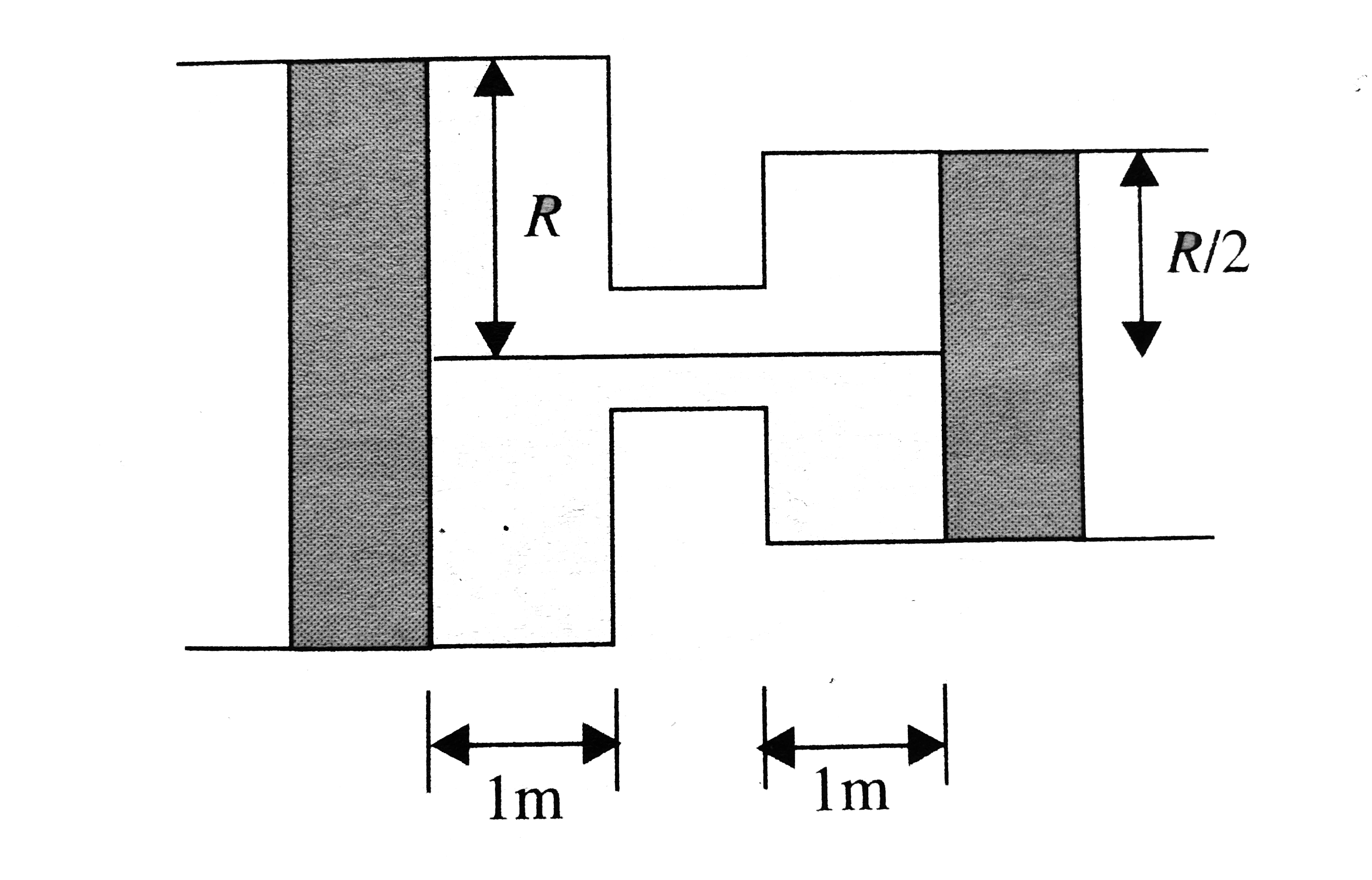 View Solution
View SolutionQuestion 208
Two identical containers A and B having same volume of ideal gas at the same temperature have mass of the gas as mA and mB respectively. 2mA=3mB. The gas in each cylinder expand isothermally to double its volume. If the change in pressure in A is Δp, find the change in pressure in B:View SolutionQuestion 214
A thermally insulated chamber of volume 2V0 is divided by a frictionless piston of area S into two equal parts A and B Part A has an ideal gas at pressure p0 and temperature T0 and in part B is vacuum. A massless spring of force constant K is connected with piston and the wall of the container as shown. Initially spring is unstretched. Gas in chamber A is allowed to expand. Let in equilibrium spring is compressed by x0. Then
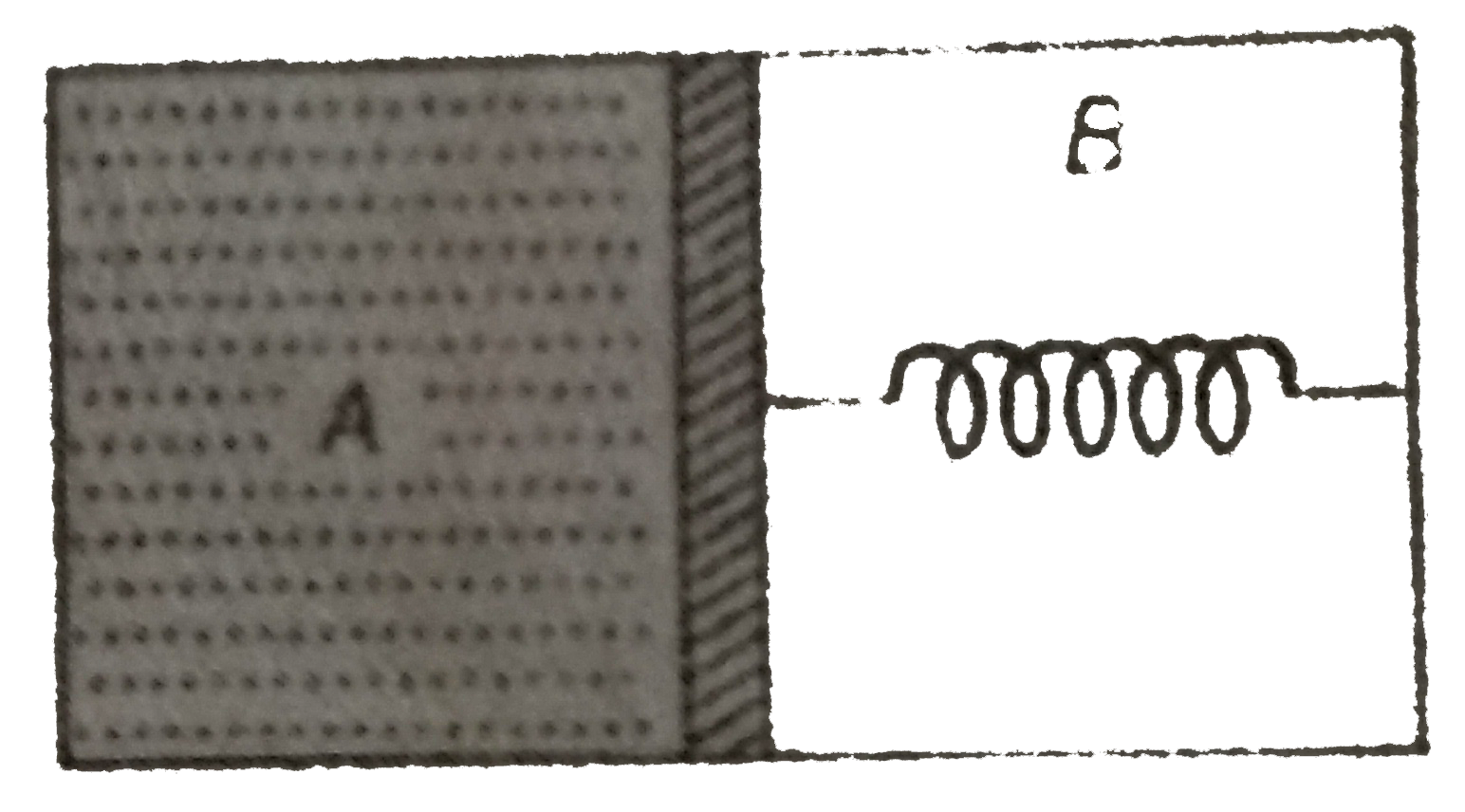 View Solution
View SolutionQuestion 215
Choose the correct option:
In the arrangement shown in Fig. gas is thermally insulated. An ideal gas is filled in the cylinder having pressure P0 (gt atmospheric pressure Pa). The spring of force constant K is initially un-stretched. The piston of mass m and area S is frictionless. In equilibrium, the piston rises up by distance x0, then
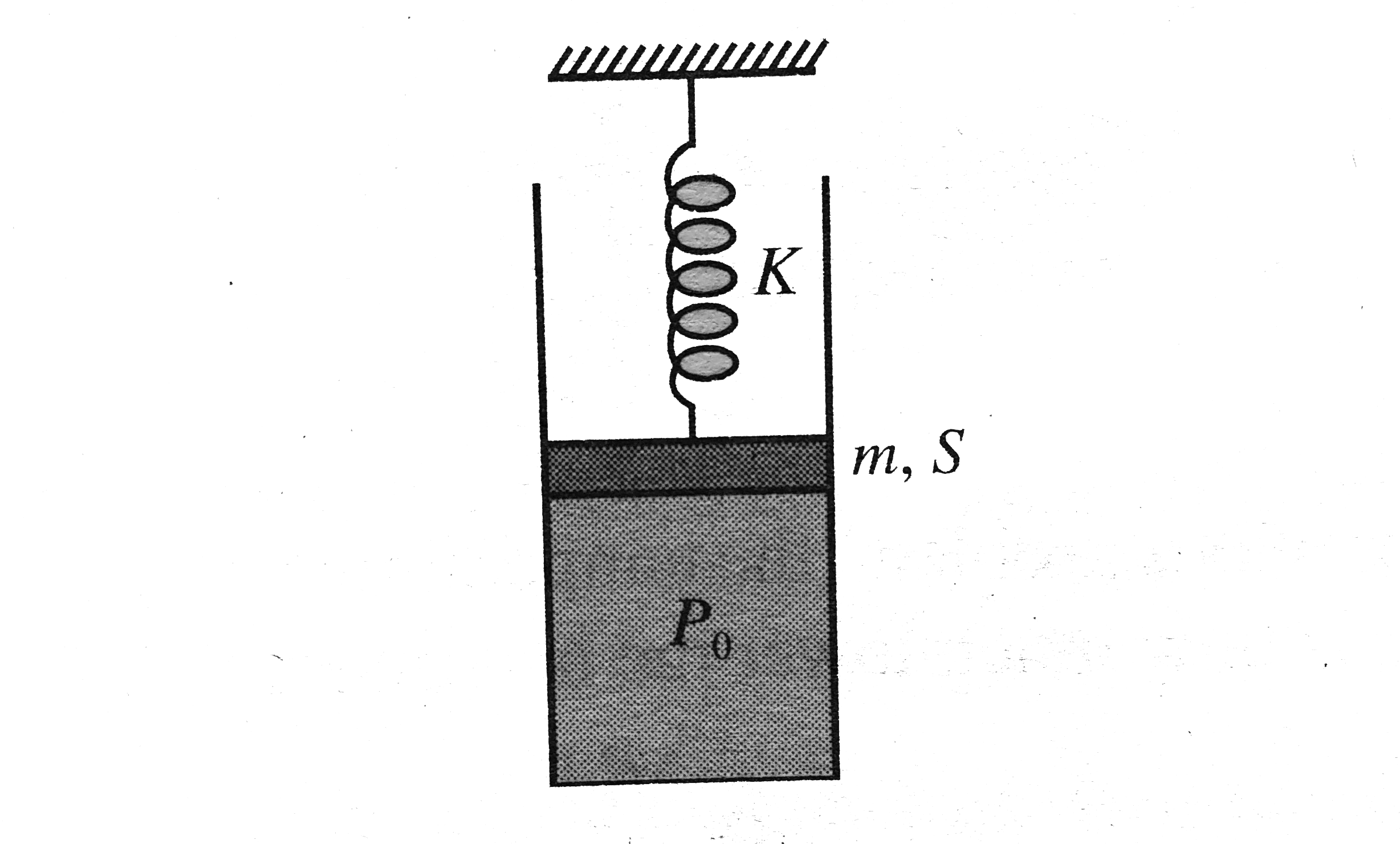 View Solution
View SolutionQuestion 216
A gas undergoes change in its state from position A to position B via three different path as shown in Fig. Select the correct alternatives :
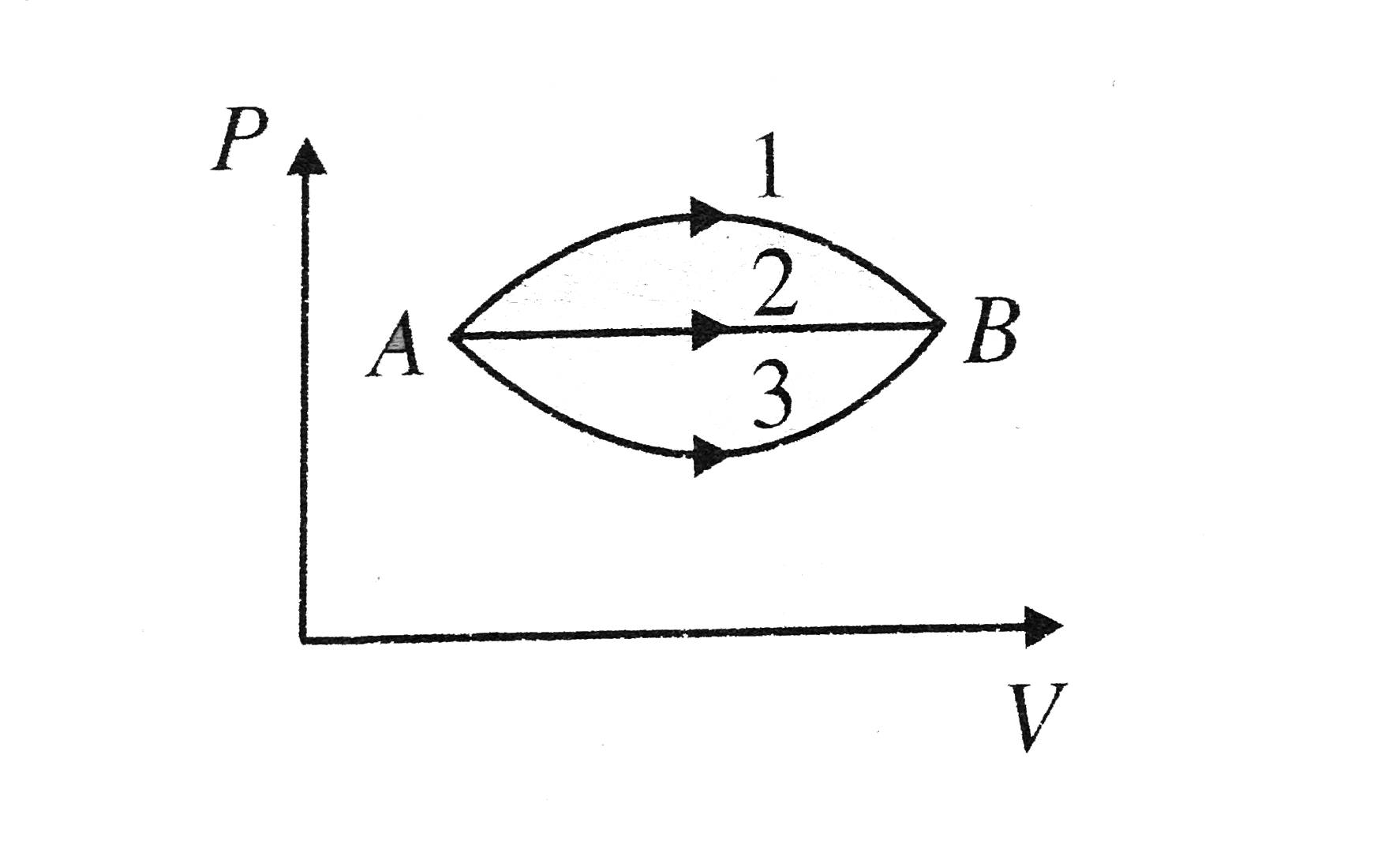
(A)Change in internal energy in all the three paths is equal
(B)In all the three paths heat is absorbed by the gas
(C)Heat absorbed/released by the gas is maximum in path 1
(D)Temperature of the gas first increases and then decreases in path 1View SolutionQuestion 231
Three moles of an ideal gas (Cp=72R) at pressure, PA and temperature TA is isothermally expanded to twice its initial volume. It is then compressed at constant pressure to its original volume. Finally gas is compressed at constant volume to its original pressure PA.
(a) Sketch P-V and P-T diagrams for the complete process.
(b) Calculate the net work done by the gas, and net heat supplied to the gas during the complete process.View SolutionQuestion 233
A partition divides a container having insulated walls into two compartments whose initial paraments are given. The partition is a conducting wall which can move freely without friction. Which of the following statements is/are correct, with reference to the final equilibrium position ?
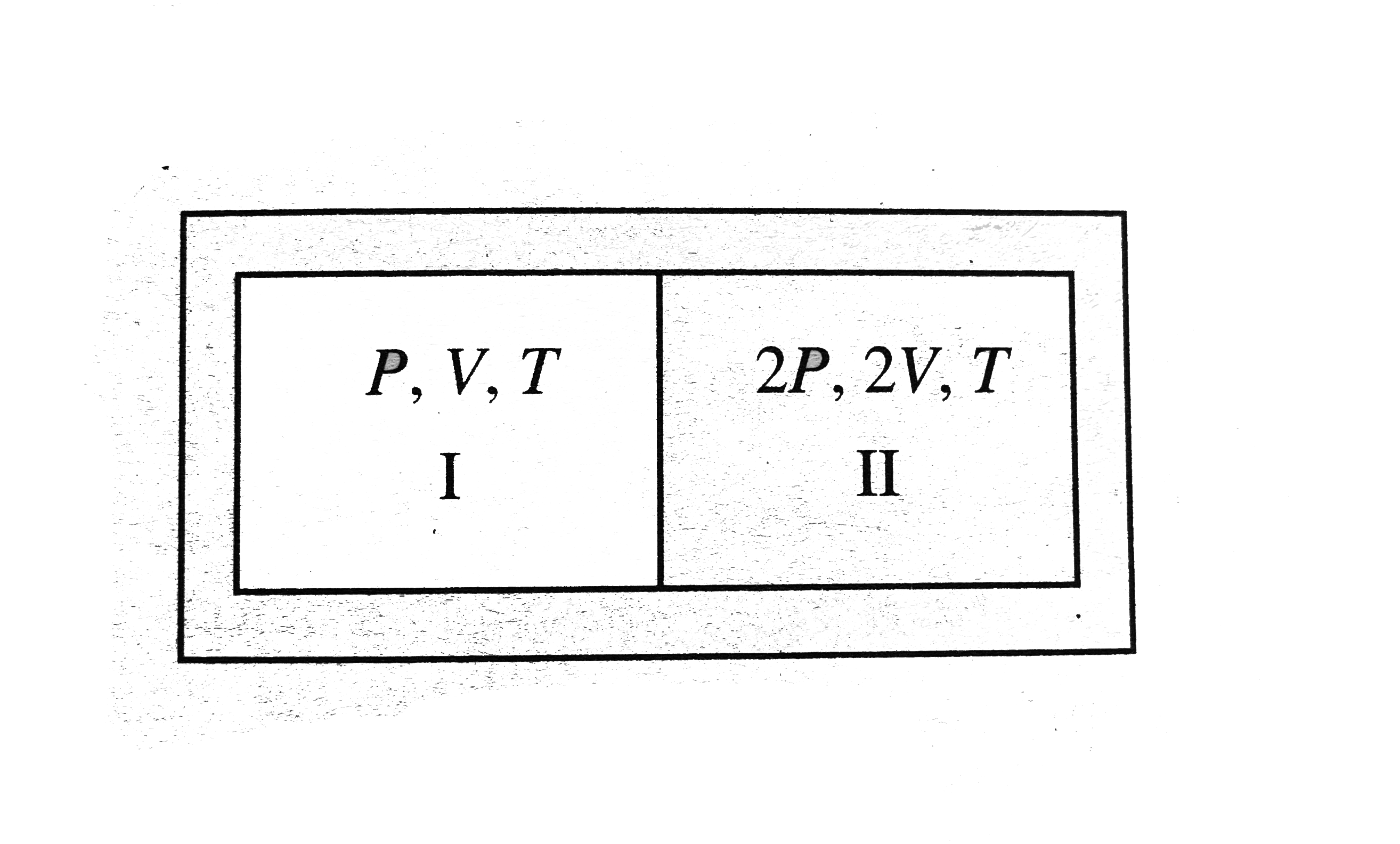 View Solution
View SolutionQuestion 236
An ideal gas undergoes an expansion from a state with temperature T1 and volume V1 through three different polytropic processes A,B and C as shown in the P−V diagram. If |ΔEA|,|ΔEB| and |ΔEC| be the magnitude of changes in internal energy along the three paths respectively, then :
 View Solution
View SolutionQuestion 237
A system undergoes three quasi-static process sequentially as indicated in Fig. 1-2 is an isobaric process, 2-3 is a polytropic process with γ=4/3 and 3-1 is a process in which PV = constant. P2=P1=4×105N/m2,P3=1×105N/m2 and V1=1m3.
The heat transfer for the cycle is ΔQ, the change in internal energy is ΔU and the work done is ΔW. Then
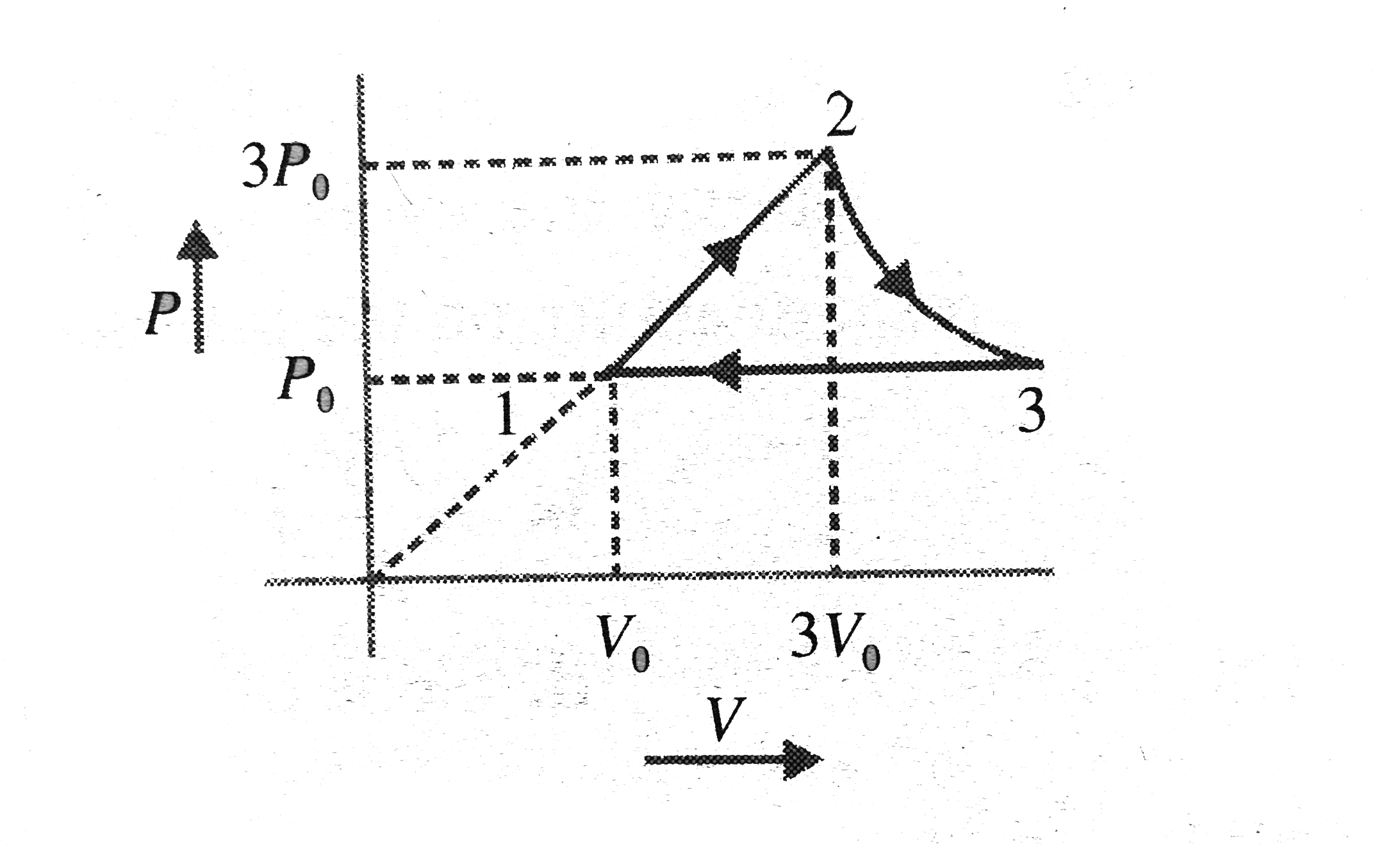 View Solution
View SolutionQuestion 242
Statement I: When an ideal gas is taken from a given thermodynamics state A to another given thermodynamic state B by any polytropic process, the change in the internal energy of the system will be the same in all processes.
Statement II: Internal energy of the ideal gas depends only upon its absolute temperature. View SolutionQuestion 245
Statement I: A gas is expanded from a volume V to 2V, first through adiabatic process then through isothermal process. Work done in isothermal process is more if final state (i.e. pressure and volume ) in both the cases is same.
Statement II: Work done by the gas is equal to area under p−V curve.
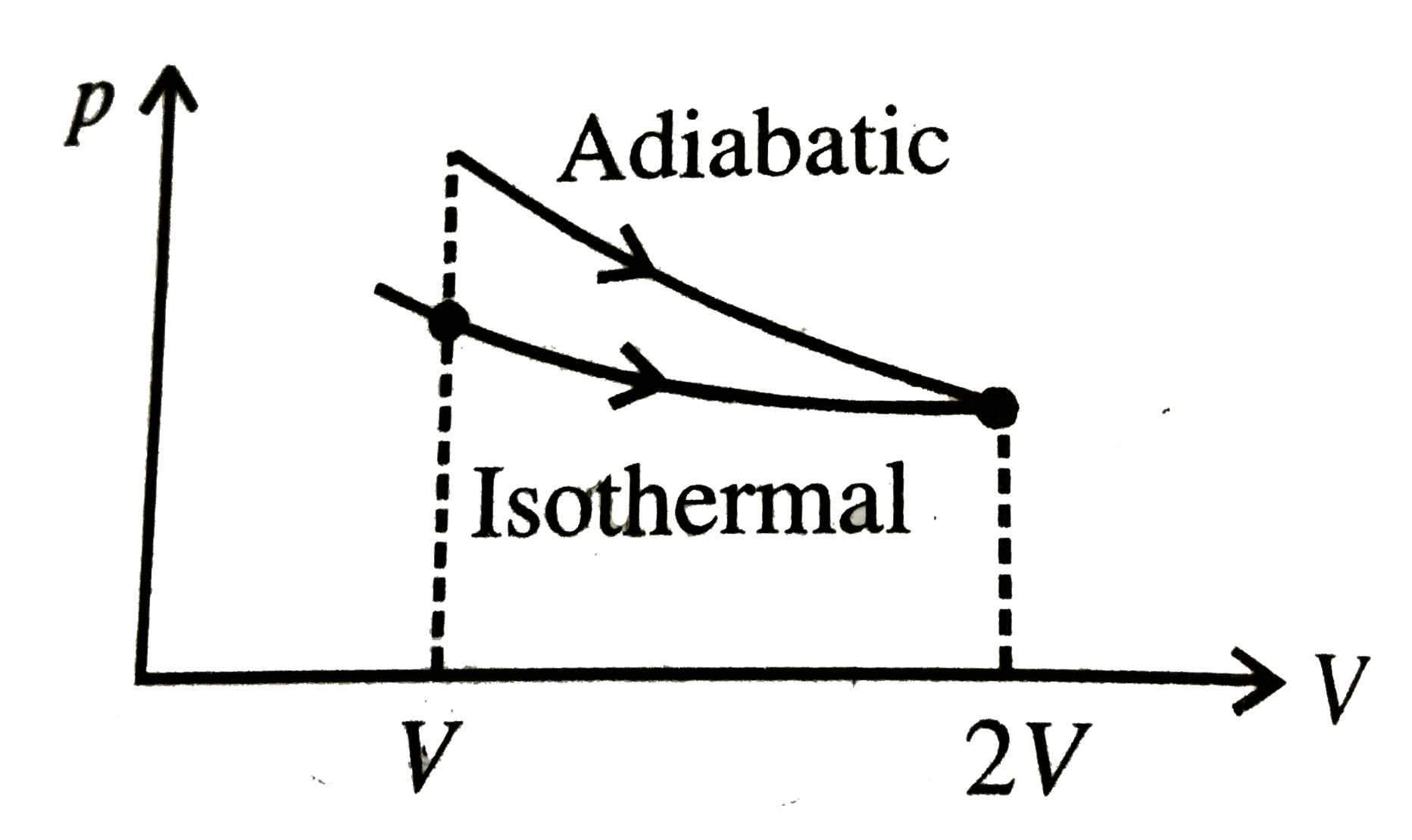
View SolutionQuestion 249
Four moles of an ideal gas is initially in a state A having pressure 2×105N/m2 and temperature 200 K . Keeping pressure constant the gas is taken to state B at temperature of 400K. The gas is then taken to a state C in such a way that its temperature increases and volume decreases. Also from B to C, the magnitude of dTdV increases. The volume of gas at state C is eaual to its volume at state A. Now gas is taken is initial state A keeping volume constant. A total of 1000 J heat is rejected from the sample in the cyclic process. Take R=8.3J/K/mol.
Which graph between temperture T and volume V for the cyclic process is correct.View SolutionQuestion 250
Four moles of an ideal gas is initially in a state A having pressure 2×105N/m2 and temperature 200 K . Keeping pressure constant the gas is taken to state B at temperature of 400K. The gas is then taken to a state C in such a way that its temperature increases and volume decreases. Also from B to C, the magnitude of dTdV increases. The volume of gas at state C is eaual to its volume at state A. Now gas is taken is initial state A keeping volume constant. A total of 1000 J heat is rejected from the sample in the cyclic process. Take R=8.3J/K/mol.
The work done by the gas along path B to C isView SolutionQuestion 251
Four moles of an ideal gas is initially in state A having pressure 2×105N/m2 and temperature 200K . Keeping the pressure constant the gas is taken to state B at temperature of 400K. The gas is then taken to a state C in such a way that its temperature increases and volume decreases. Also from B to C , the magnitude of dT/dV increases. The volume of gas at state C is equal to its volume at state A. Now gas is taken to initial state A keeping volume constant. A total 1000J of heat is withdrawn from the sample of the cyclic process . Take R=8.3J/K/mol. The volume of gas at state C is View SolutionQuestion 252
A process in which work perfomed by an ideal gas is proportional to the corresponding increment of its internal energy is described as a polytropic process. If we represent work done by a ppolytropic process by W and increase in internal energy as ΔU then
W∝ΔU
or W=K1ΔU ...(i)
For this process, it can be demonstrated that the relation between pressure and volume is given by the equation
PVη=K2 (constant ) .....(ii)
We know that a gas can have various values for molar specific heats. The molar specific heat 'C' for an ideal gas in polytropic process can be calculated with the help of first law of thermodynamics. In polytropic process process the variation of molar specific heat 'C' with η for a monatomic gas is plotted as in the graph shown.
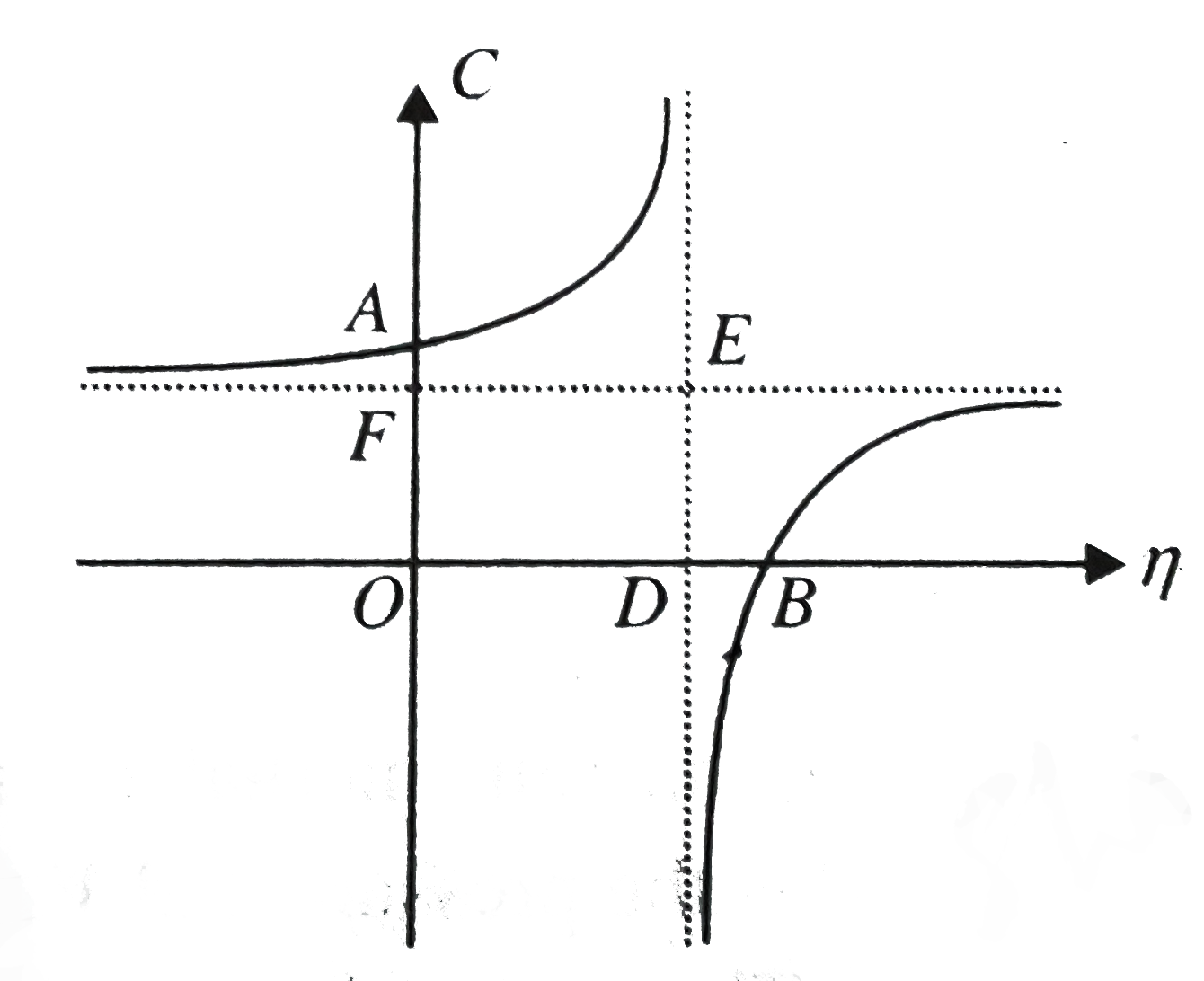
In the graph shown, the y− coordinate of point A is ( for monatomic gas )View SolutionQuestion 253
A process in which work perfomed by an ideal gas is proportional to the corresponding increment of its internal energy is described as a polytropic process. If we represent work done by a ppolytropic process by W and increase in internal energy as ΔU then
W∝ΔU
or W=K1ΔU ...(i)
For this process, it can be demonstrated that the relation between pressure and volume is given by the equation
PVη=K2 (constant ) .....(ii)
We know that a gas can have various values for molar specific heats. The molar specific heat 'C' for an ideal gas in polytropic process can be calculated with the help of first law of thermodynamics. In polytropic process process the variation of molar specific heat 'C' with η for a monatomic gas is plotted as in the graph shown.

In the graph shown, the y− coordinate of point A is ( for monatomic gas )View SolutionQuestion 254
A process in which work perfomed by an ideal gas is proportional to the corresponding increment of its internal energy is described as a polytropic process. If we represent work done by a ppolytropic process by W and increase in internal energy as ΔU then
W∝ΔU
or W=K1ΔU ...(i)
For this process, it can be demonstrated that the relation between pressure and volume is given by the equation
PVη=K2 (constant ) .....(ii)
We know that a gas can have various values for molar specific heats. The molar specific heat 'C' for an ideal gas in polytropic process can be calculated with the help of first law of thermodynamics. In polytropic process process the variation of molar specific heat 'C' with η for a monatomic gas is plotted as in the graph shown.
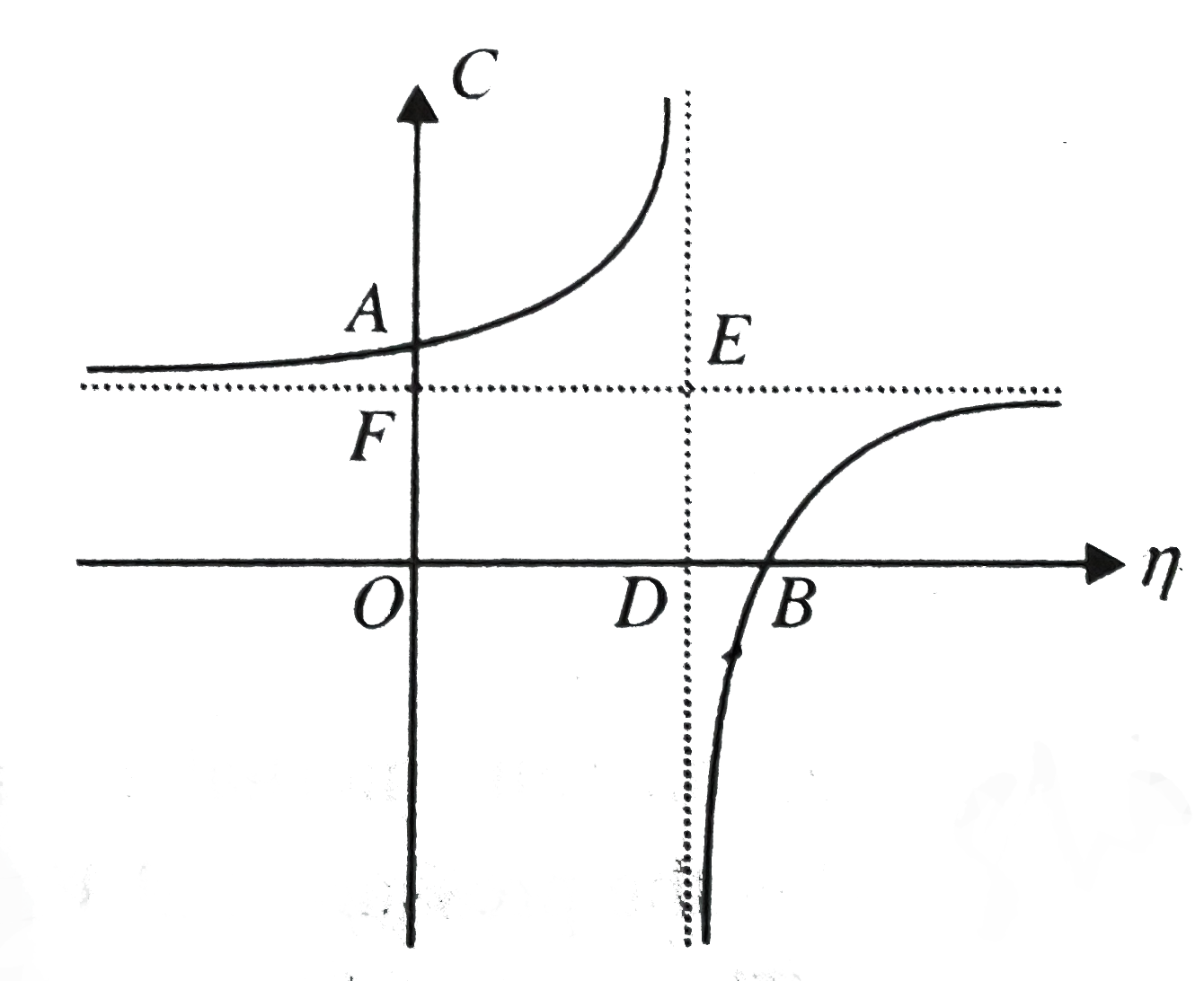
For a monoatomic gas, the values of polytropic constant η for which value specific heat is negative.View SolutionQuestion 255
Figure, shows the variation of potential energy (U) of 2 mol of Argon gas with its density in a cyclic process ABCA. The gas was initiallly in the state A whose pressure and temperature are PA=2atm,TA=300K, respectively. It is also stated the path AB is a rectangular hyperbola and the internal energy of the gas at state C is 3000r. Based on the above information answer the following question :
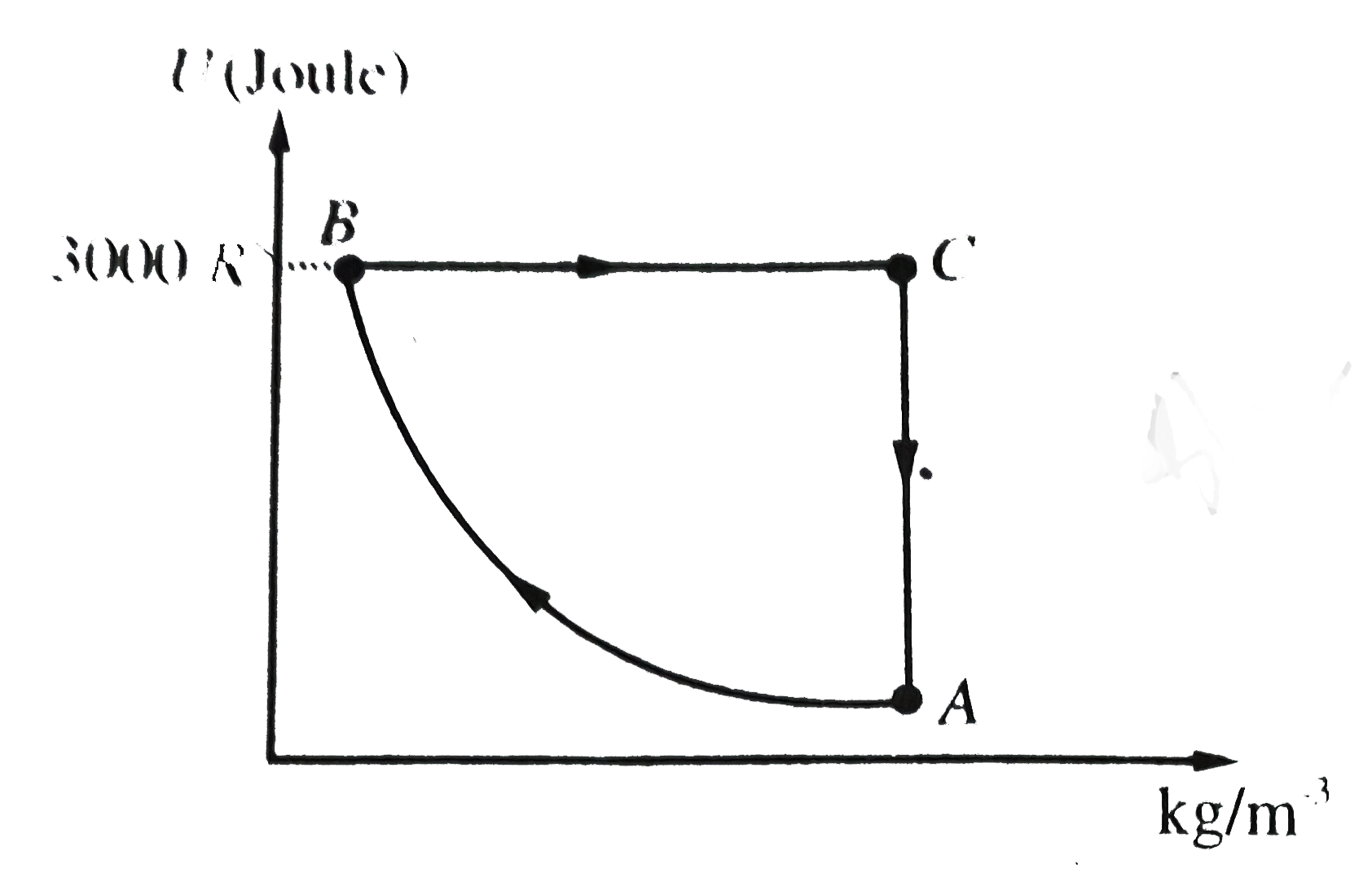 View Solution
View SolutionQuestion 256
Figure, shows the variation of potential energy (U) of 2 mol of Argon gas with its density in a cyclic process ABCA. The gas was initiallly in the state A whose pressure and temperature are PA=2atm,TA=300K, respectively. It is also stated the path AB is a rectangular hyperbola and the internal energy of the gas at state C is 3000r. Based on the above information answer the following question :
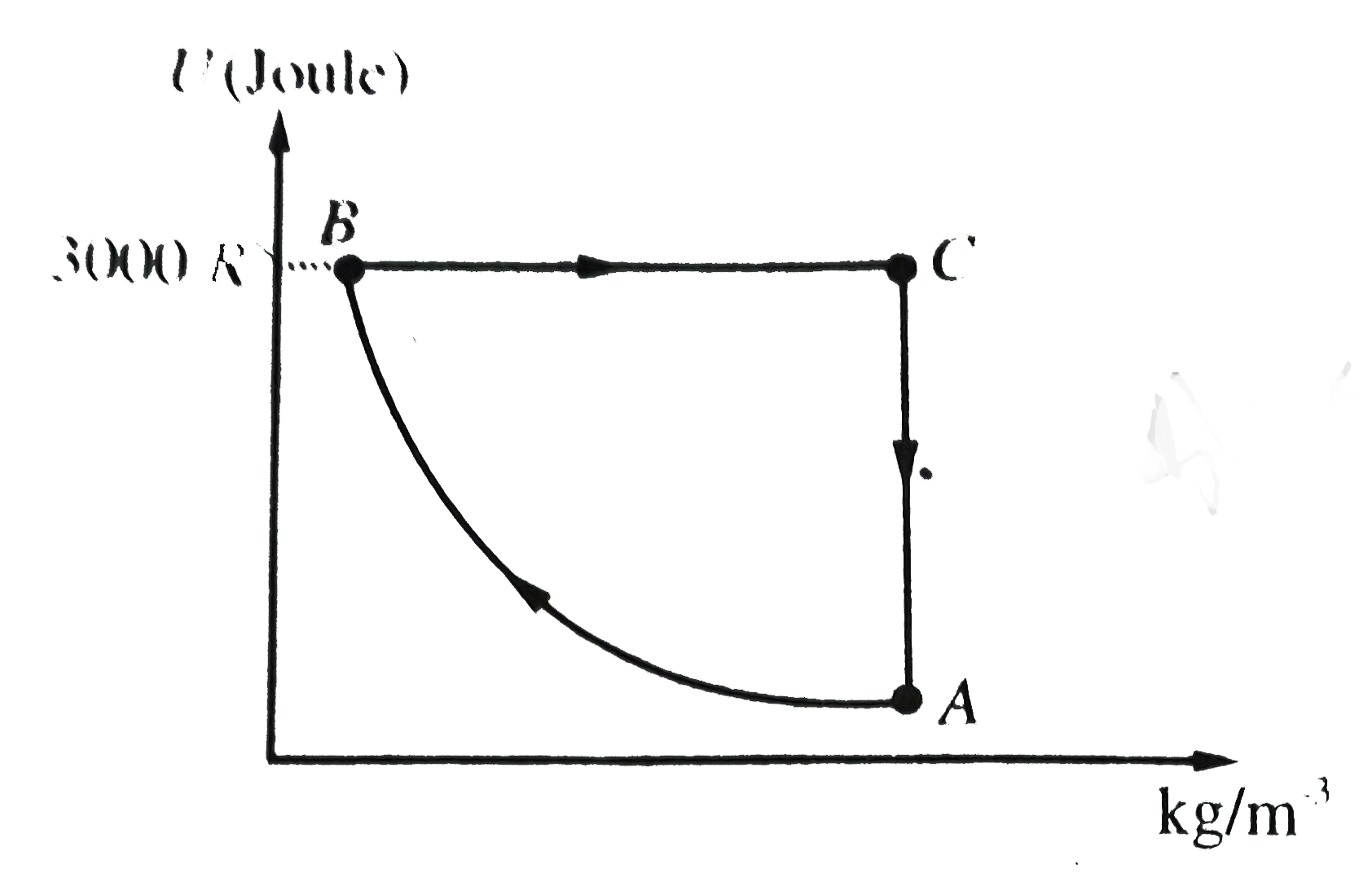
The heat supplied to the gas in the process AB is View SolutionQuestion 257
Figure, shows the variation of potential energy (U) of 2 mol of Argon gas with its density in a cyclic process ABCA. The gas was initiallly in the state A whose pressure and temperature are PA=2atm,TA=300K, respectively. It is also stated the path AB is a rectangular hyperbola and the internal energy of the gas at state C is 3000r. Based on the above information answer the following question :
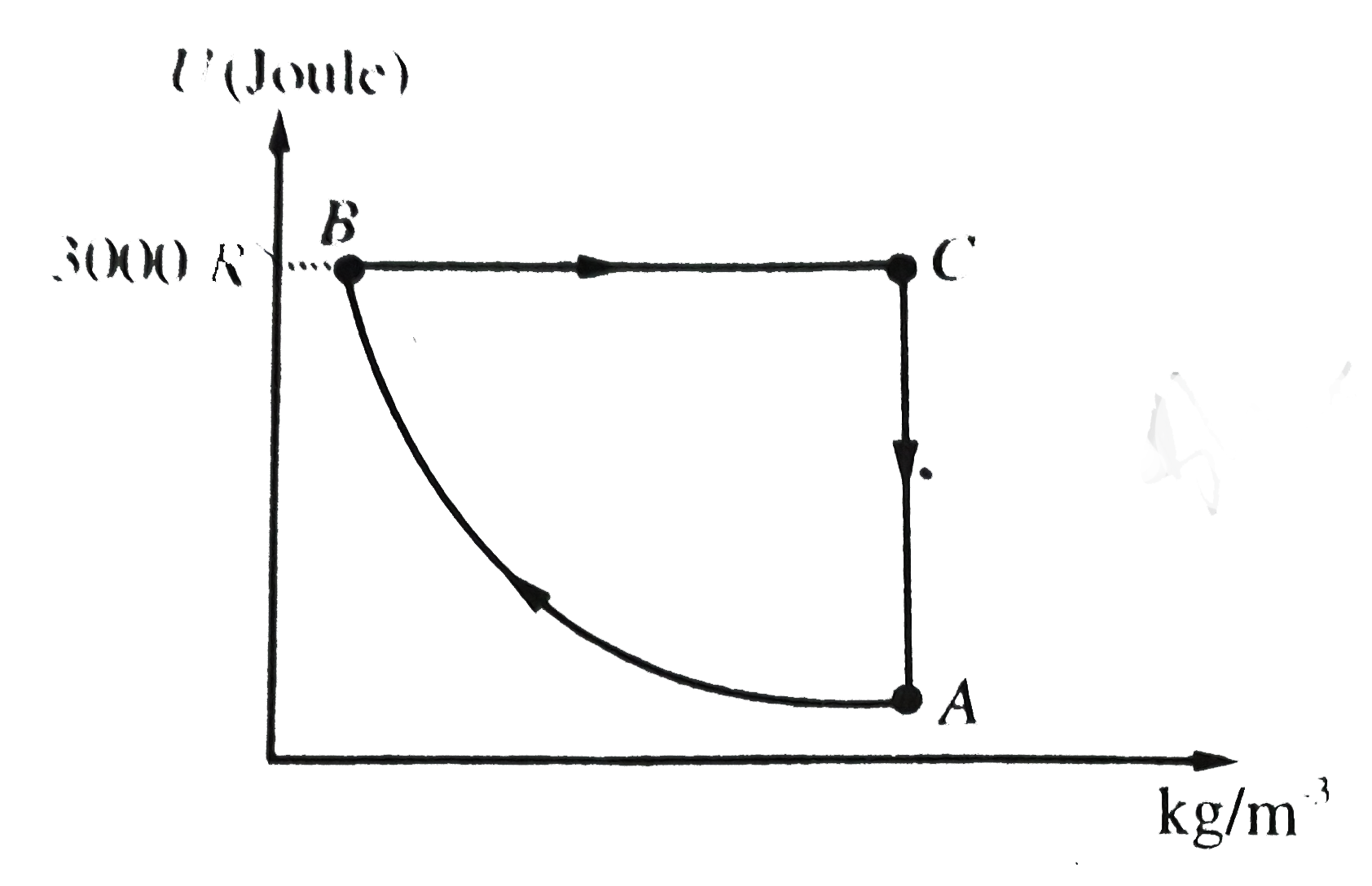
Heat supplied in the process CA is View SolutionQuestion 258
One mole of an ideal gas has an internal energy given by U=U0+2PV , where P is the pressure and V the volume of the gas. U0 is a constant. This gas undergoes the quasi− static cyclic process ABCD as shown in the U−V diagram. The molar heat capacity of the gas at constant pressure is
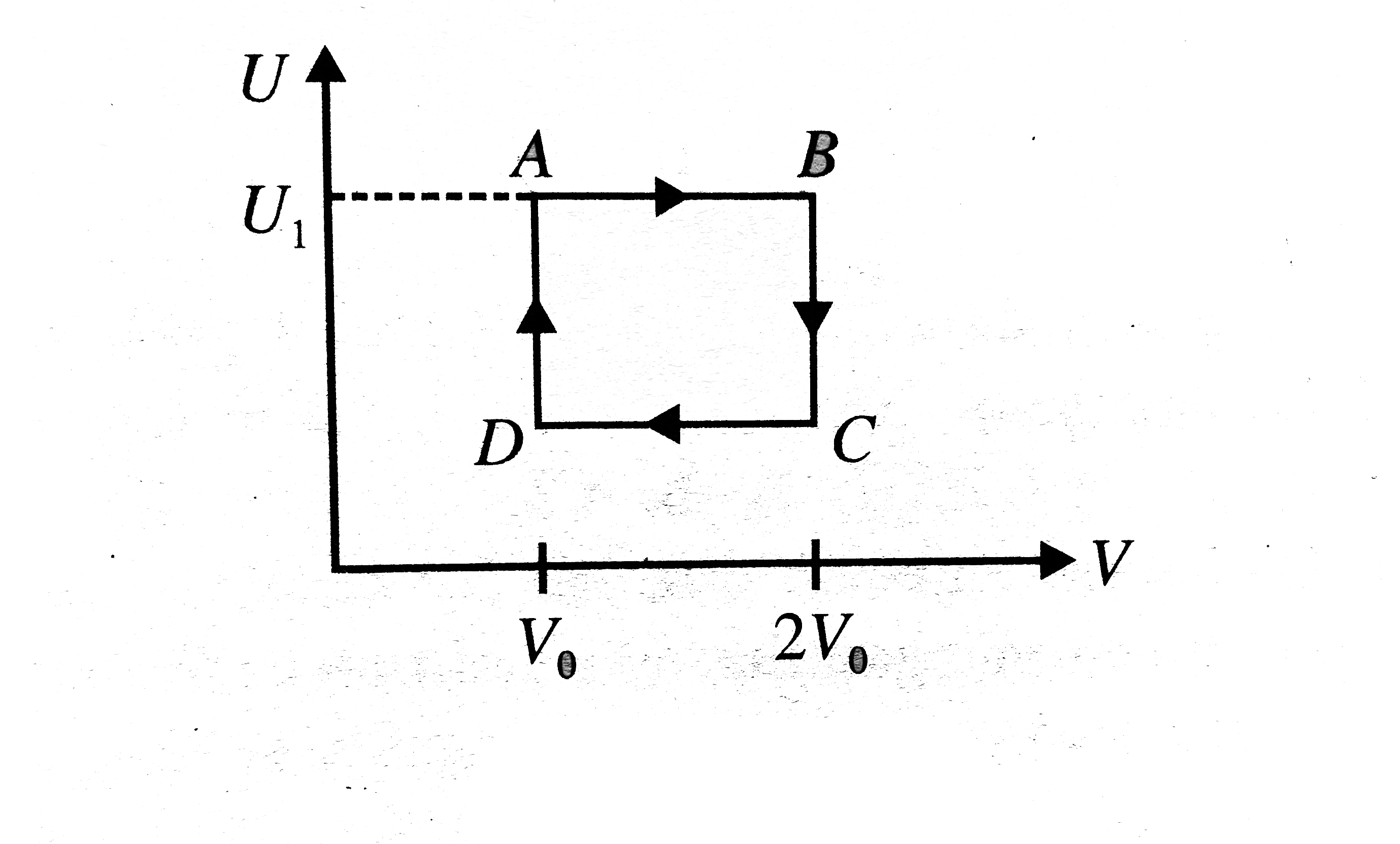 View Solution
View SolutionQuestion 259
One mole of an ideal gas has an interal energy given by U=U0+2PV , where P is the pressure and V the volume of the gas. U0 is a constant. This gas undergoes the quasi− static cyclic process ABCD as shown in the U−V diagram. The work done by the ideal gas in the process AB is
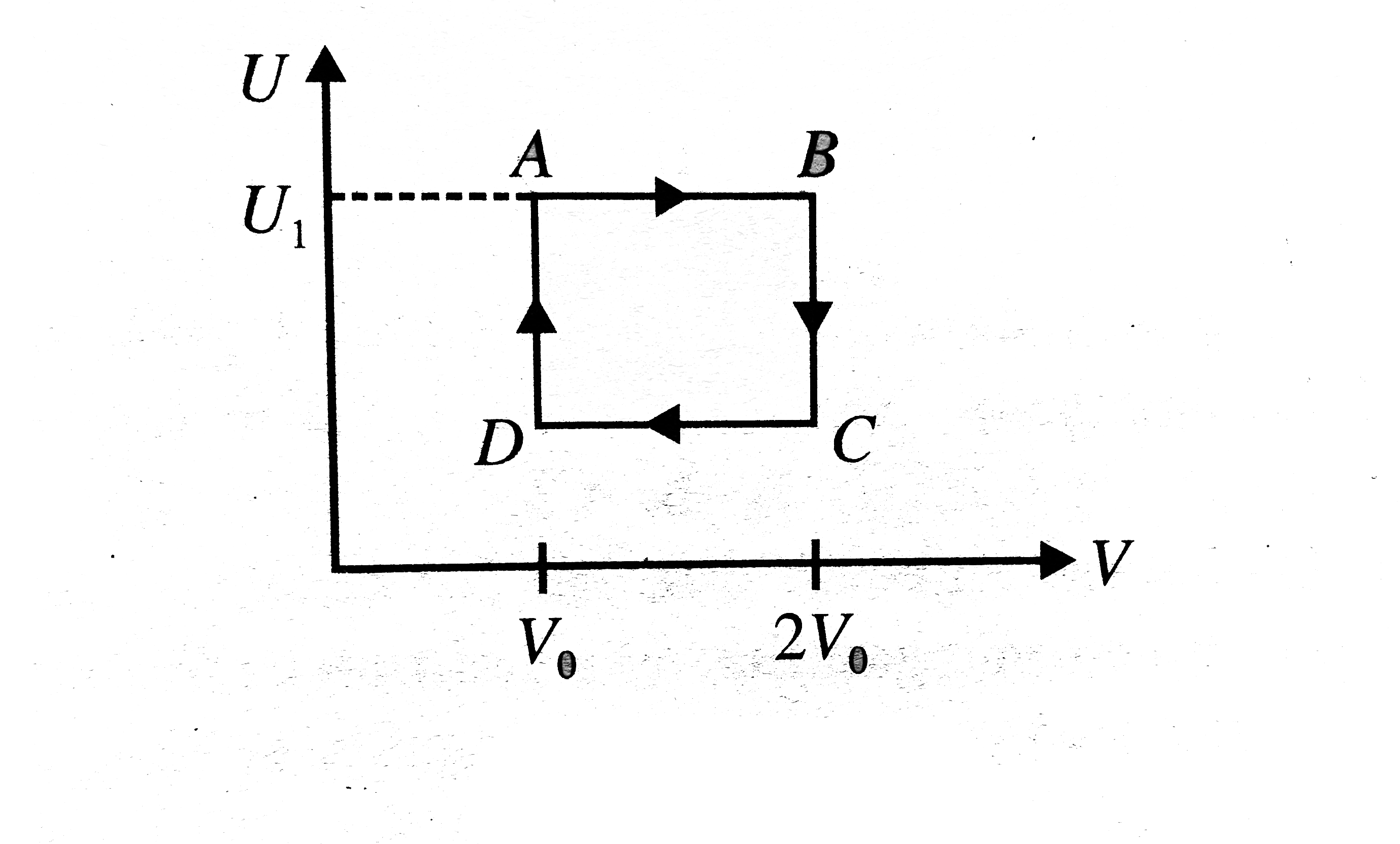
View SolutionQuestion 263
An ideal diatomic gas is expanded so that the amount of heat transferred to the gas is equal to the decrease in its internal energy. If in the process, the initial temperature of the gas be T0 and the final volume by 32 times the initial volume, the work done ( in Joules ) by the gas during the process will be View SolutionQuestion 264
A cylinder containing an ideal gas ( see figure ) and closed by a movable pistong is submerged in an ice- water mixture. The pistone is quickly pushed down from position (1) to position (2)( process AB). The piston is held at position (2) until the gas is again at 0∘C ( processs BC). Then the pistone is slowly raised back to position (1) ( process CA)
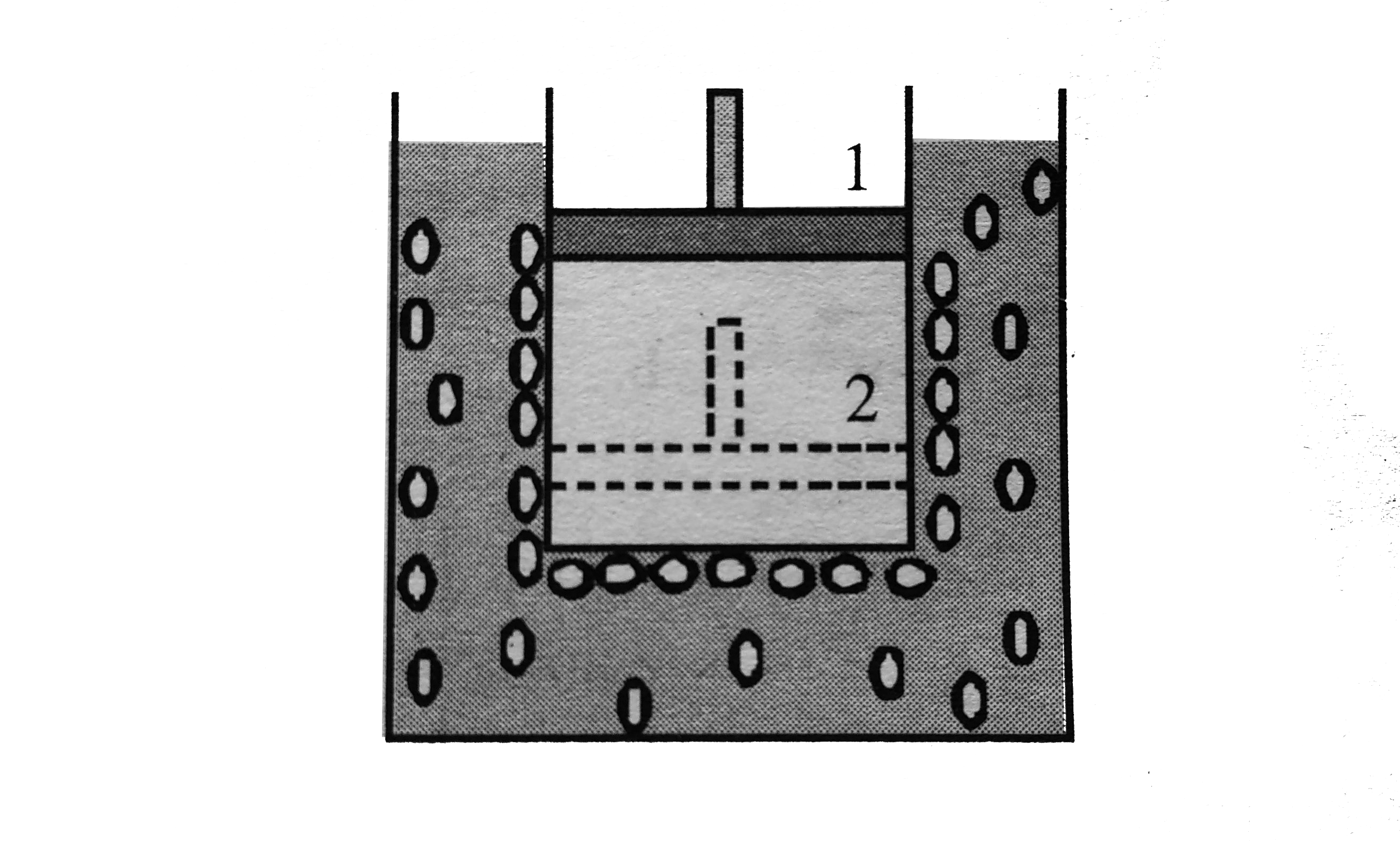
Which of the following P−V diagram will correctly represent the processes AB,BC and CA and the cycle ABCA?View SolutionQuestion 265
A cylinder containing an ideal gas ( see figure ) and closed by a movable pistong is submerged in an ice- water mixture. The pistone is quickly pushed down from position (1) to position (2)( process AB). The piston is held at position (2) until the gas is again at 0∘C ( processs BC). Then the pistone is slowly raised back to position (1) ( process CA)

Which of the following P−V diagram will correctly represent the processes AB,BC and CA and the cycle ABCA?View SolutionQuestion 266
A cylinder containing an ideal gas ( see figure ) and closed by a movable pistong is submerged in an ice- water mixture. The pistone is quickly pushed down from position (1) to position (2)( process AB). The piston is held at position (2) until the gas is again at 0∘C ( processs BC). Then the pistone is slowly raised back to position (1) ( process CA)

Which of the following P−V diagram will correctly represent the processes AB,BC and CA and the cycle ABCA?View SolutionQuestion 267
A reversible heat engine carries 1mol of an ideal monatomic gas around the cycle ABCA, as shown in the diagram. The process BC is adiabatic. Call the processes AB,BC and CA as 1,2 and 3 and the heat (ΔQ)r, change in internal energy (ΔU), and work done (ΔW)r,r=1,2,3 respectively. The temperature at A,B,C are T1=300K,T2=600K and T3=455K. Indicate the pressure and volume at A,B andC by Pr and Vr,r=1,2,3, respectively. Assume that intially pressure P1=1.00atm.
Which of the following represents the correct values of the quantities indicated ?
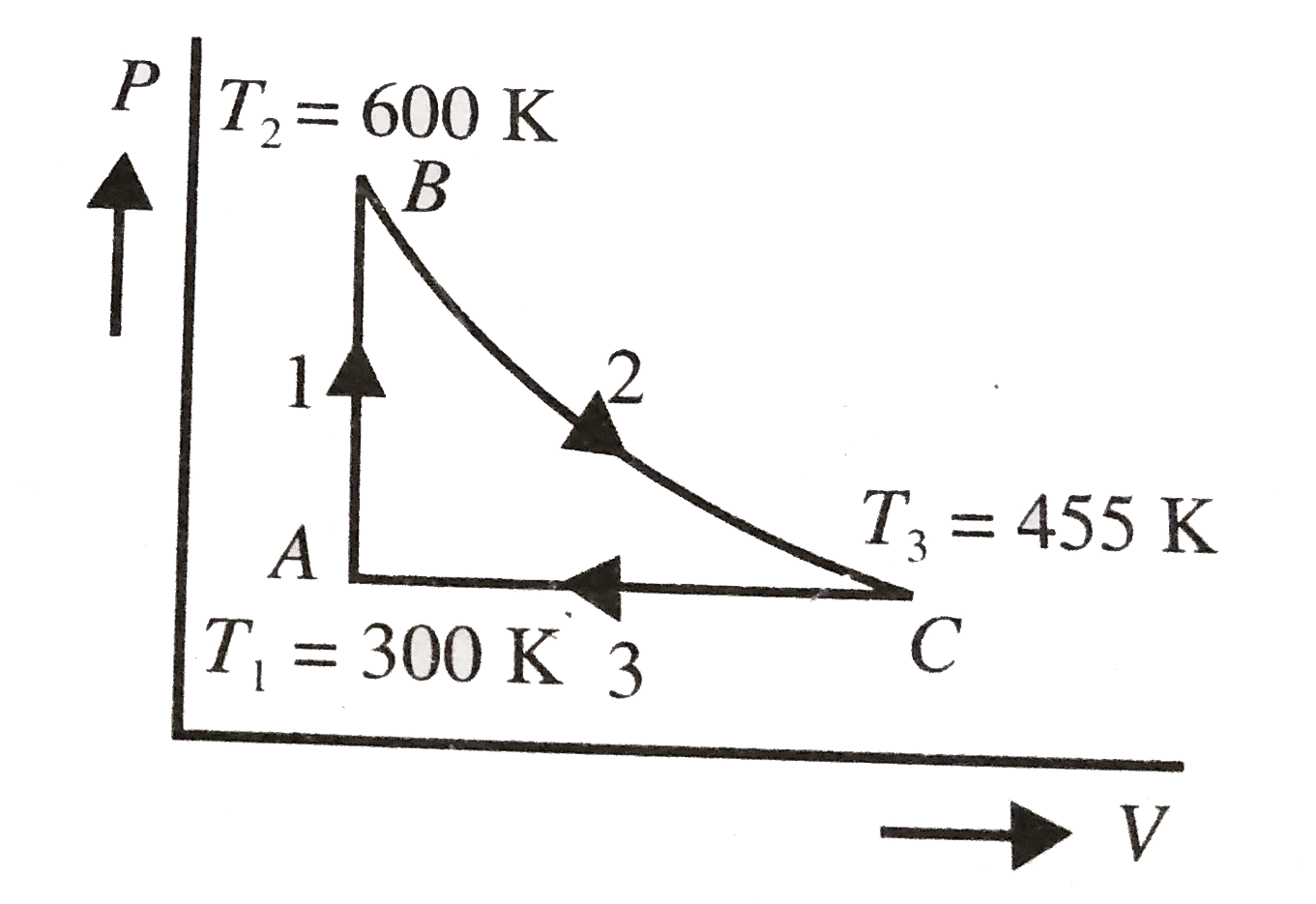 View Solution
View SolutionQuestion 268
A reversible heat engine carries 1mol of an ideal monatomic gas around the cycle ABCA, as shown in the diagram. The process BC is adiabatic. Call the processes AB,BC and CA as 1,2 and 3 and the heat (ΔQ)r, change in internal energy (ΔU), and work done (ΔW)r,r=1,2,3 respectively. The temperature at A,B,C are T1=300K,T2=600K and T3=455K. Indicate the pressure and volume at A,B andC by Pr and Vr,r=1,2,3, respectively. Assume that intially pressure P1=1.00atm.
Which of the following represents the correct values for the quantities indicated ?View SolutionQuestion 269
A reversible heat engine carries 1mol of an ideal monatomic gas around the cycle ABCA, as shown in the diagram. The process BC is adiabatic. Call the processes AB,BC and CA as 1,2 and 3 and the heat (ΔQ)r, change in internal energy (ΔU), and work done (ΔW)r,r=1,2,3 respectively. The temperature at A,B,C are T1=300K,T2=600K and T3=455K. Indicate the pressure and volume at A,B andC by Pr and Vr,r=1,2,3, respectively. Assume that intially pressure P1=1.00atm.
Which of the following represents the correct values of the quantities indicated ?
 View Solution
View SolutionQuestion 284
A monatomic gas undergoes a cycle consisting of two isothermals and two isobarics. The minimum and maximum temperatures of gas during the cycle are T1=400K and T2=800K, respectively, and the ratio of maximum to minimum volume is 4.
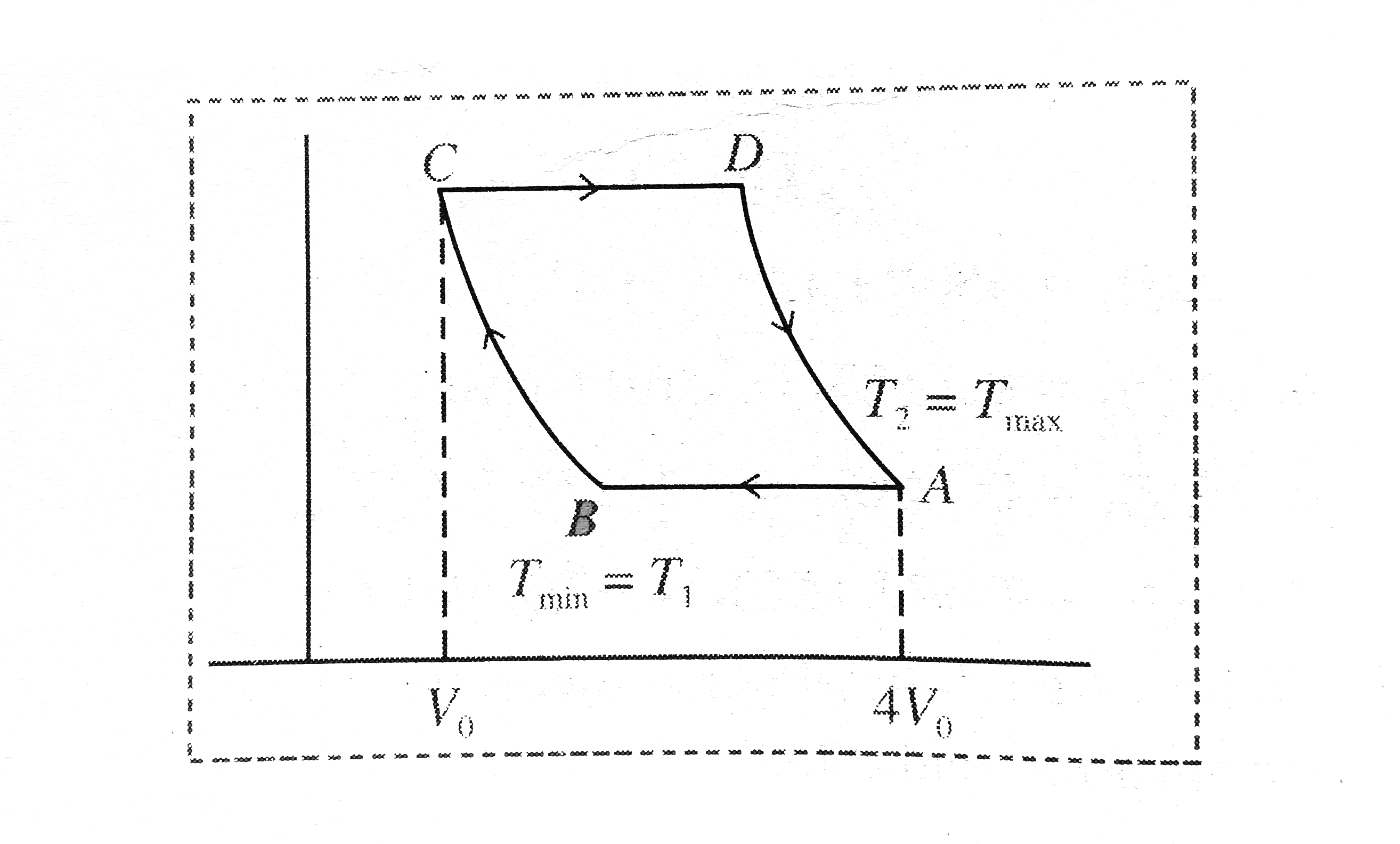
The heat is extracted from the system in process View SolutionQuestion 286
Figure shows an insulated cylinder of volume V containing monatomic gas in both the compartments. The pistone is diathermic. Initially the piston is kept fixed and the system is allowed to acquire a state of thermal equilibrium. The initial pressures and temperatures are as shown in the figure. Calculate
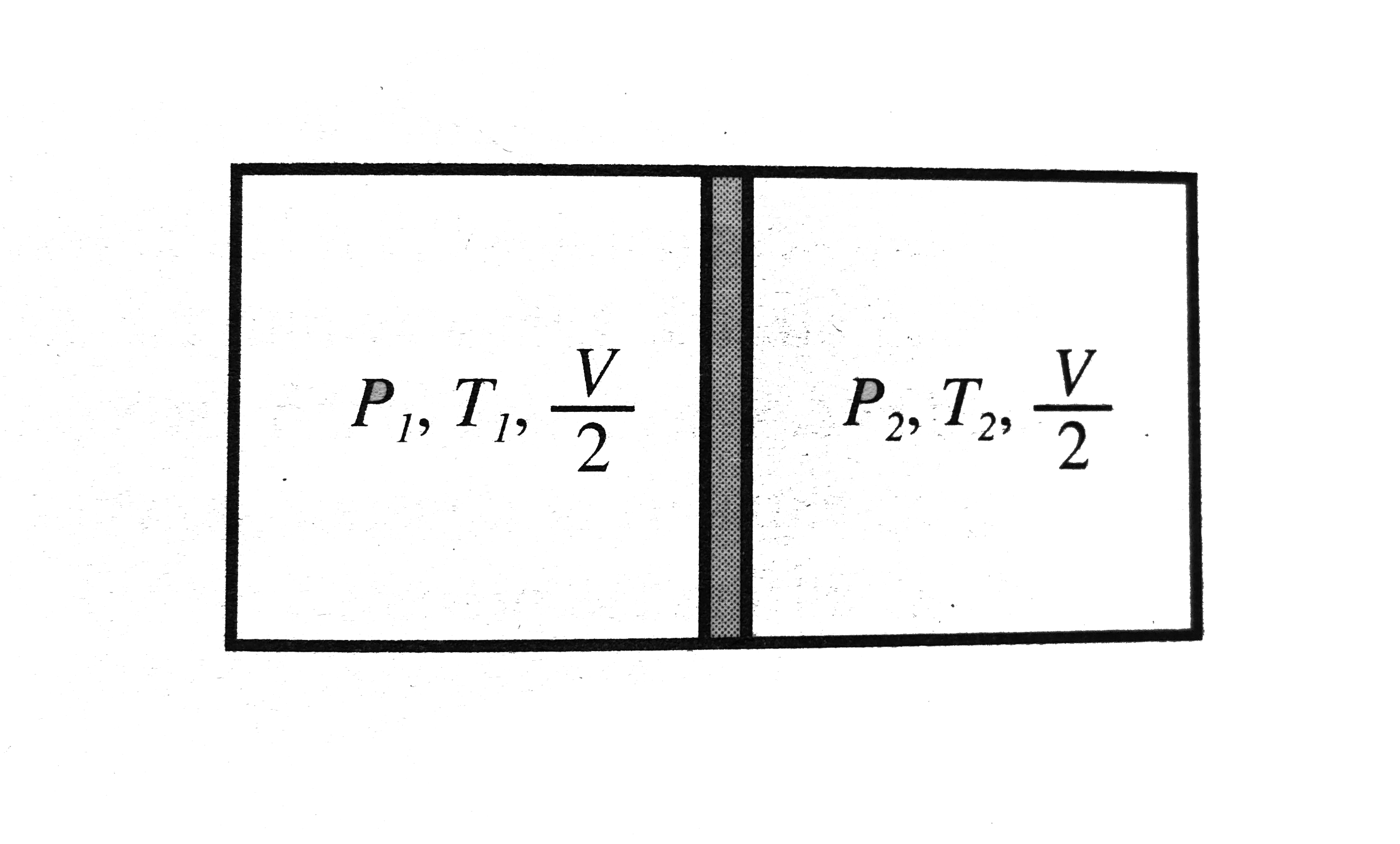
The final temperatureView SolutionQuestion 287
Figure shows an insulated cylinder of volume V containing monatomic gas in both the compartments. The pistone is diathermic. Initially the piston is kept fixed and the system is allowed to acquire a state of thermal equilibrium. The initial pressures and temperatures are as shown in the figure. Calculate
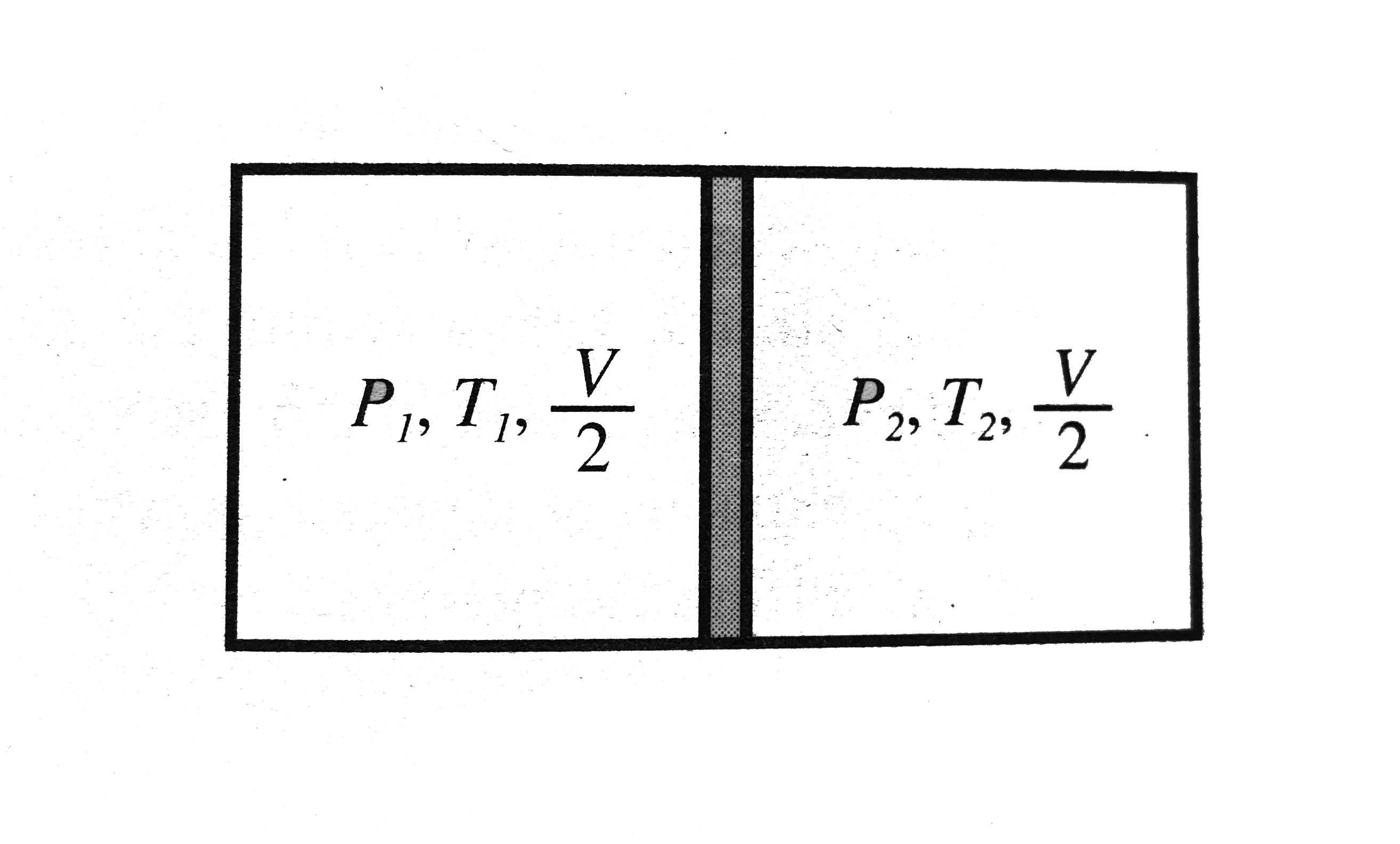
The final presssures of left and right compartment respectively are View SolutionQuestion 288
Figure shows an insulated cylinder of volume V containing monatomic gas in both the compartments. The pistone is diathermic. Initially the piston is kept fixed and the system is allowed to acquire a state of thermal equilibrium. The initial pressures and temperatures are as shown in the figure. Calculate
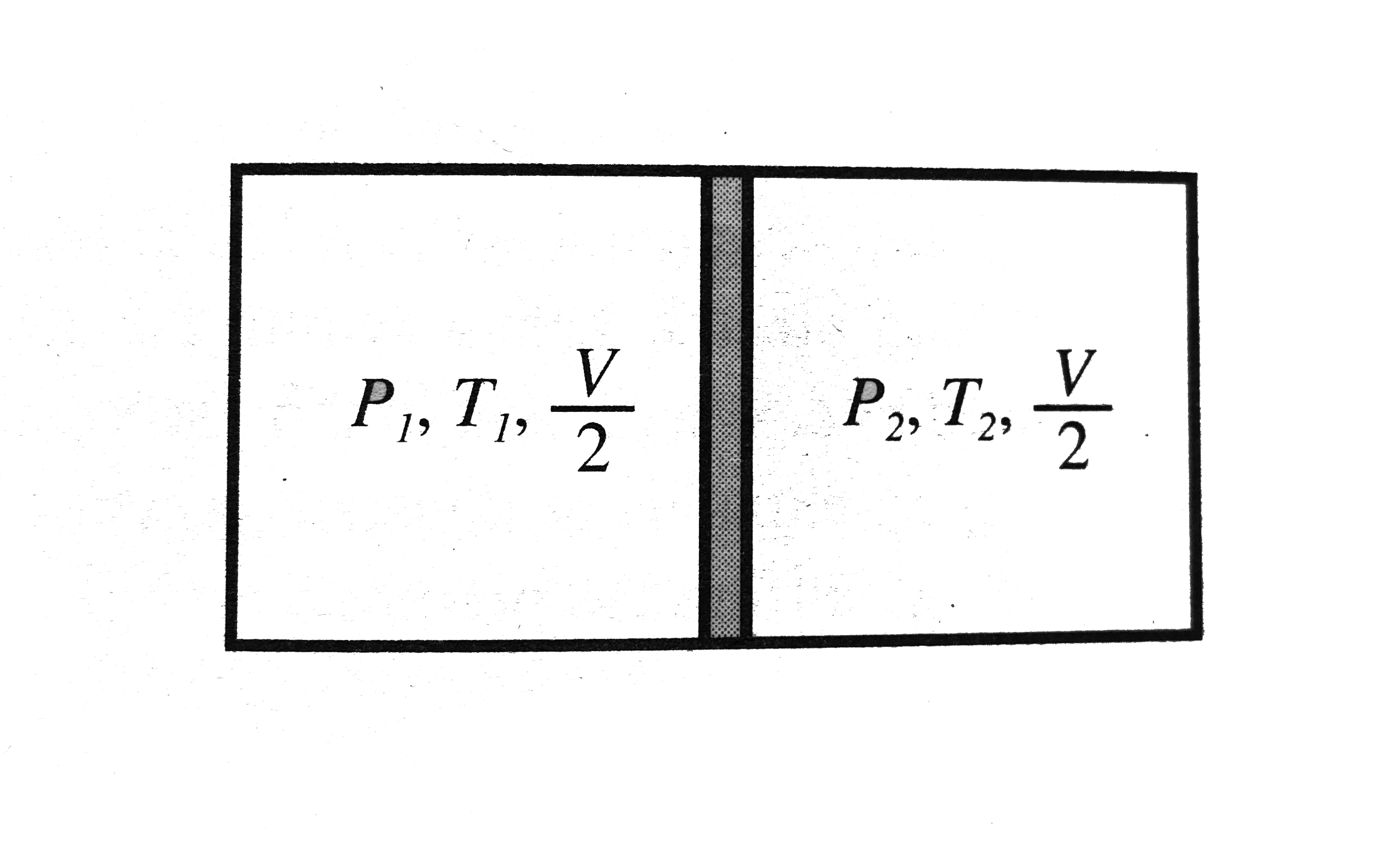
The heat that flows from RHS to LHS, Given T2>T1.
Now, the pin which was keeping the piston fixed is removed. and the piston is set free to move. The piston is allowed to slide slowly, such that of mechanical equilibrium is also achieved and T1P2>P1T2. Find. View SolutionQuestion 289
Figure shows an insulated cylinder of volume V containing monatomic gas in both the compartments. The pistone is diathermic. Initially the piston is kept fixed and the system is allowed to acquire a state of thermal equilibrium. The initial pressures and temperatures are as shown in the figure. Calculate
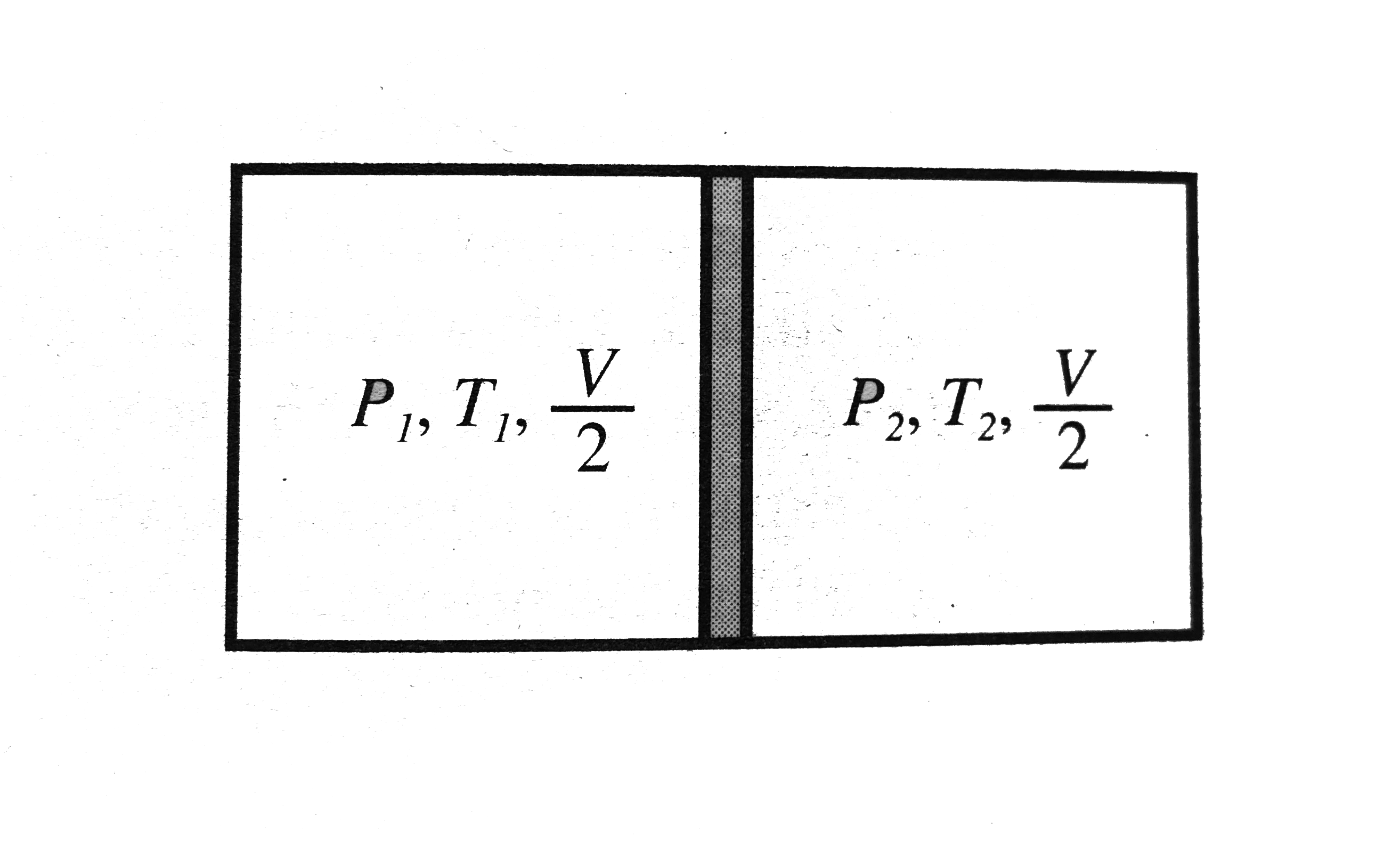
Final volume of the left compartment. View SolutionQuestion 290
Figure shows an insulated cylinder of volume V containing monatomic gas in both the compartments. The pistone is diathermic. Initially the piston is kept fixed and the system is allowed to acquire a state of thermal equilibrium. The initial pressures and temperatures are as shown in the figure. Calculate

Final volume of the left compartment. View SolutionQuestion 291
The rectangular box shown in Fig has partition which can slide without friction along the length of the box. Initially each of the two chambers of the box has one mole of a mono-atomic ideal gas (λ=5/3) at a pressure P0, volume V0 and temperature T0. The chamber on the left is slowly heated by an electric heater. The walls of the box and the lead wires of the heater is negligible. The gas in the left chamber expands pushing the partition until the final pressure in both chambers becomes 243P0/32. Determine (i) the final temperature of the gas in each chamber and (ii) the work done by the gas in the right chamber.
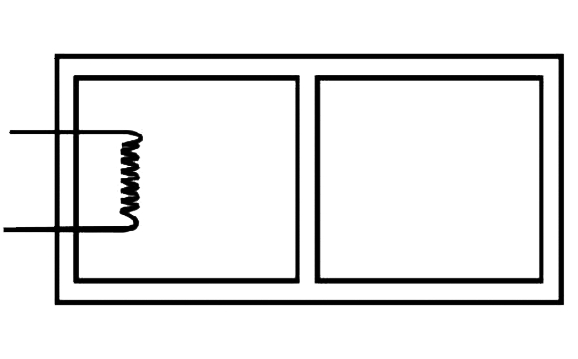 View Solution
View SolutionQuestion 292
The insulated box shown in figure has an insulated partition which can slide without friction along the length of the box. Initially each of the two chambers of the box has 1mil of a monatomic ideal gas (γ=5/3) at a pressure P0, volume V0 and temperature T0. The chamber of the left is slowly heated by an electric heater so that its gas, pushing the partition, expands until the final pressure in both the chambers becomes 243P0/32. Determine
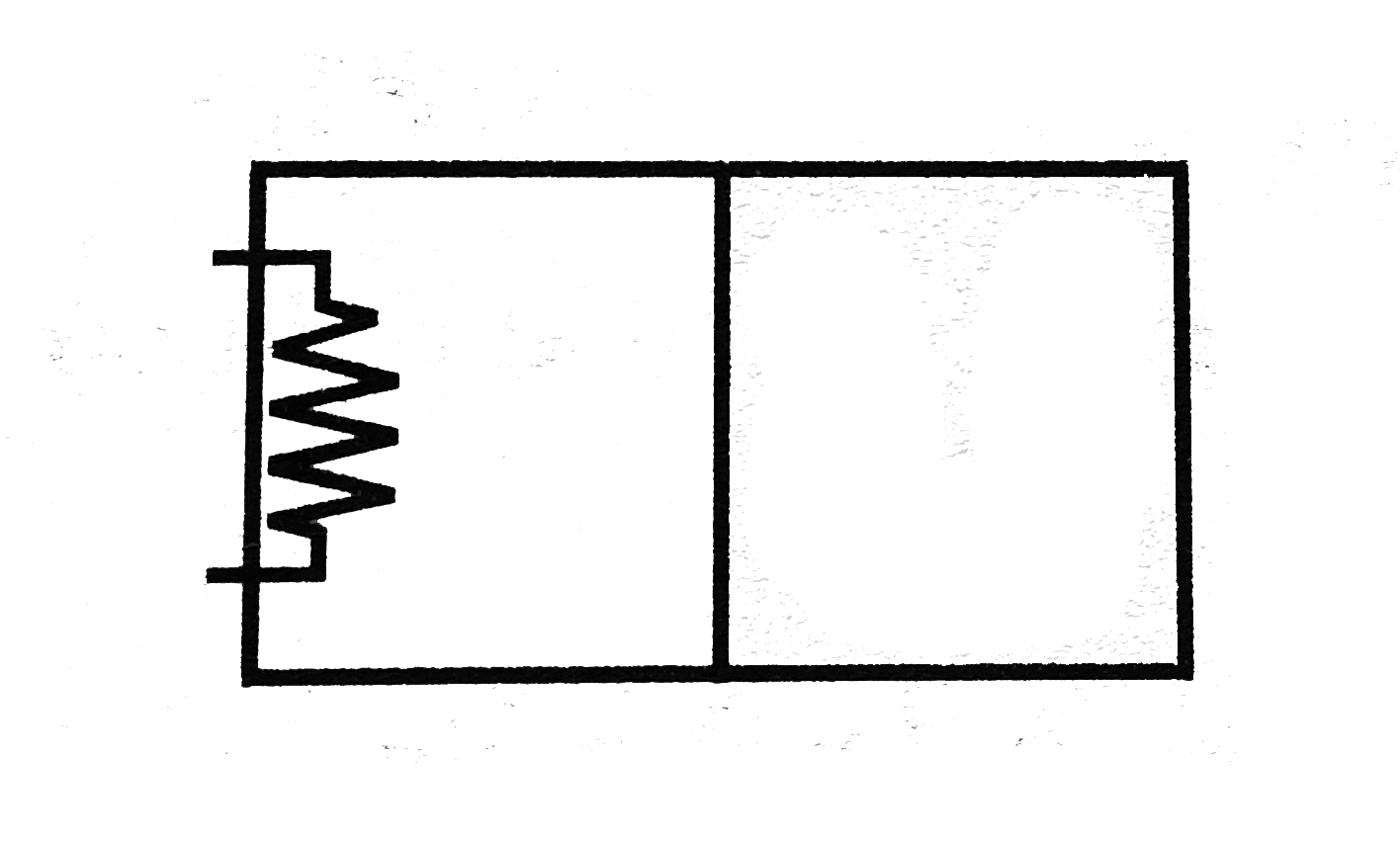
Final temperature fo the gas in each chamber. View SolutionQuestion 293
A container of volume 4V0 made of a perfectly non− conducting material is divided into two equal parts by a fixed rigid wall whose lower half is non− conducting and upper half is purely conducting. The right side of the wall is divided into equal parts ( initially 0 by means of a massless non− conducting piston free to move as shown . SectionA constains 2mol of a gas while the section B and C contain 1mol each of the same gas (γ=15.) at pressure P0 . The heater in left part is switched on till the final pressure in section C becomes 125/27P0. Calculate
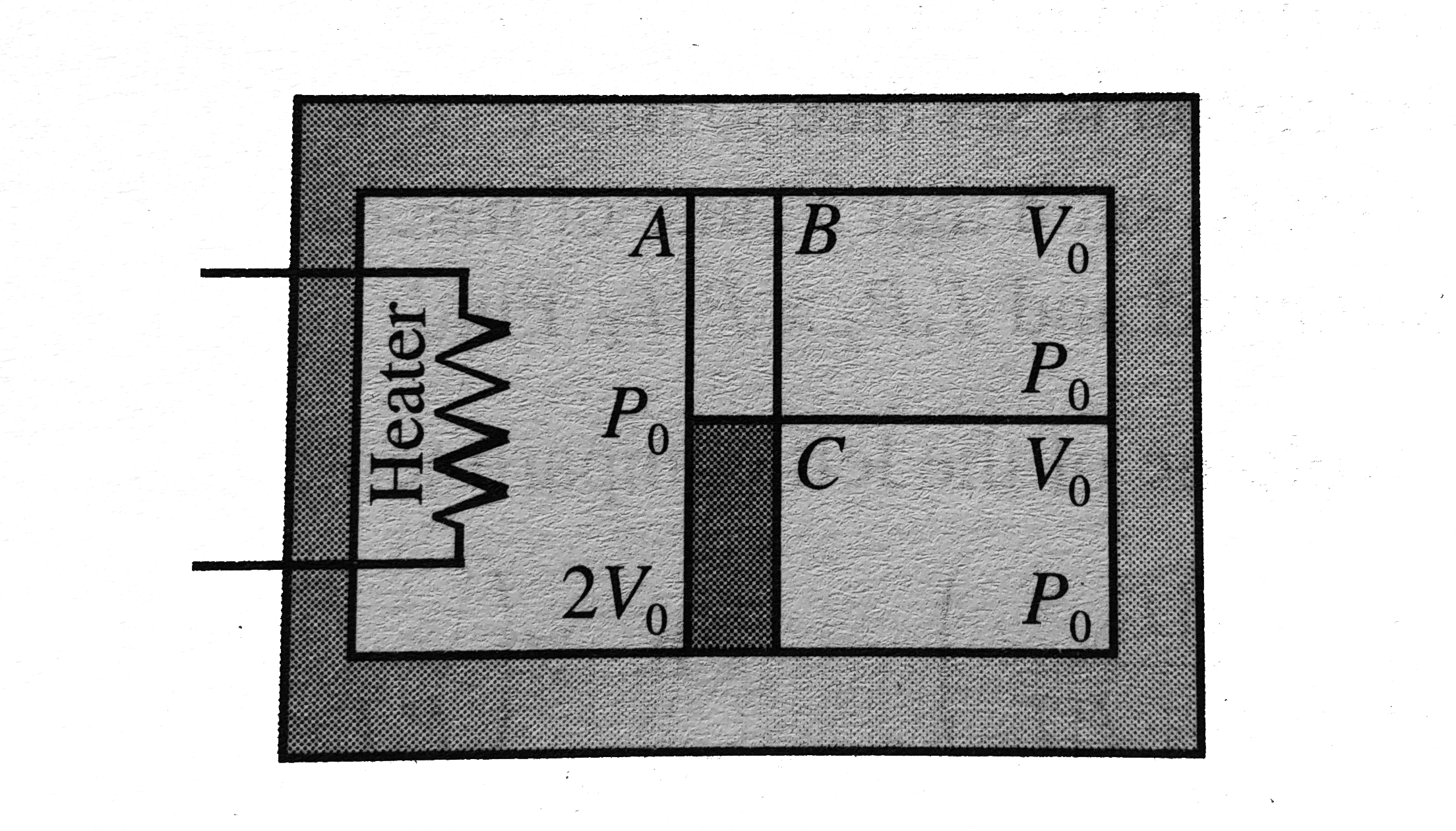
The heat supplied by the heater. View SolutionQuestion 294
A container of volume 4V0 made of a perfectly non− conducting material is divided into two equal parts by a fixed rigid wall whose lower half is non− conducting and upper half is purely conducting. The right side of the wall is divided into equal parts ( initially 0 by means of a massless non− conducting piston free to move as shown . SectionA constains 2mol of a gas while the section B and C contain 1mol each of the same gas (γ=15.) at pressure P0 . The heater in left part is switched on till the final pressure in section C becomes 125/27P0. Calculate
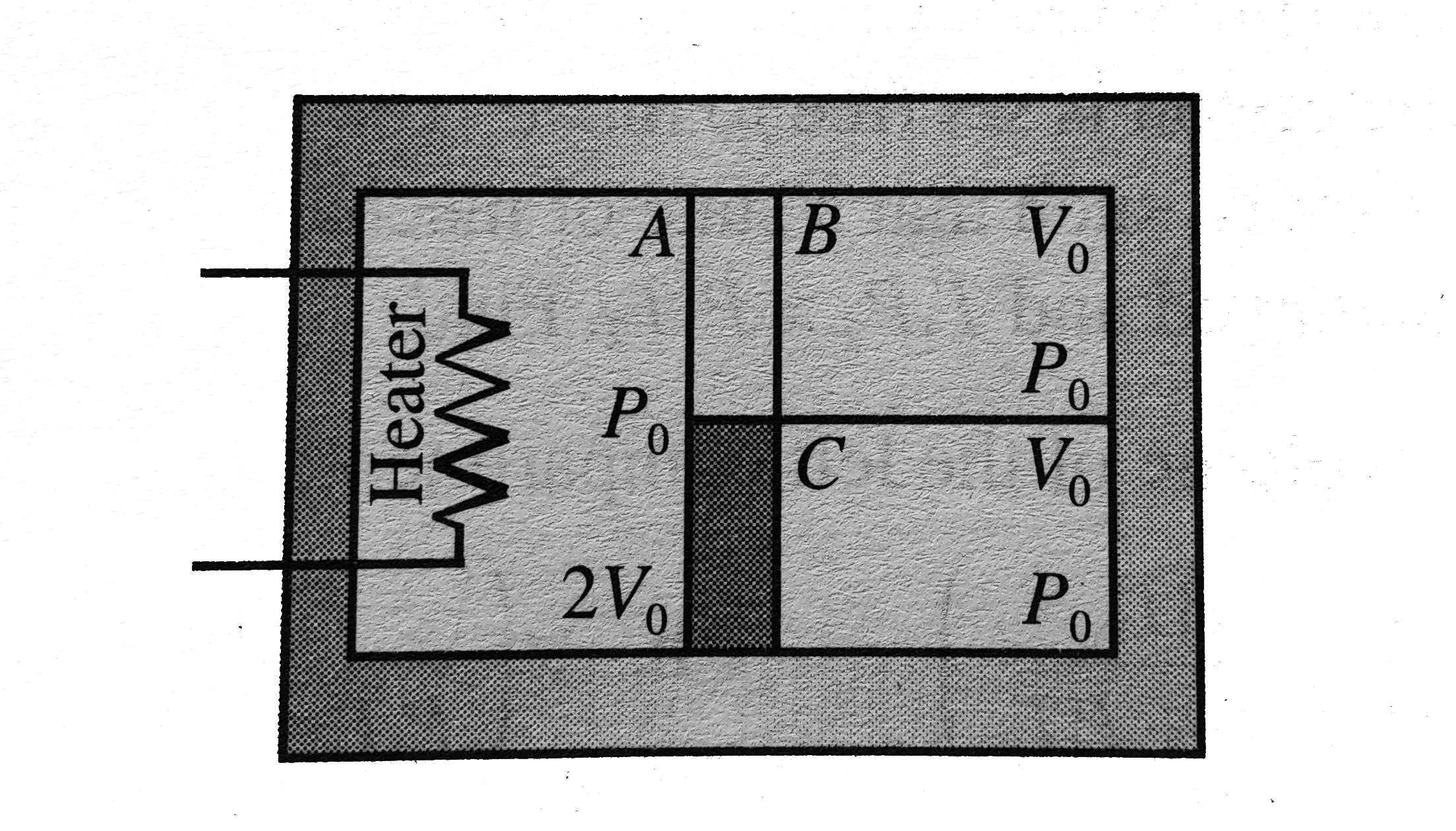
Final temperature in part C. View SolutionQuestion 295
A container of volume 4V0 made of a perfectly non− conducting material is divided into two equal parts by a fixed rigid wall whose lower half is non− conducting and upper half is purely conducting. The right side of the wall is divided into equal parts ( initially 0 by means of a massless non− conducting piston free to move as shown . SectionA constains 2mol of a gas while the section B and C contain 1mol each of the same gas (γ=15.) at pressure P0 . The heater in left part is switched on till the final pressure in section C becomes 125/27P0. Calculate

The heat supplied by the heater. View SolutionQuestion 296
An ideal gas at NTP is enclosed in an adiabatic vertical cylinder havin an area of cross section A=27cm2 between two light movable pistons as shown in figure. Spring with force constant K=37−−N/m is in a relaxed state initially. Now the lower position is moved upwards a distance h/2, h being the initial length of gas column . It is observed that the upper piston moves up by a distance h/16. Final temperature of gas4/3×273K. Take γ for the gas to be 3/2.
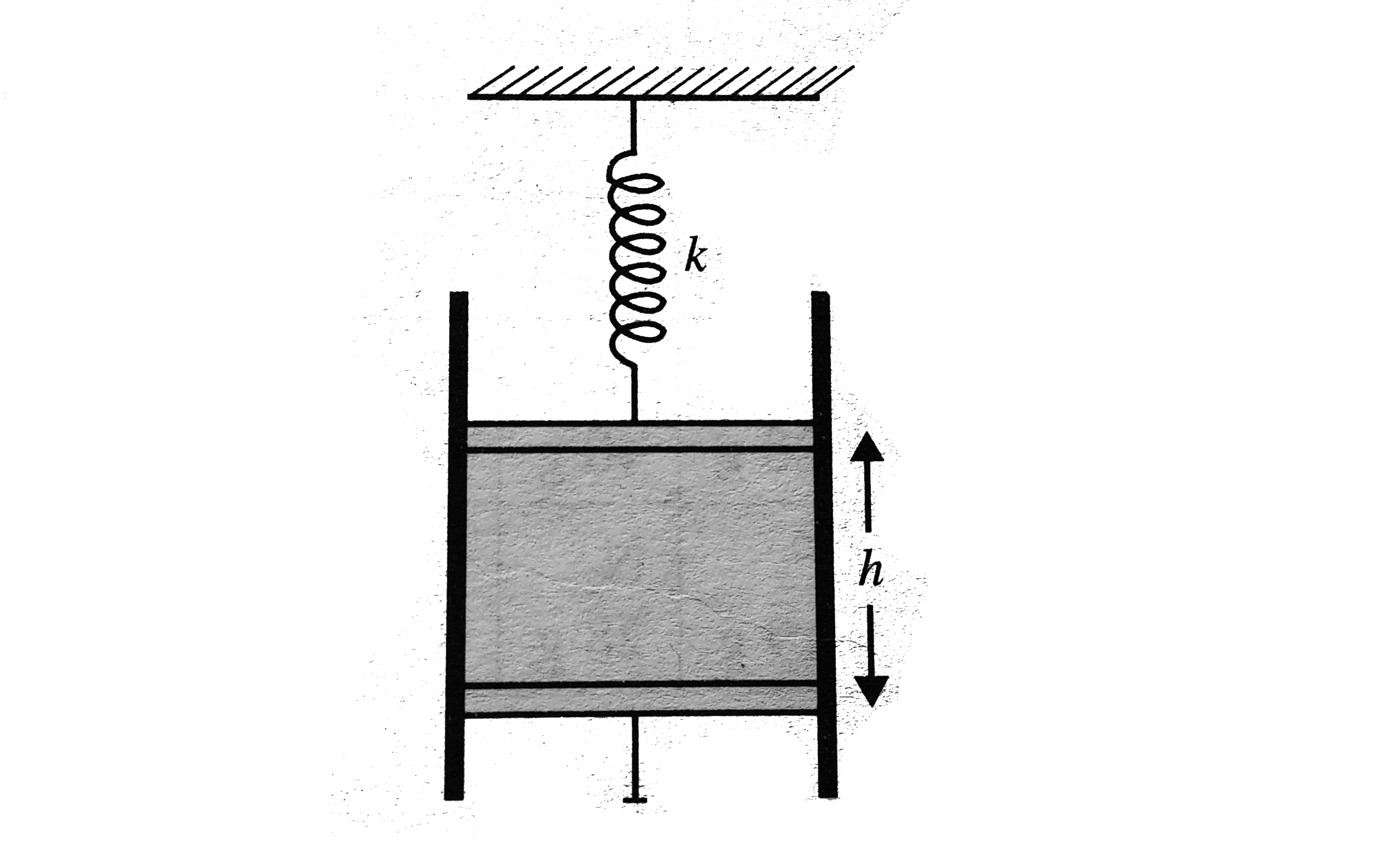
When the lower pistone is moved upwards a distance h/2, the compression. View SolutionQuestion 297
An ideal gas at NTP is enclosed in an adiabatic vertical cylinder havin an area of cross section A=27cm2 between two light movable pistons as shown in figure. Spring with force constant K=37−−N/m is in a relaxed state initially. Now the lower position is moved upwards a distance h/2, h being the initial length of gas column . It is observed that the upper piston moves up by a distance h/16. Final temperature of gas4/3×273K. Take γ for the gas to be 3/2.
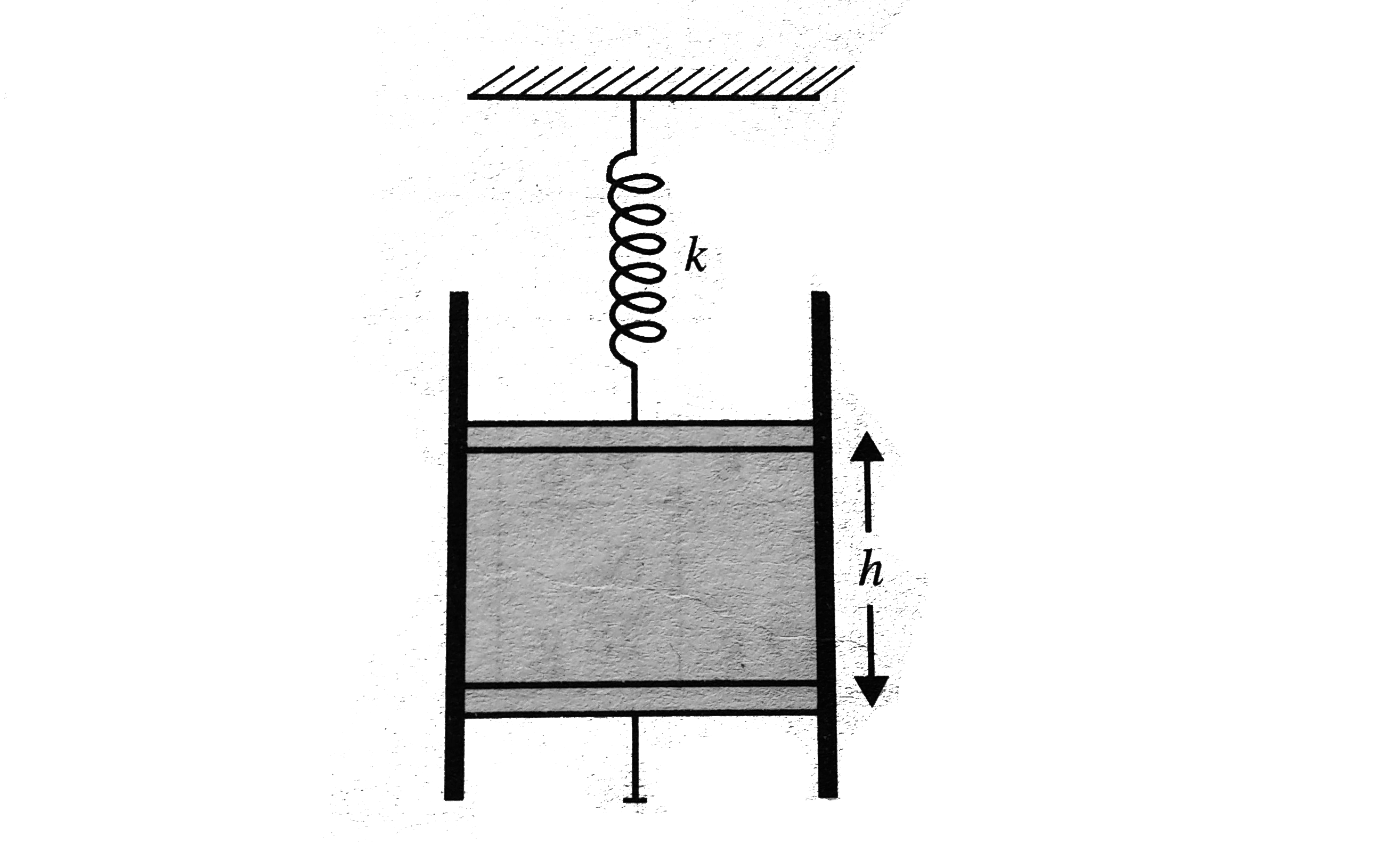
Which of the following statements is correct ? View SolutionQuestion 298
An ideal gas at NTP is enclosed in an adiabatic vertical cylinder havin an area of cross section A=27cm2 between two light movable pistons as shown in figure. Spring with force constant K=37−−N/m is in a relaxed state initially. Now the lower position is moved upwards a distance h/2, h being the initial length of gas column . It is observed that the upper piston moves up by a distance h/16. Final temperature of gas4/3×273K. Take γ for the gas to be 3/2.

The value of h is View SolutionQuestion 299
Piston cylinder device initially contains 0.5m3 of nitrogen gas at 400kPa and 27∘C. An electric heater within the device is turned on and is allowed to apss a current of 2A for 5min from a 120V source. Nitrogen expands at constant pressure and a heat loss of 2800J occurs during the process.
R=25/3kJ/kmol−K
Electric work done on the nitrogen gas is View SolutionQuestion 300
Piston cylinder device initially contains 0.5m3 of nitrogen gas at 400kPa and 27∘C. An electric heater within the device is turned on and is allowed to apss a current of 2A for 5min from a 120V source. Nitrogen expands at constant pressure and a heat loss of 2800J occurs during the process.
R=25/3kJ/kmol−K
Number of moles of nitrogen gas is View SolutionQuestion 301
Piston cylinder device initially contains 0.5m3 of nitrogen gas at 400kPa and 27∘C. An electric heater within the device is turned on and is allowed to apss a current of 2A for 5min from a 120V source. Nitrogen expands at constant pressure and a heat loss of 2800J occurs during the process.
R=25/3kJ/kmol−K
Number of moles of nitrogen gas is View SolutionQuestion 310
The two conducting cyliner-piston systems shows below are linked. Cyliner 1 is filled with a certain molar quantity of a monatomic ideal gas, and cylinder 2 is filled with an equal molar quantity of a diatomic ideal gas. The entire apparatus is situated inside an oven whose temperature is Ta=27∘C. The cylinder volumes have the same initial value V0=100. When the oven temperature is slowly raised to Tb=127∘C. What is the volume change ΔV (in cc) of cylinder 1 ?
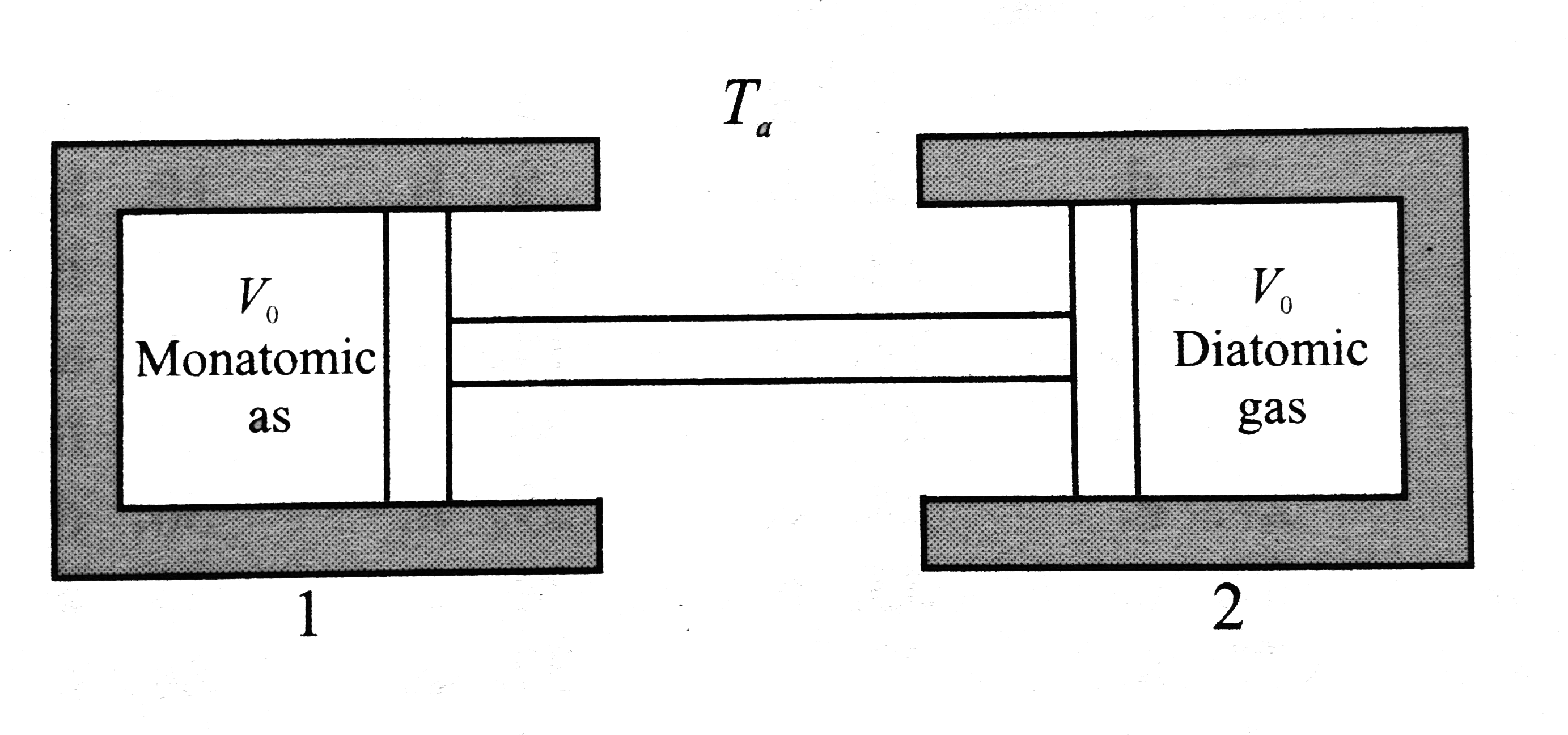 View Solution
View SolutionQuestion 311
A long container has air enclosed inside at room temperature and atmoshperic pressure (105Pa). It has a volume of 20000 c c. The area of cross section is 100cm2 and force constant of spring is kspring=1000N/m. We push the right piston isothermally and slowly till it reaches the origianl position of the left piston which is movalbe. Final length of air colume is found to be 25 h cm. Assume that spring is initially relaxed. Find h.View Solution
